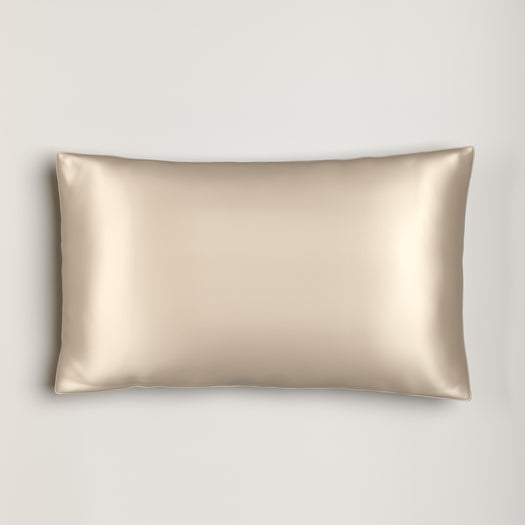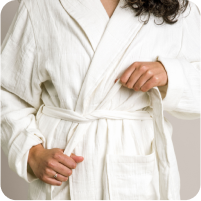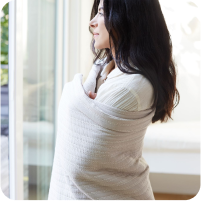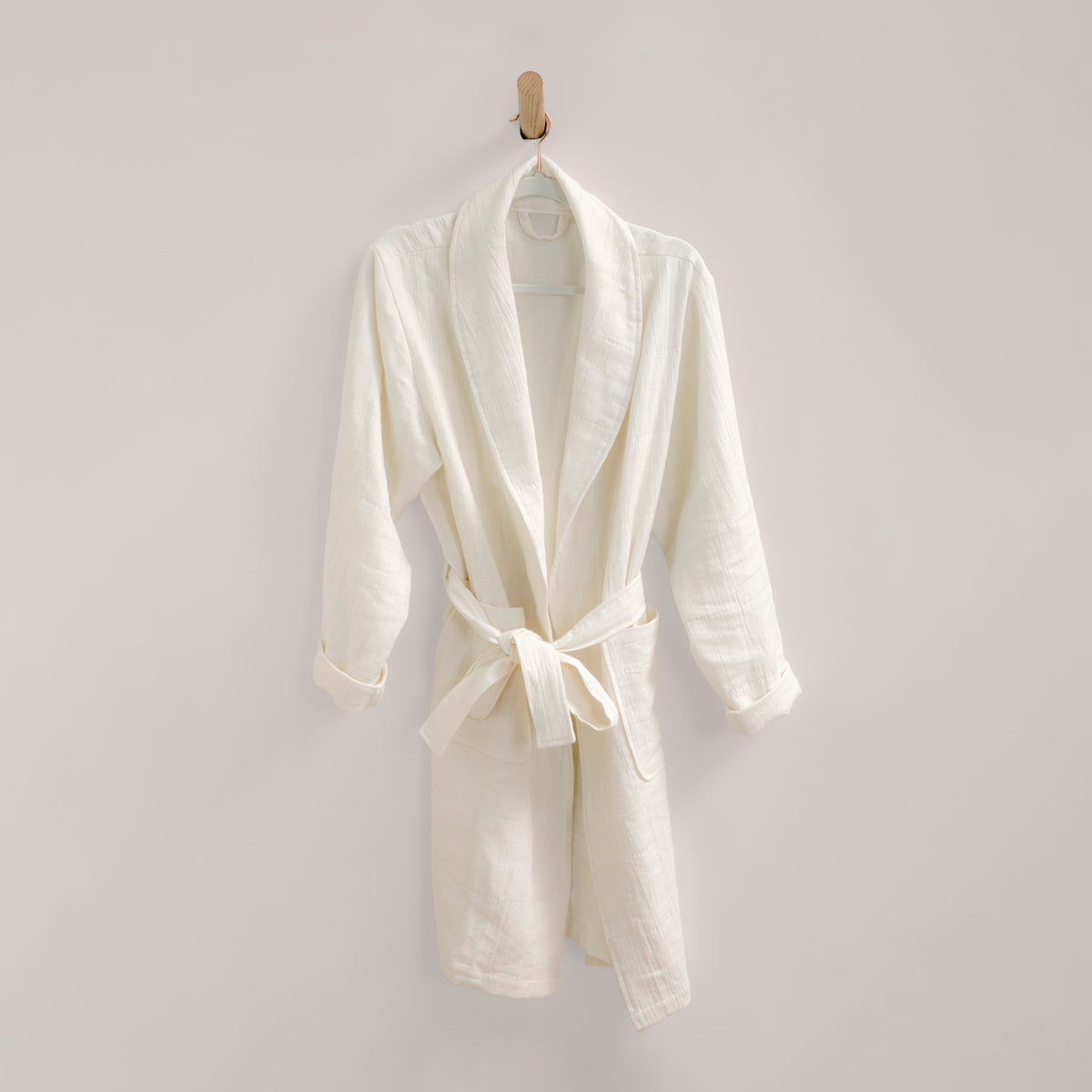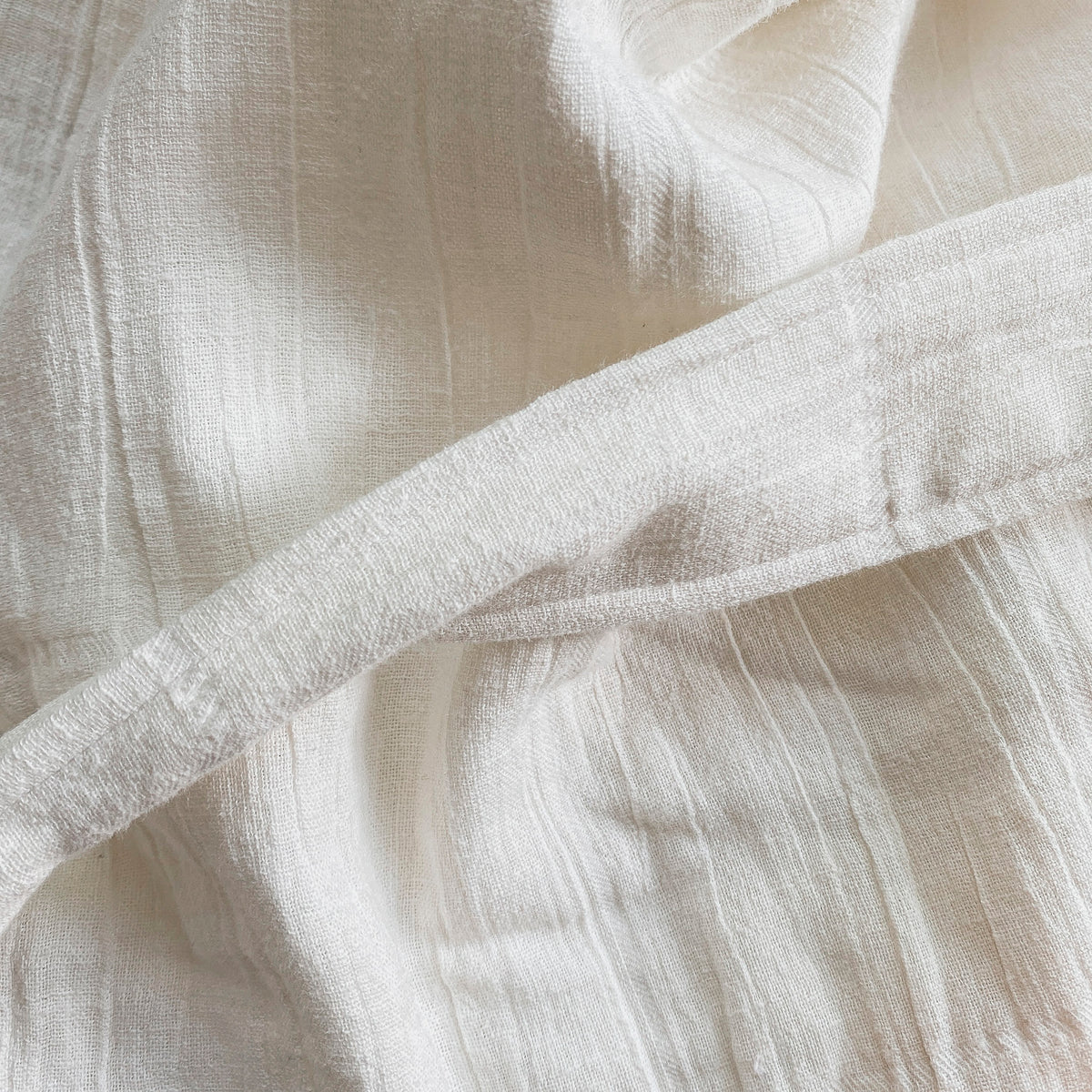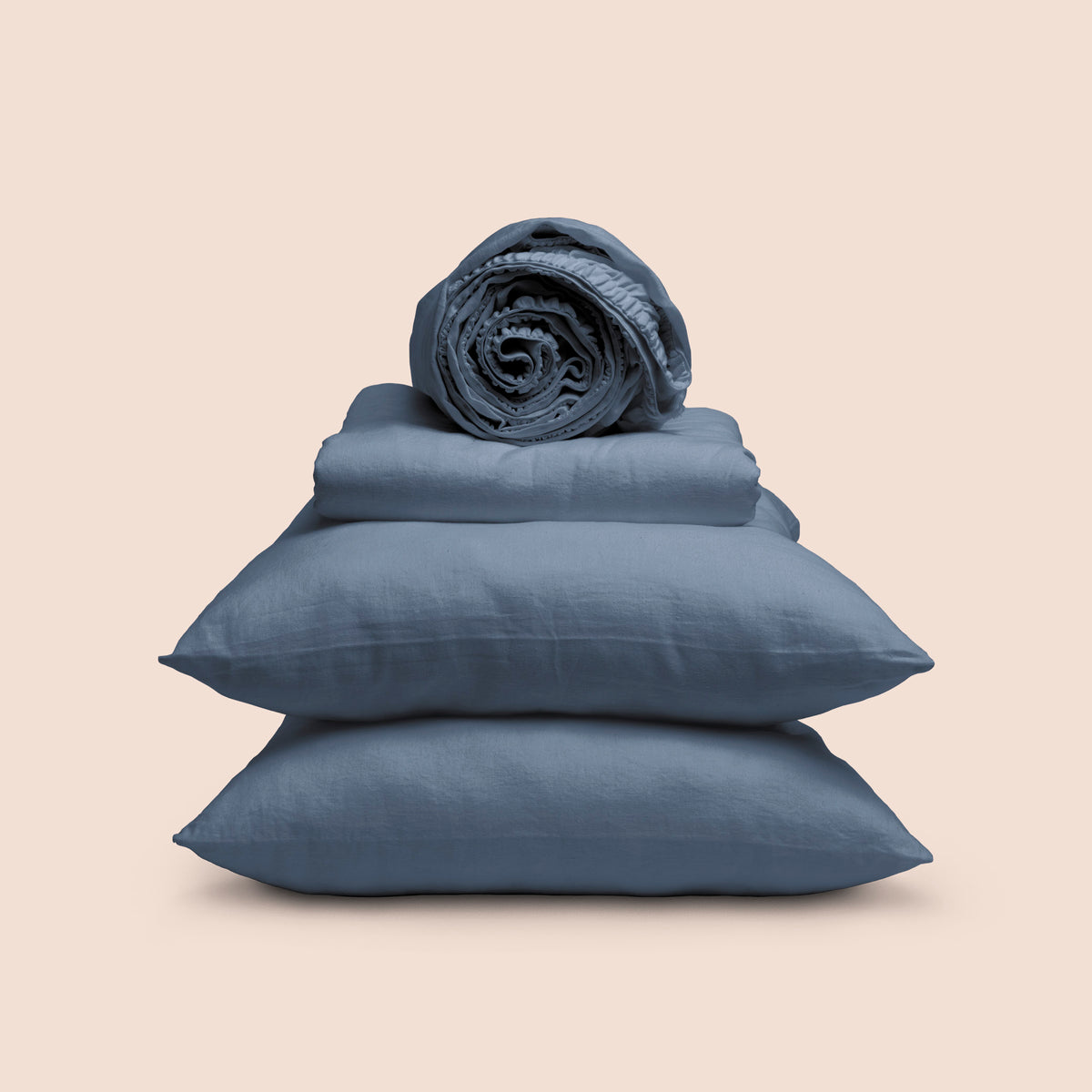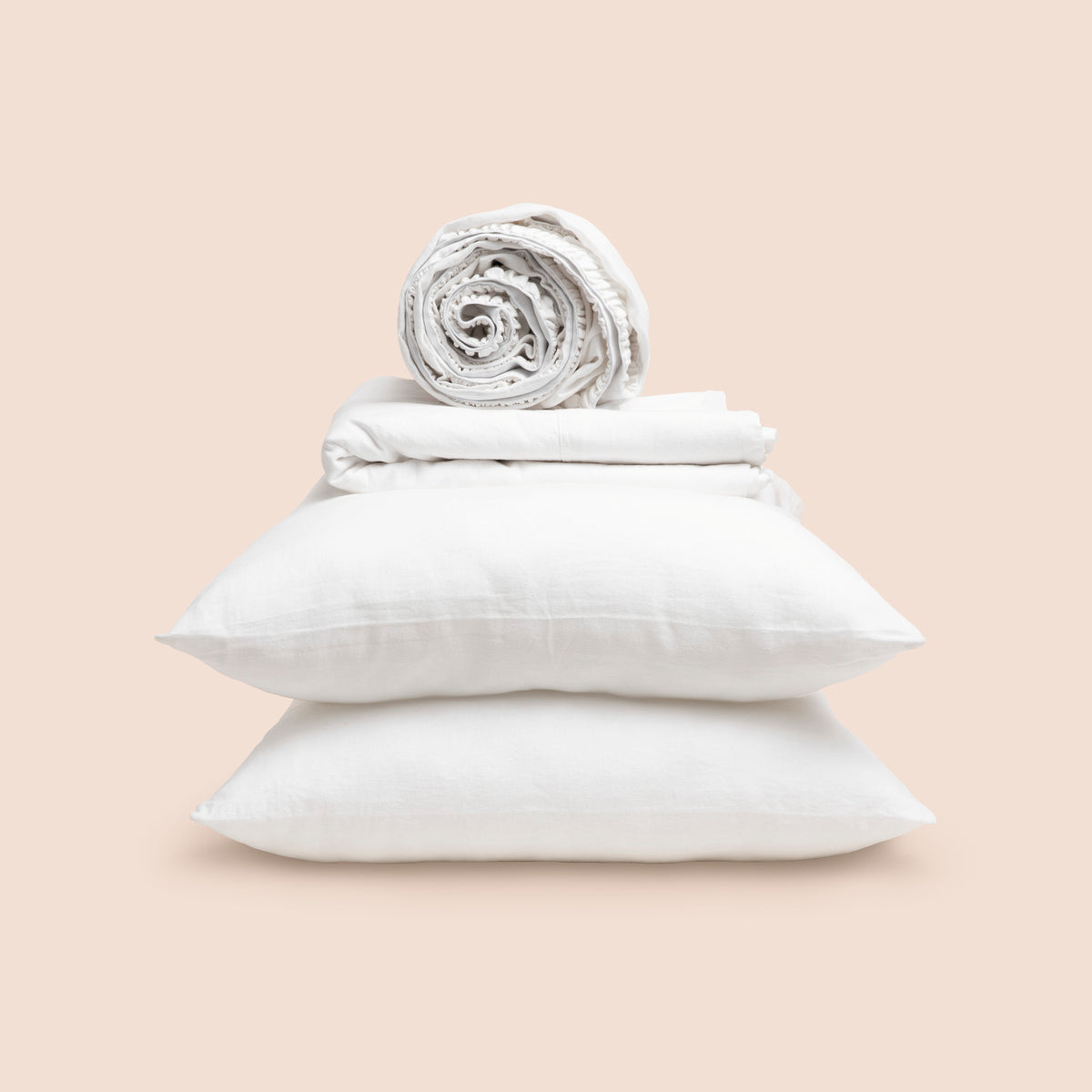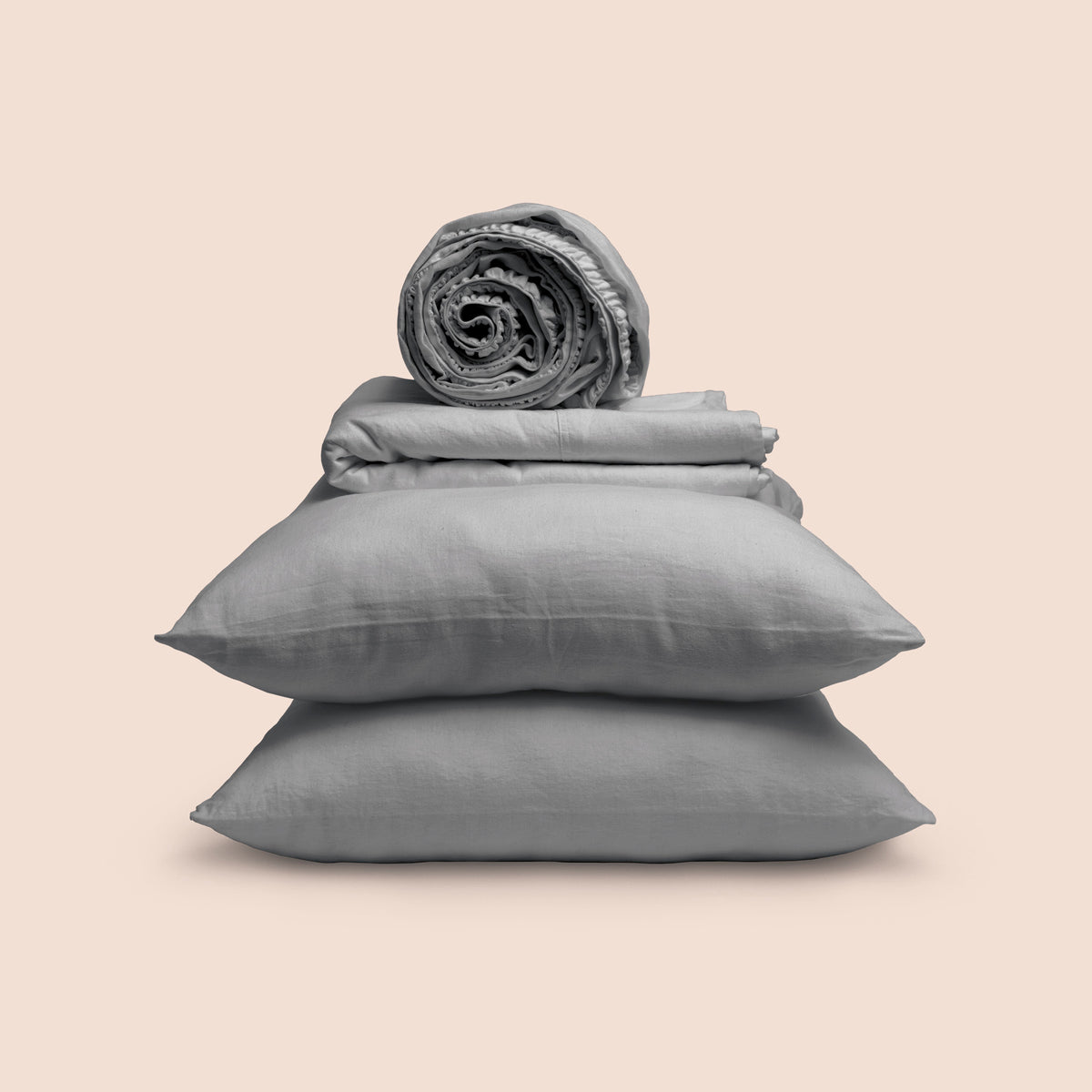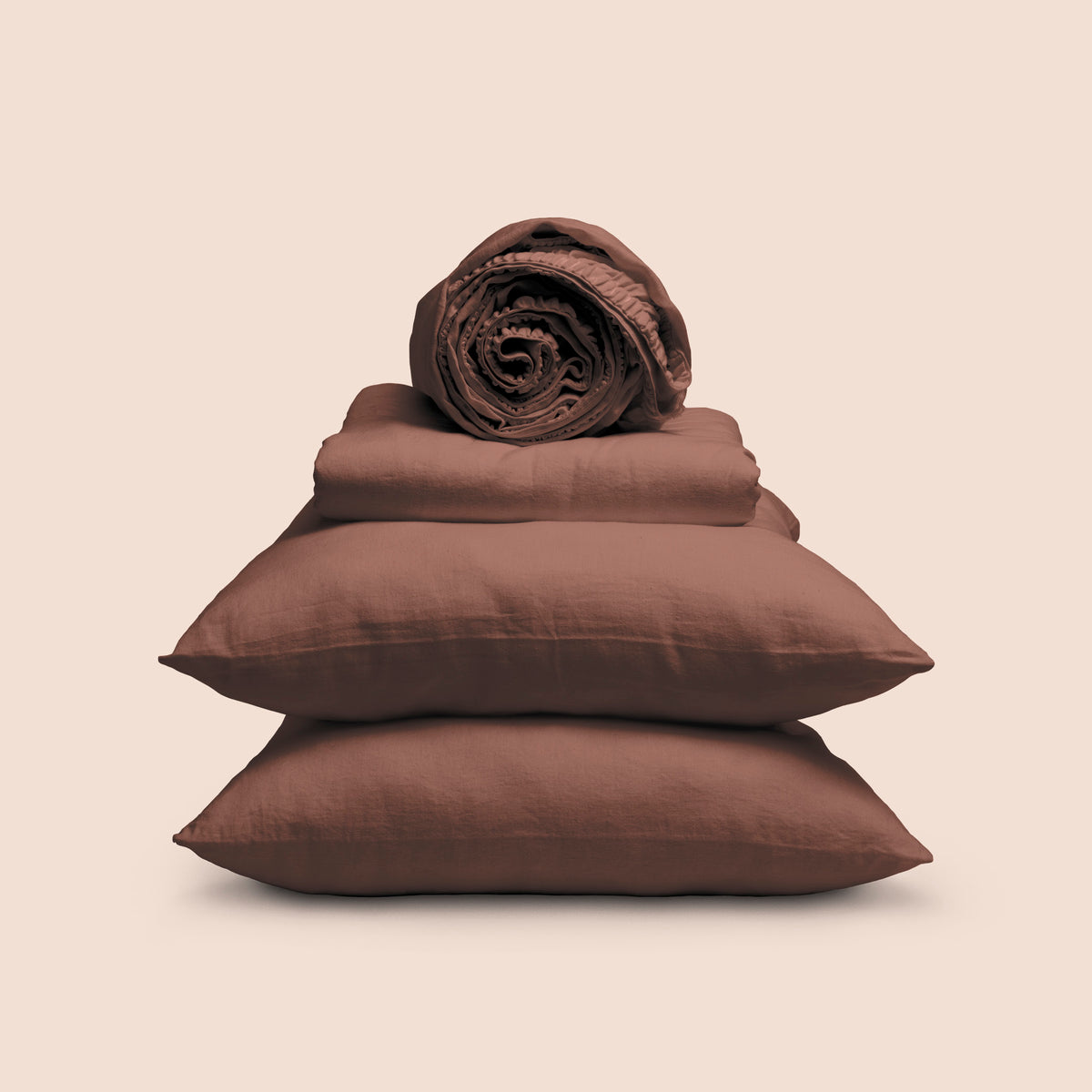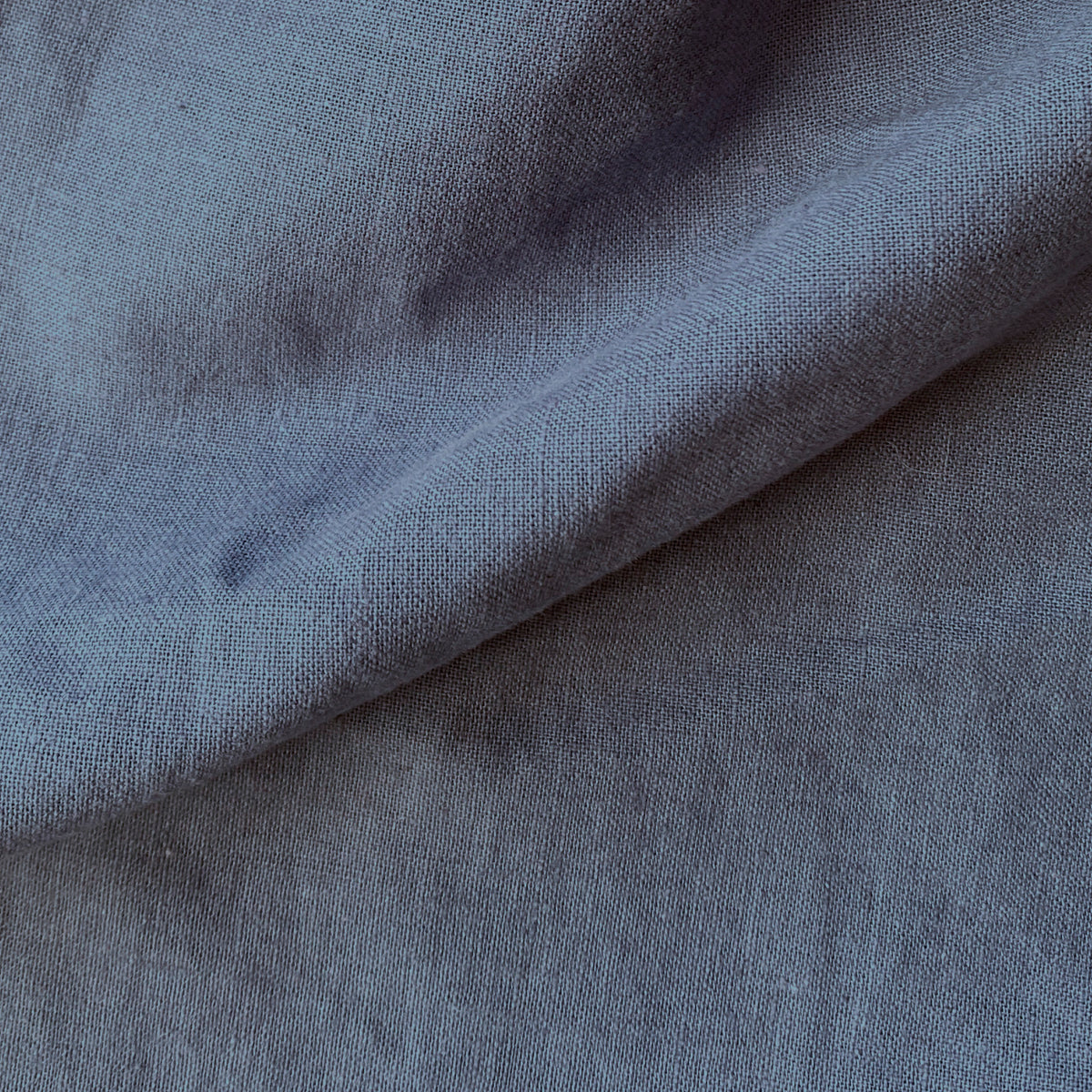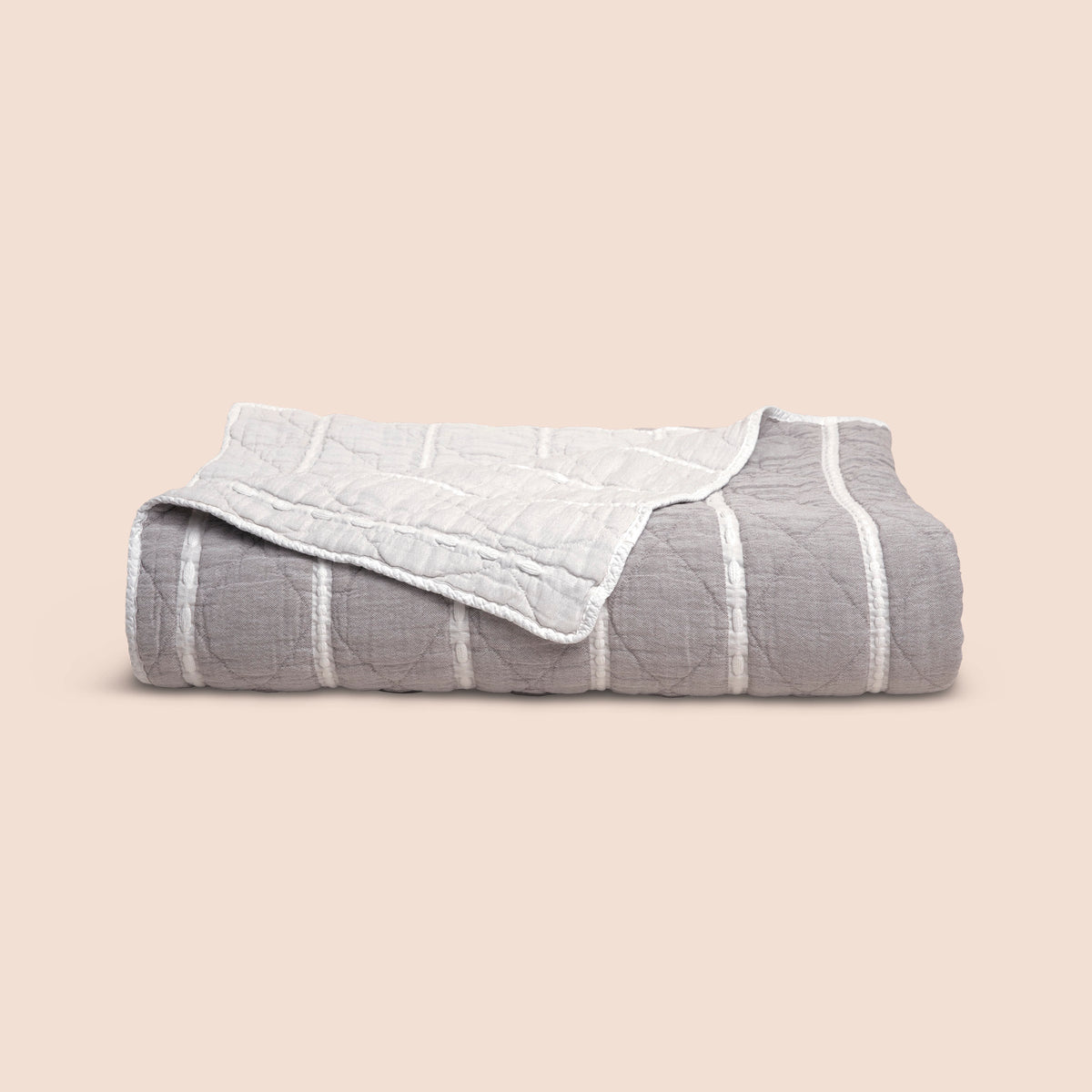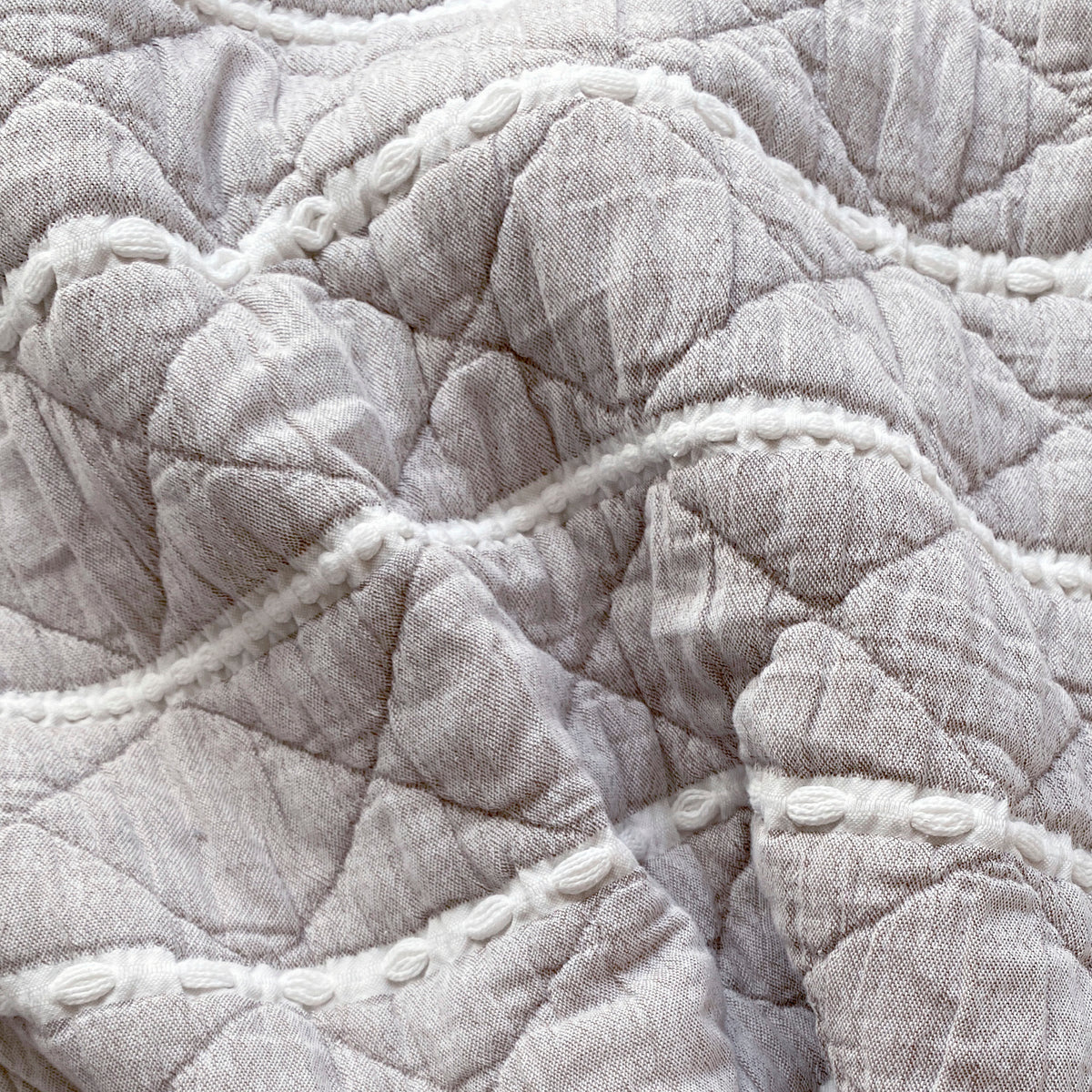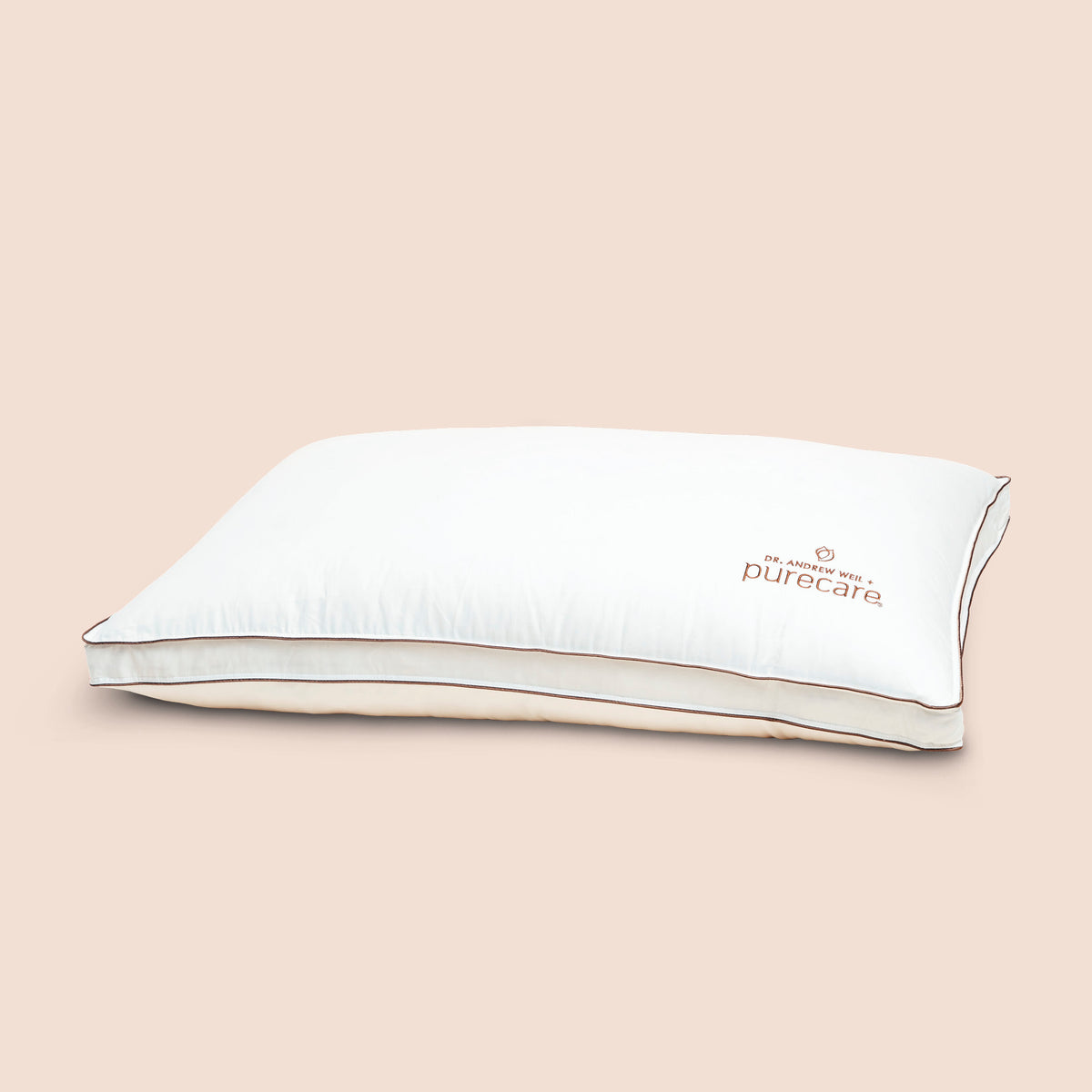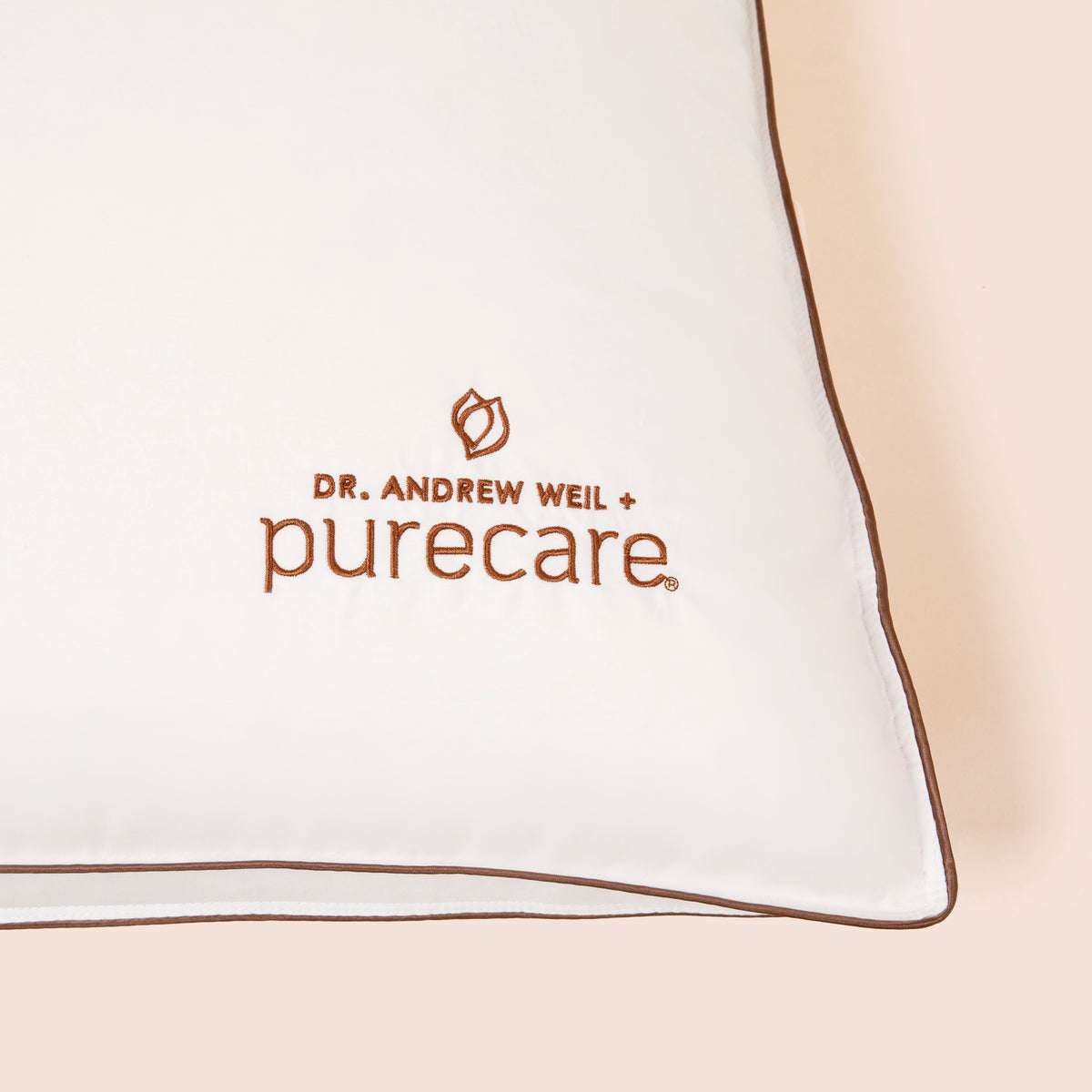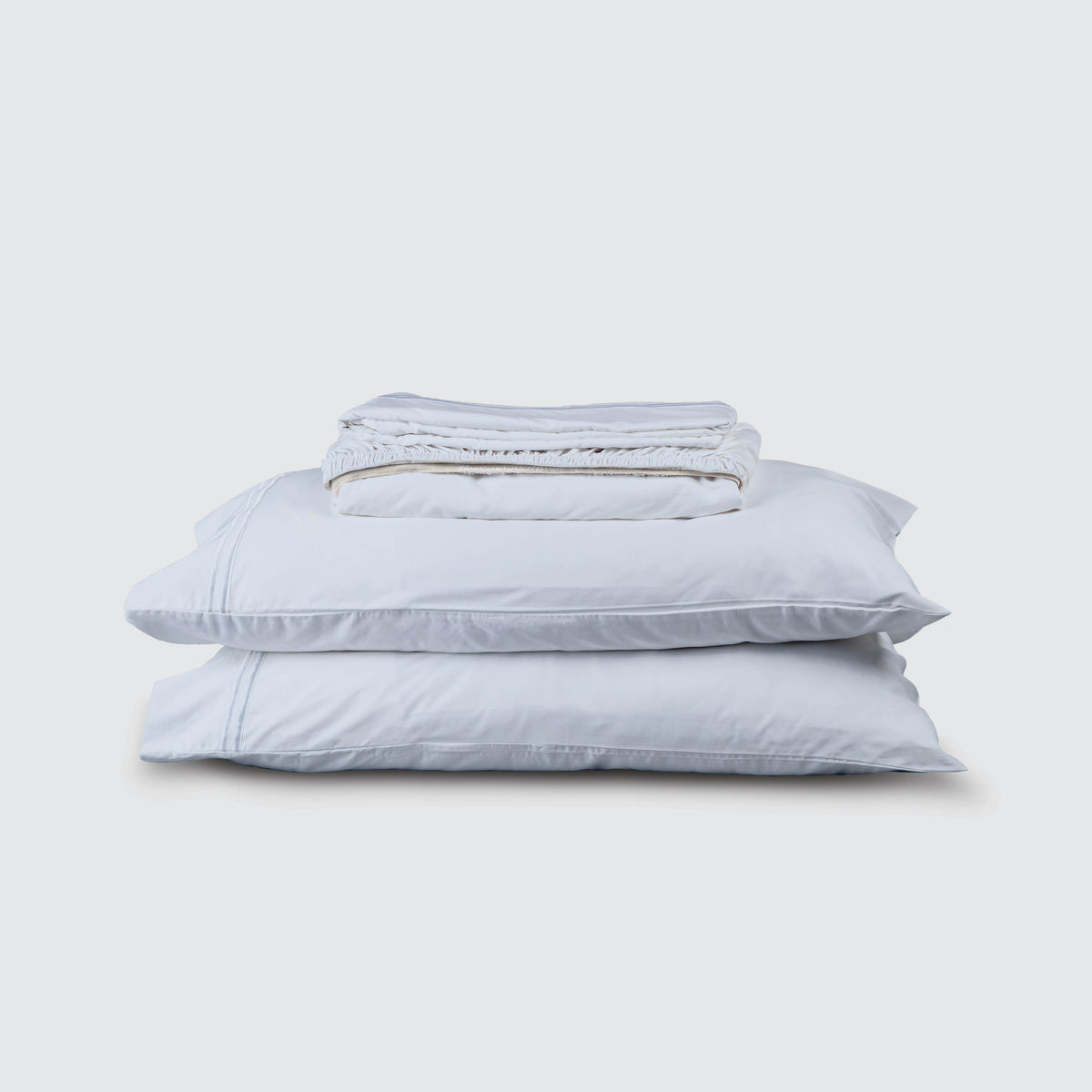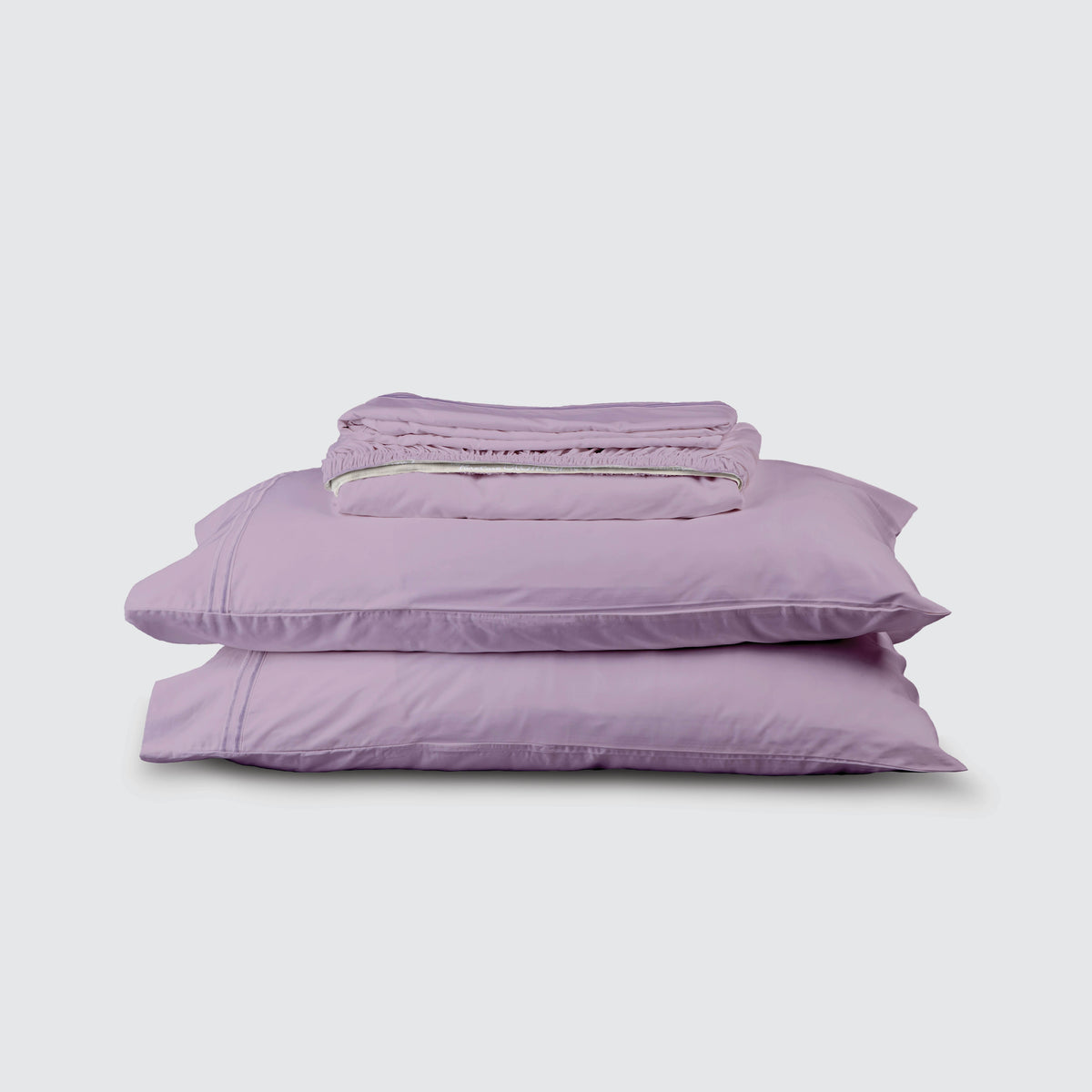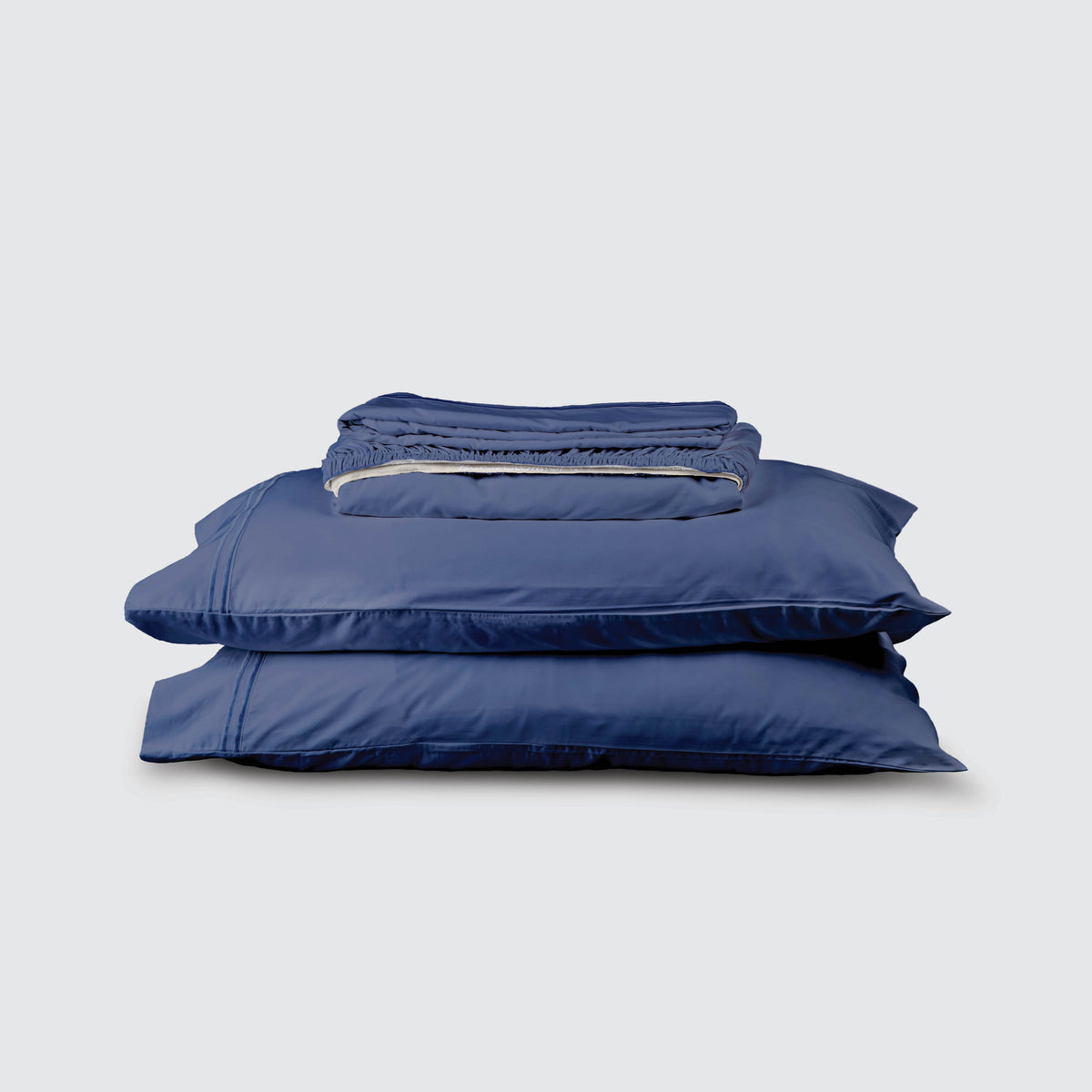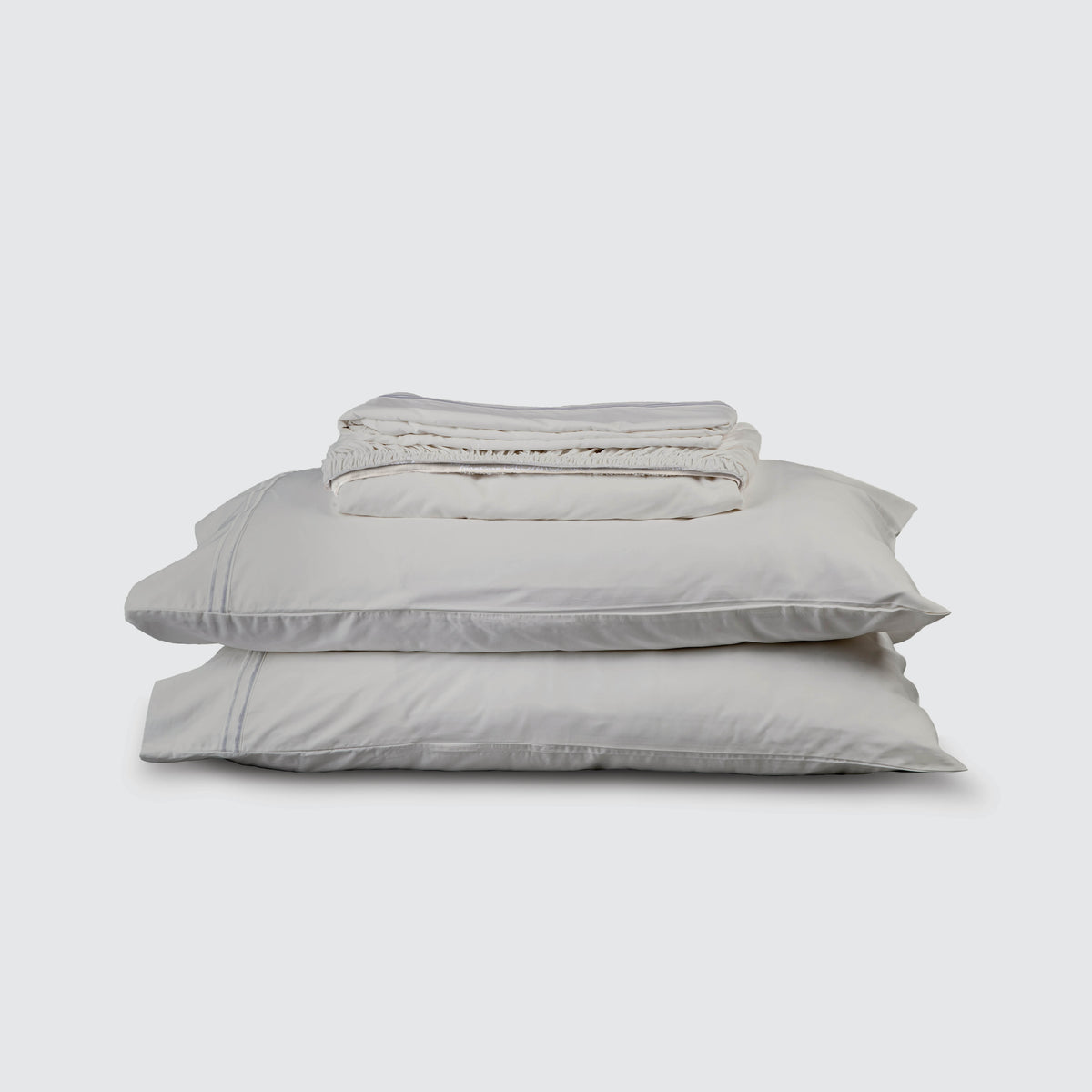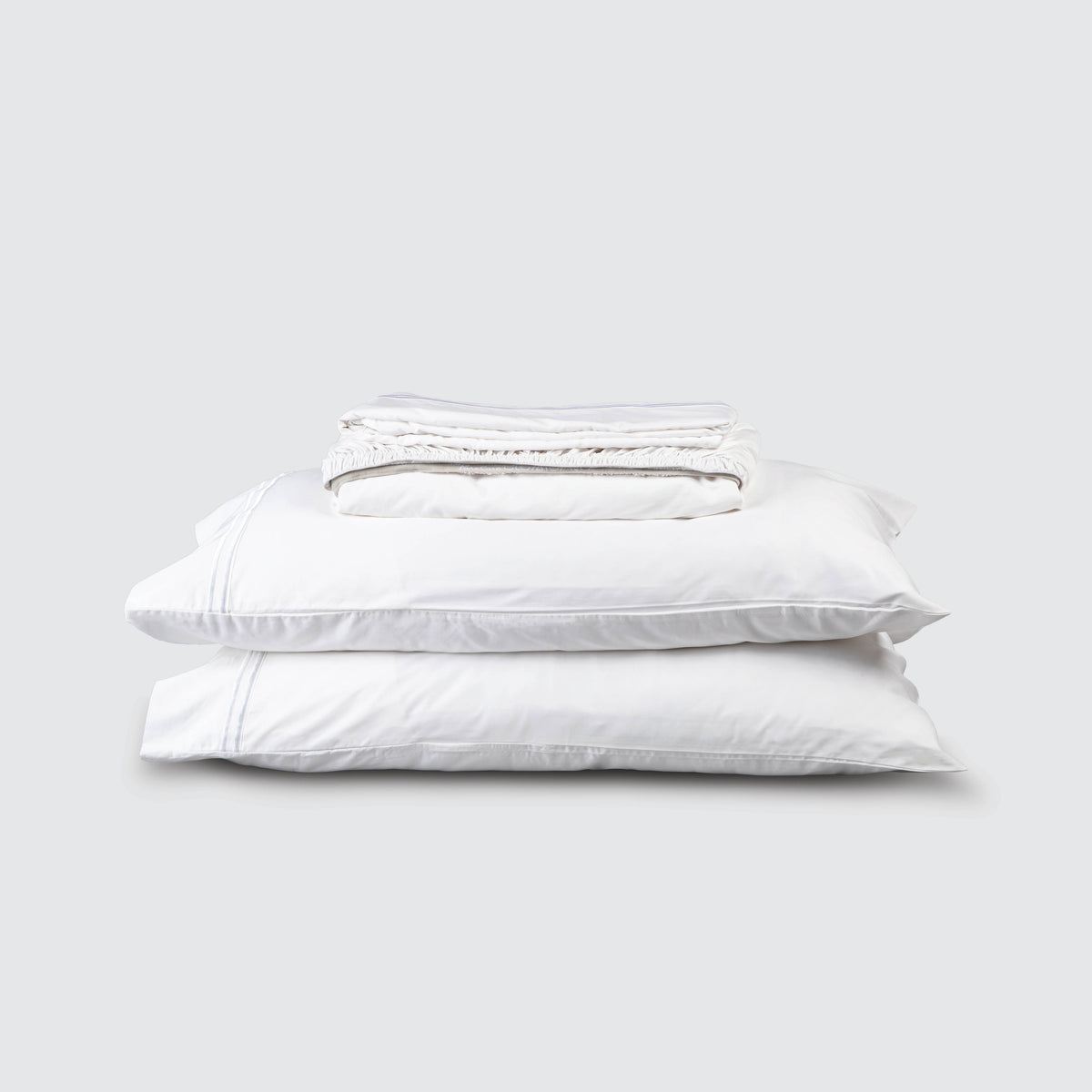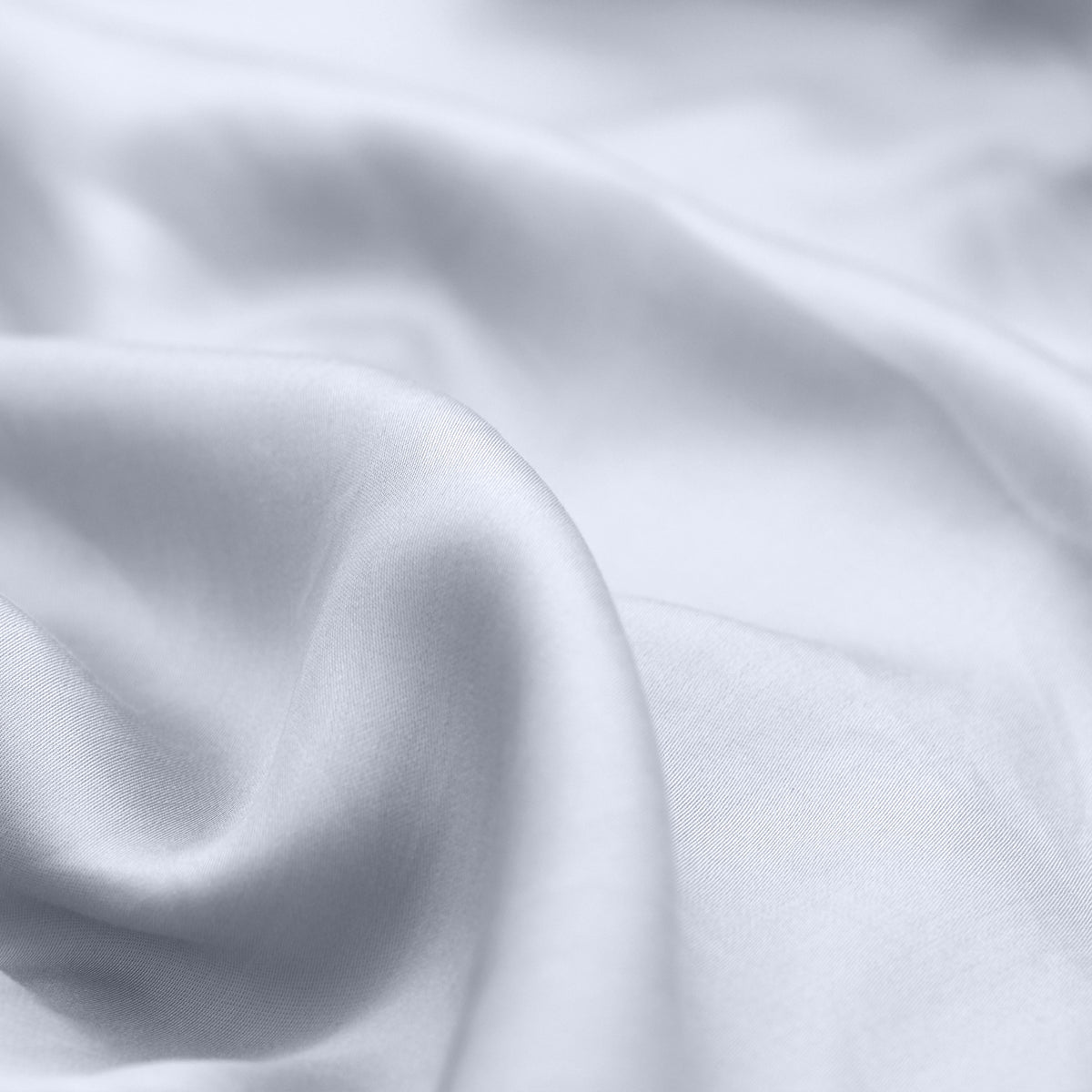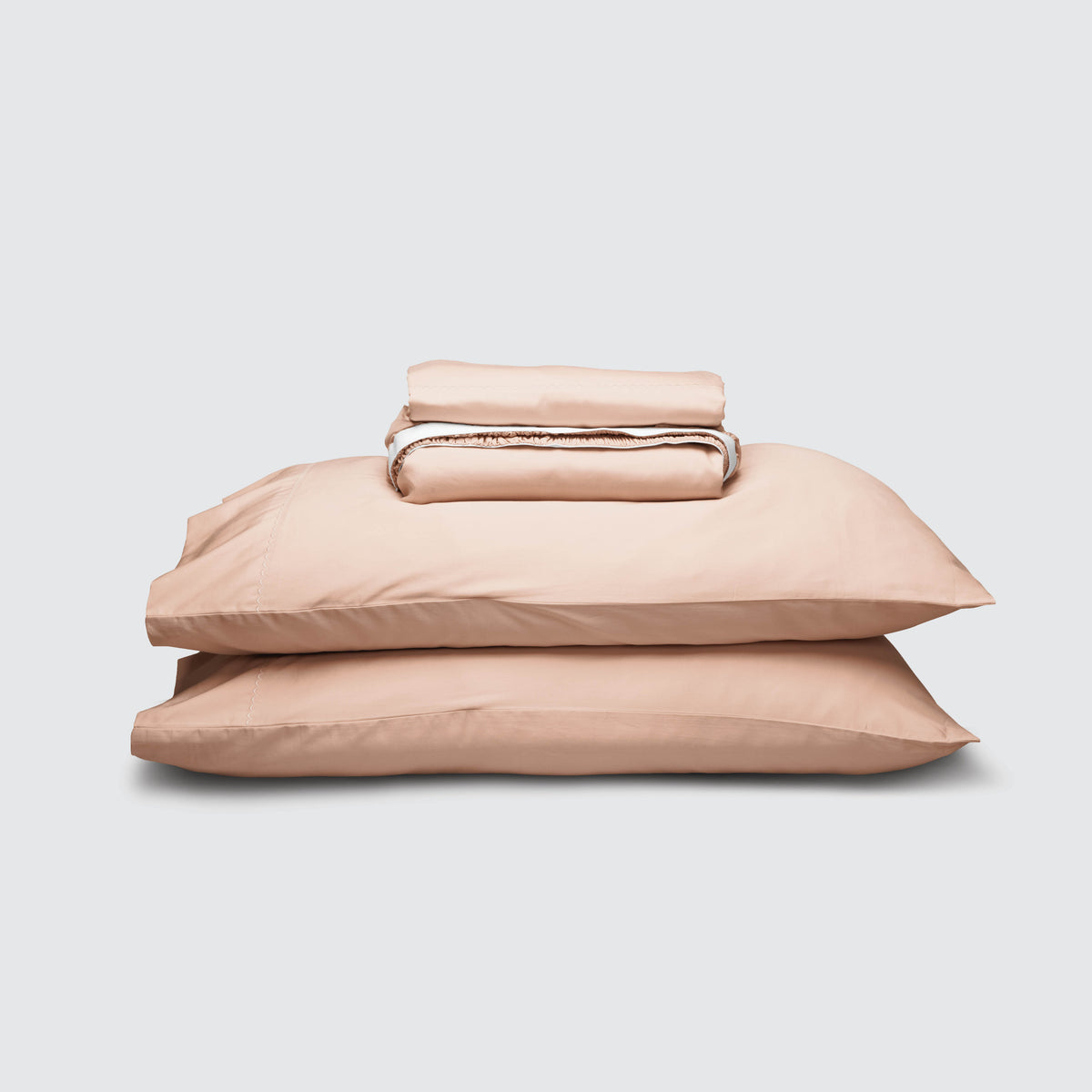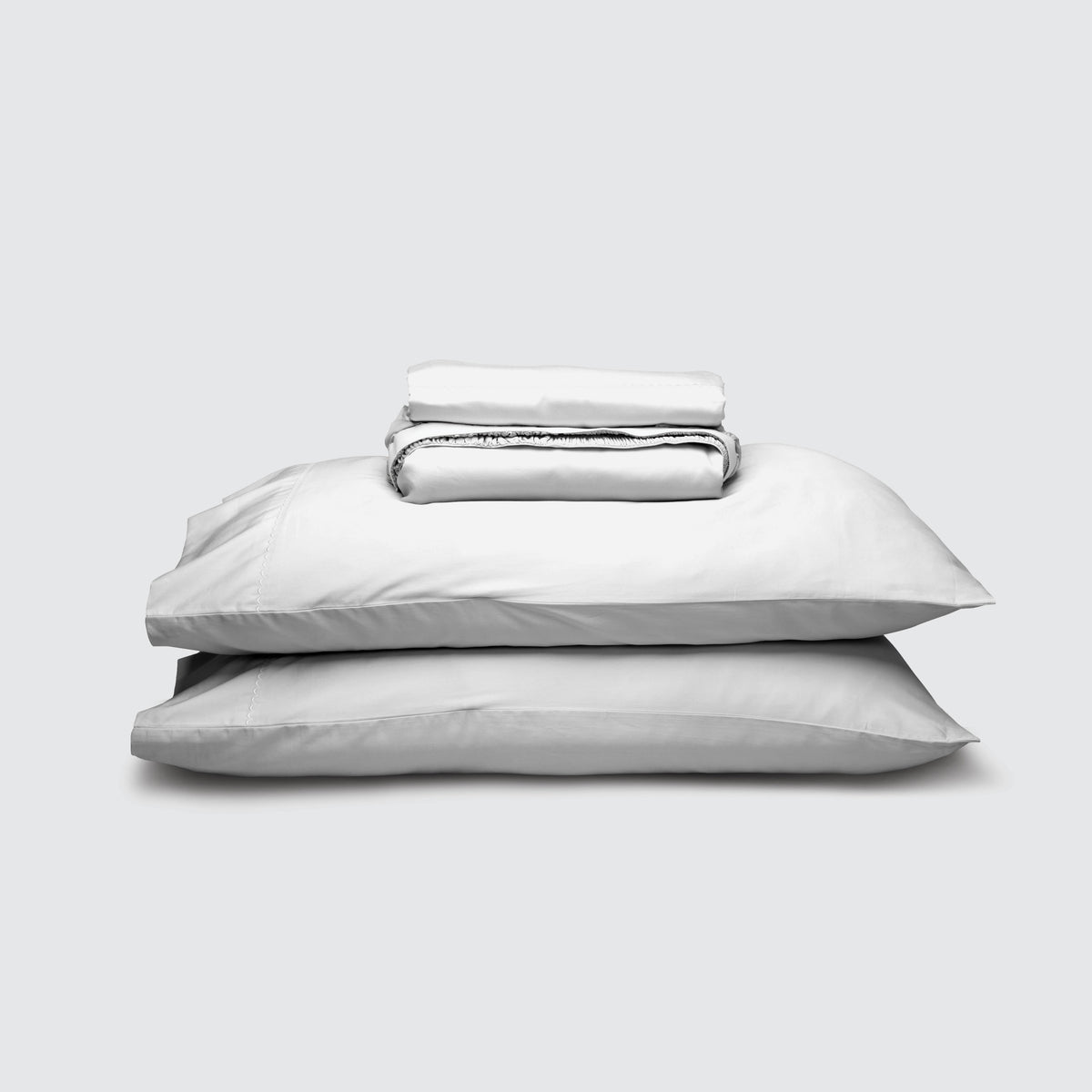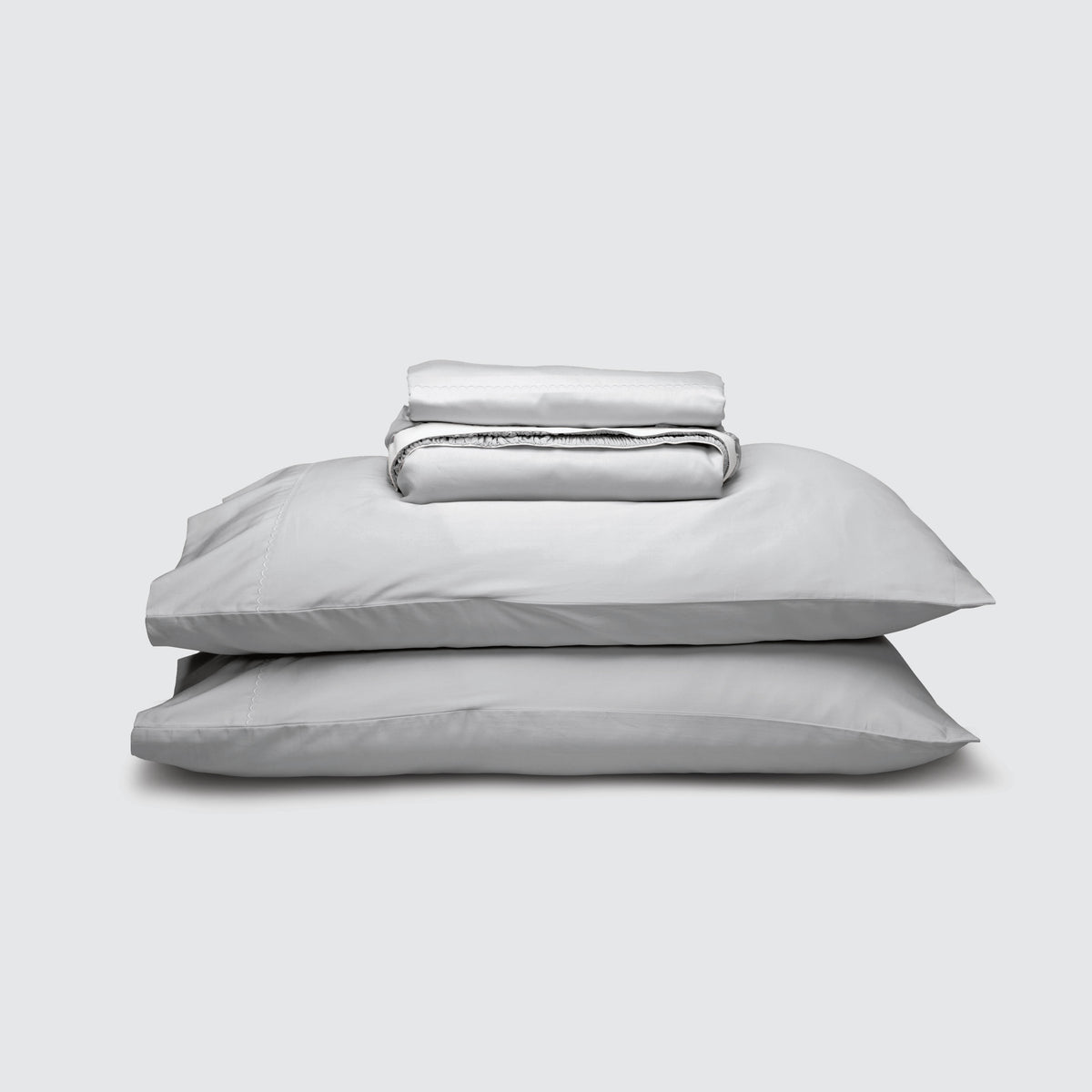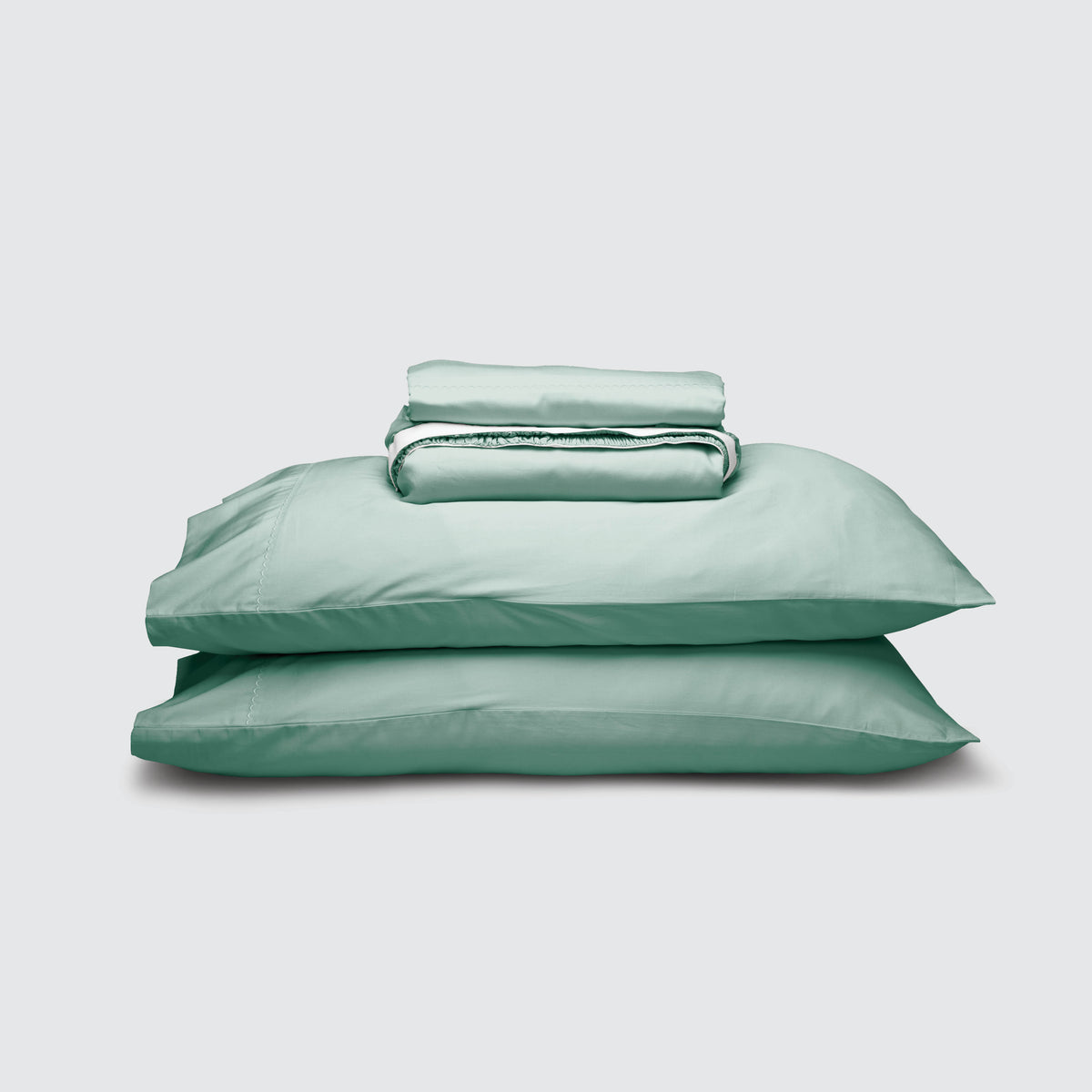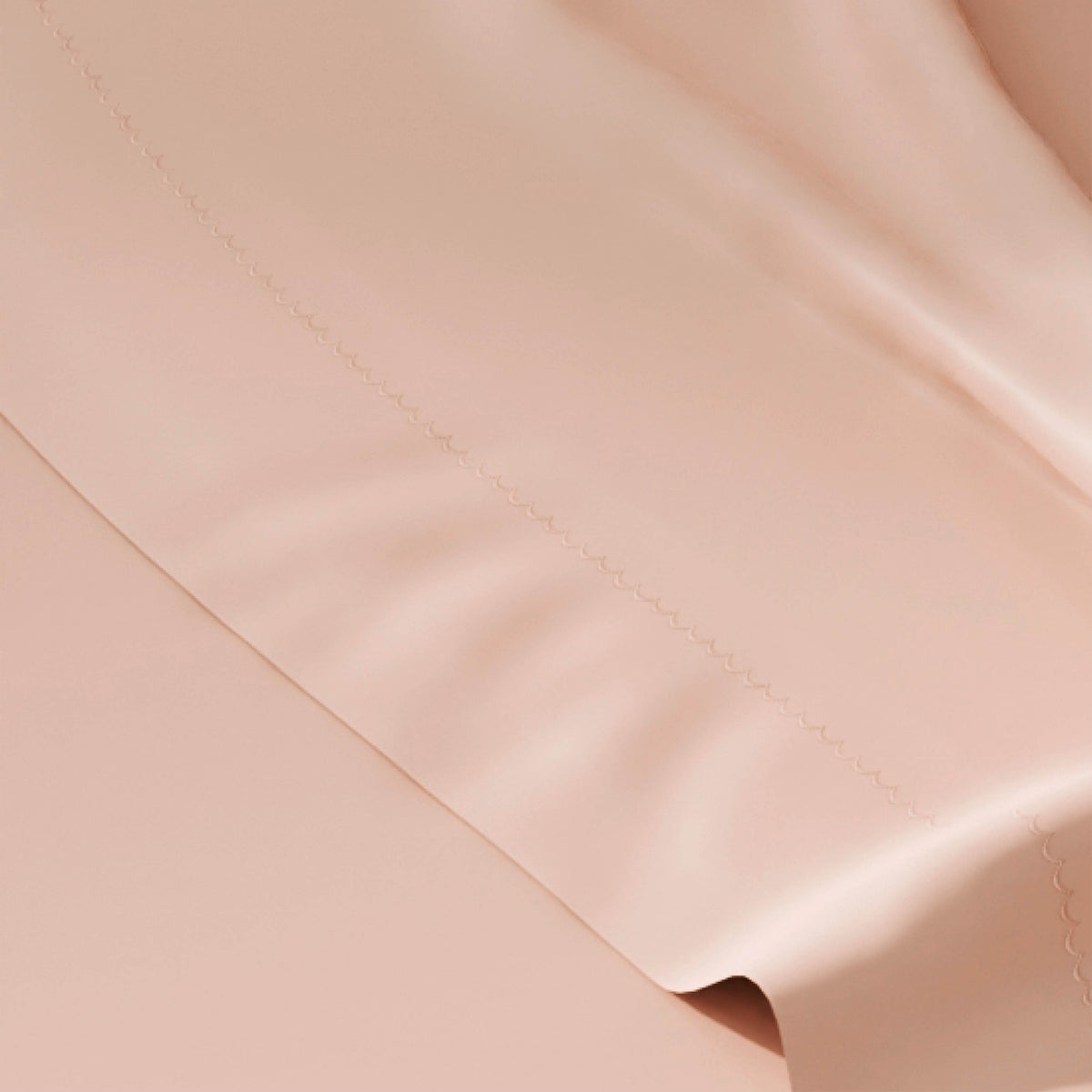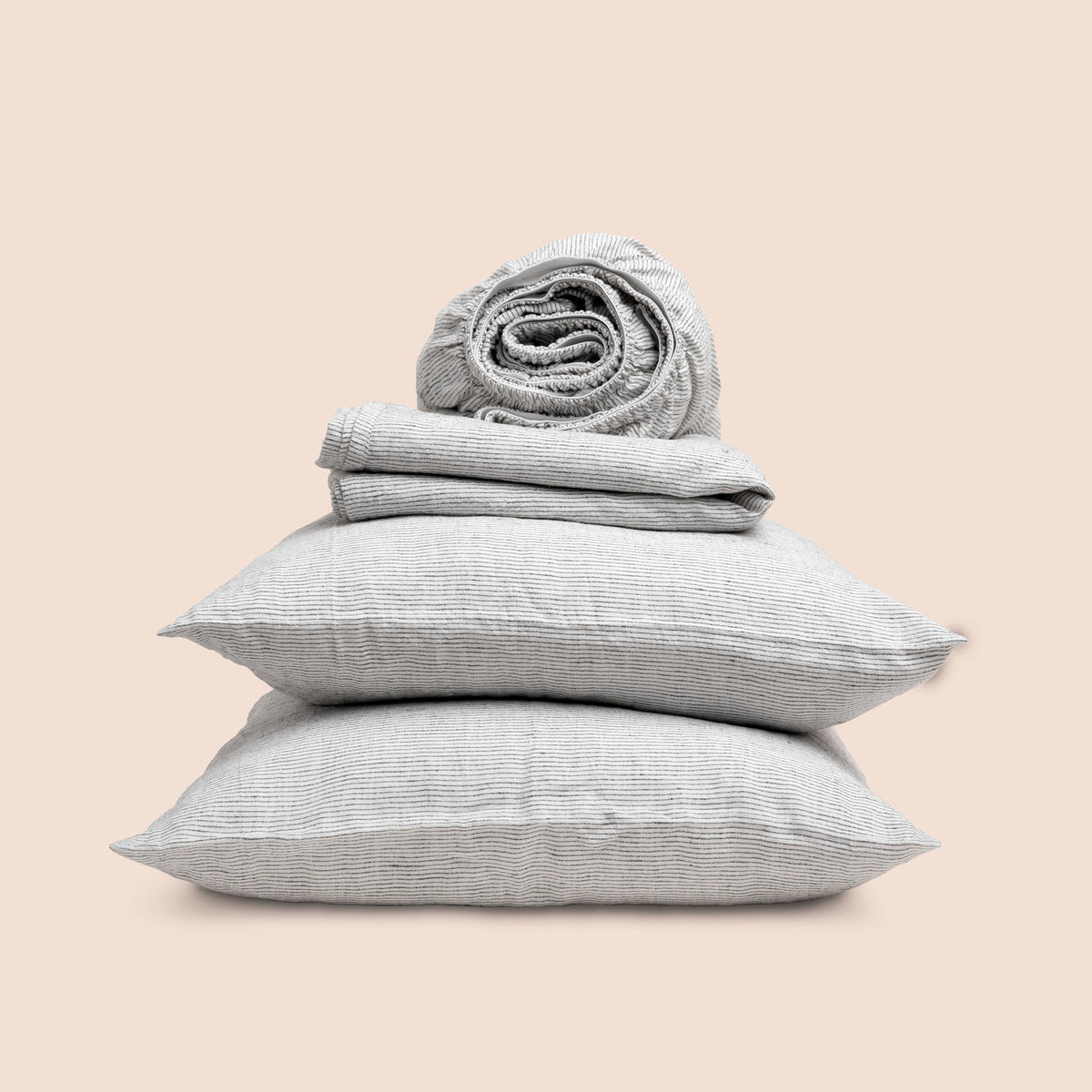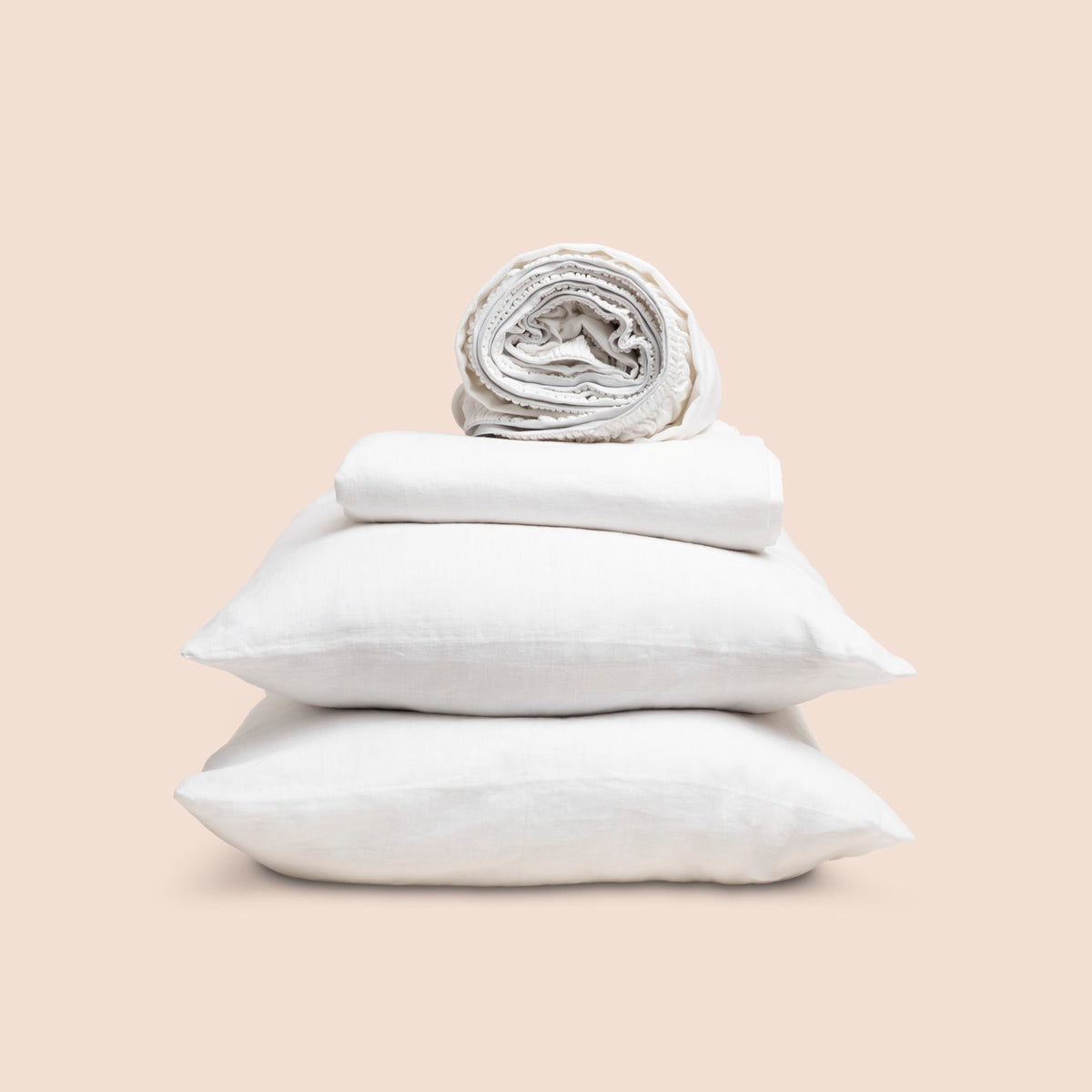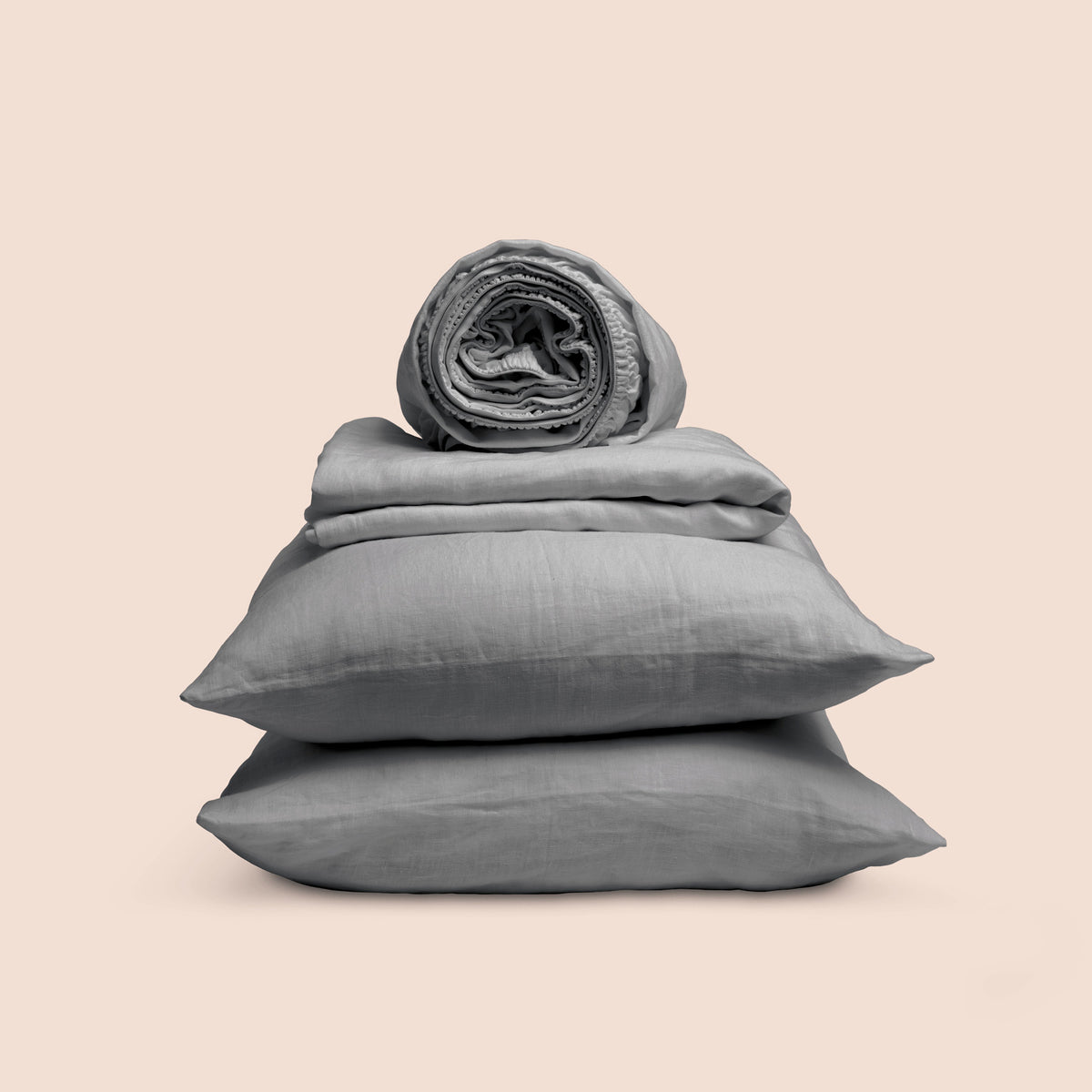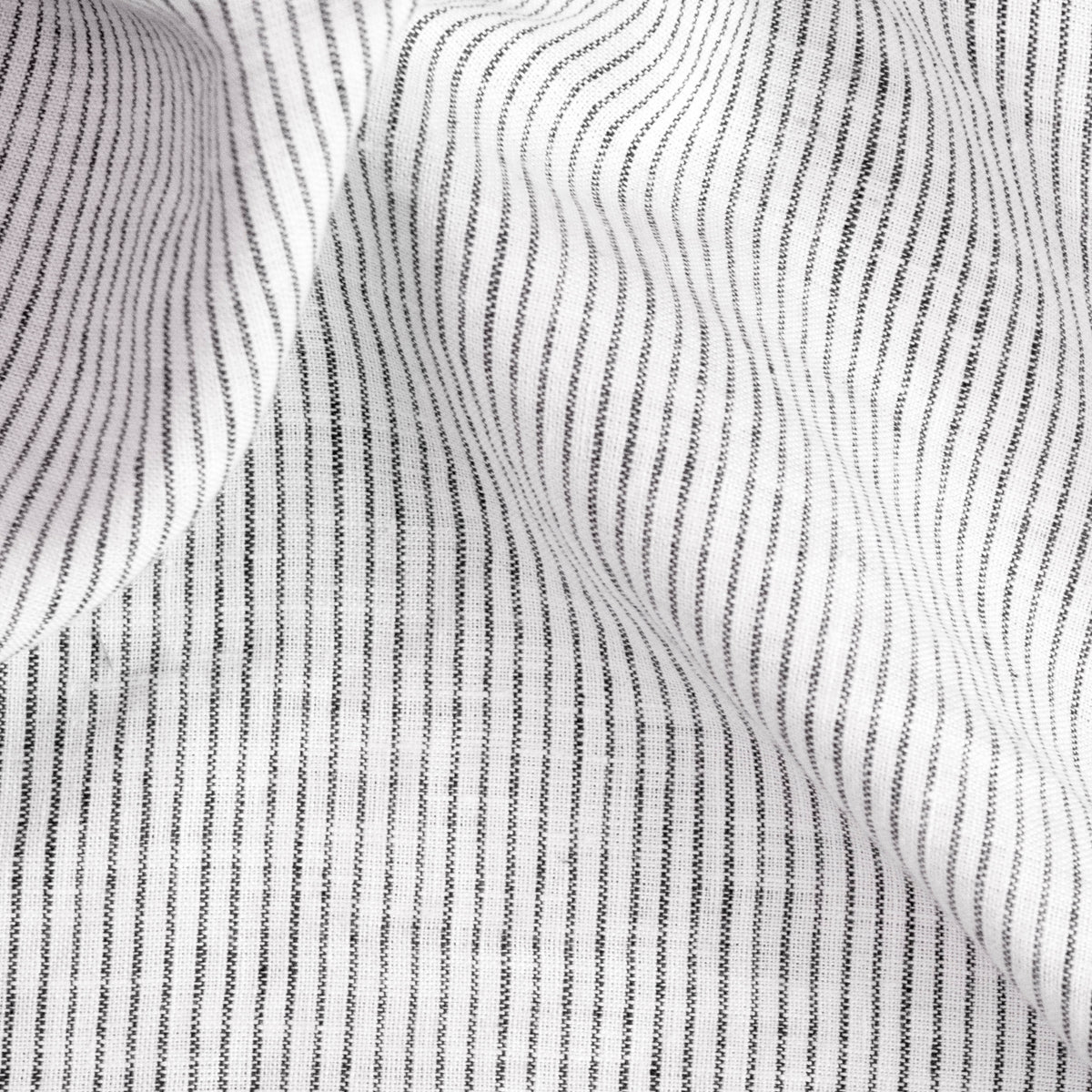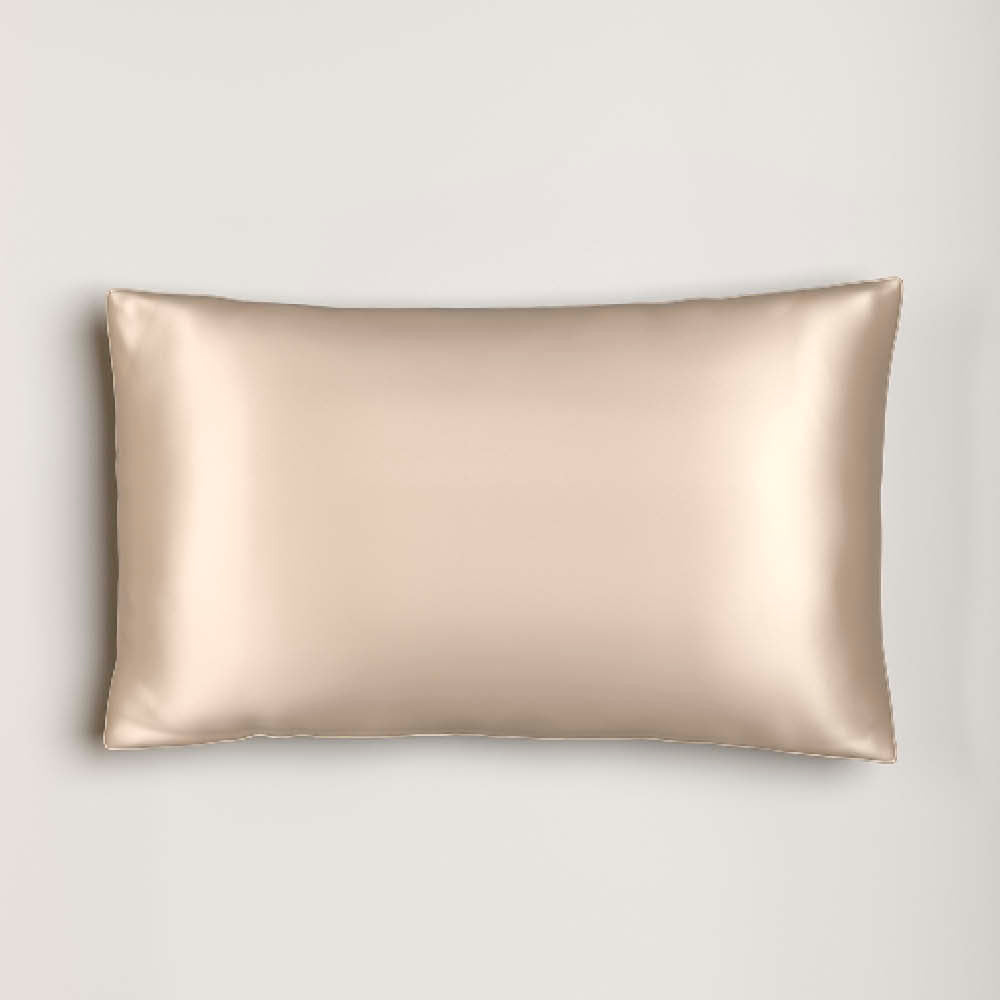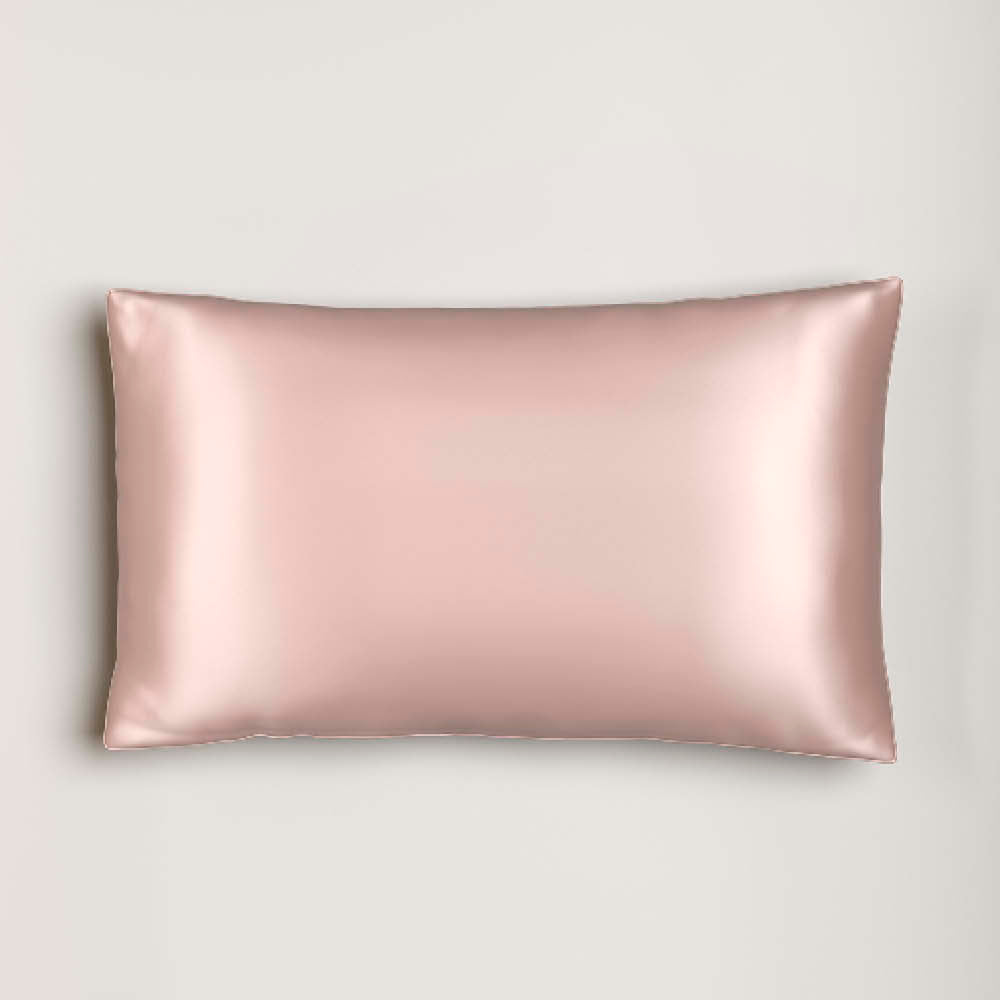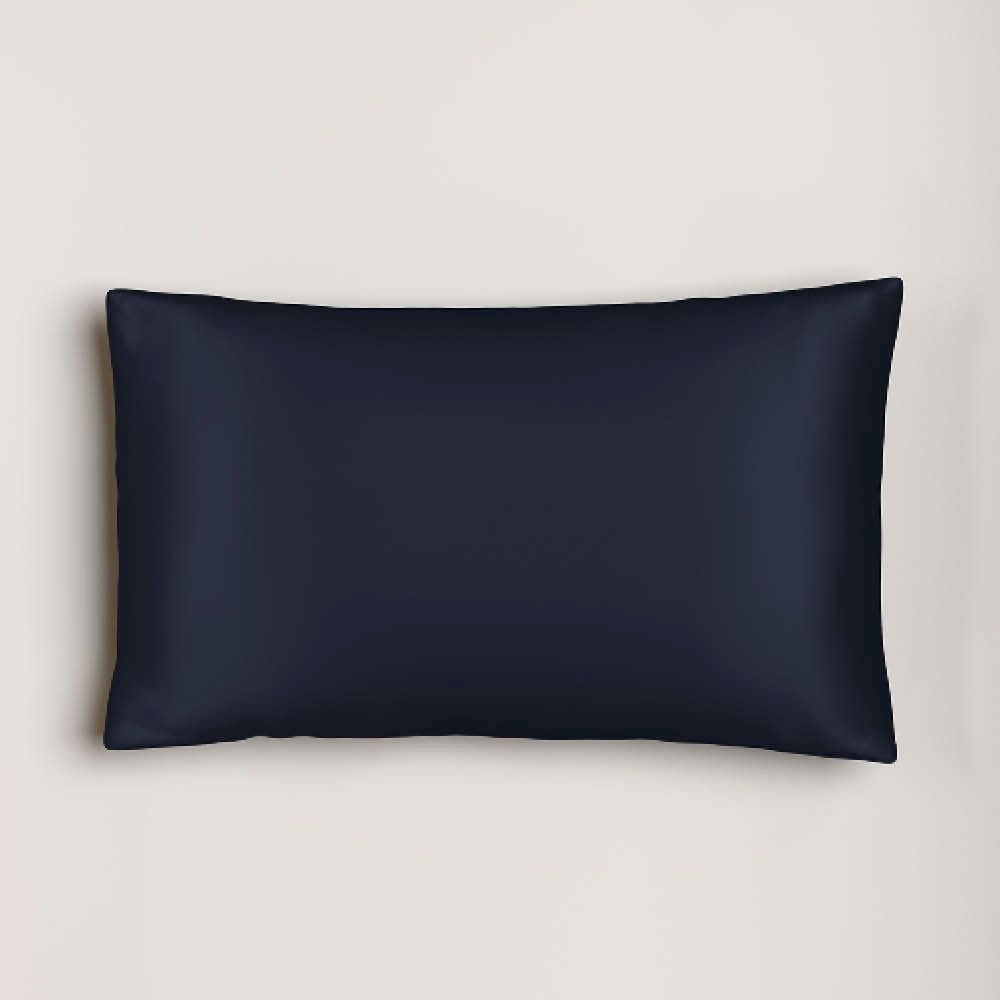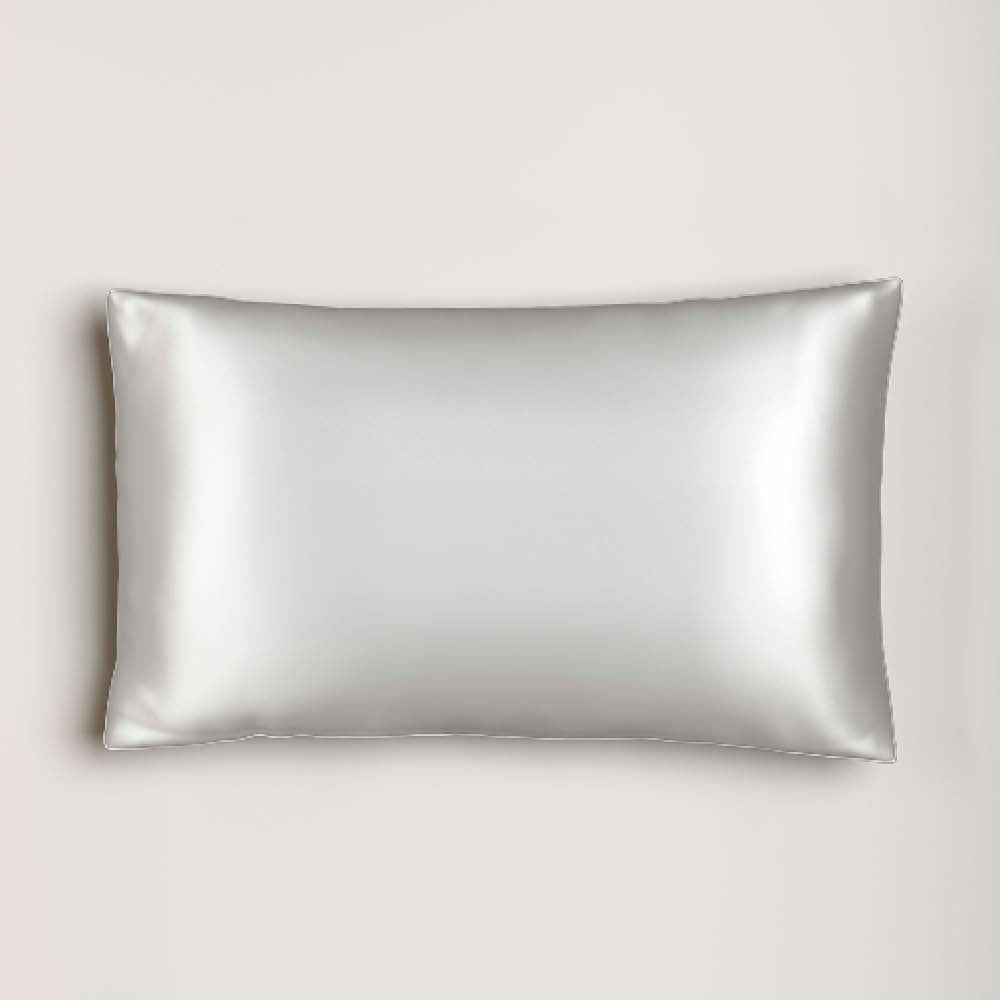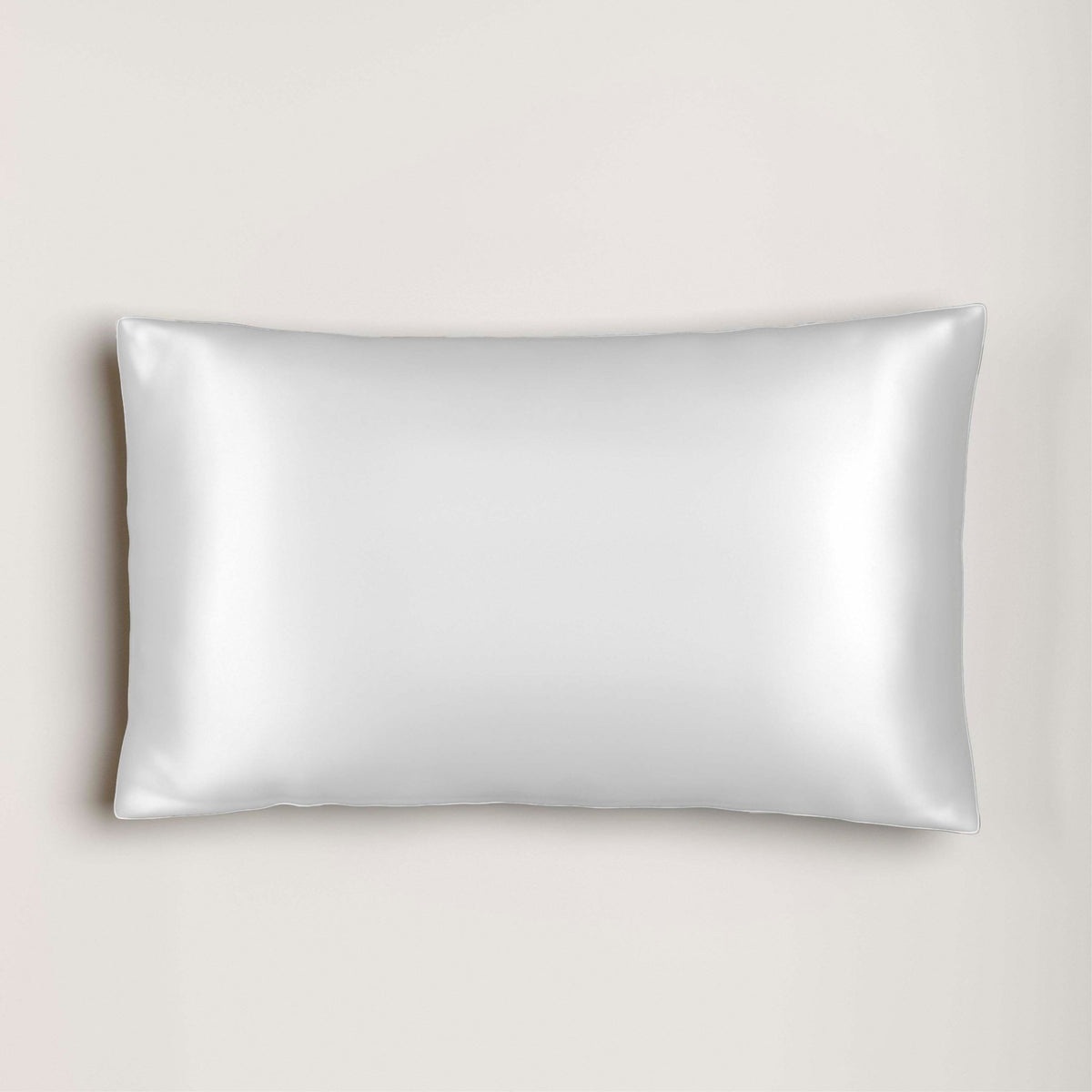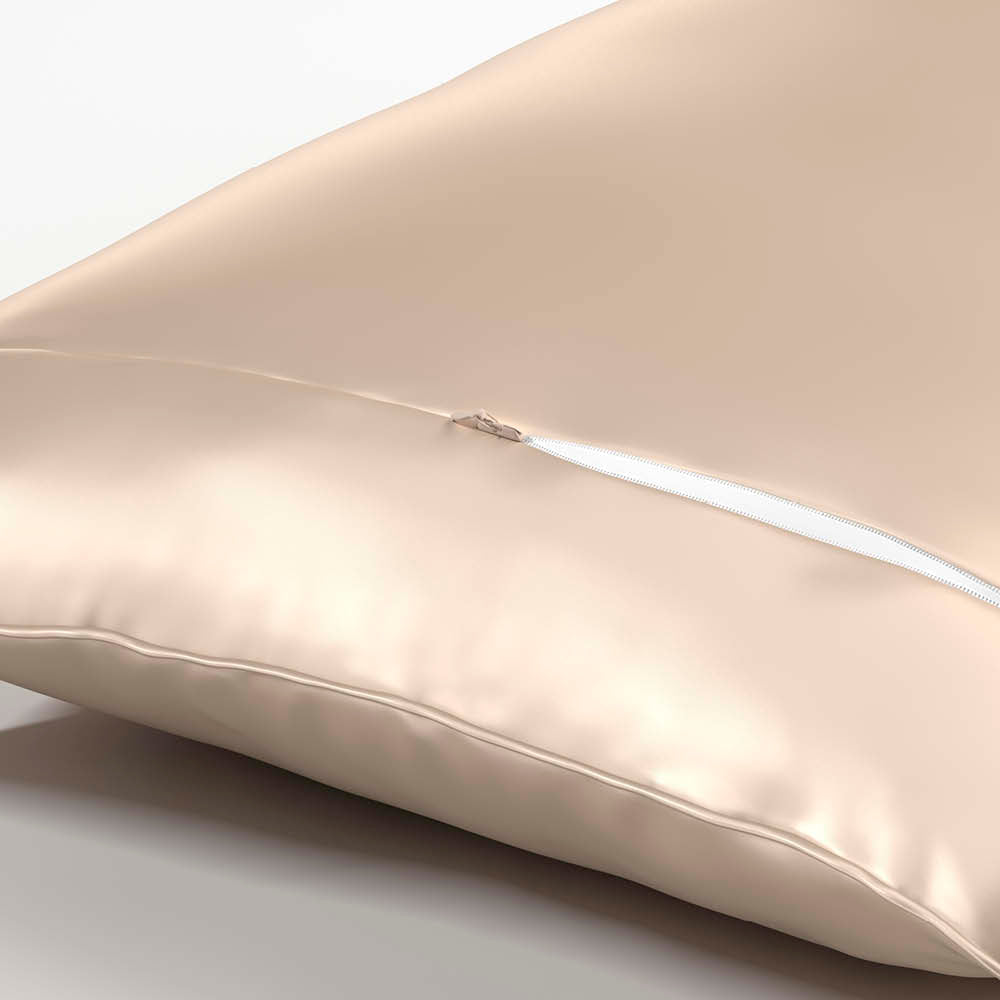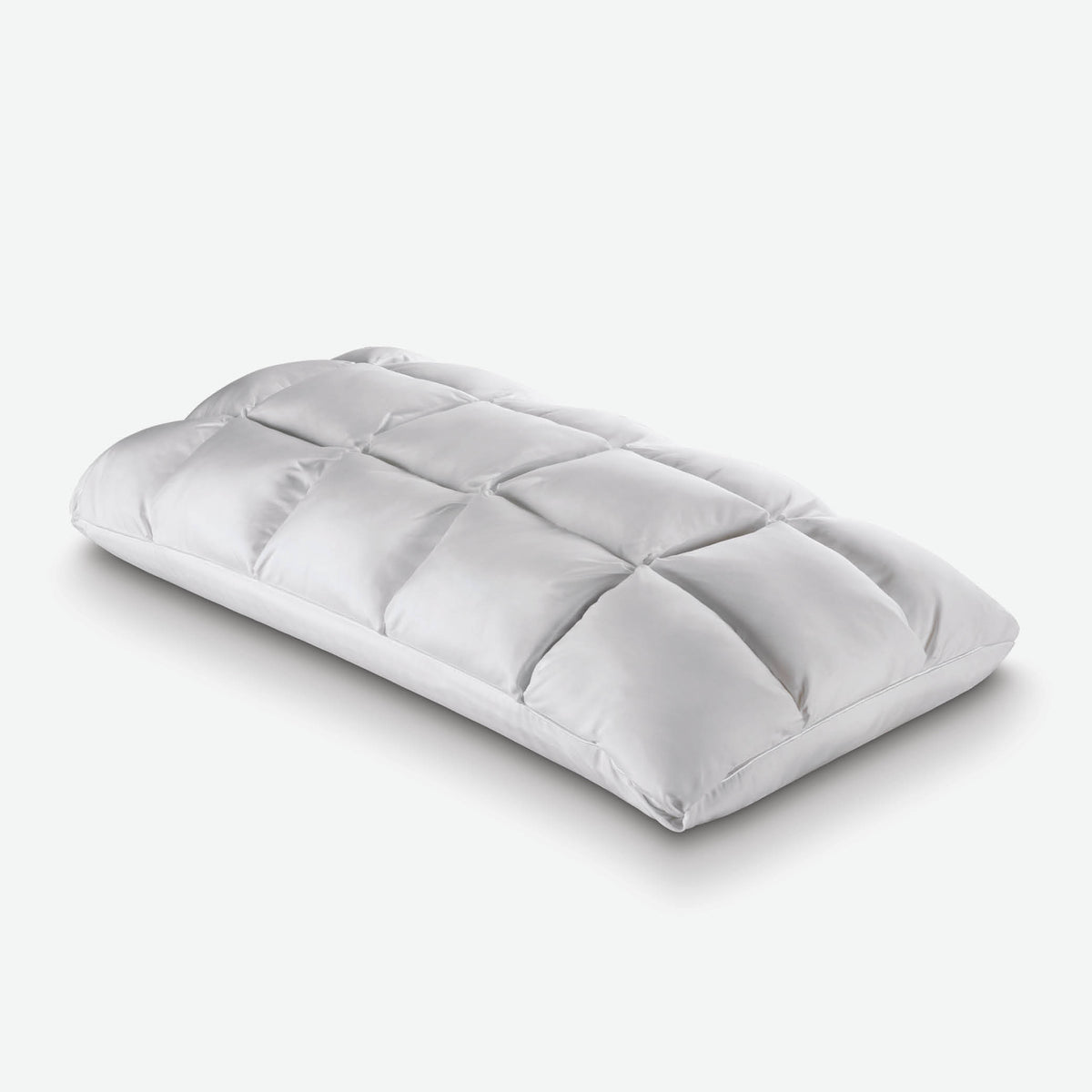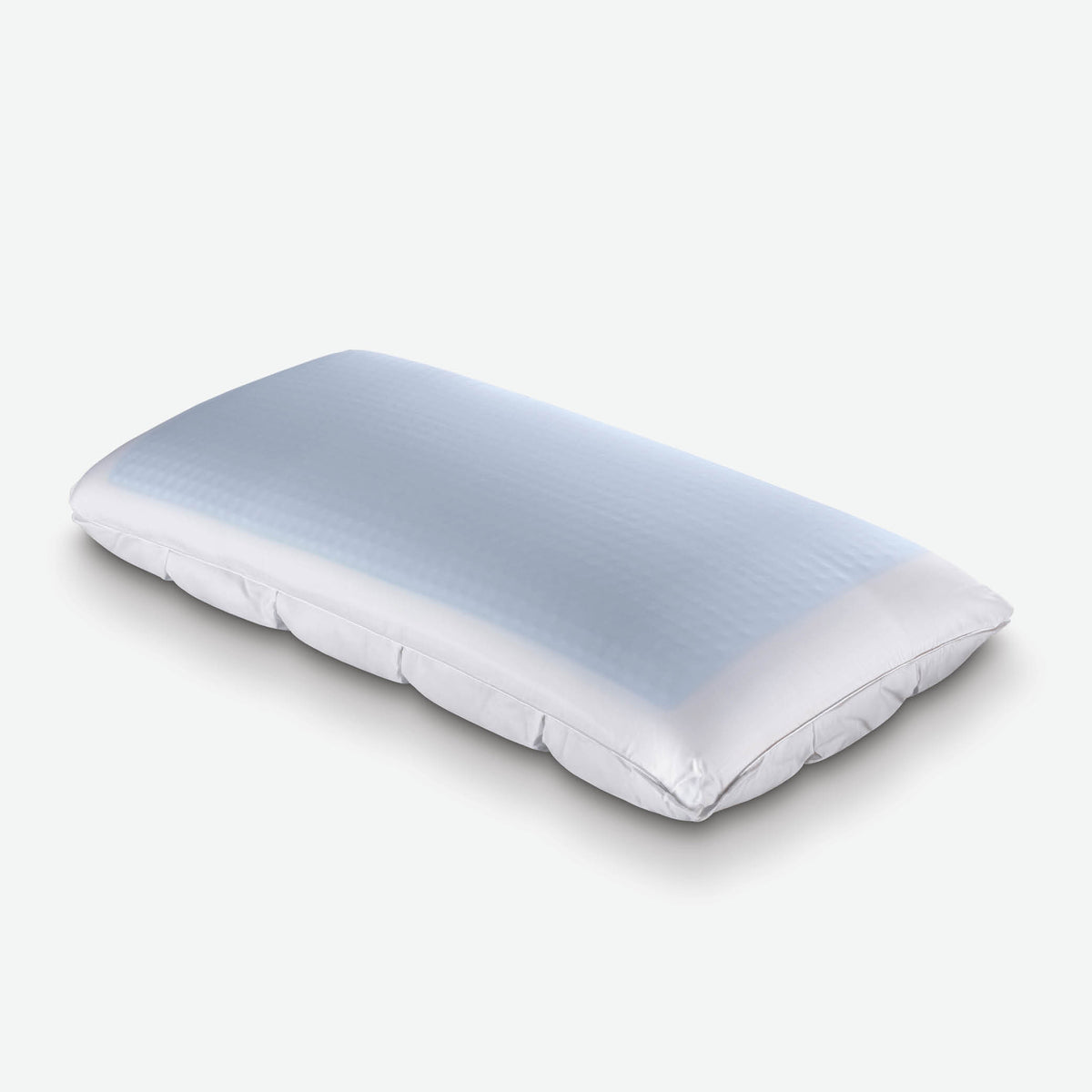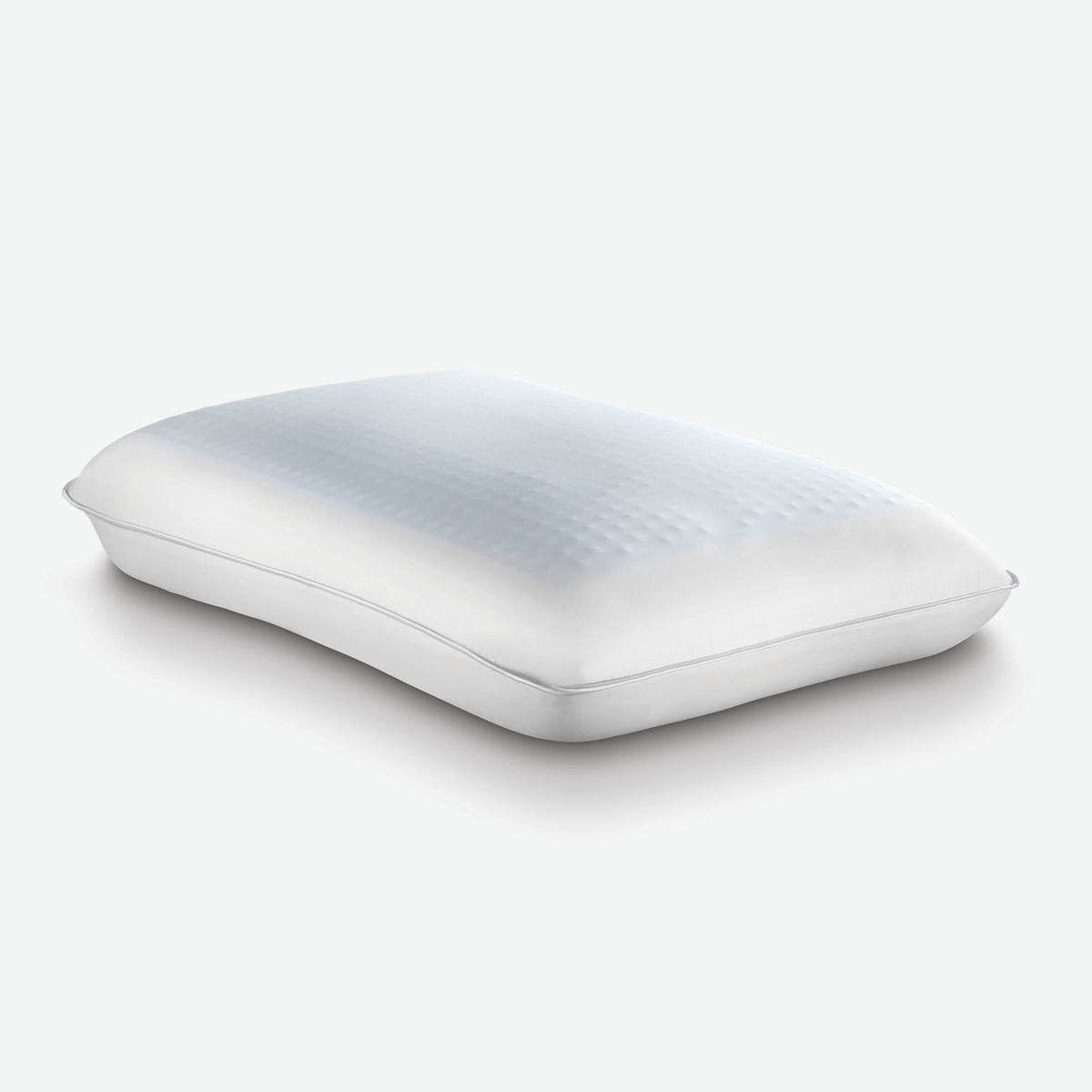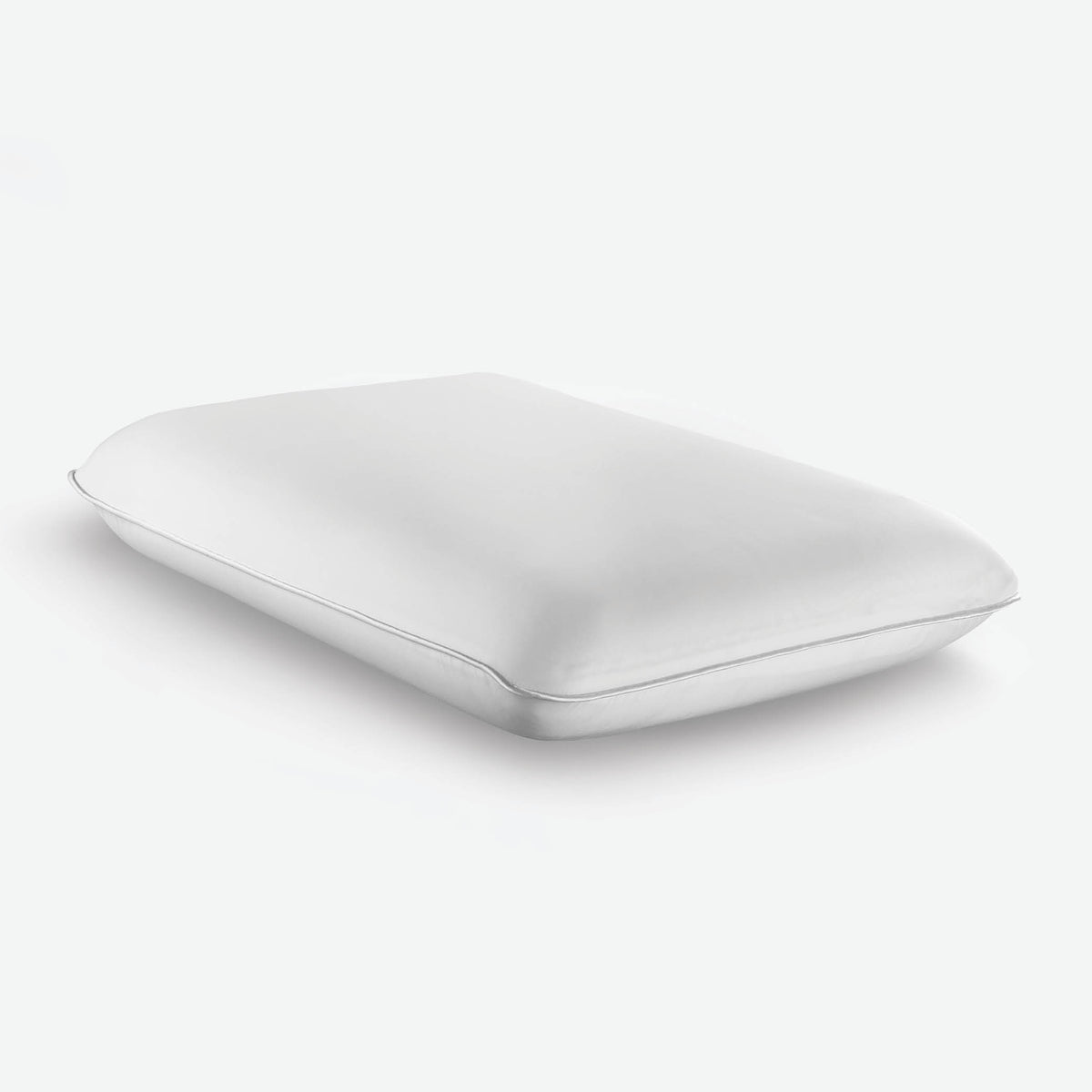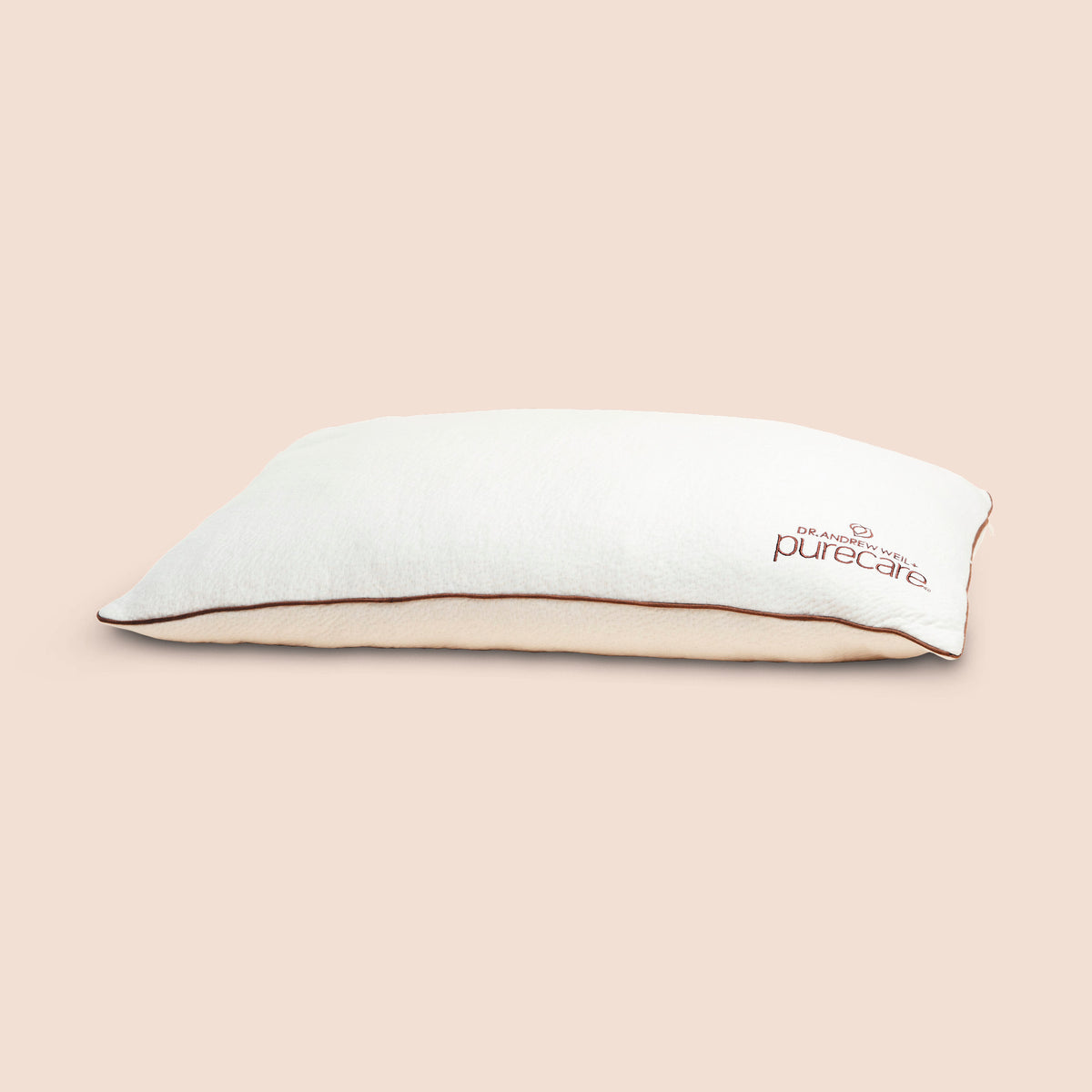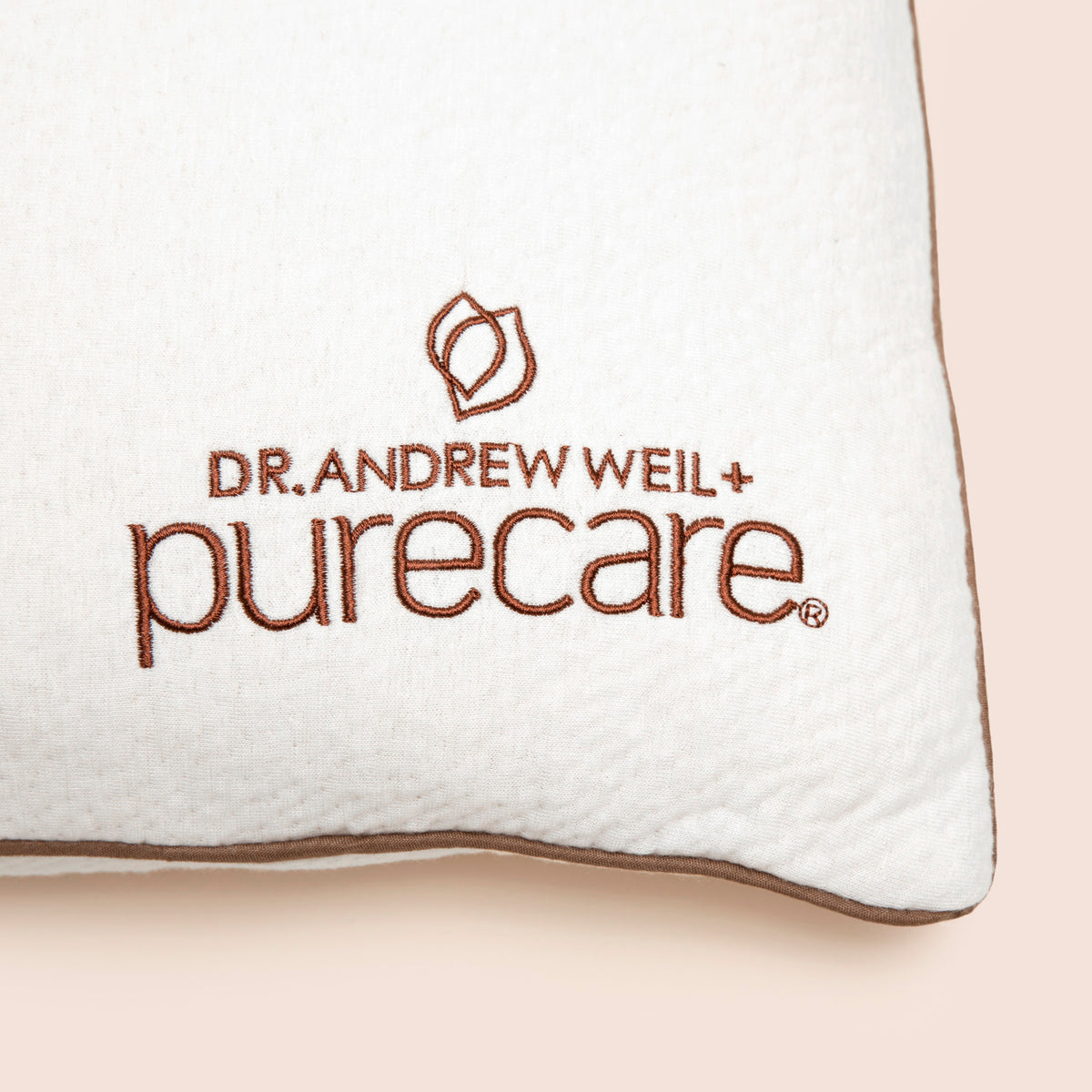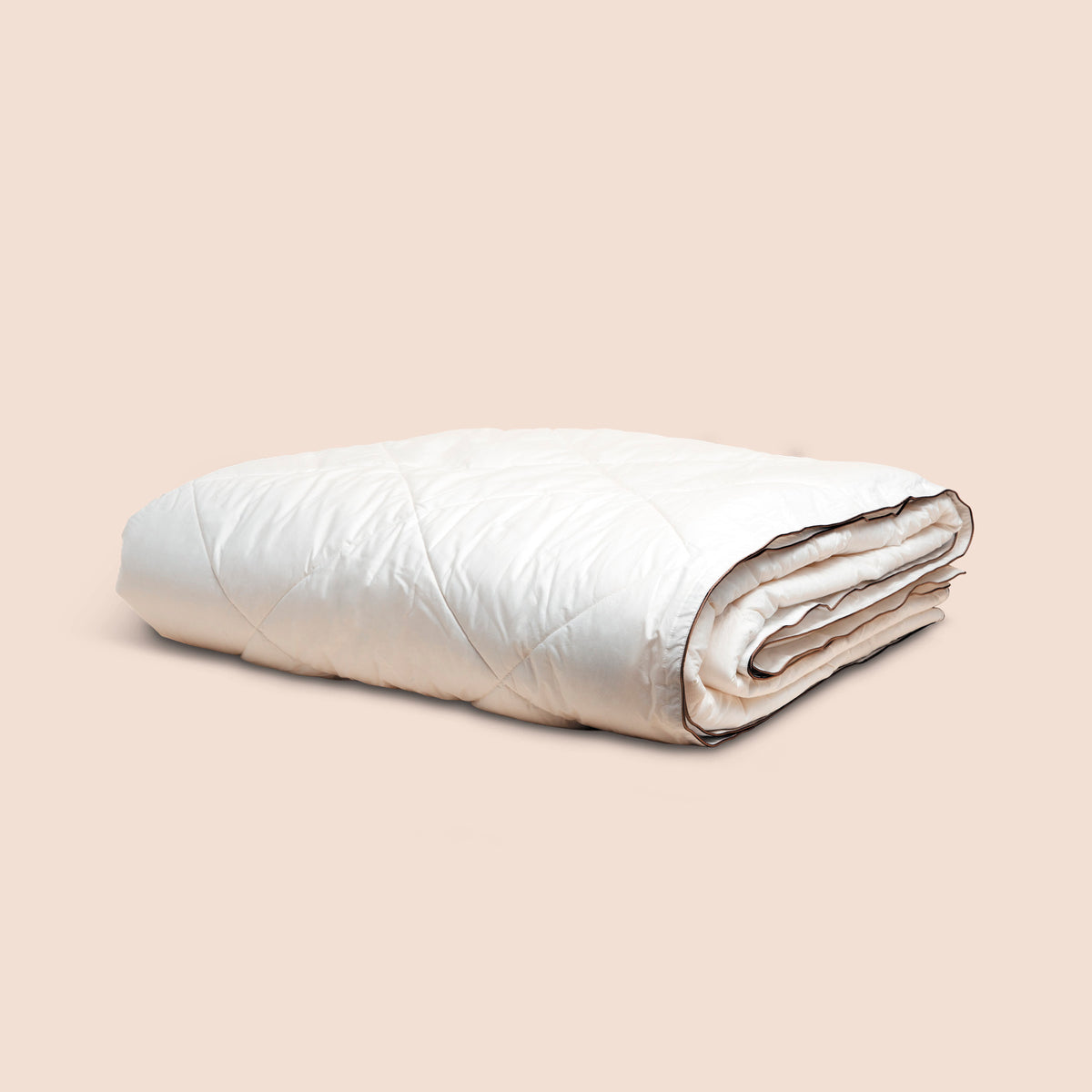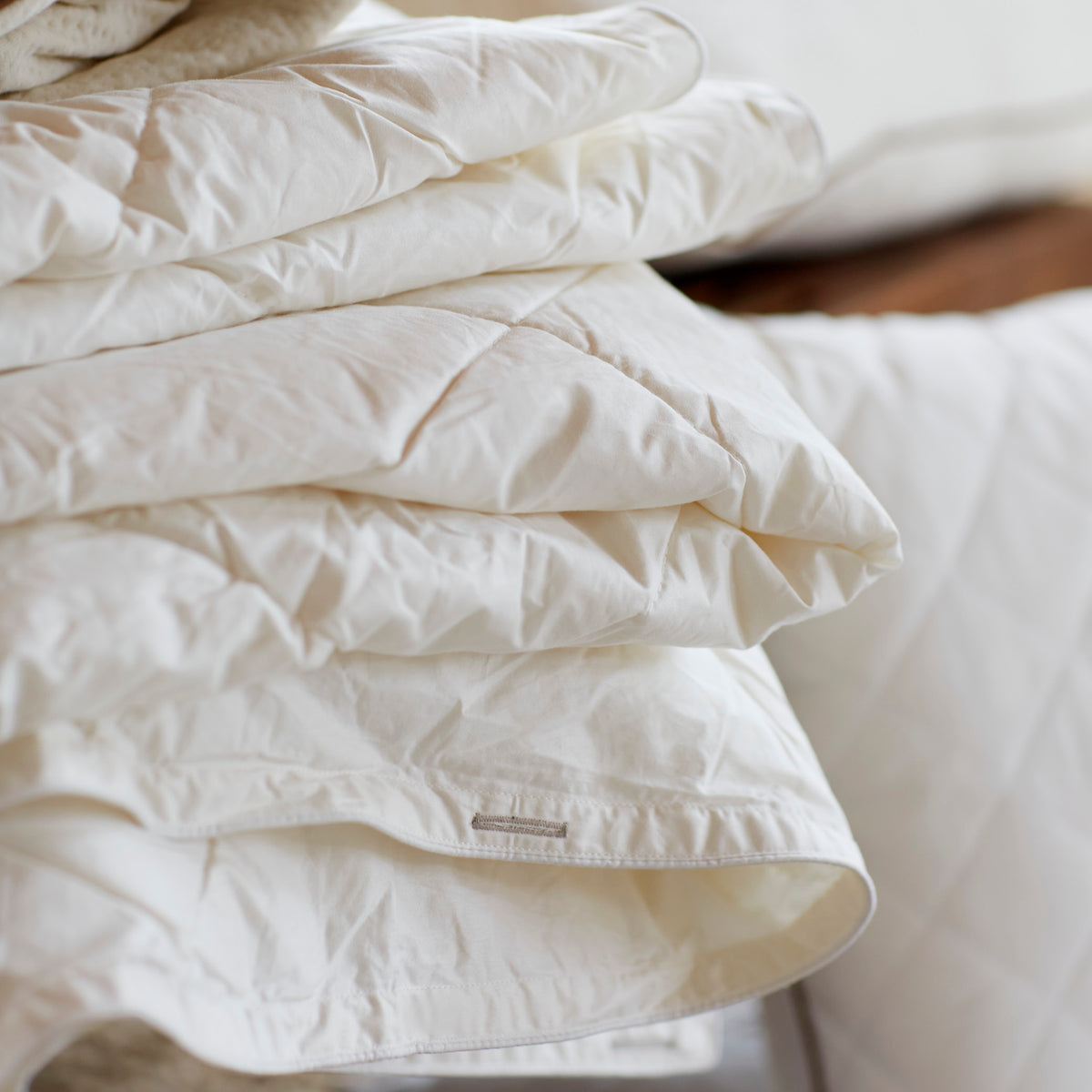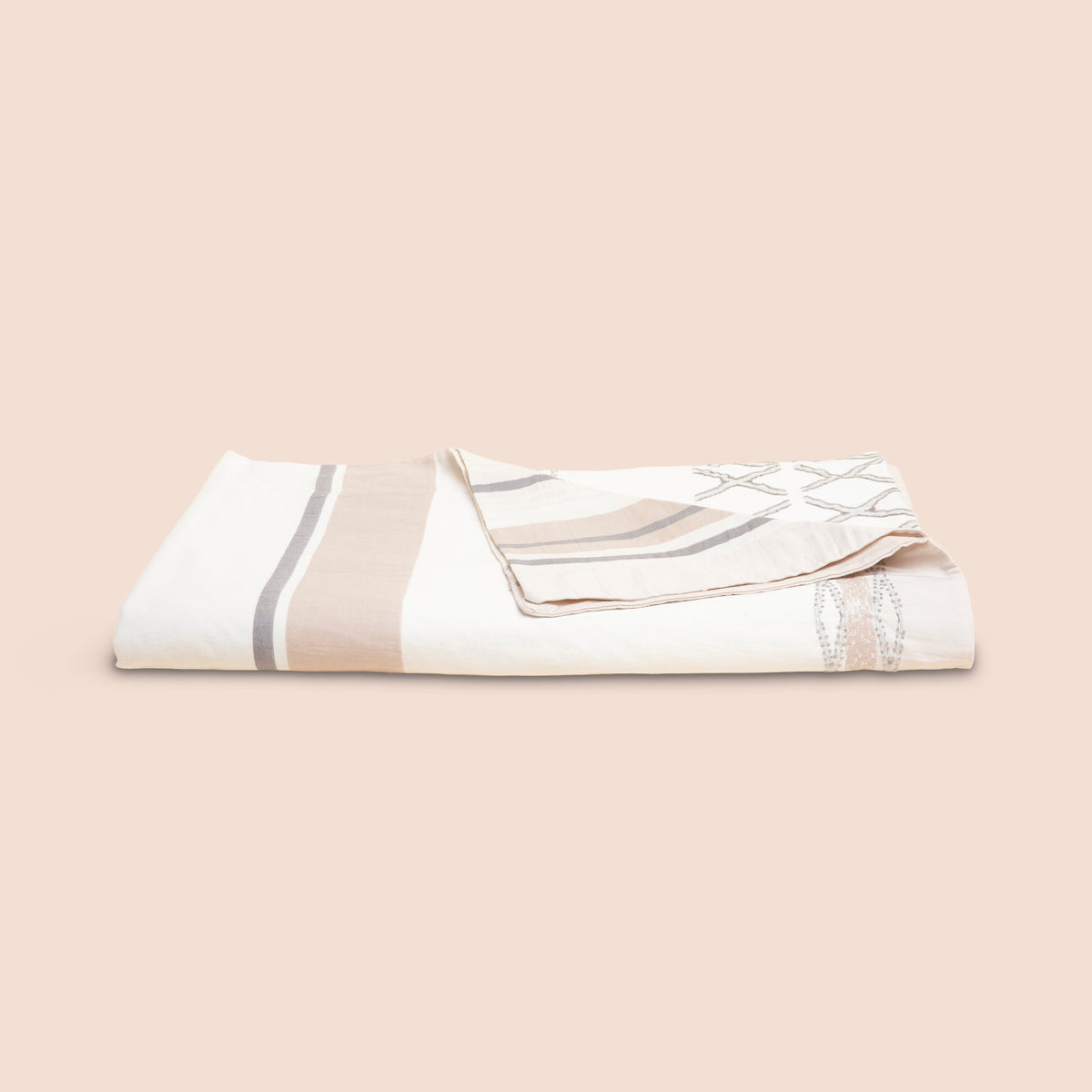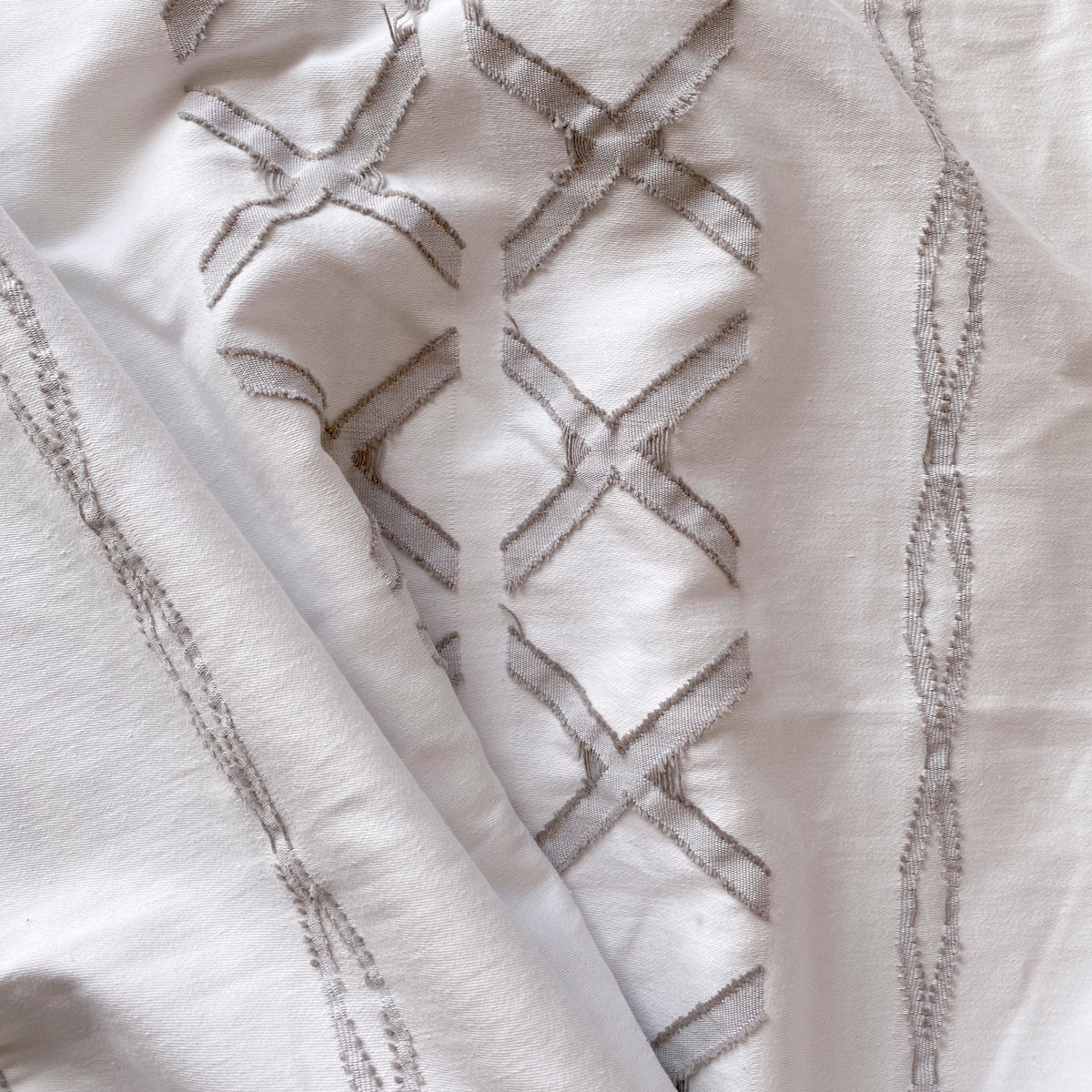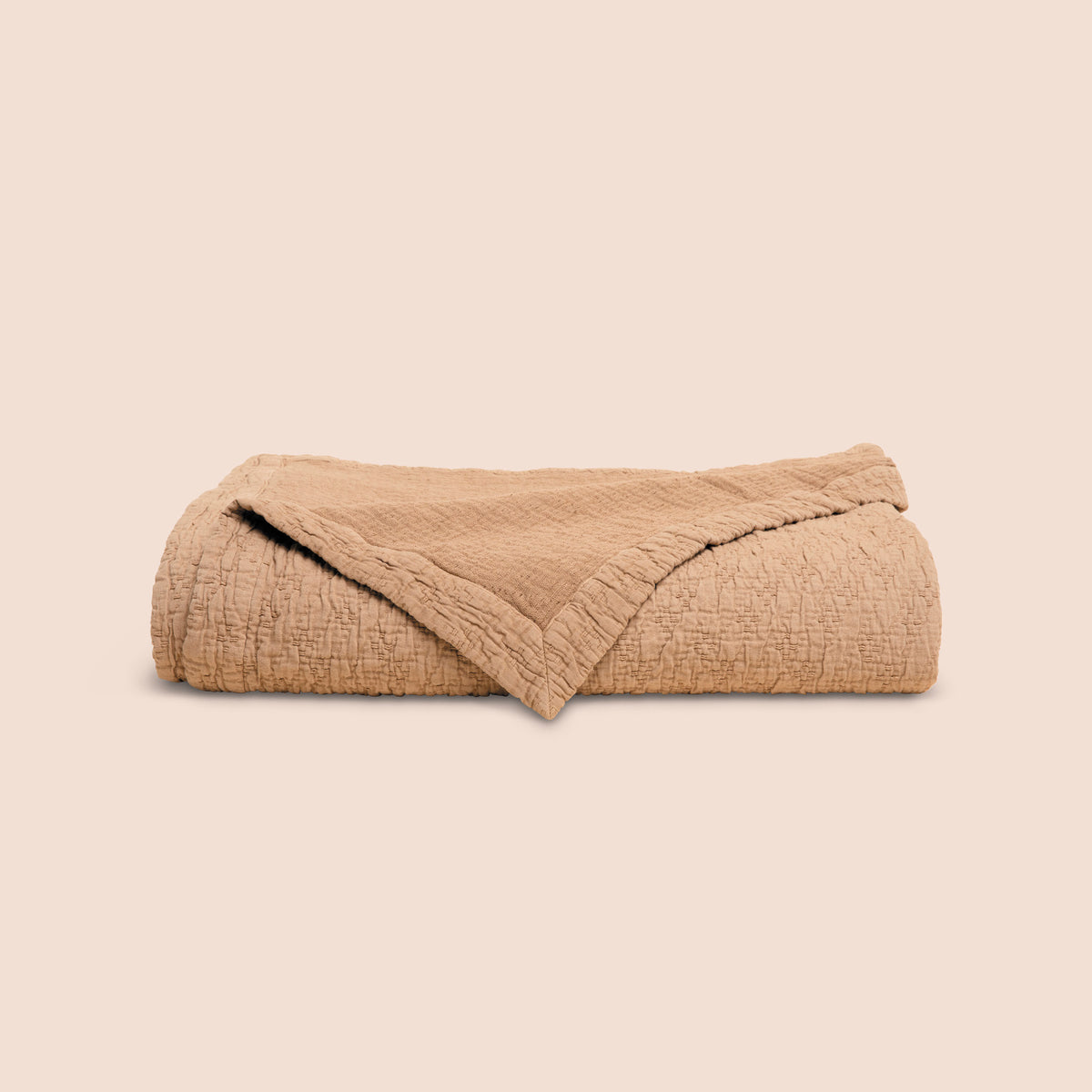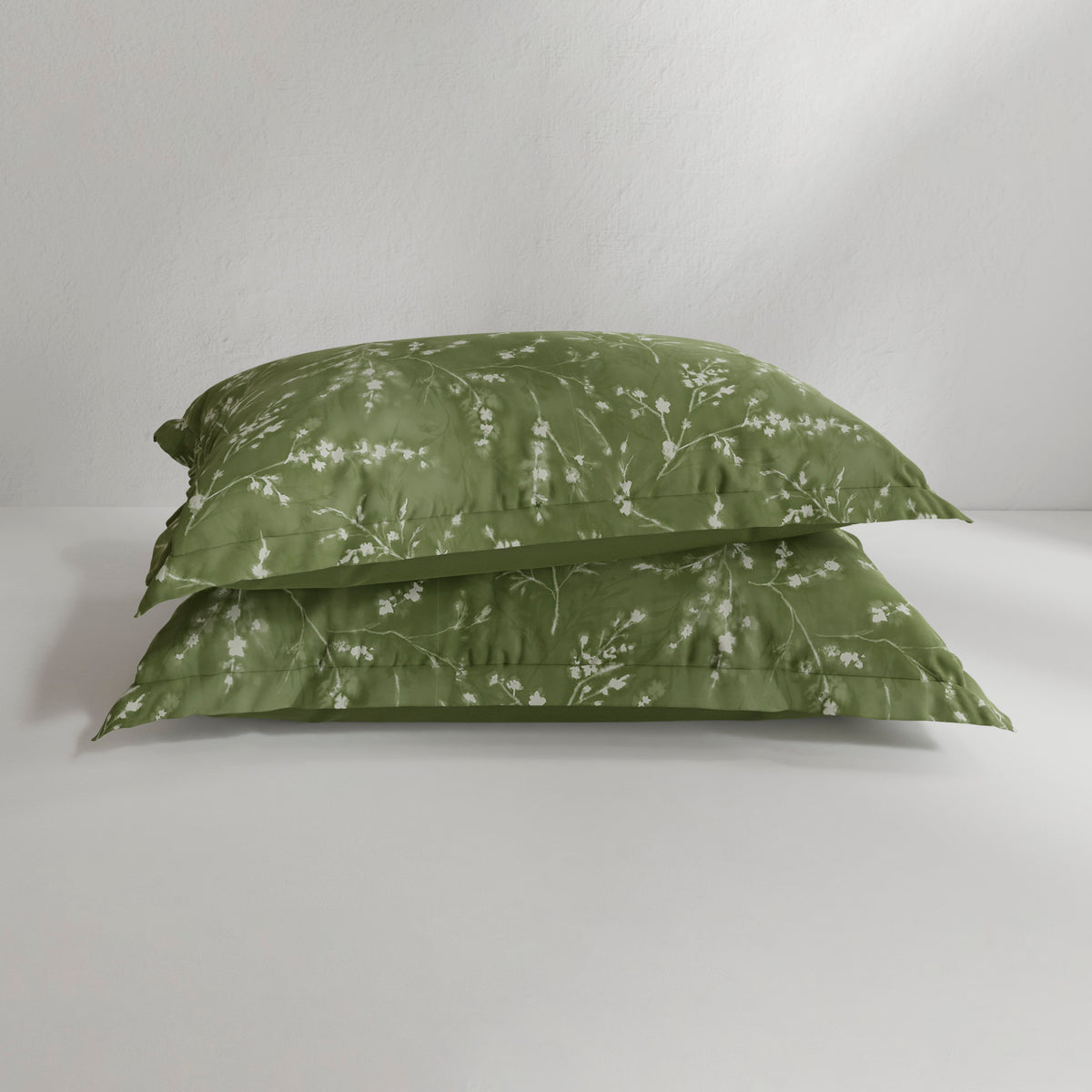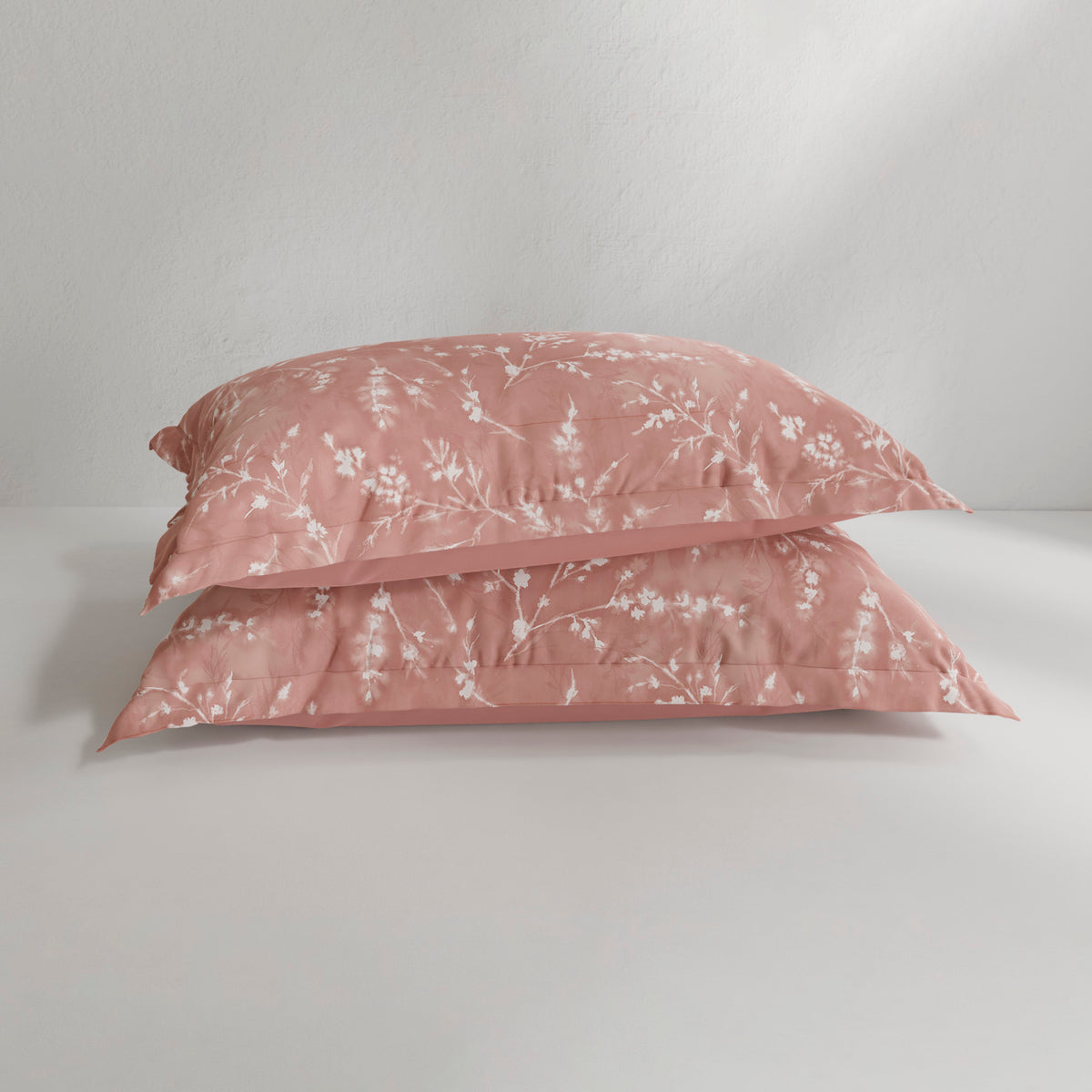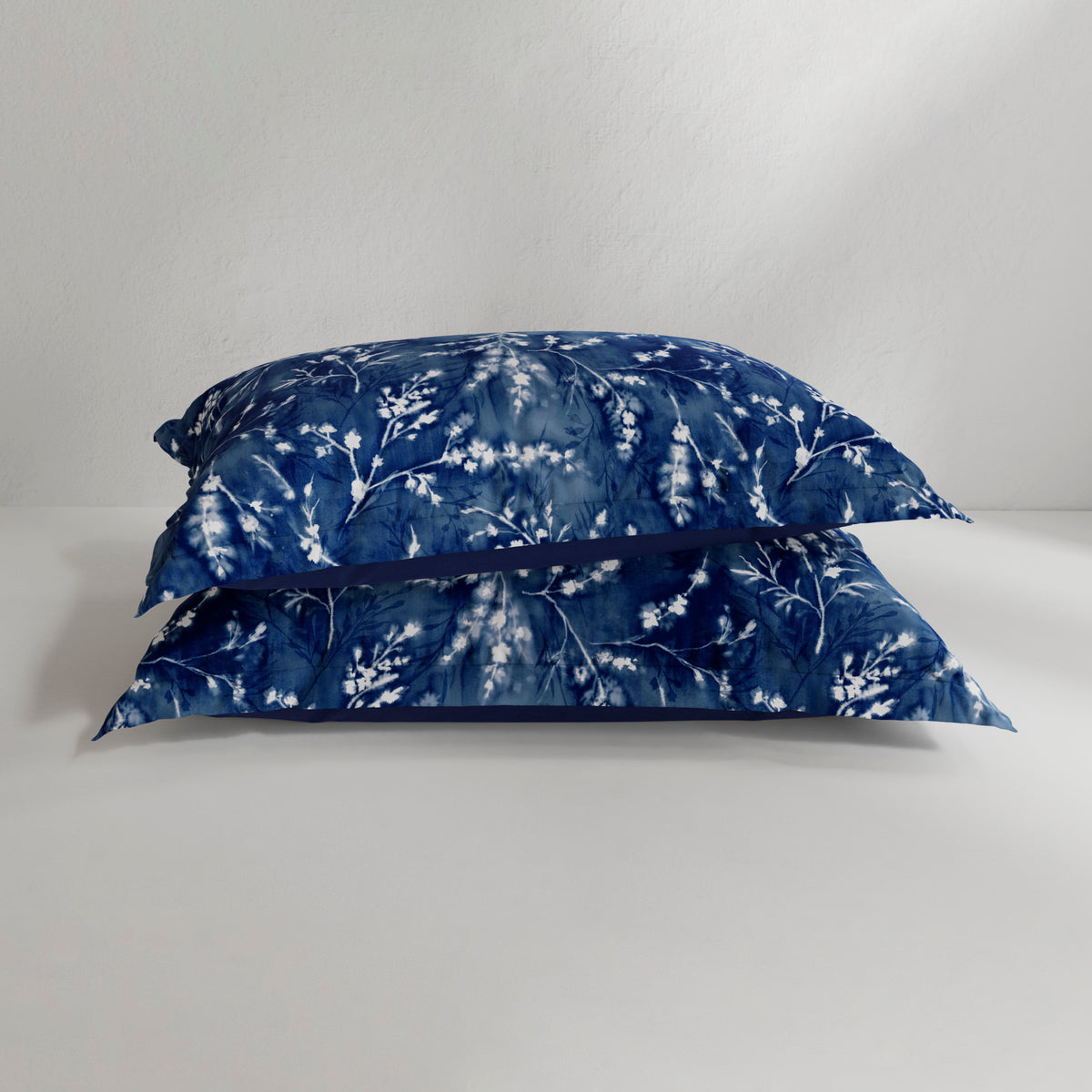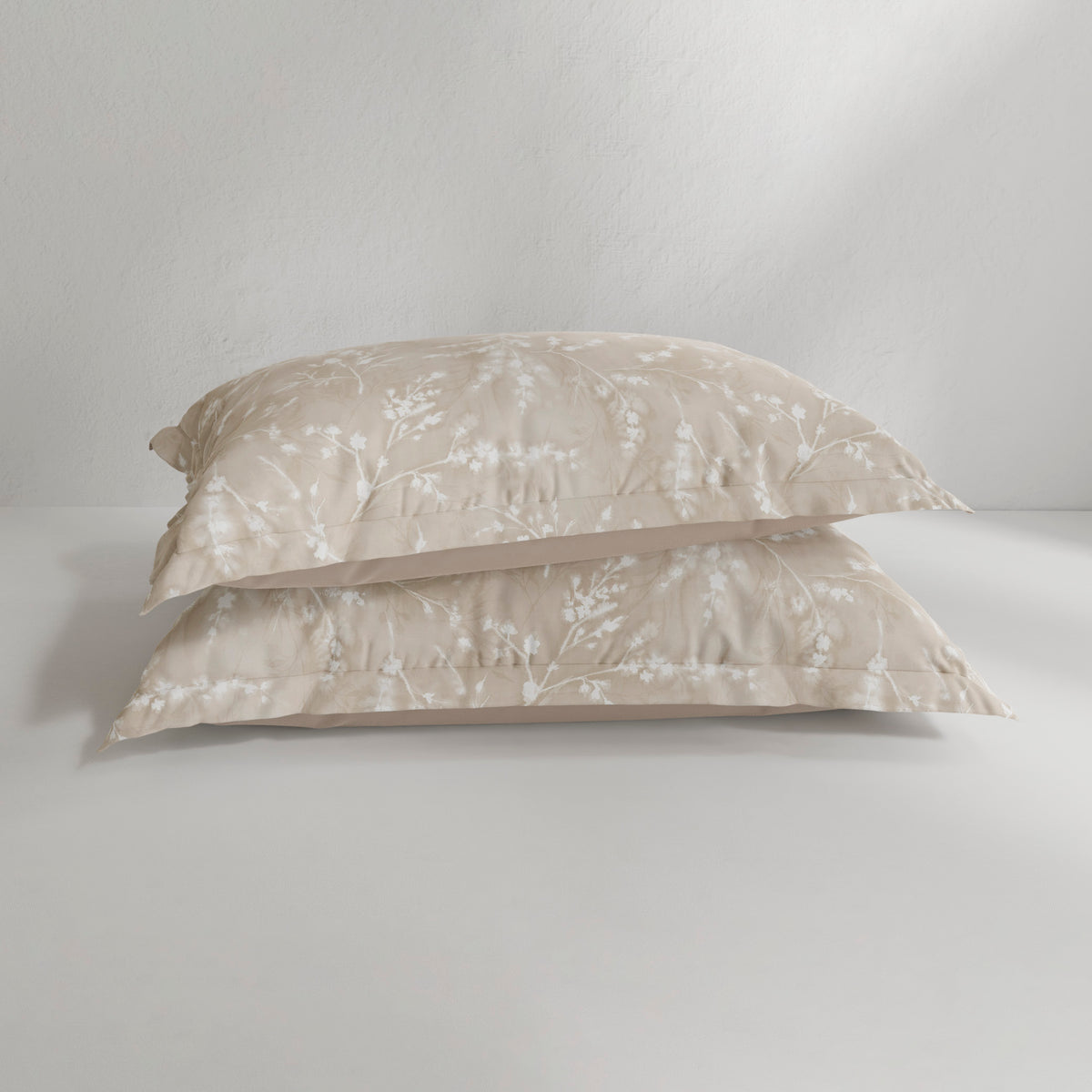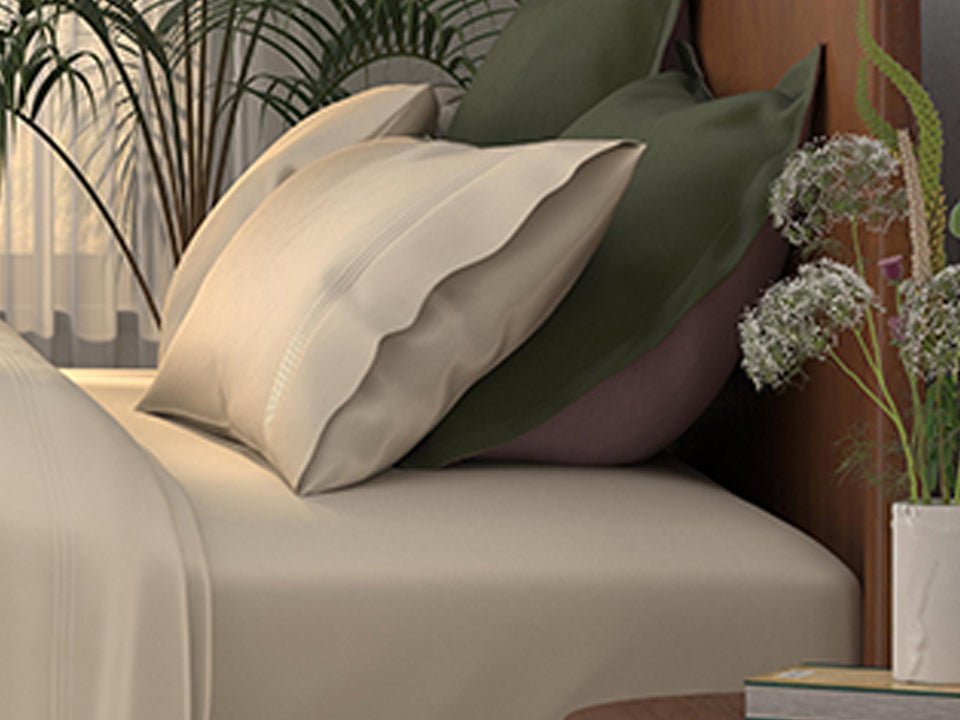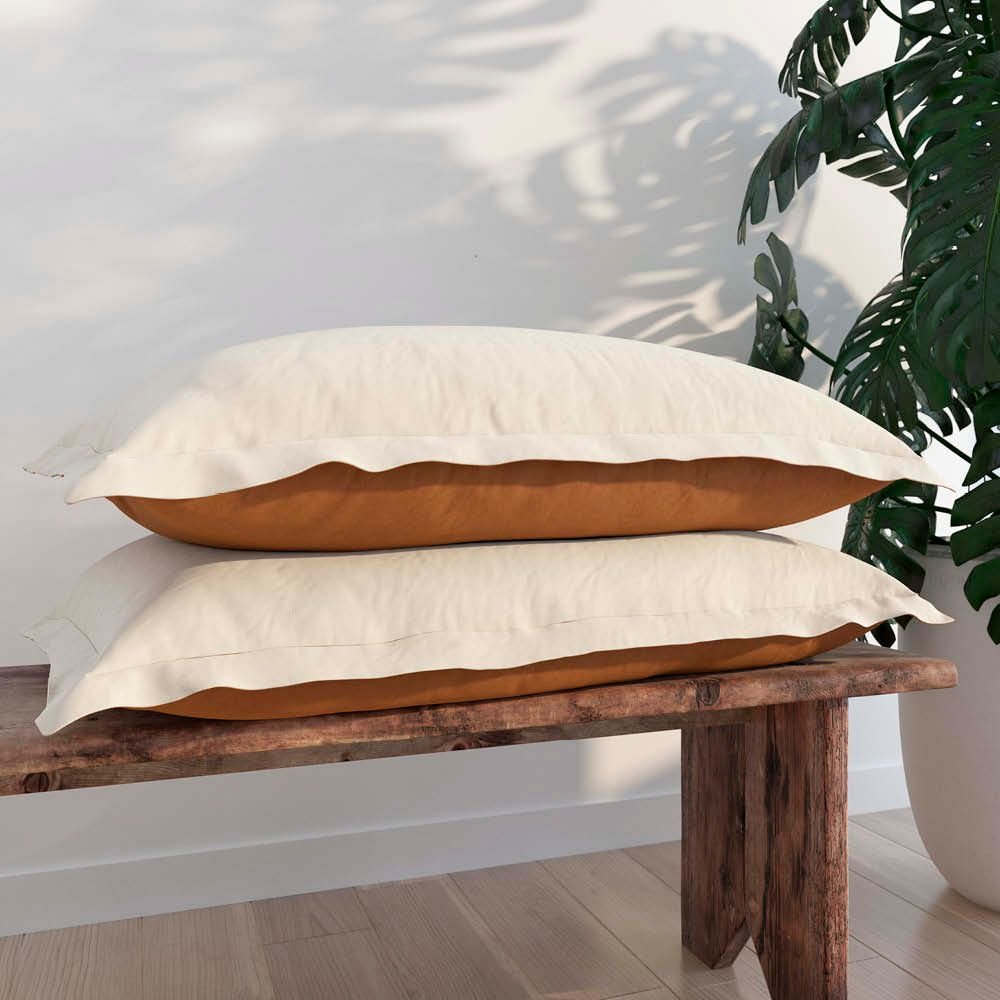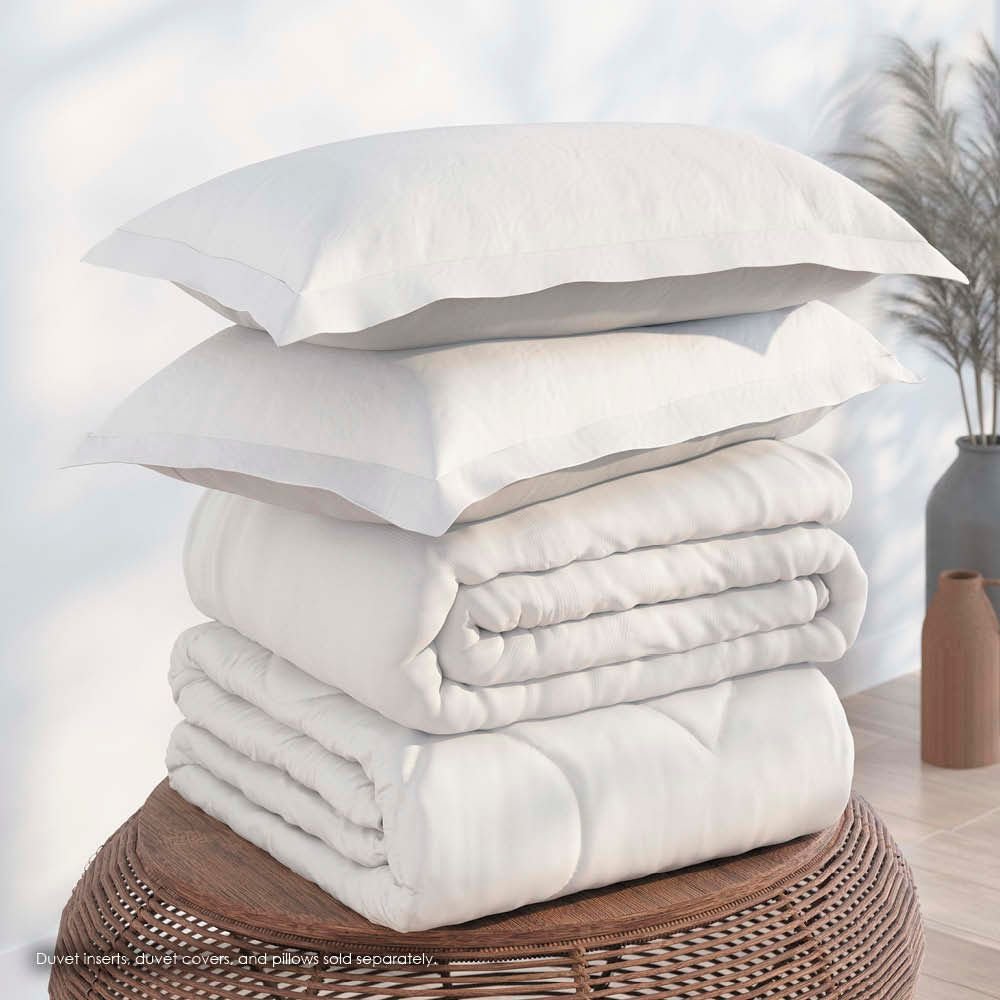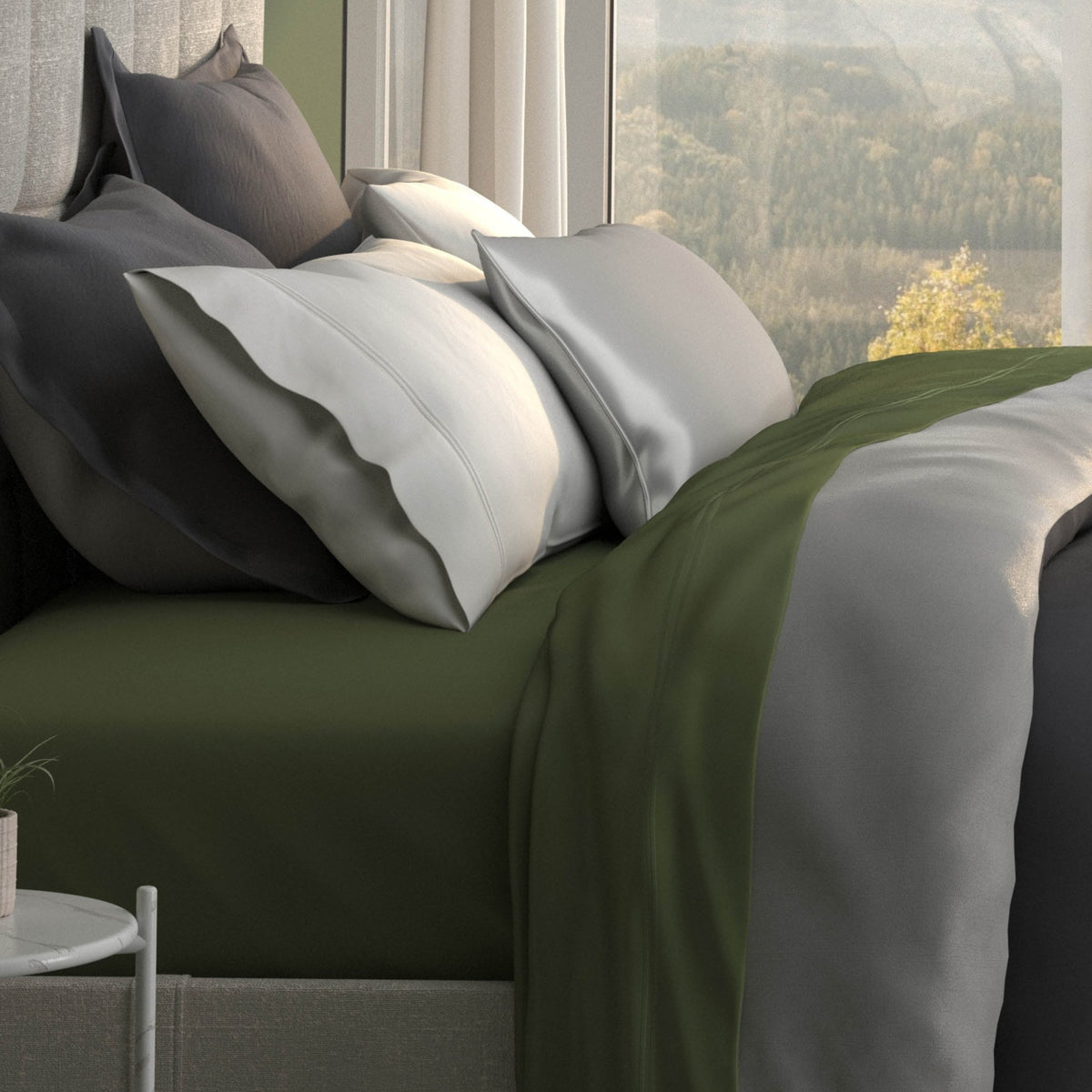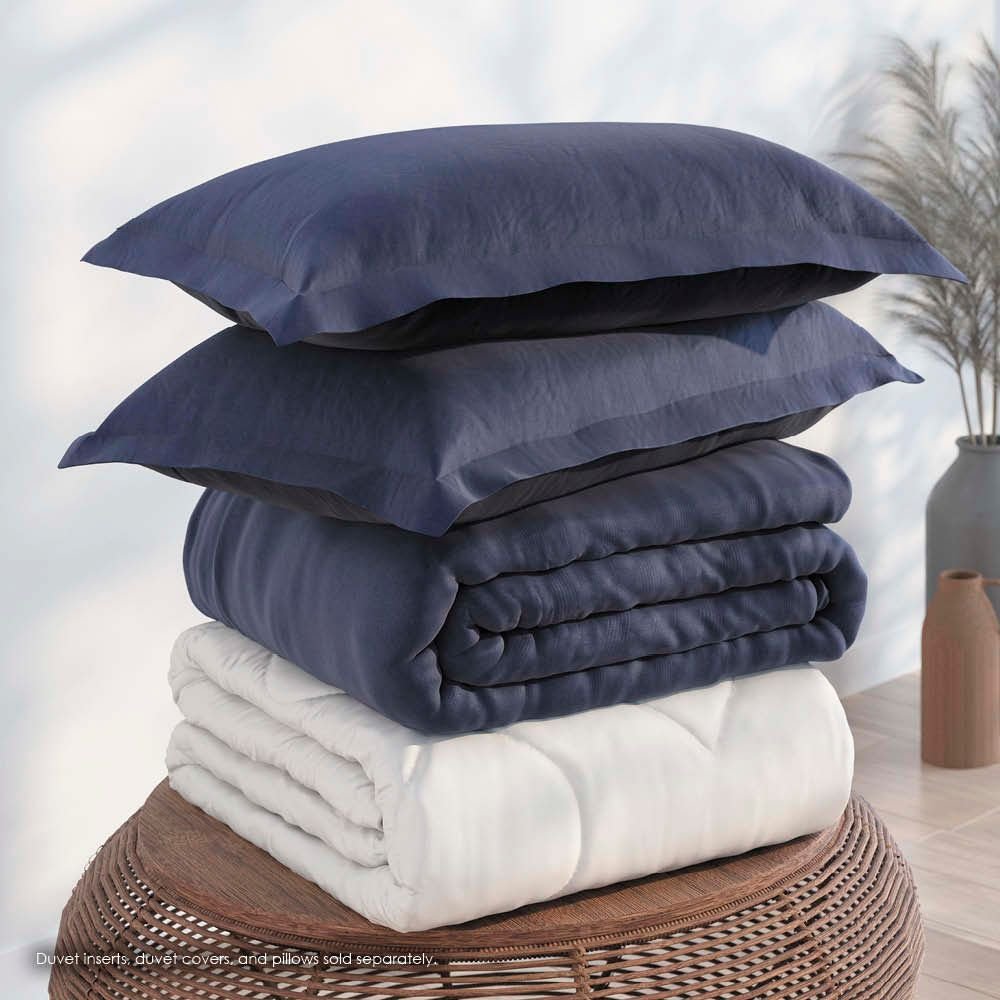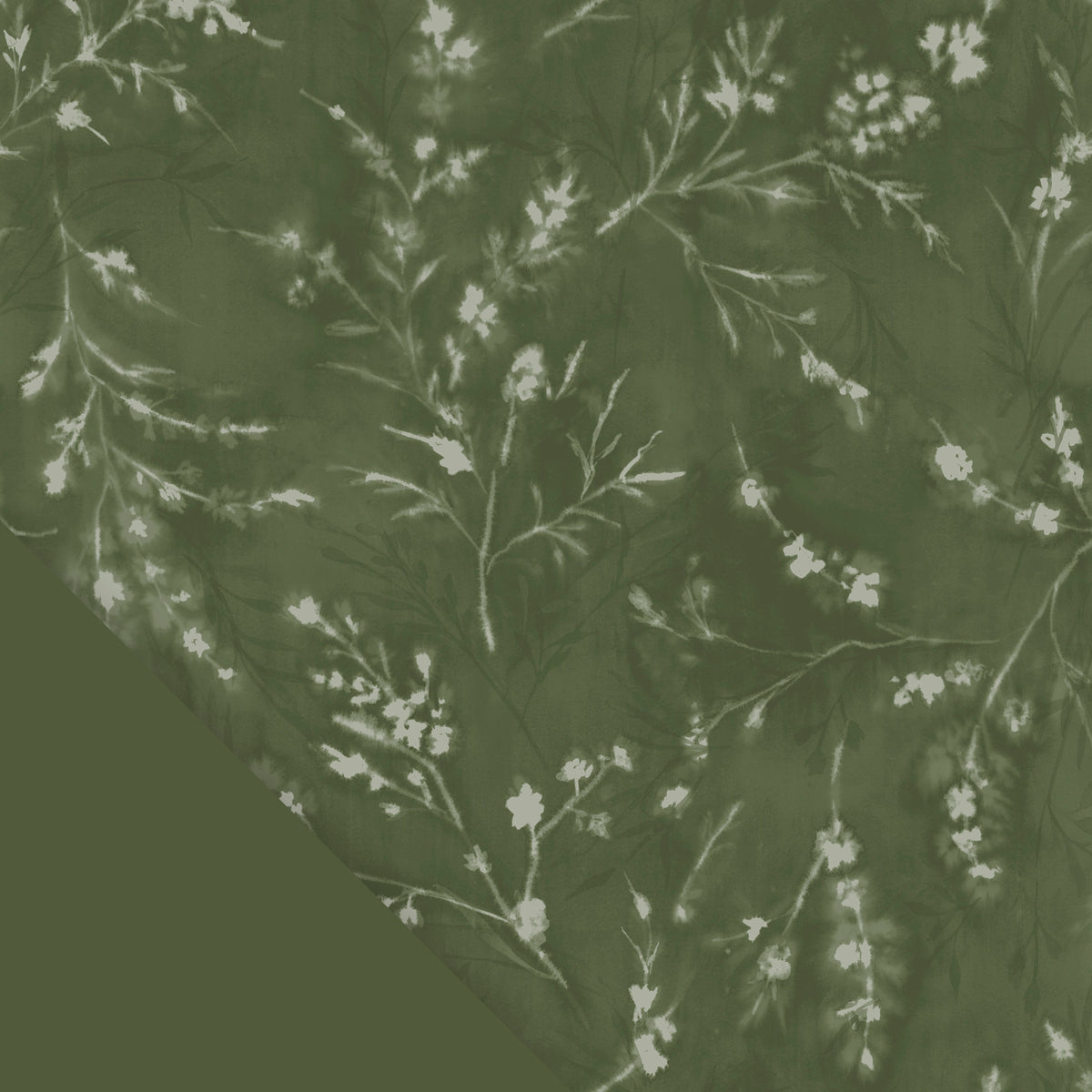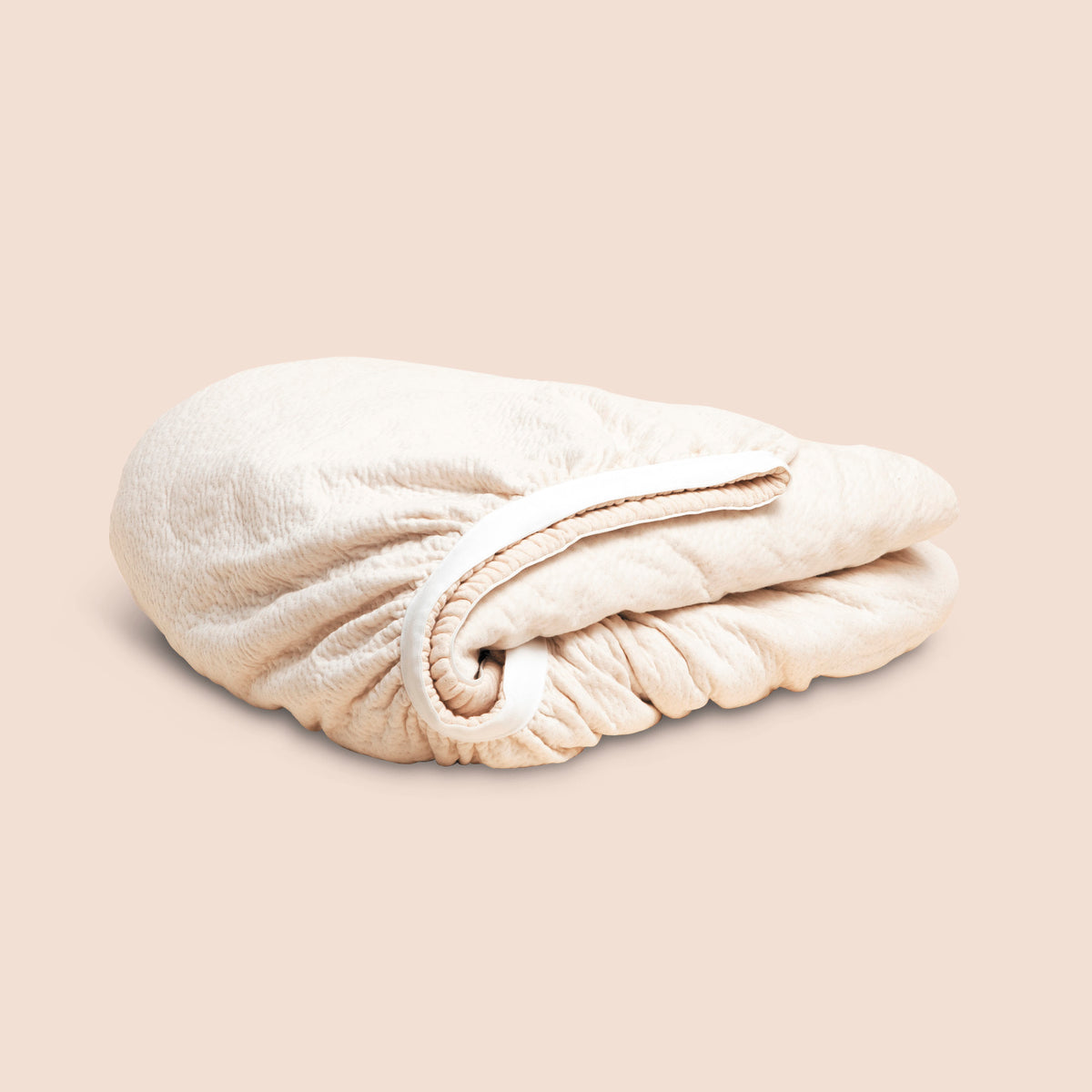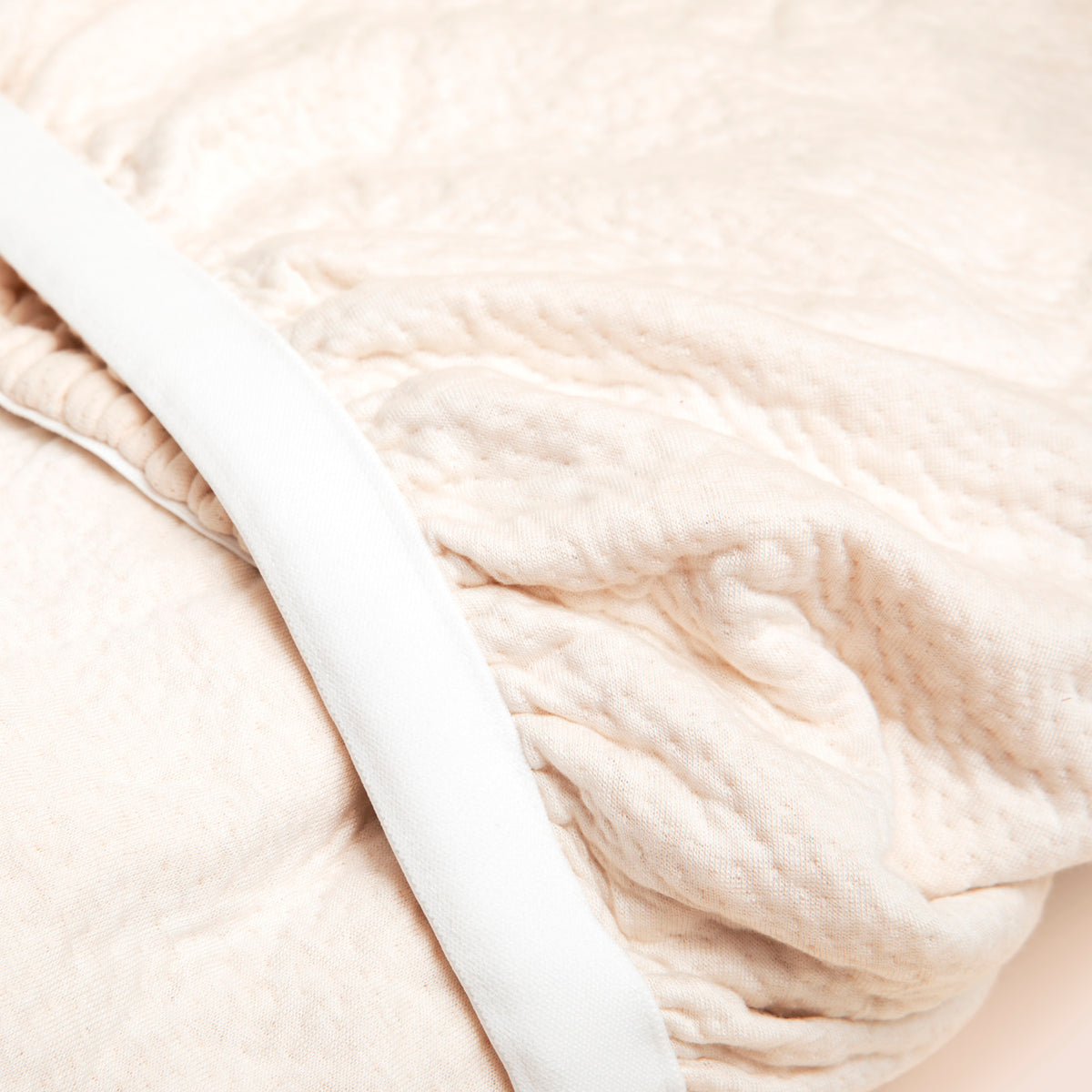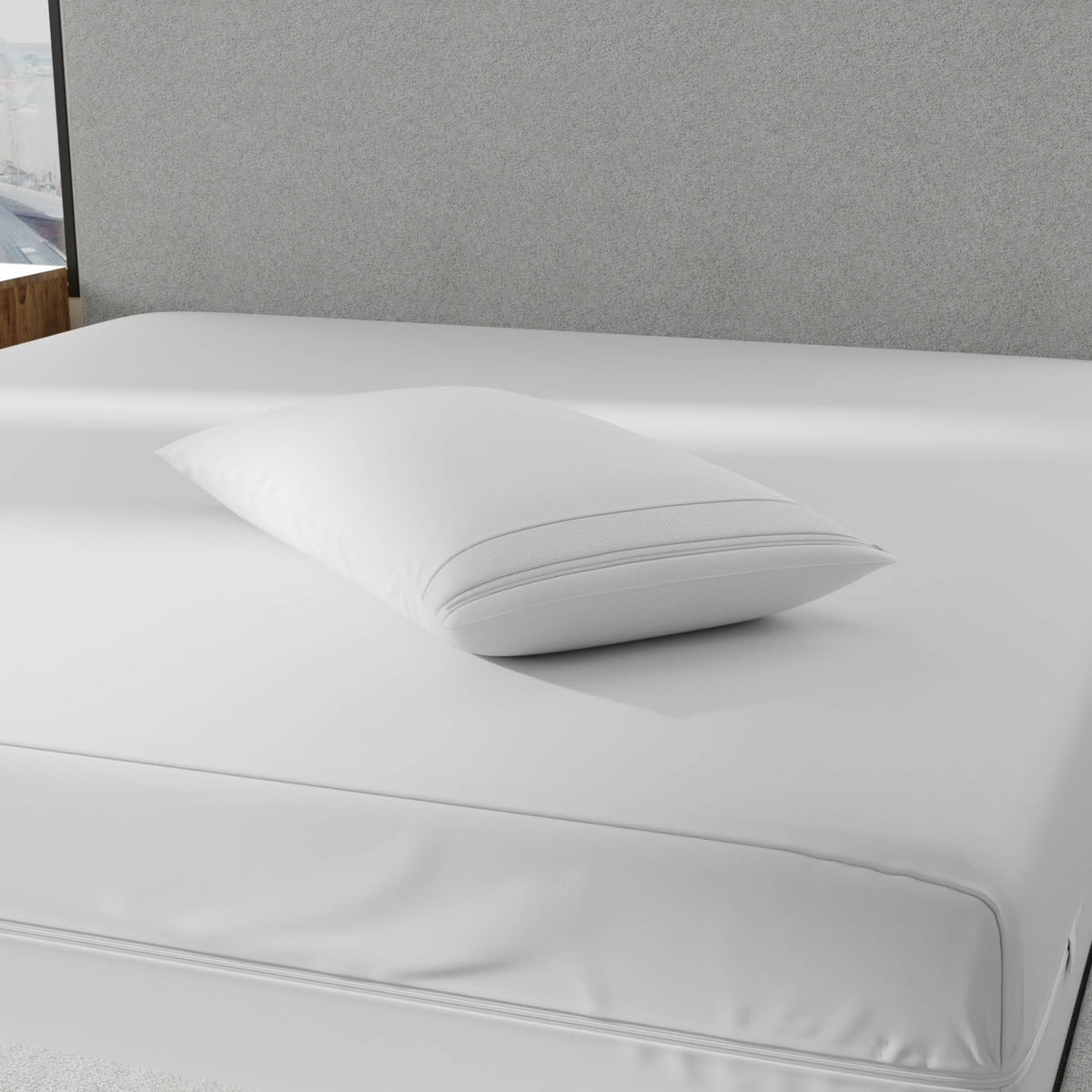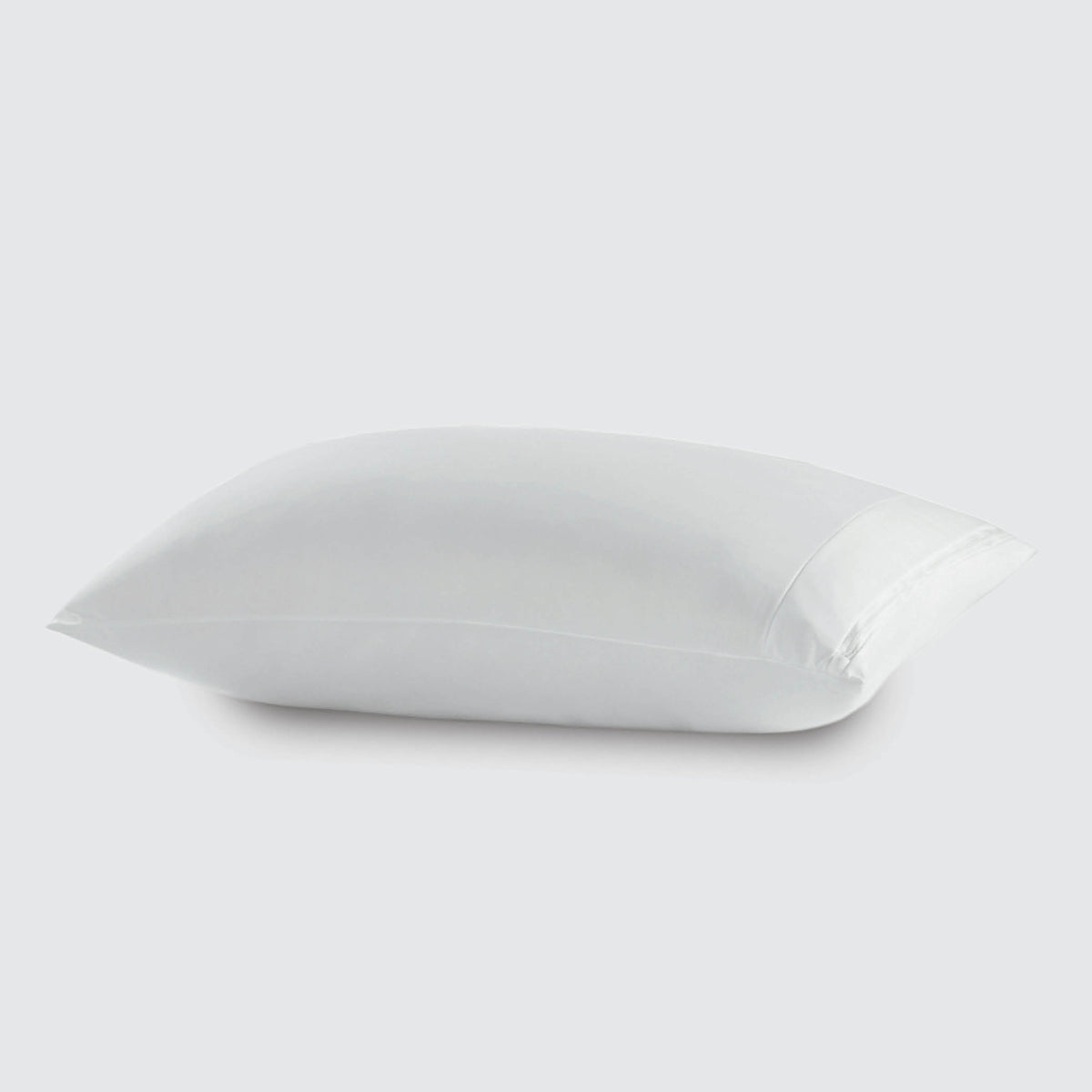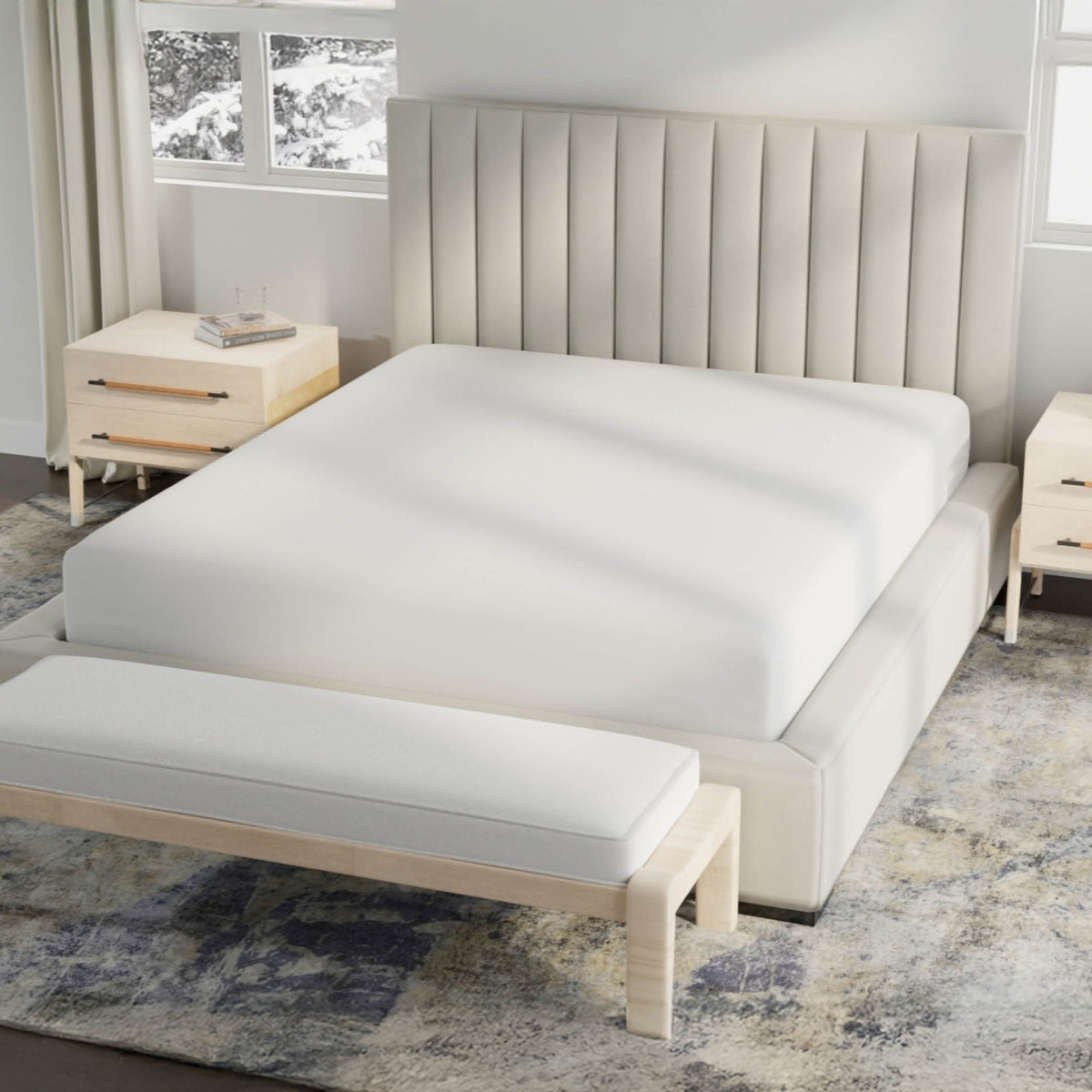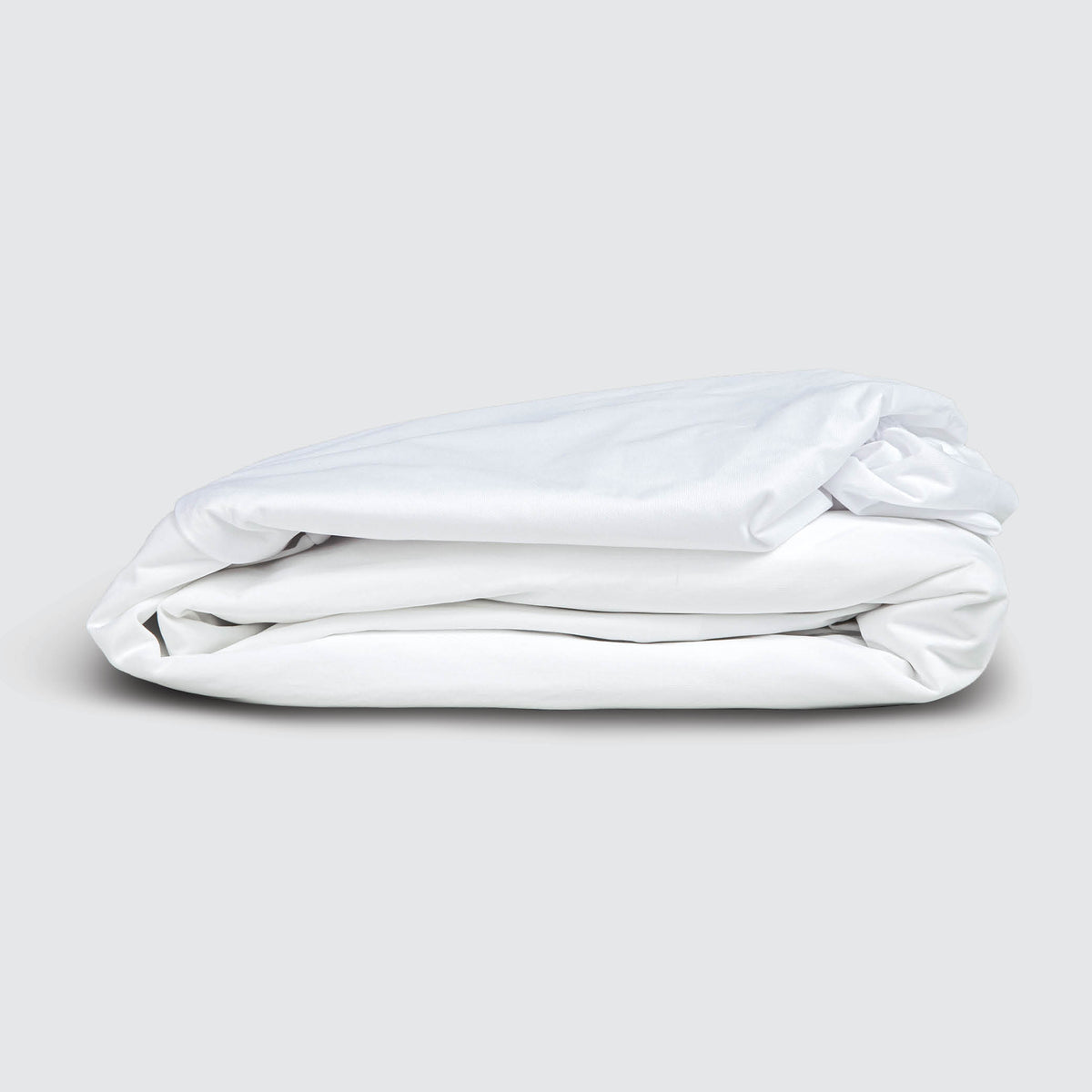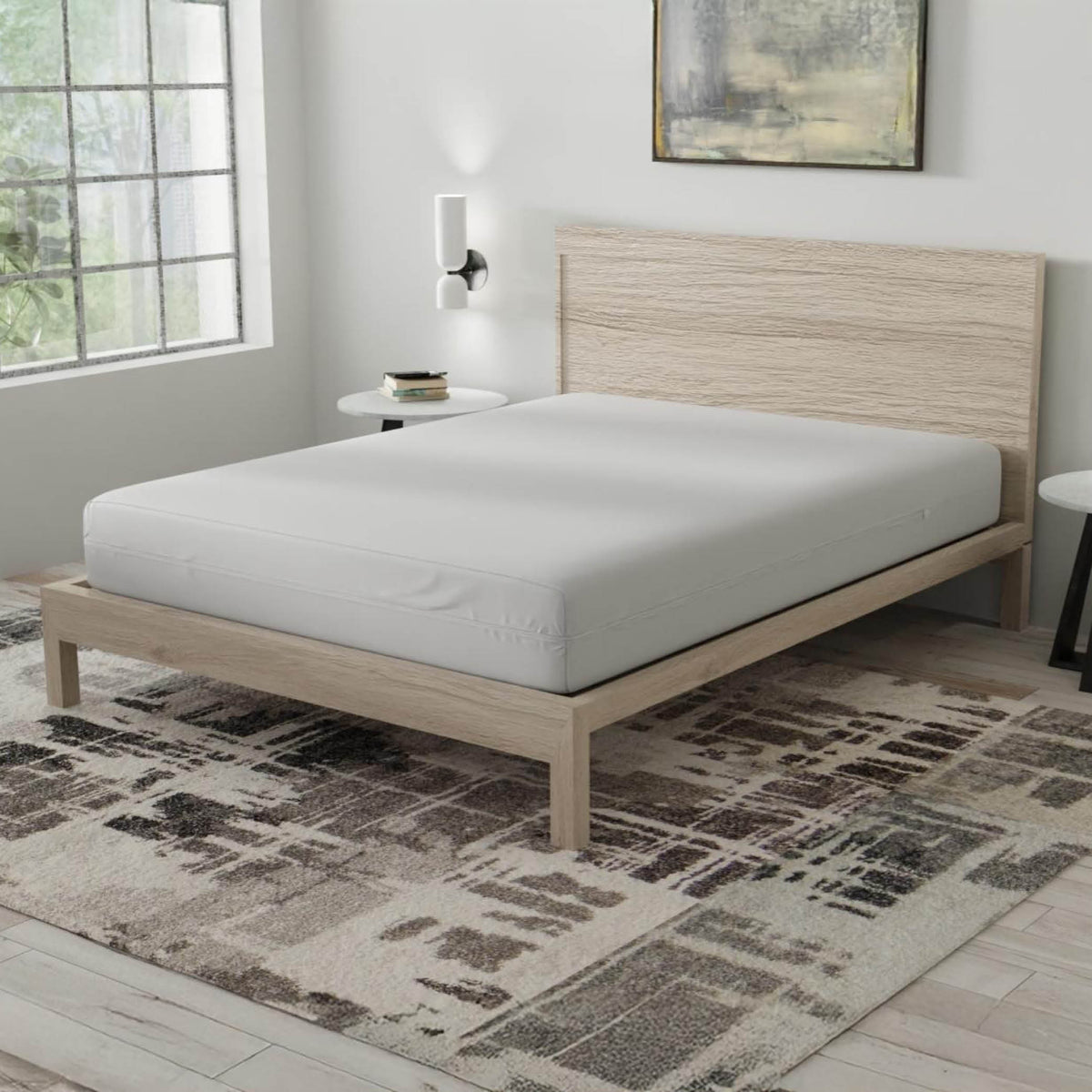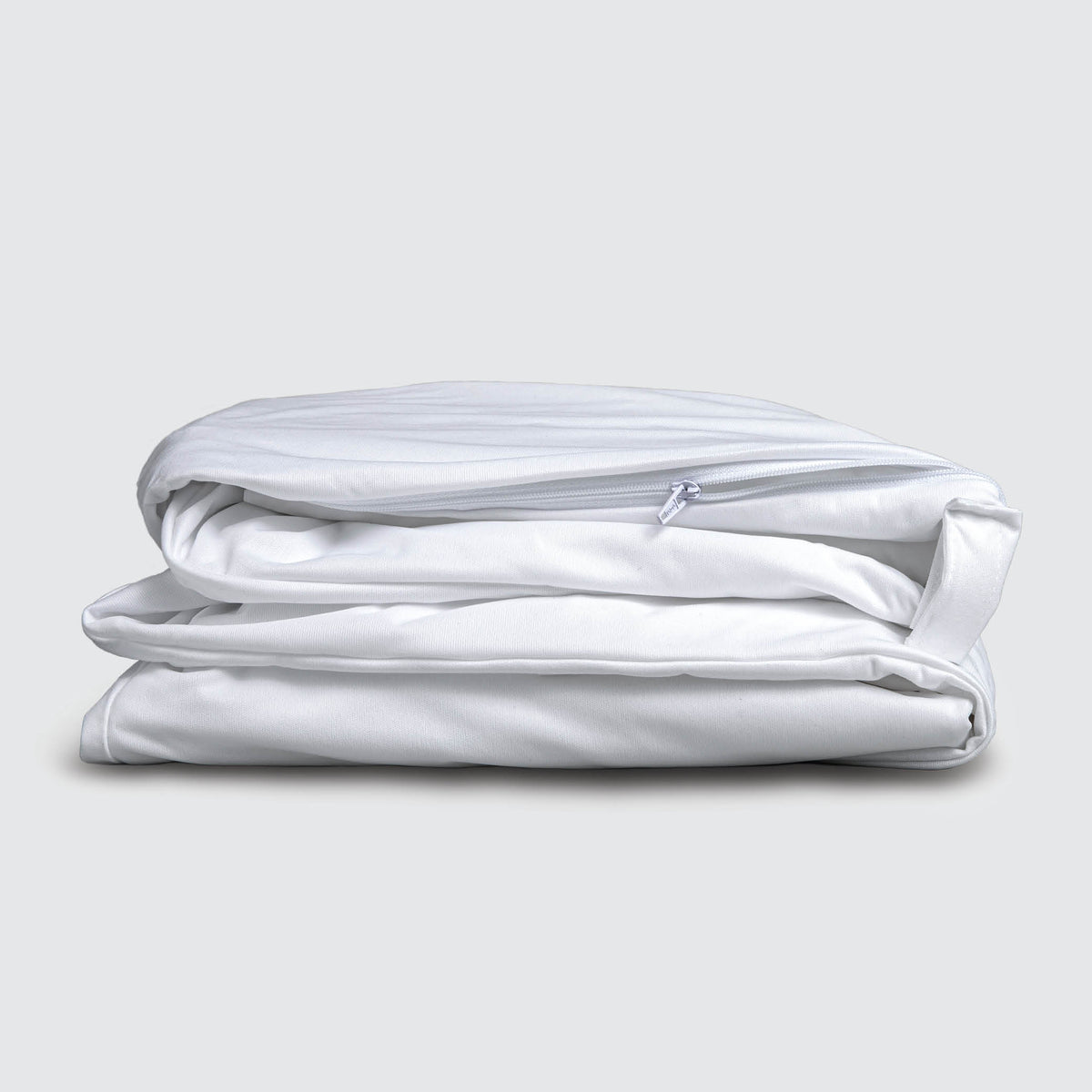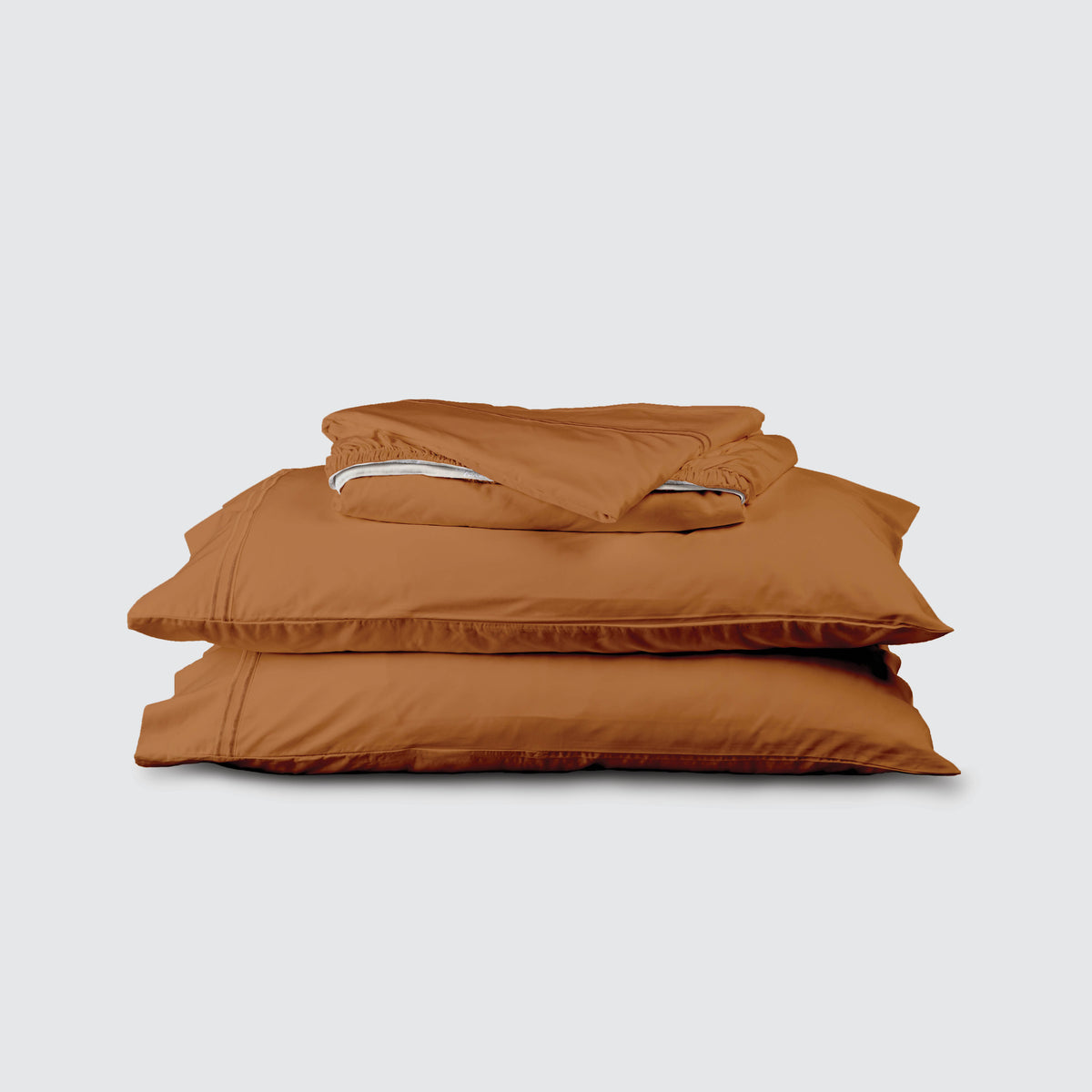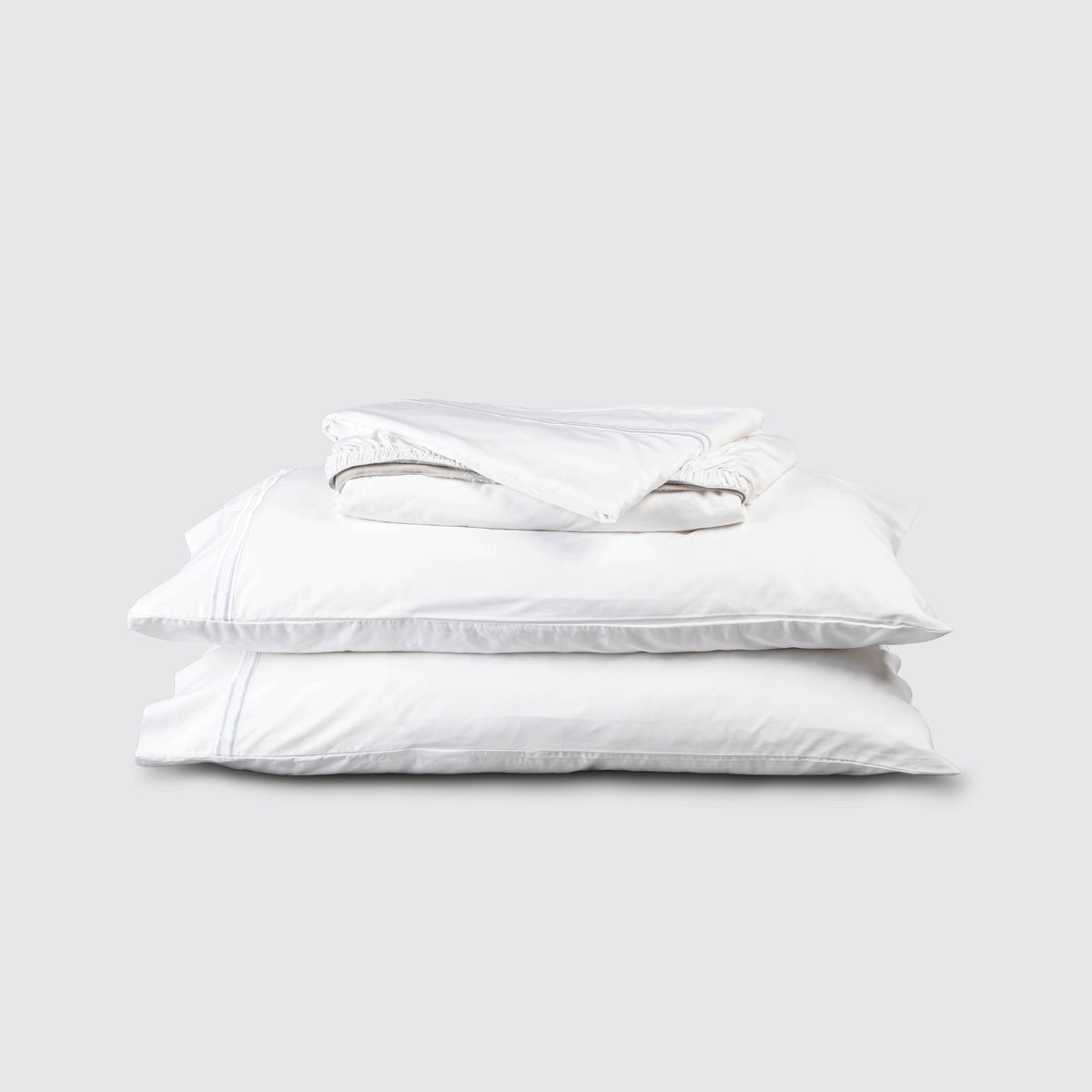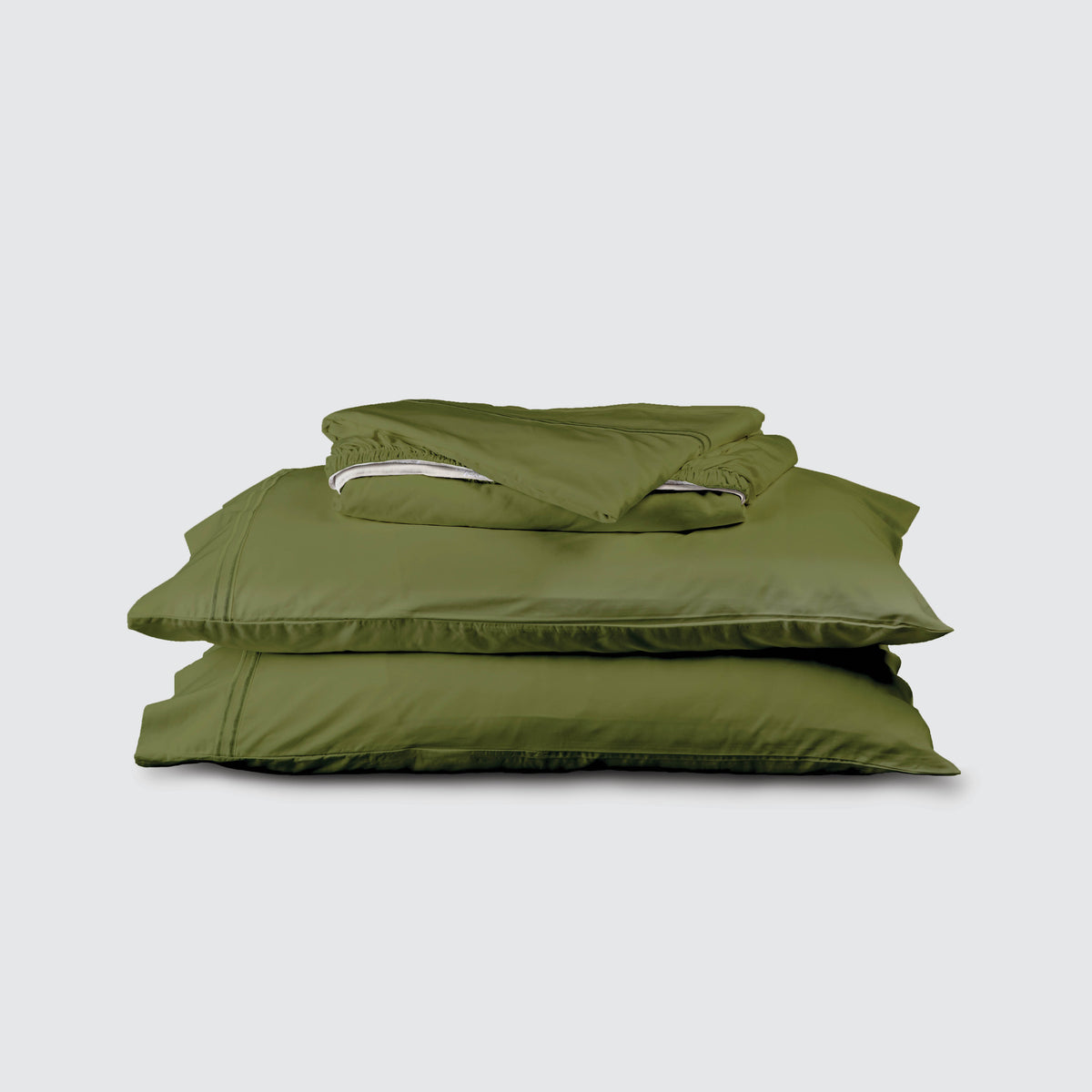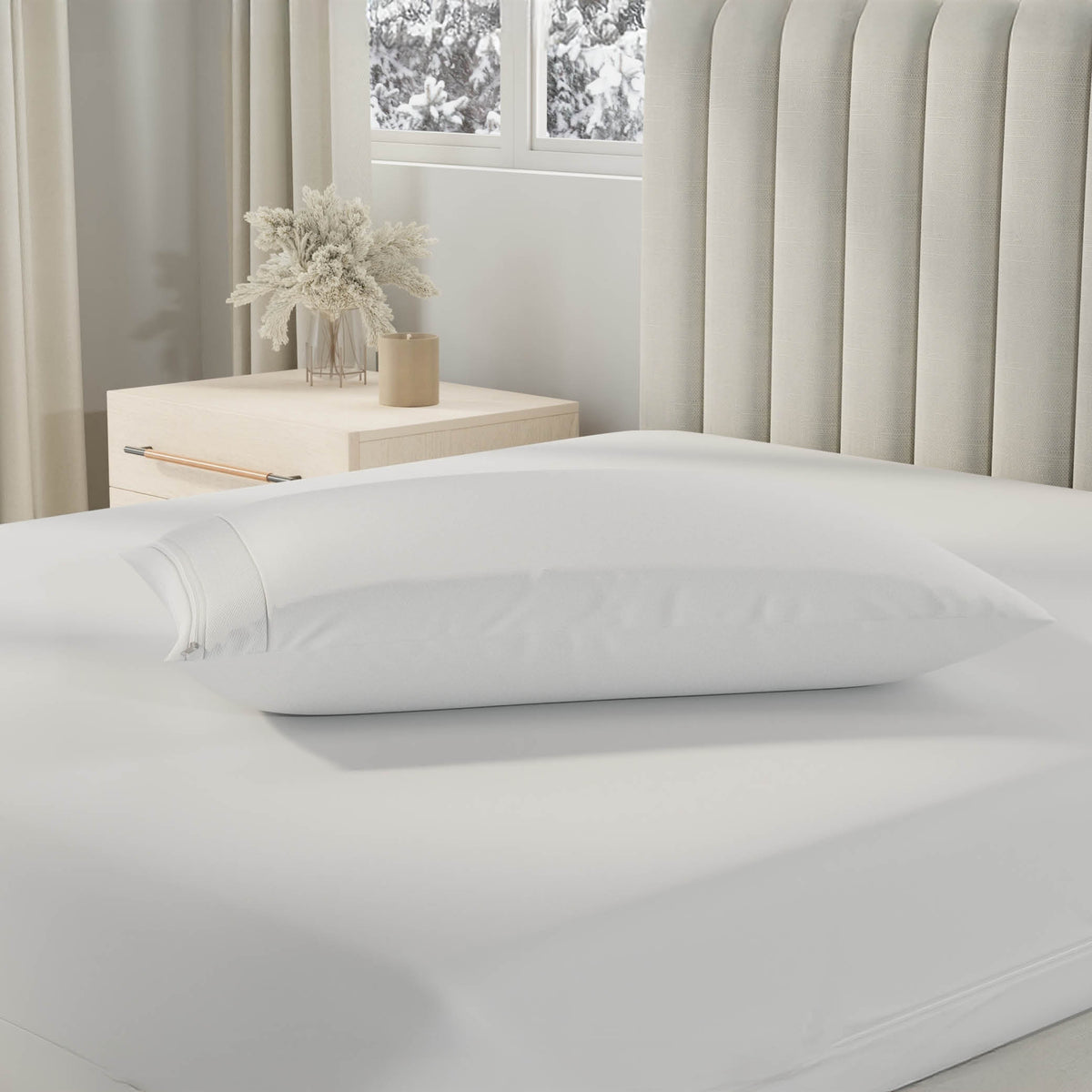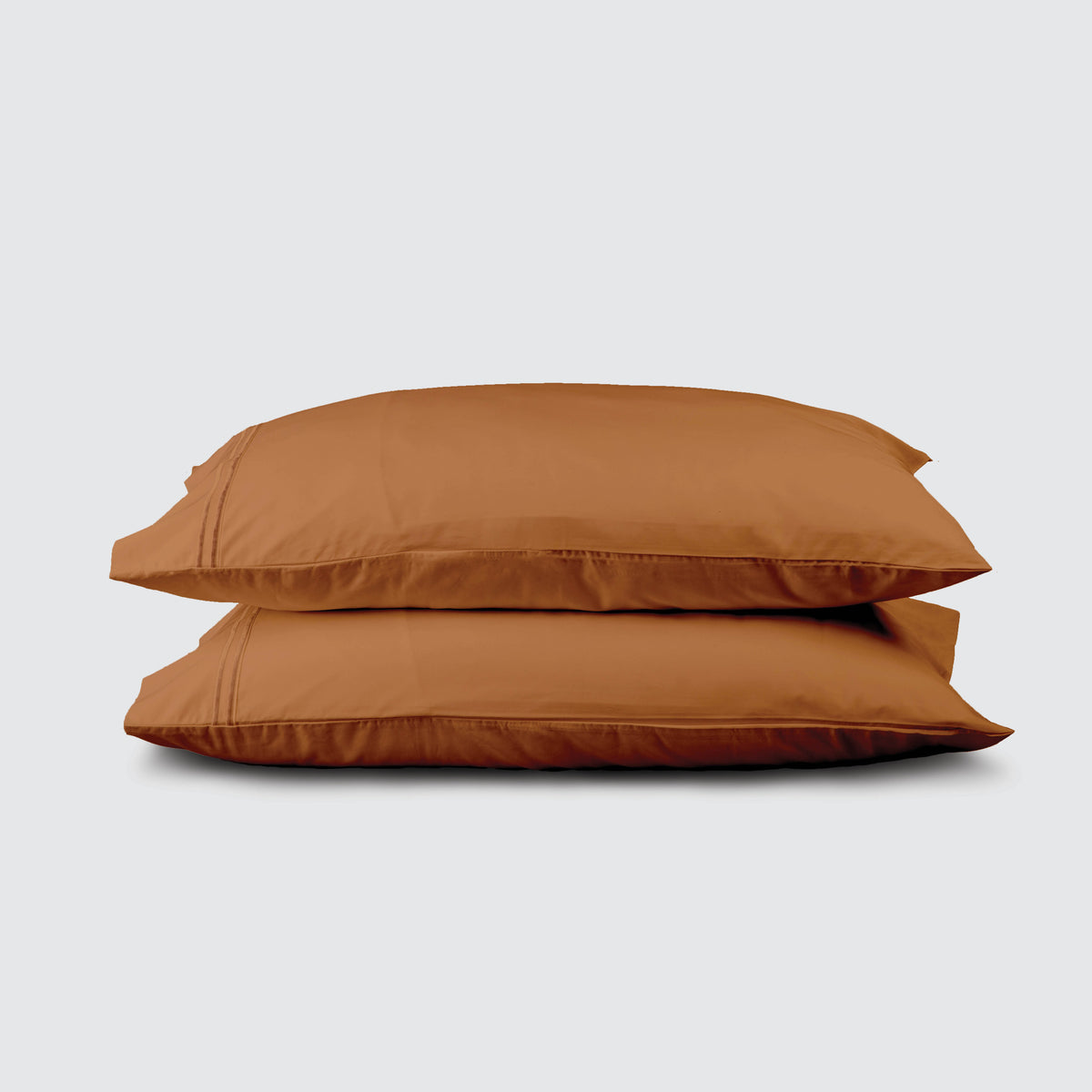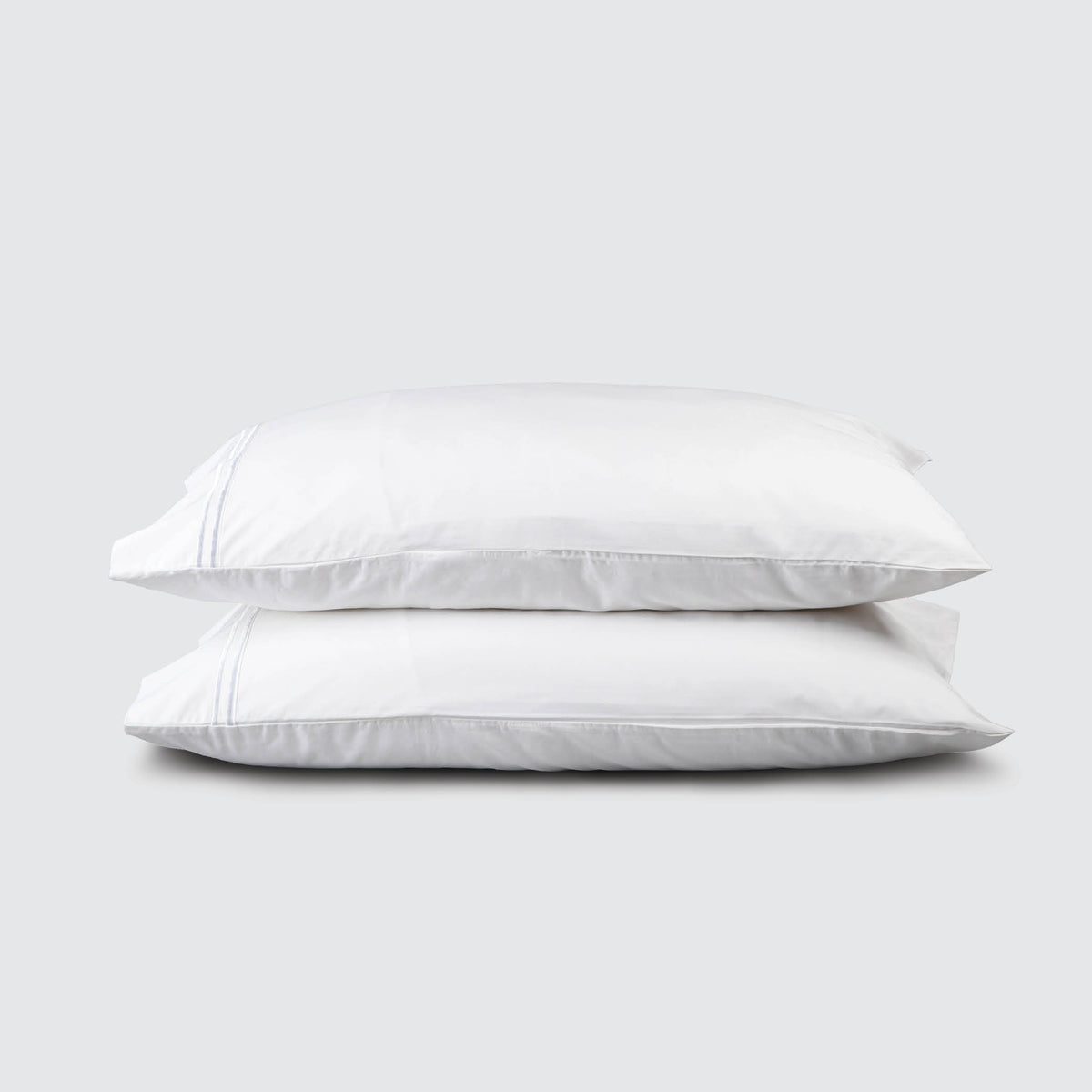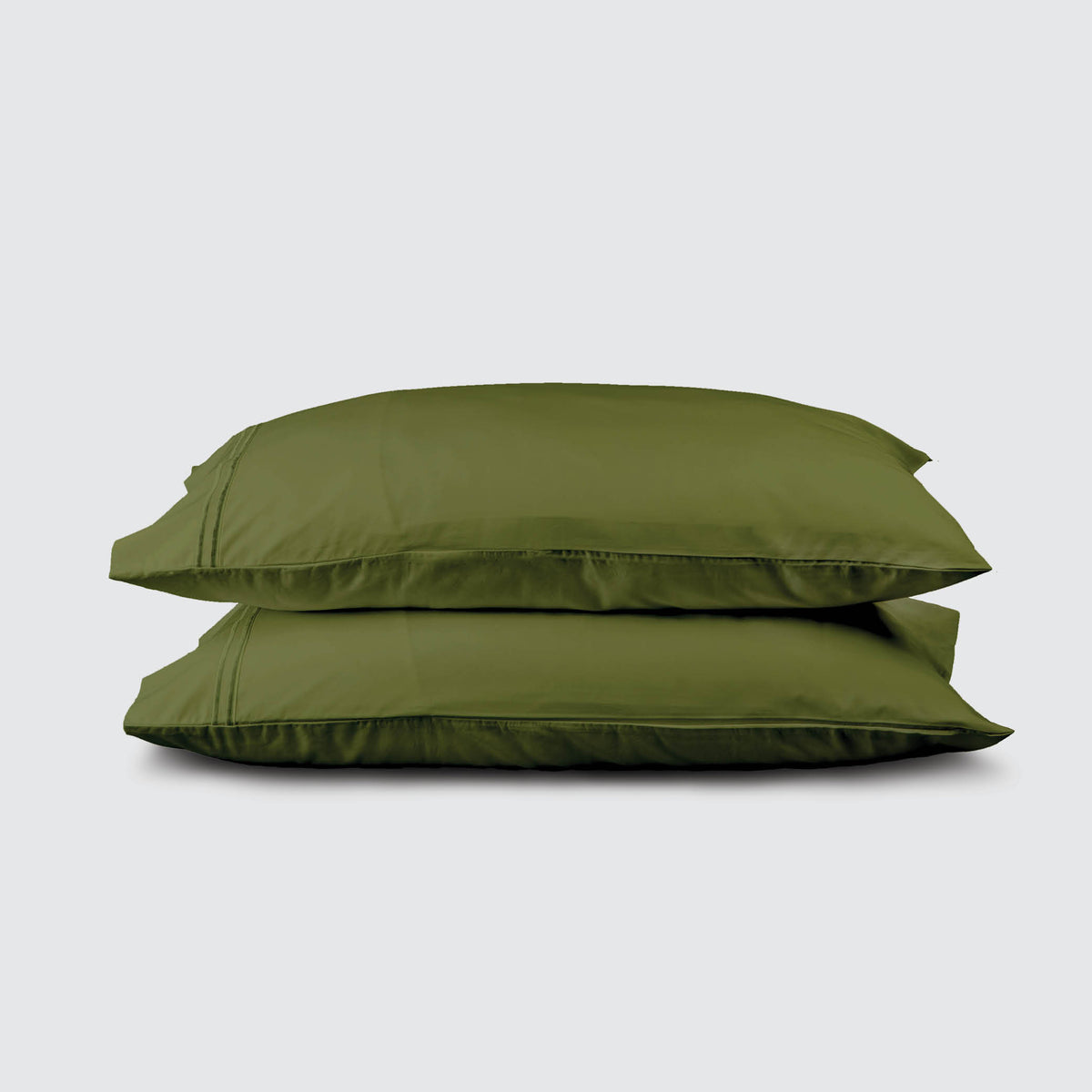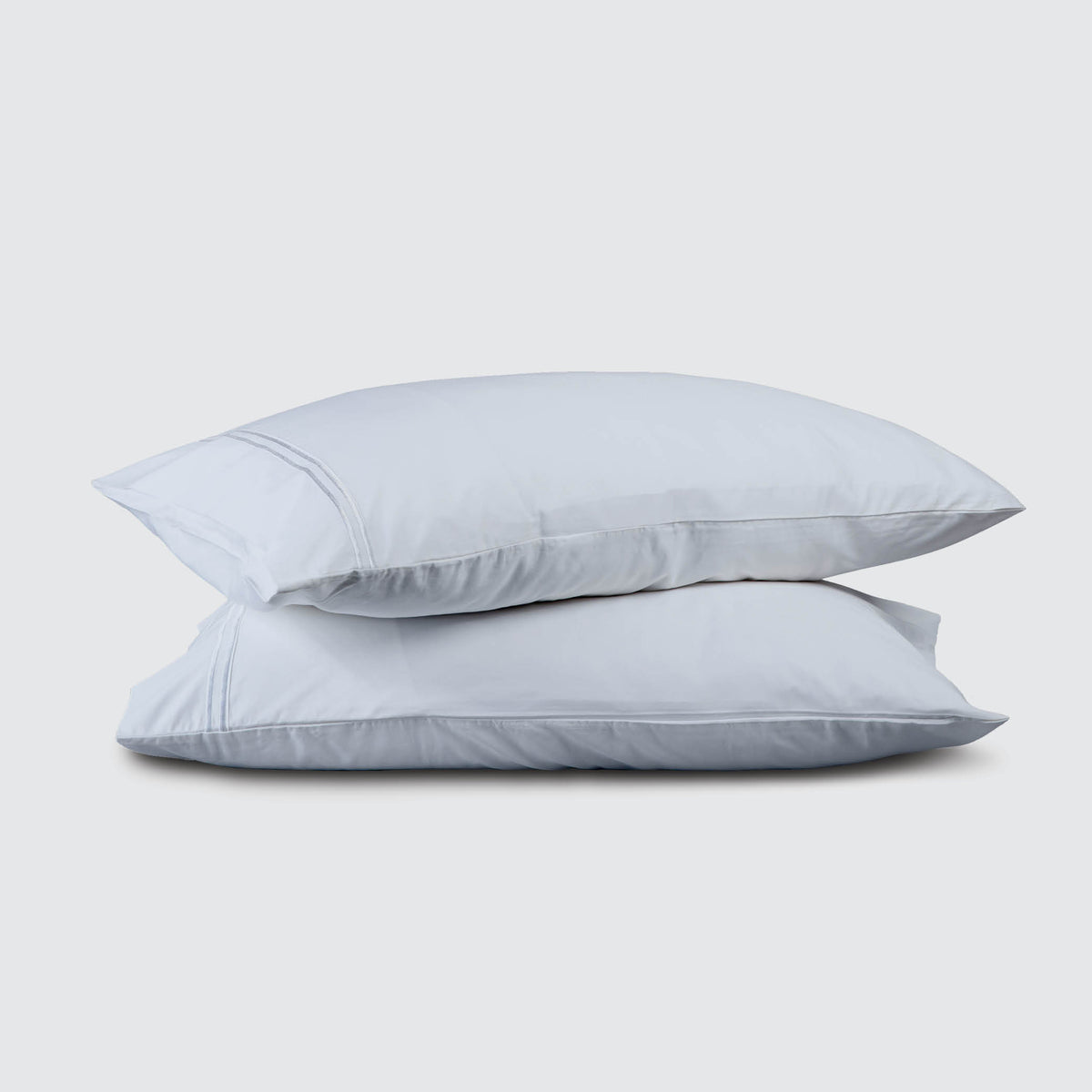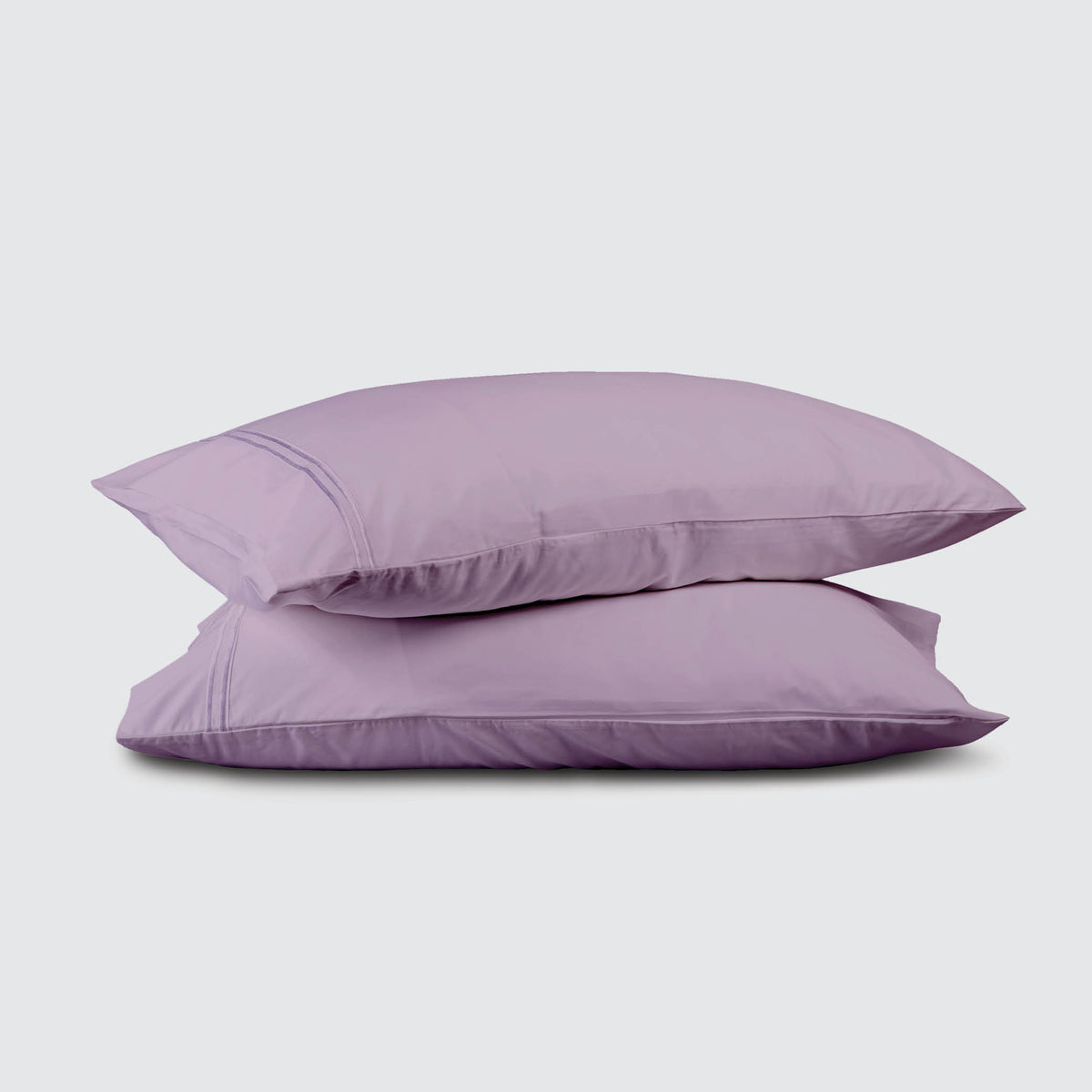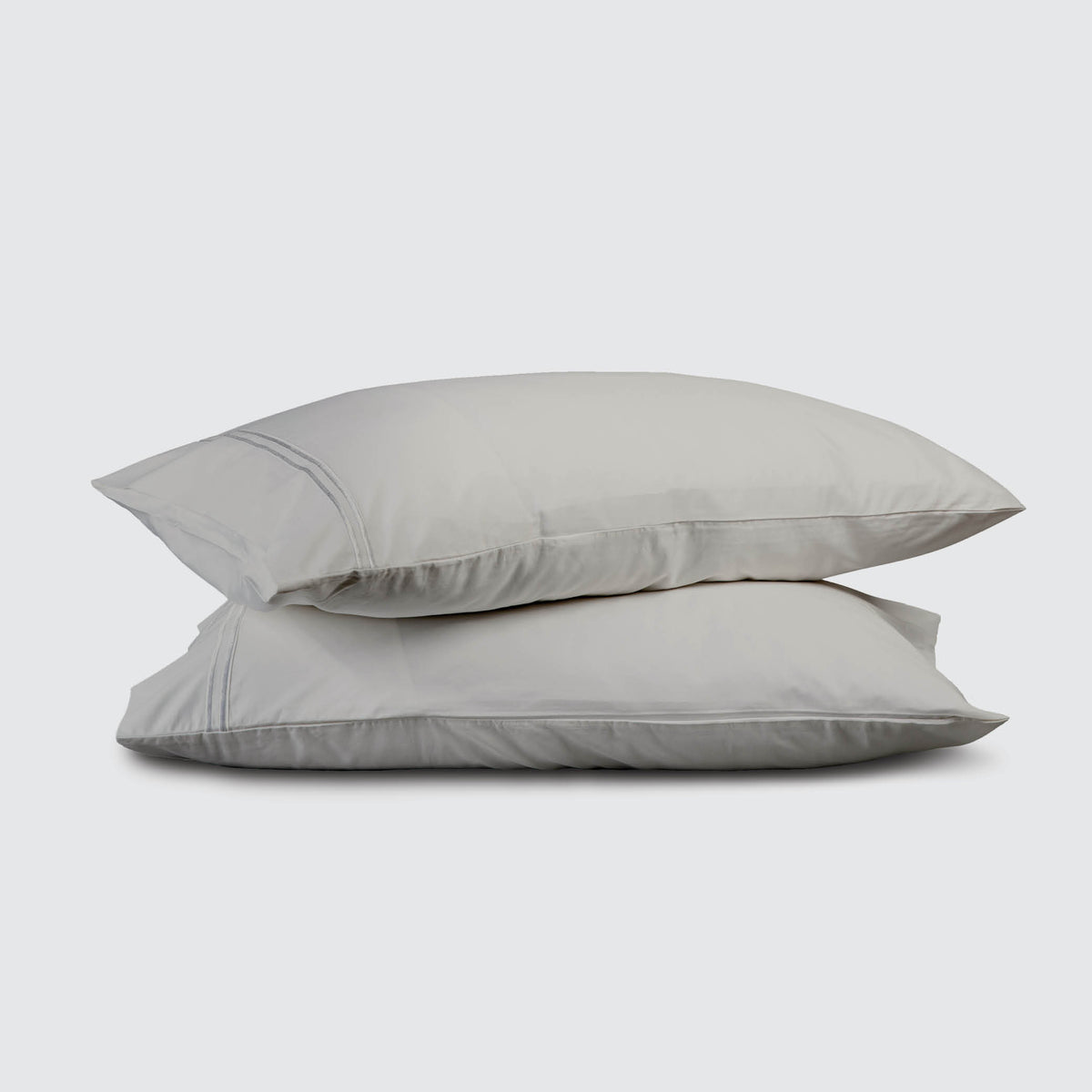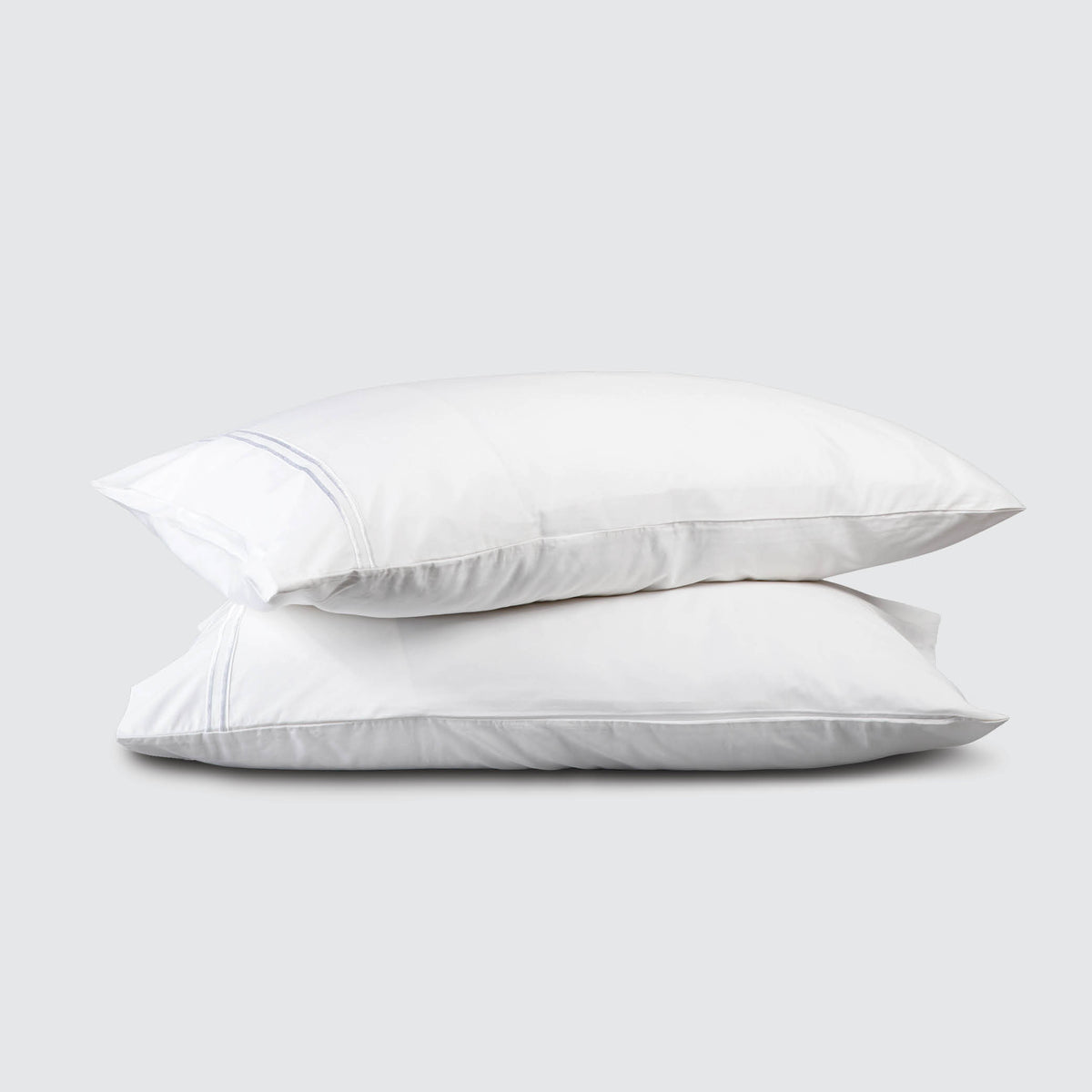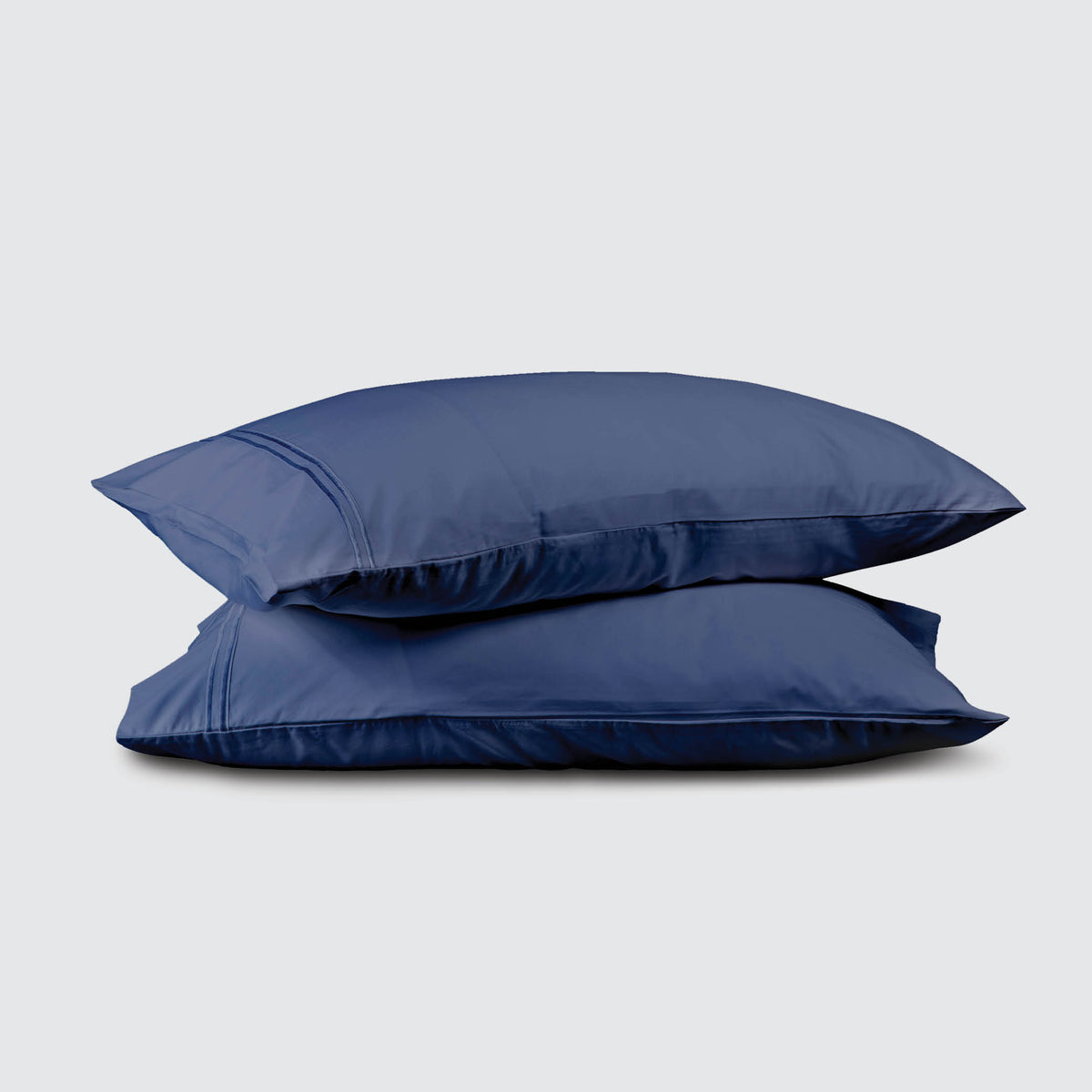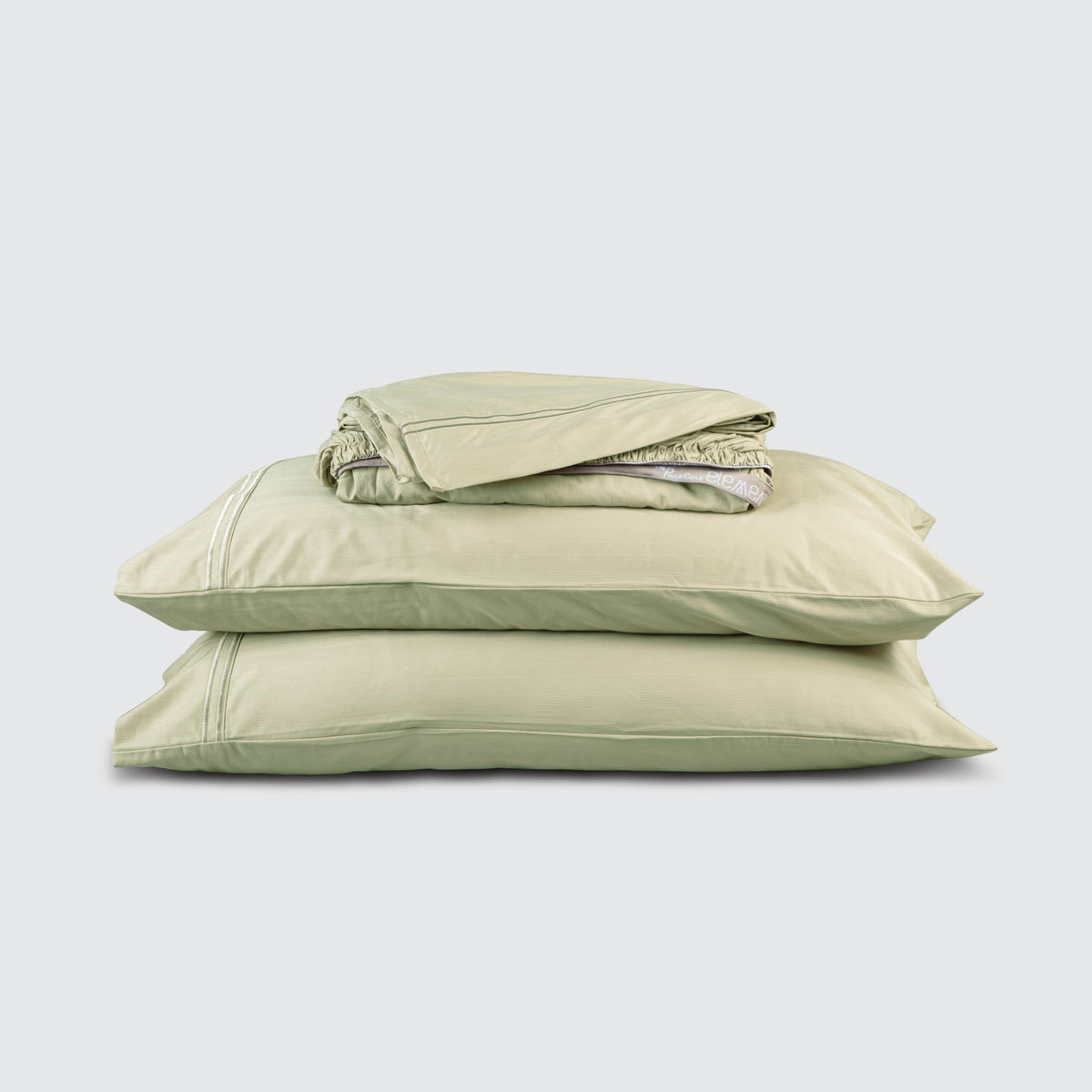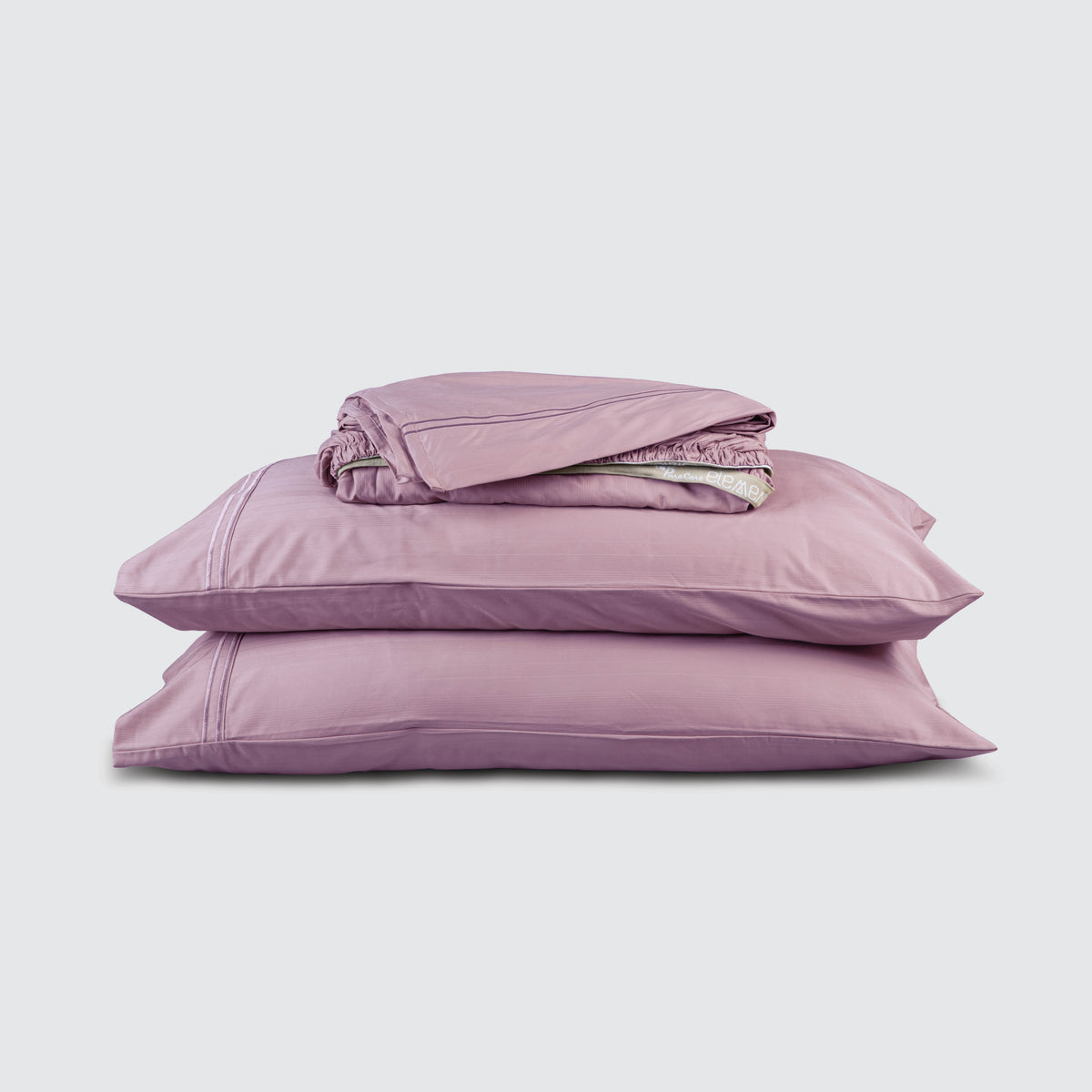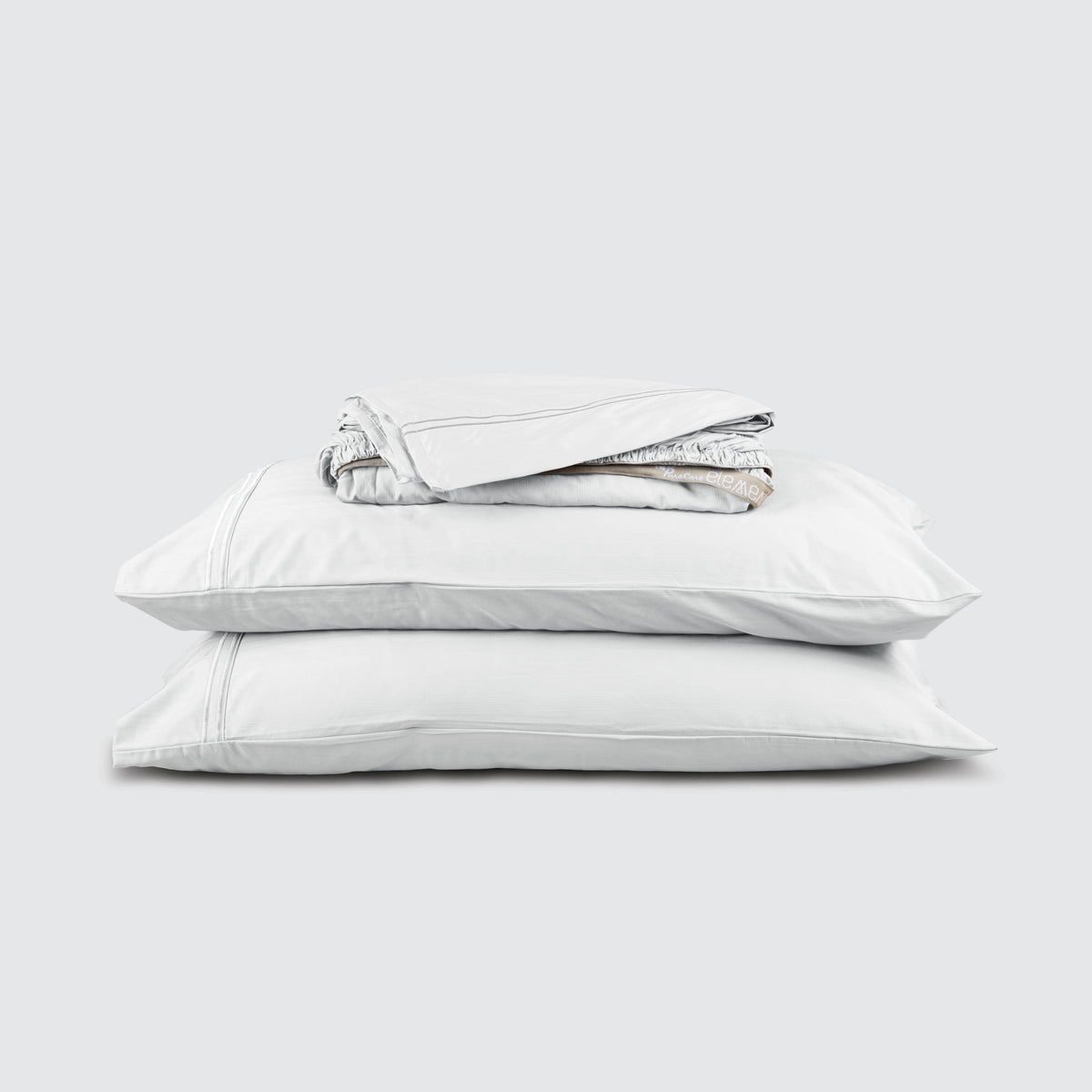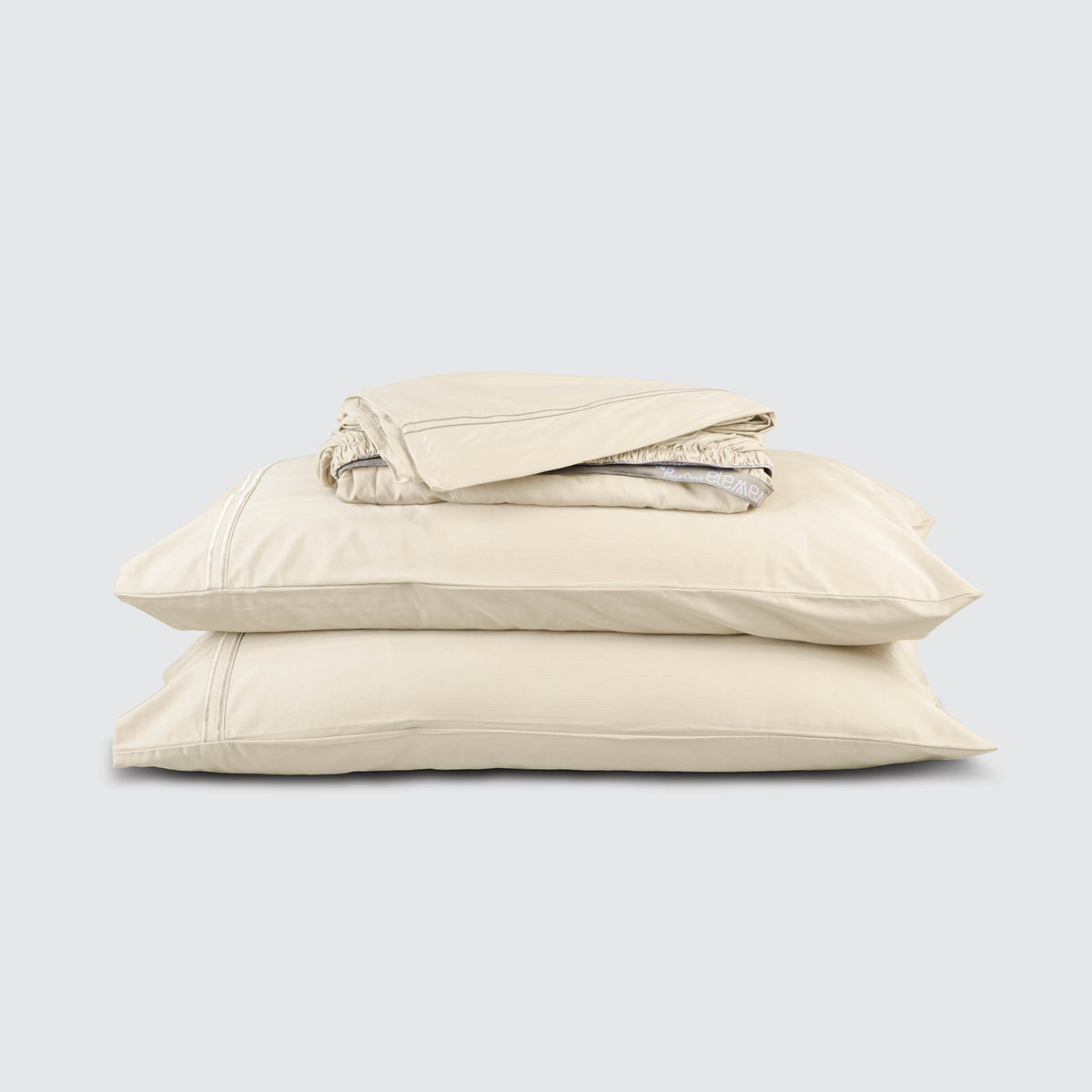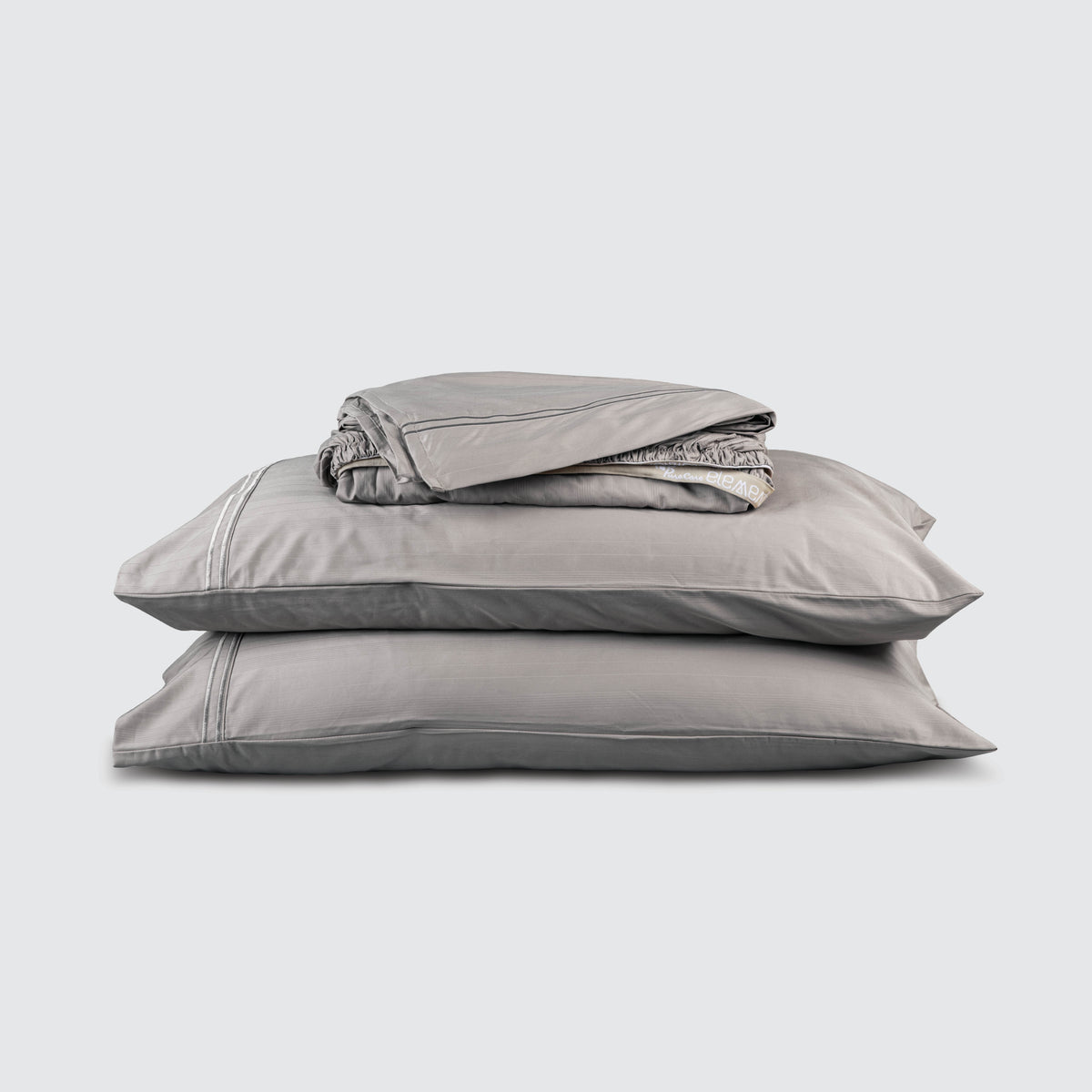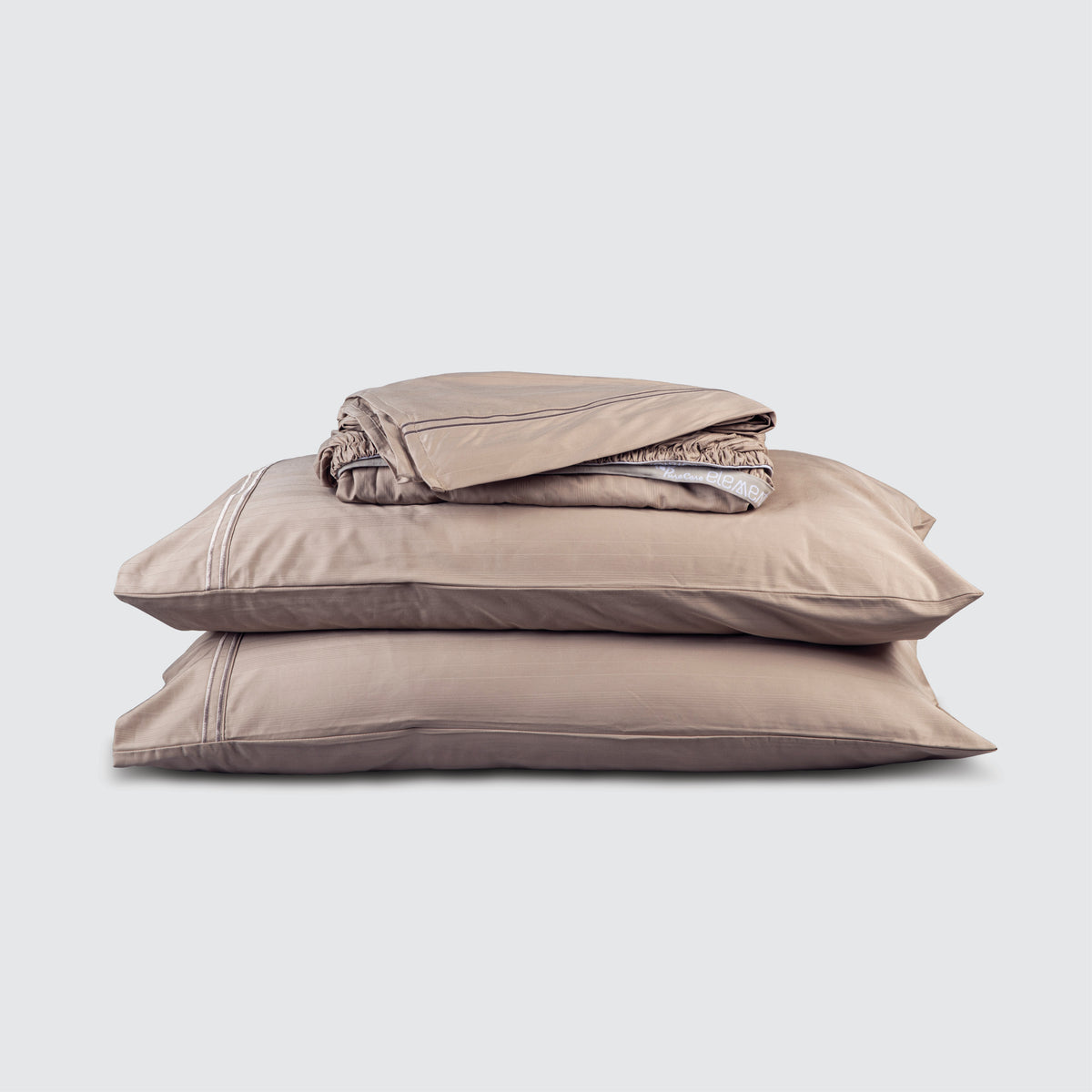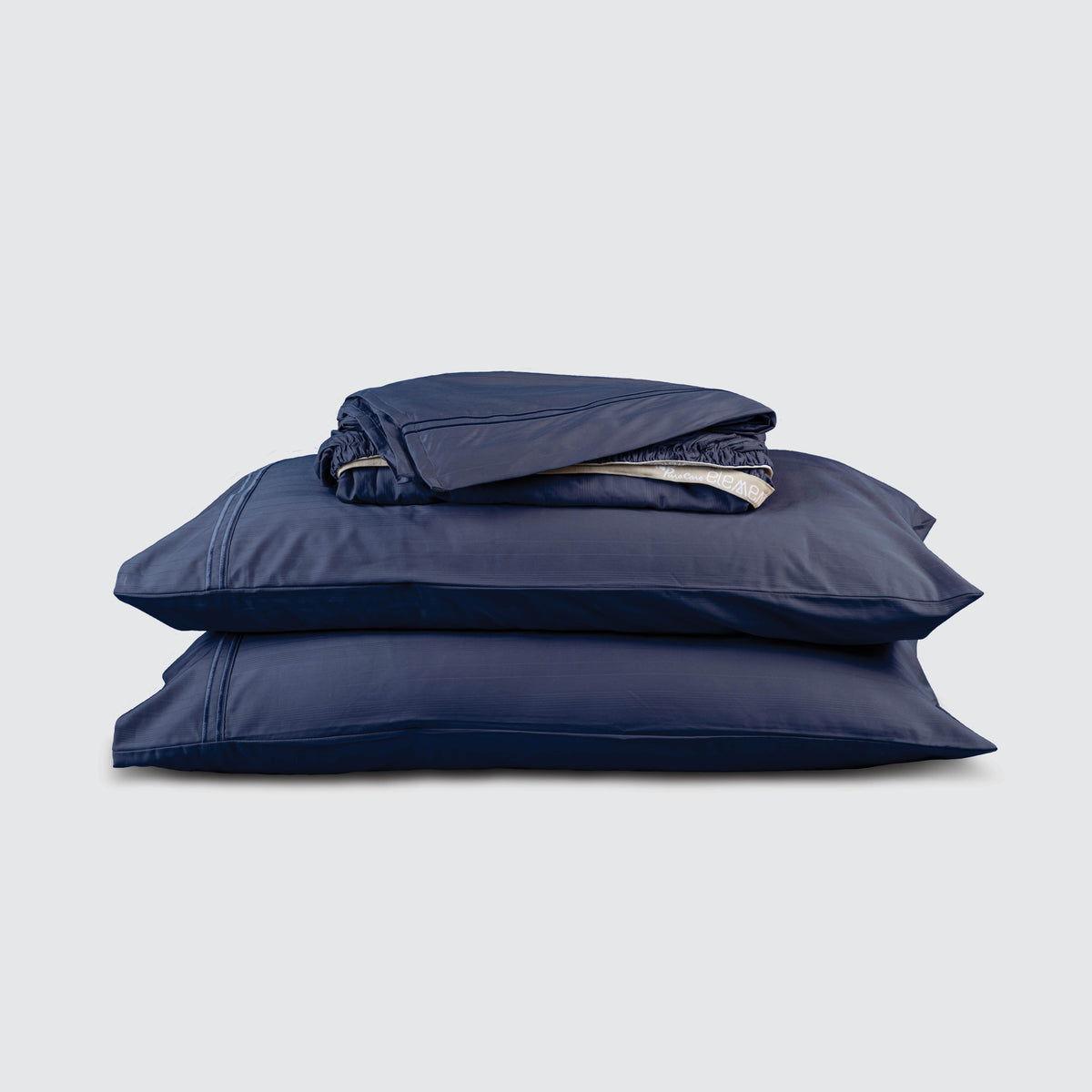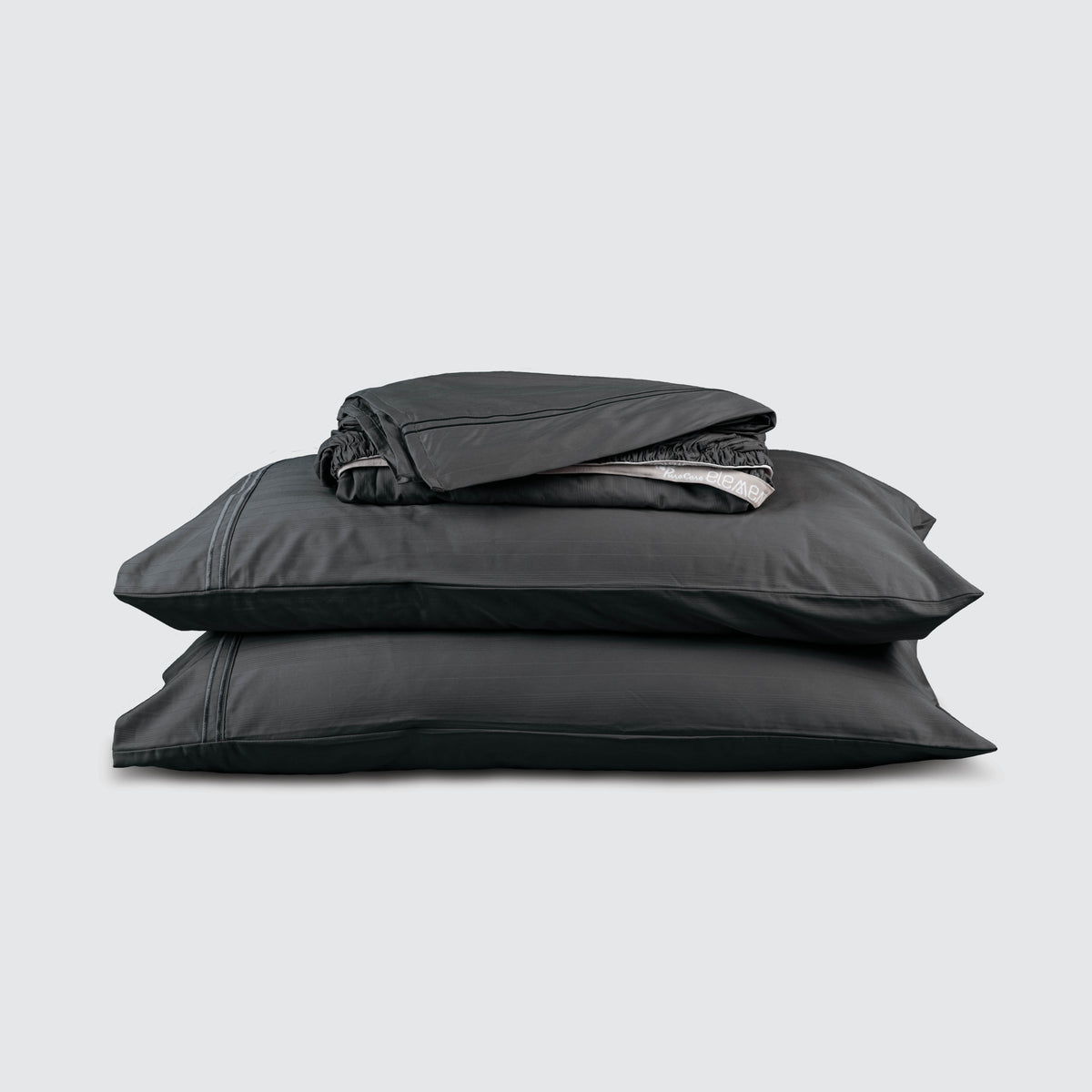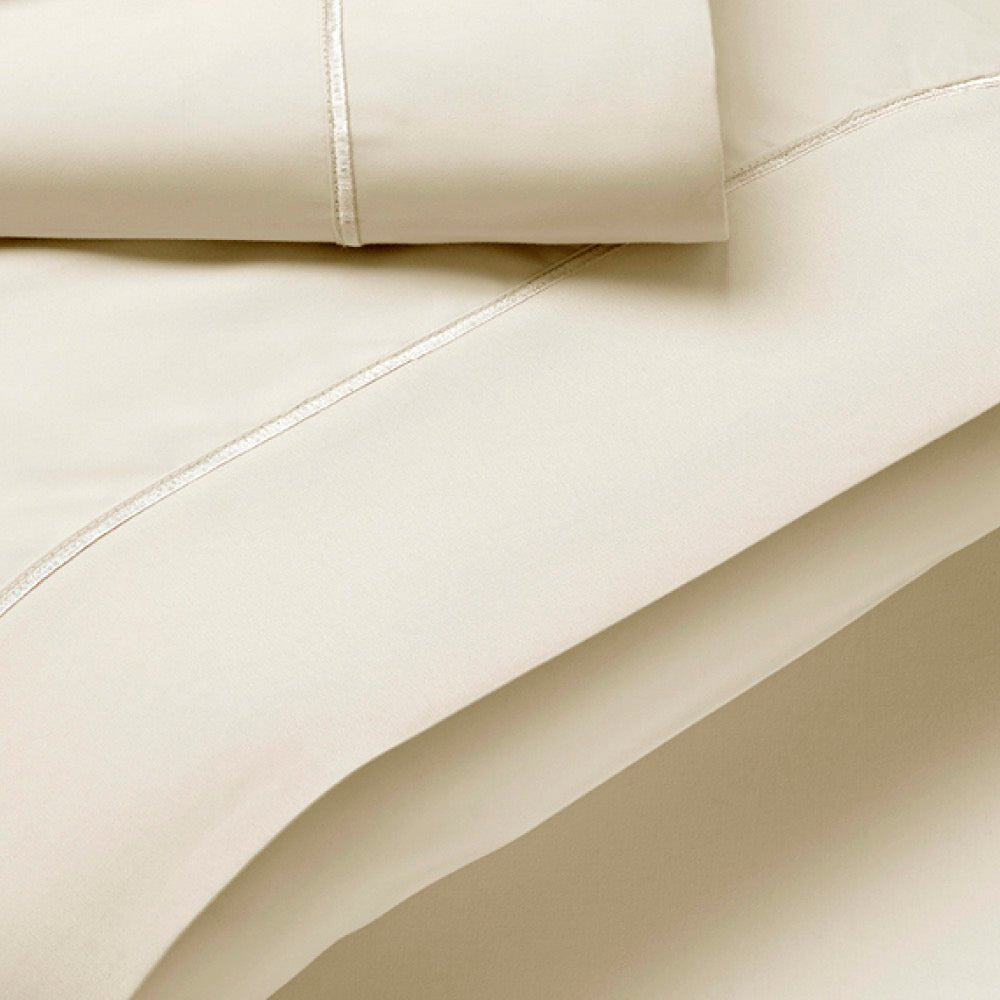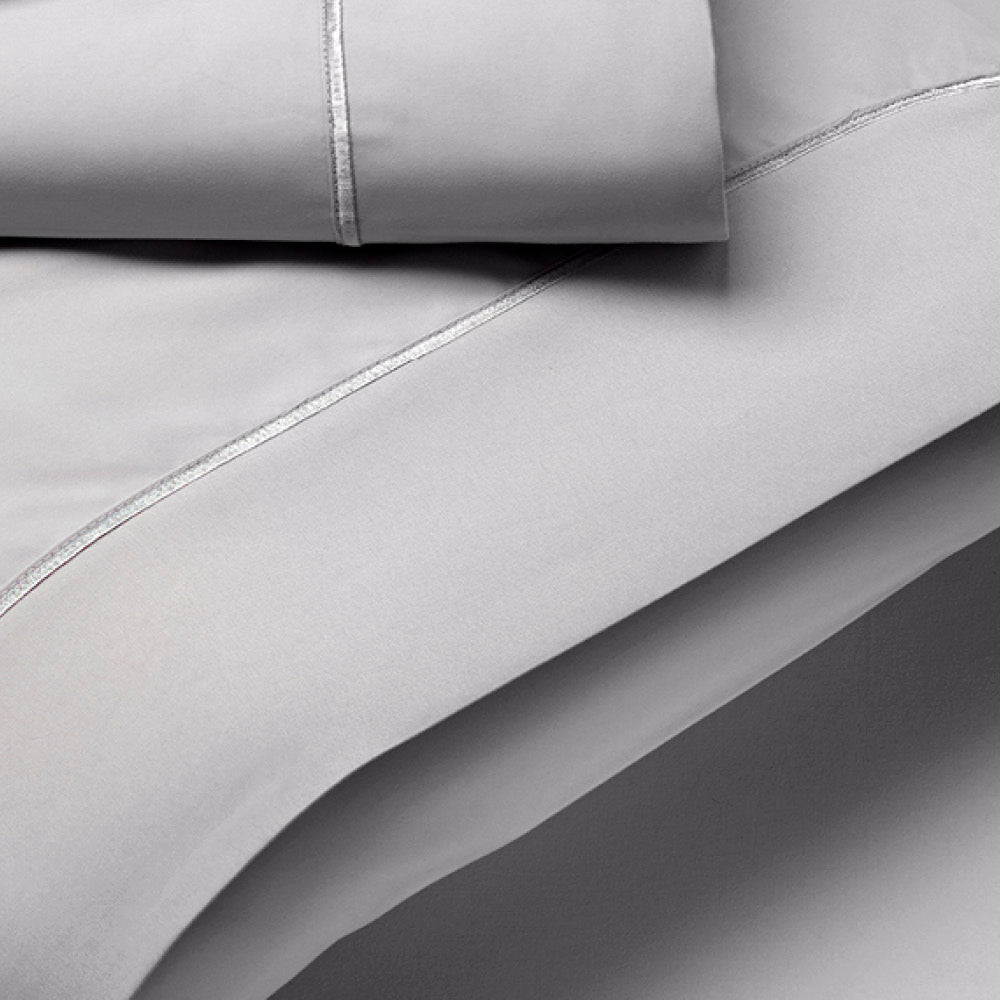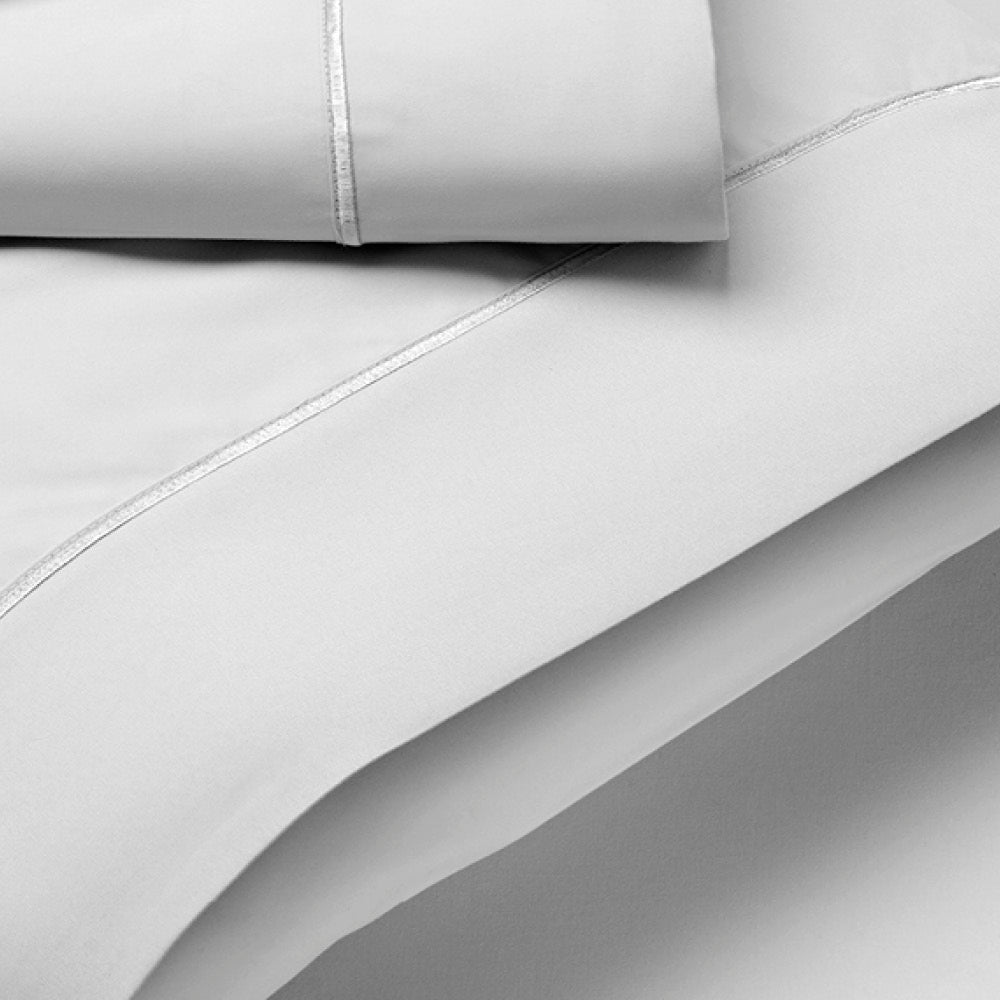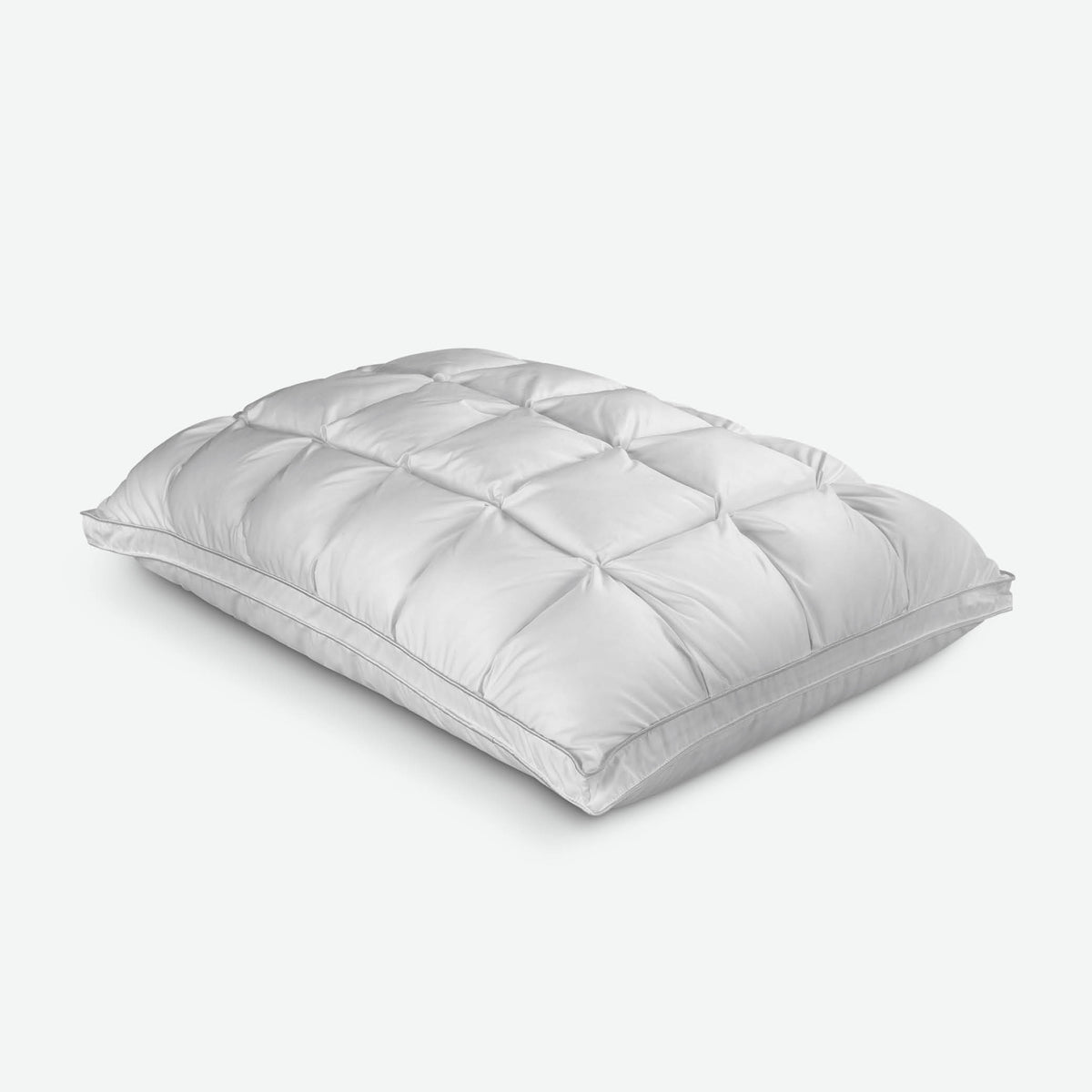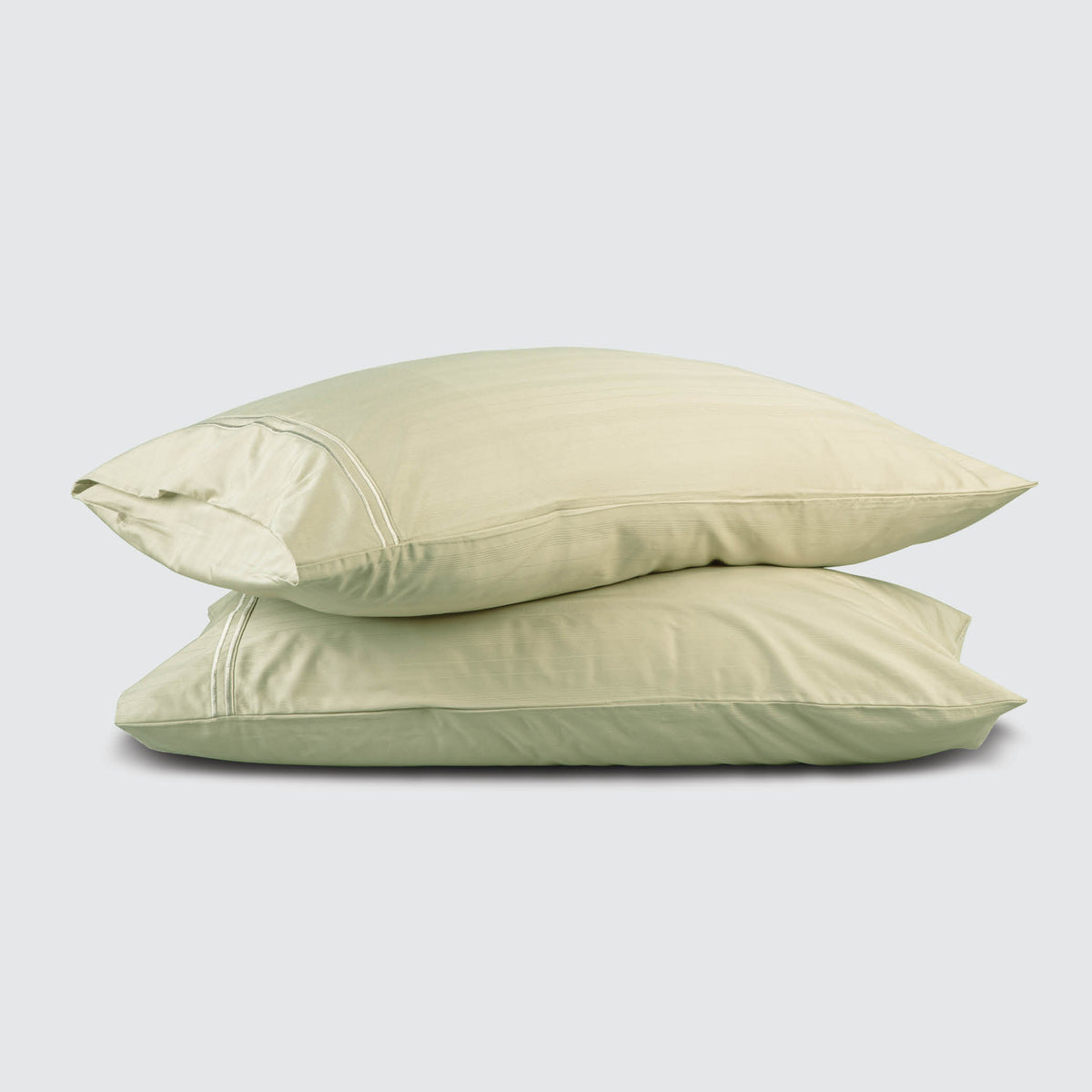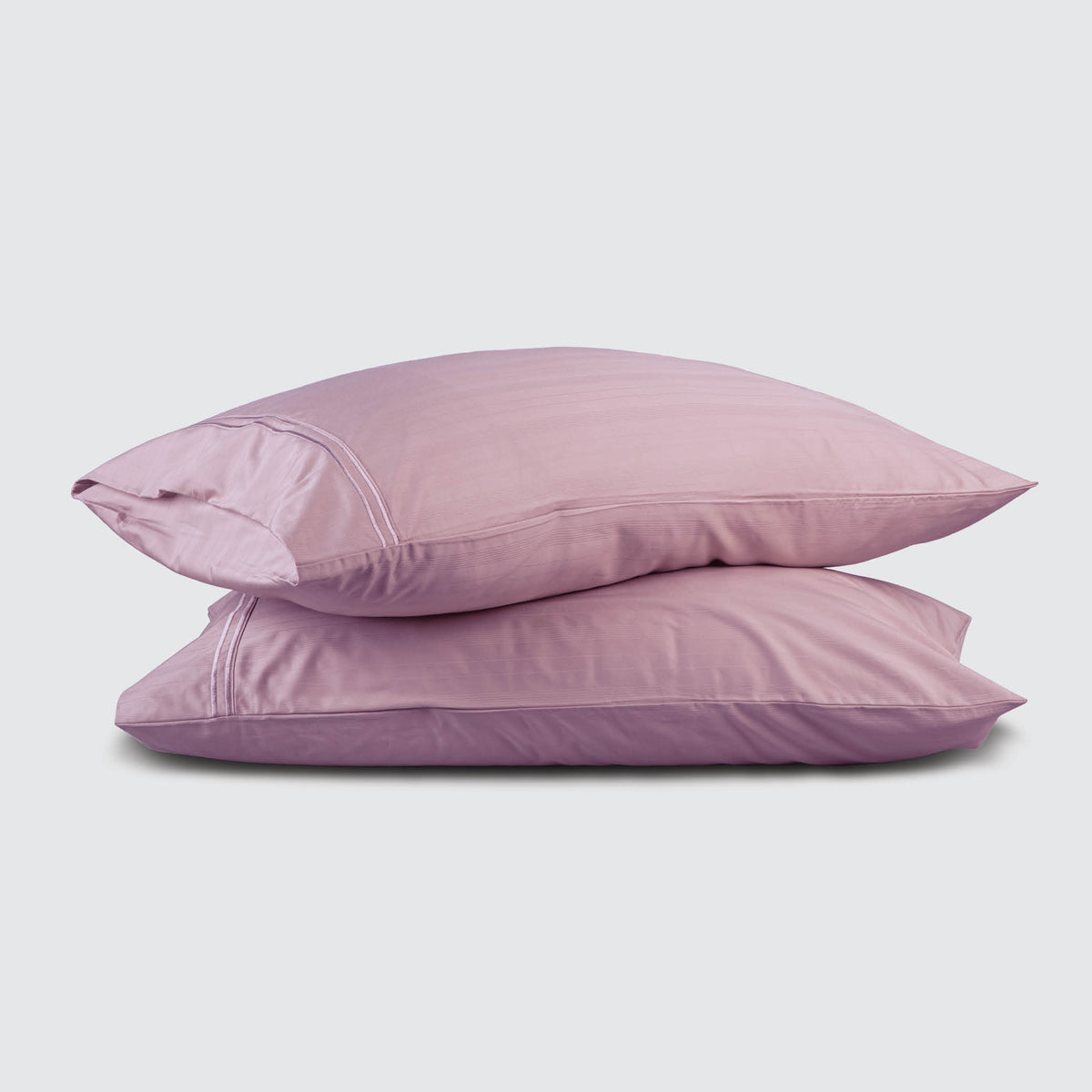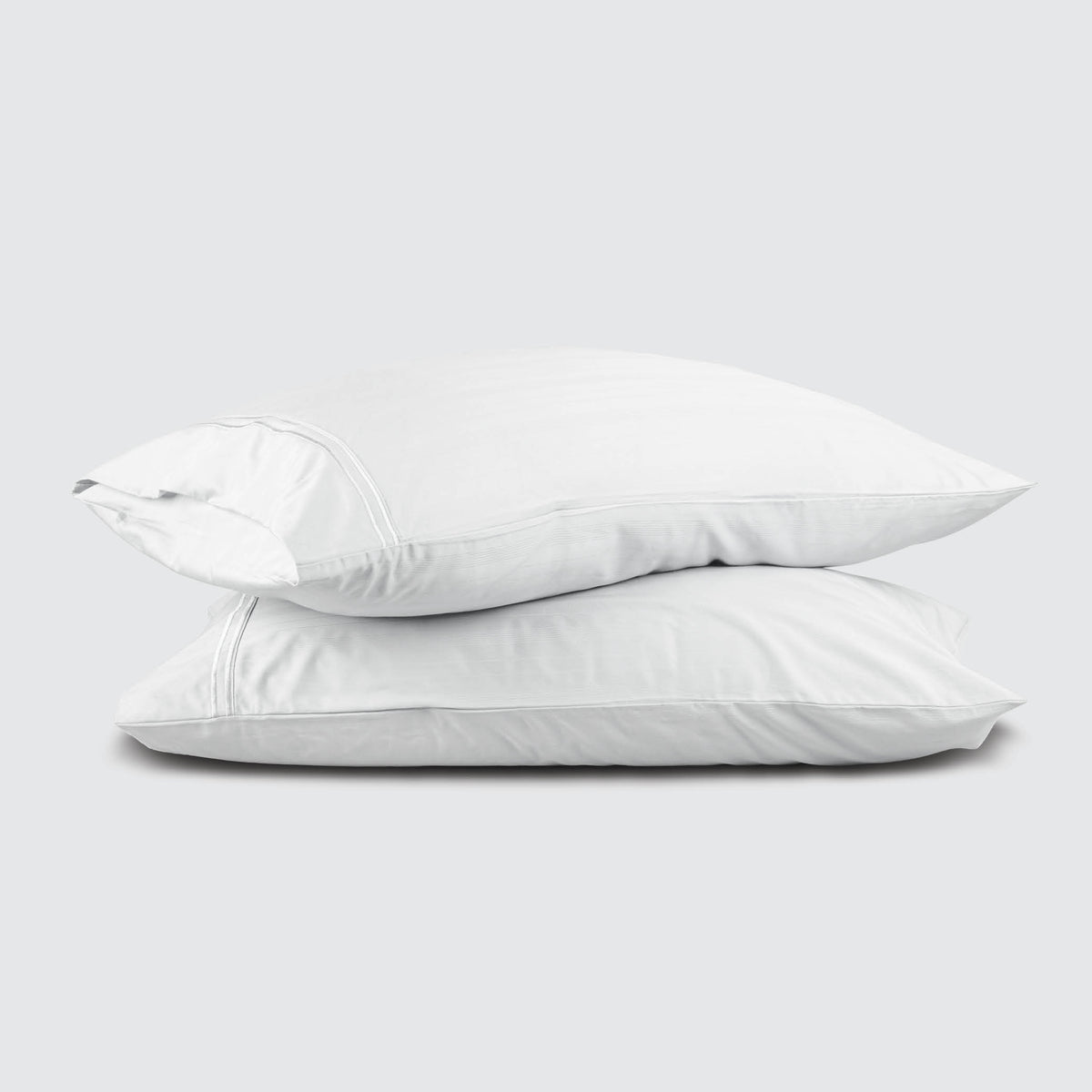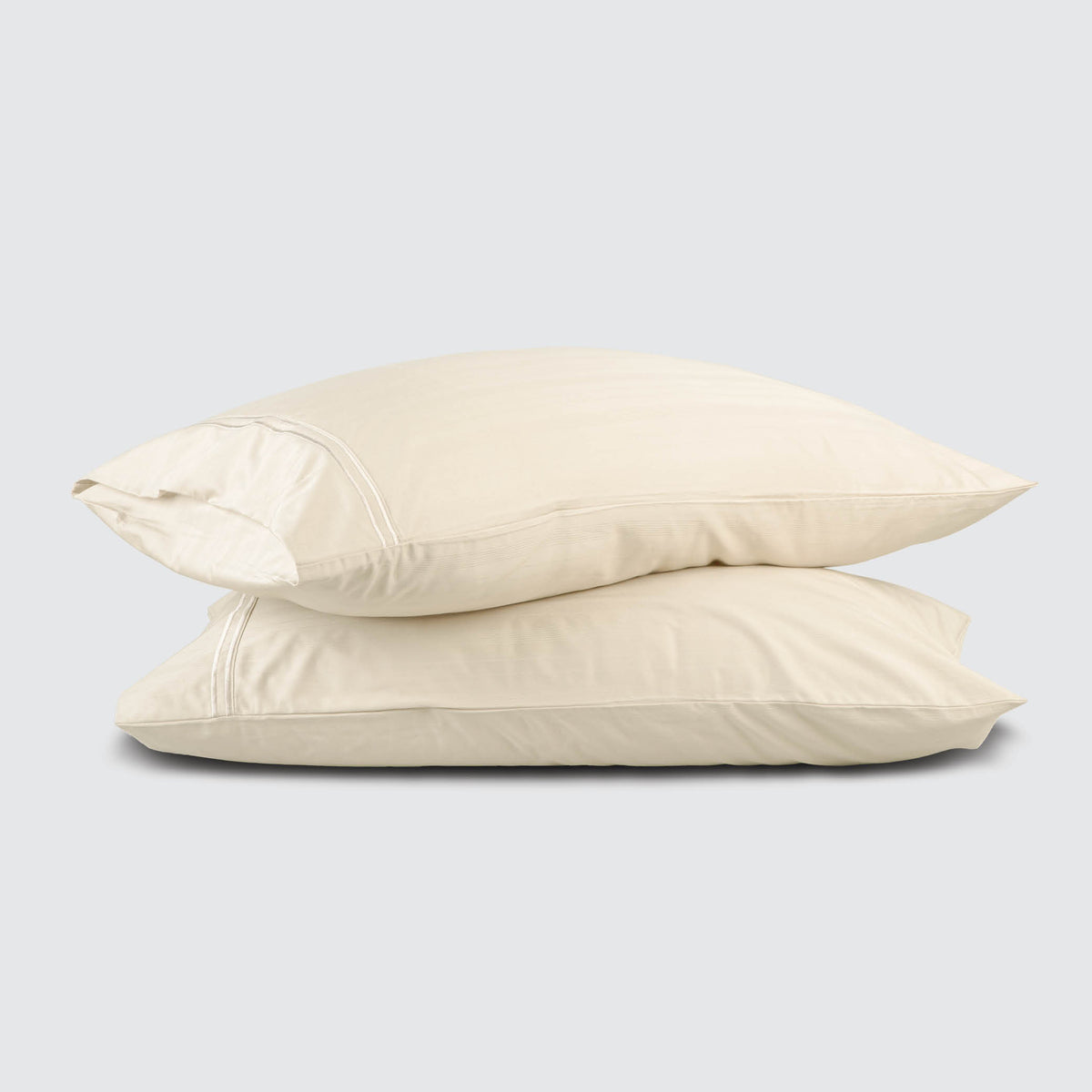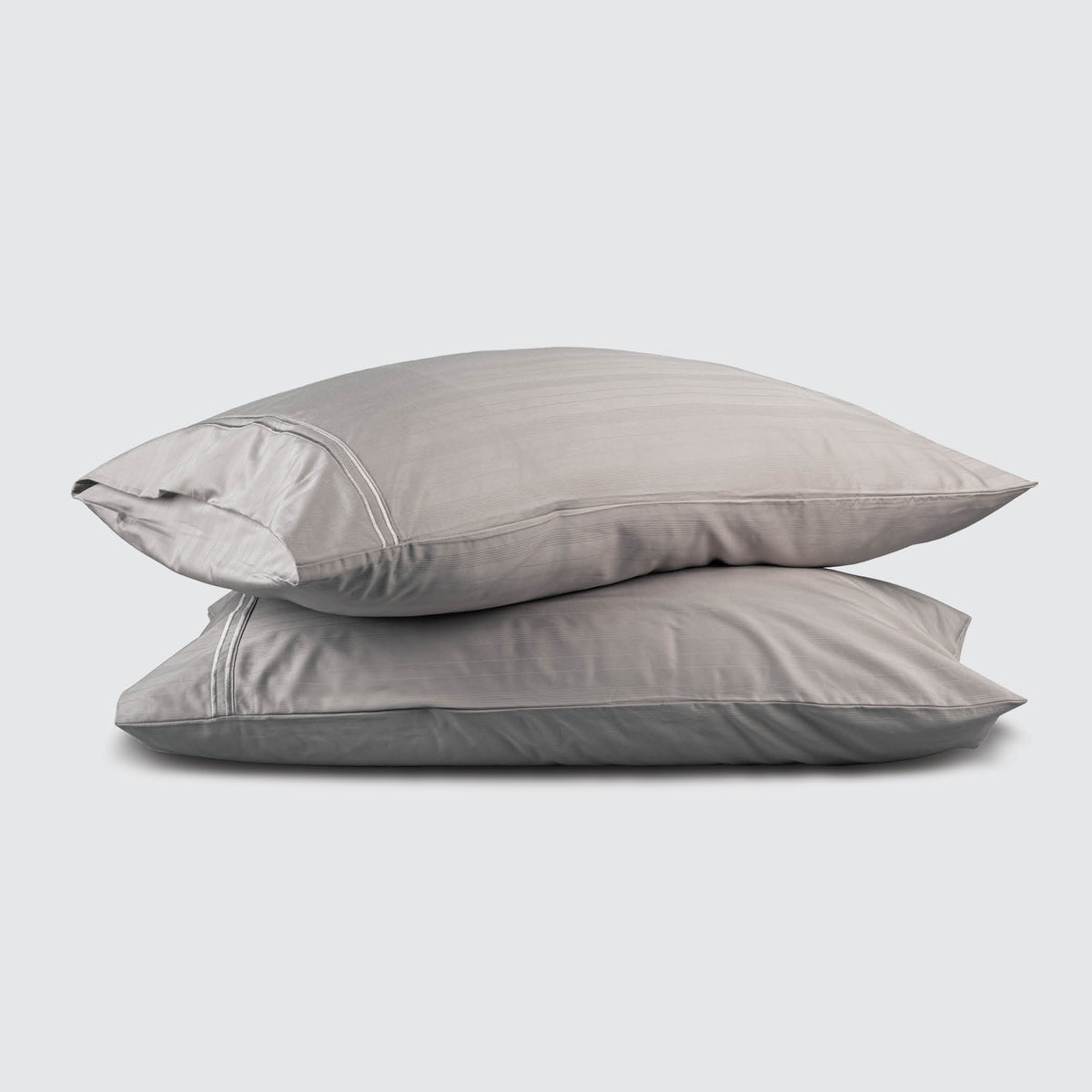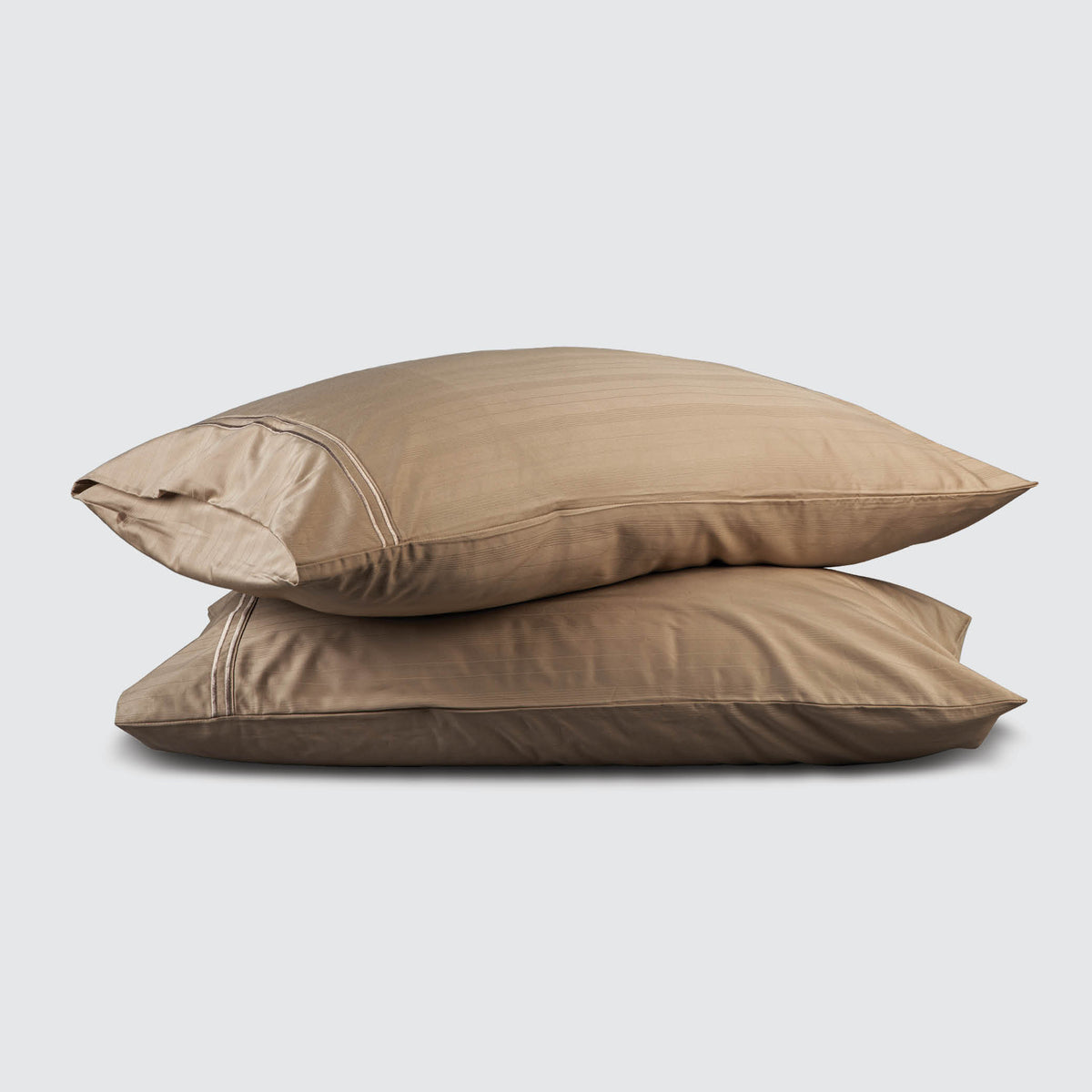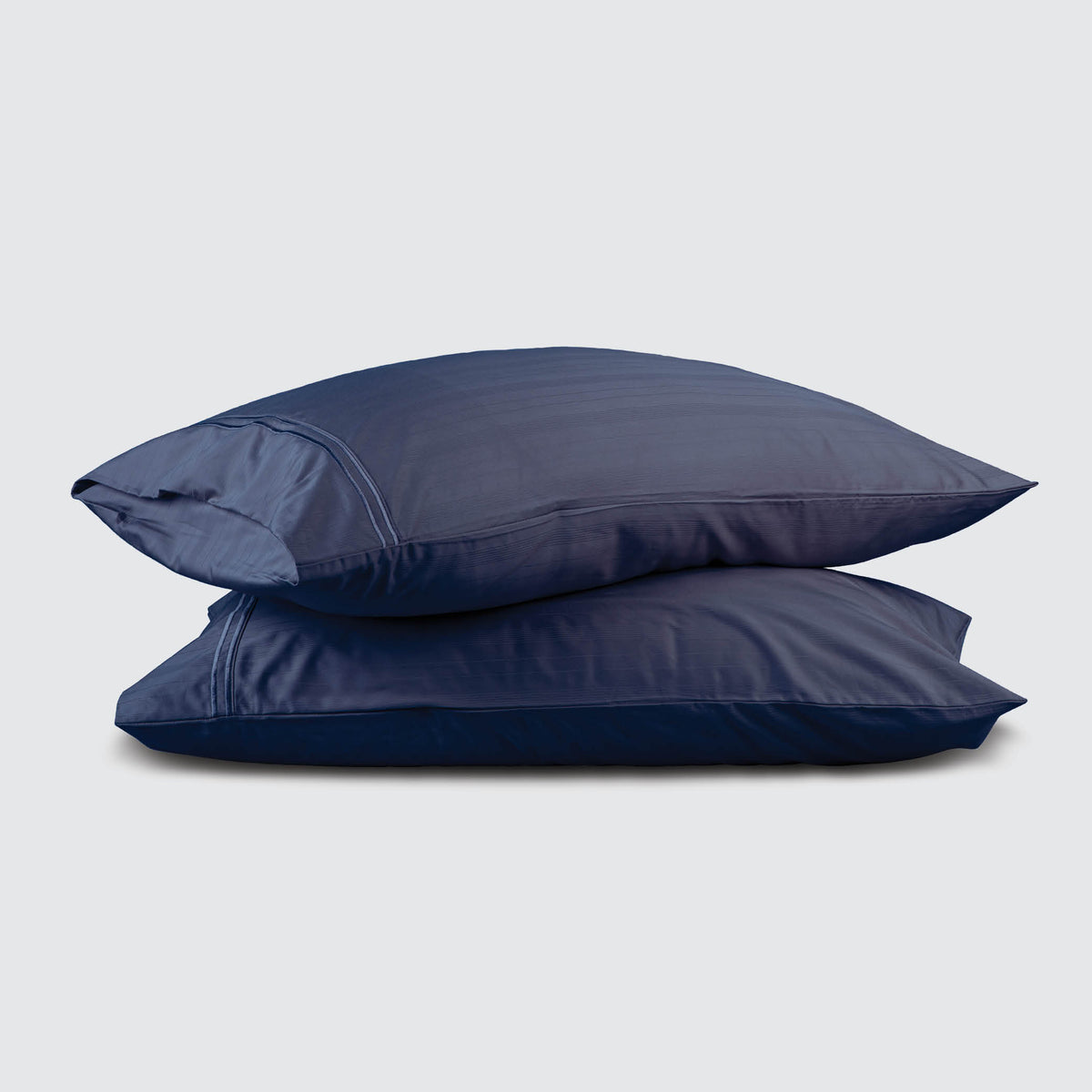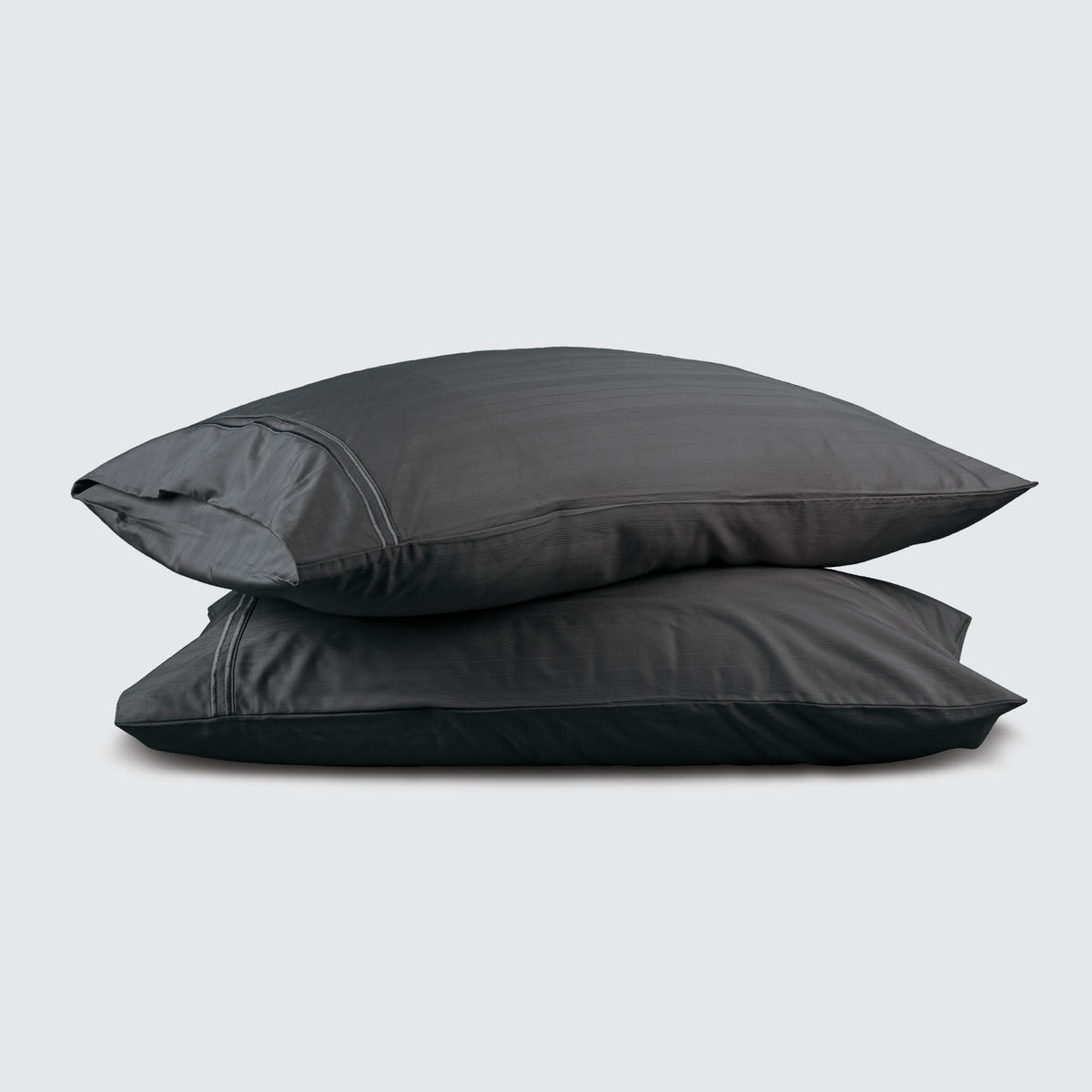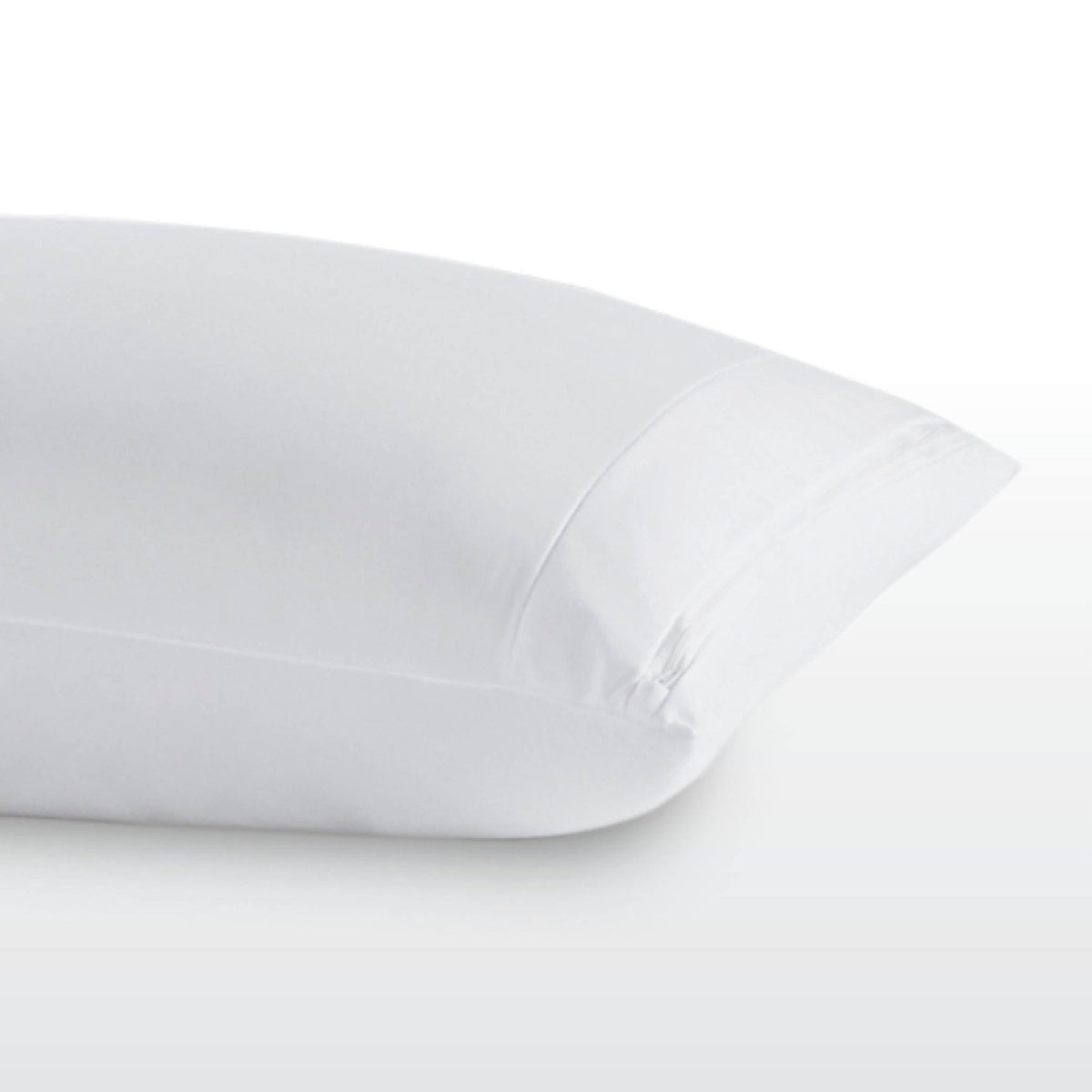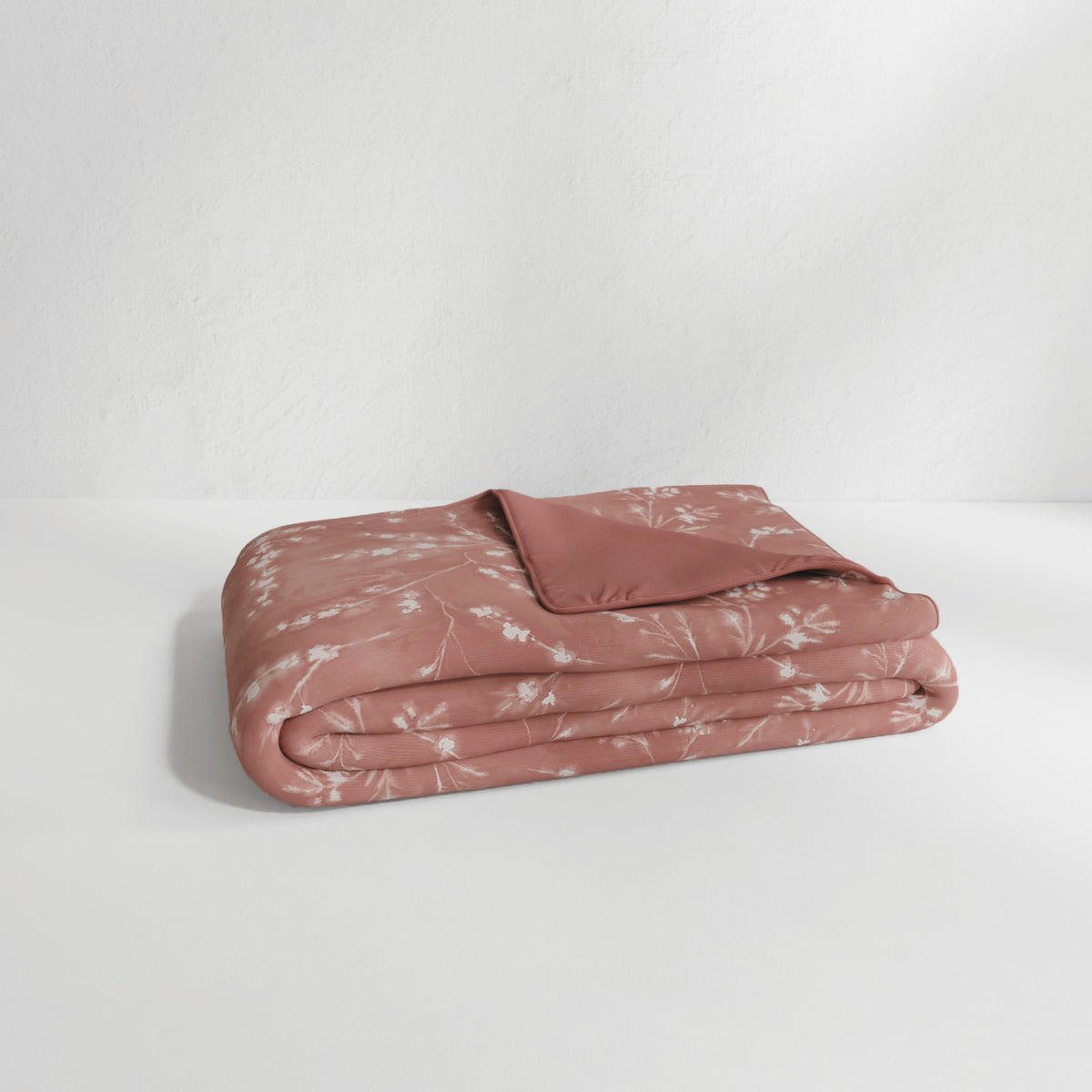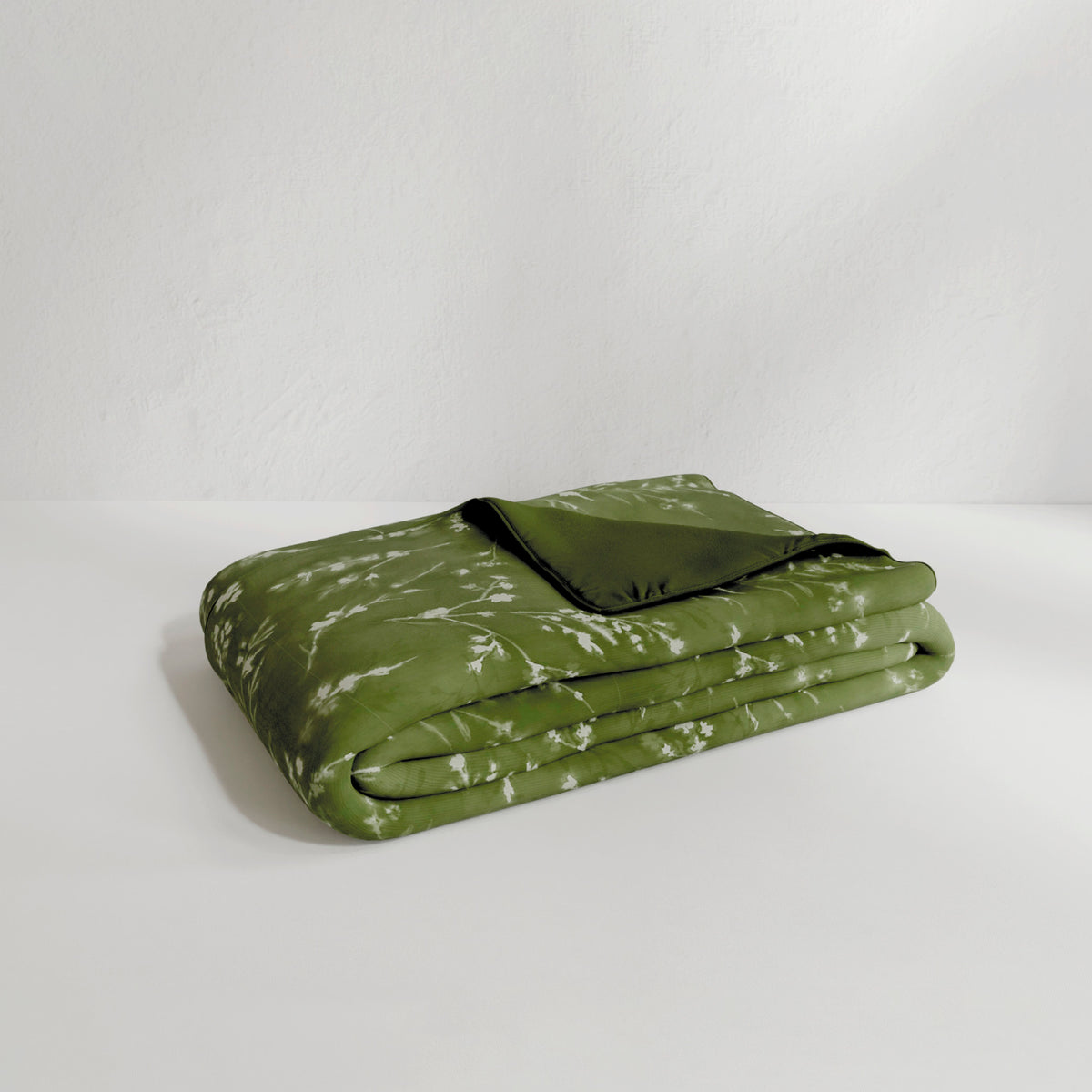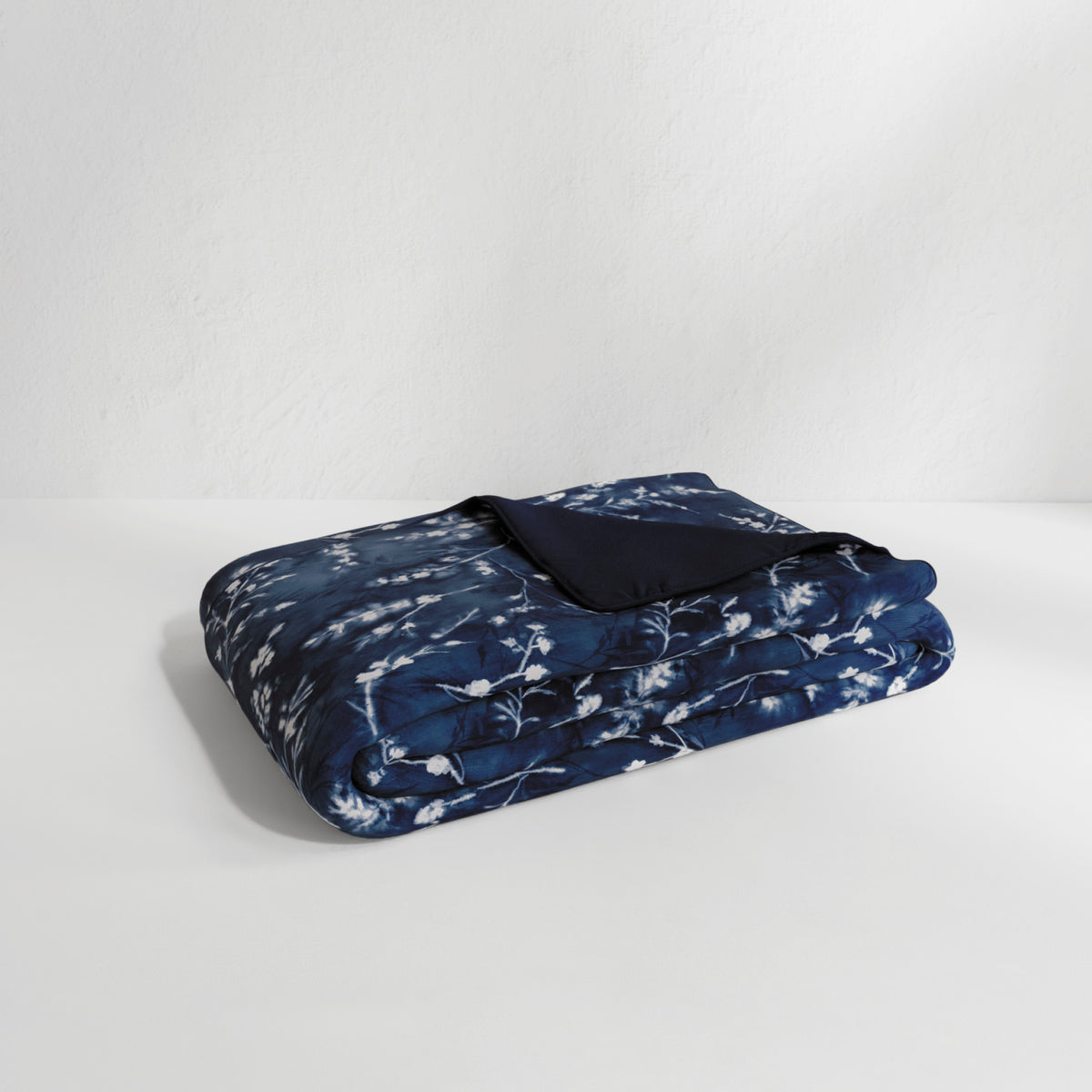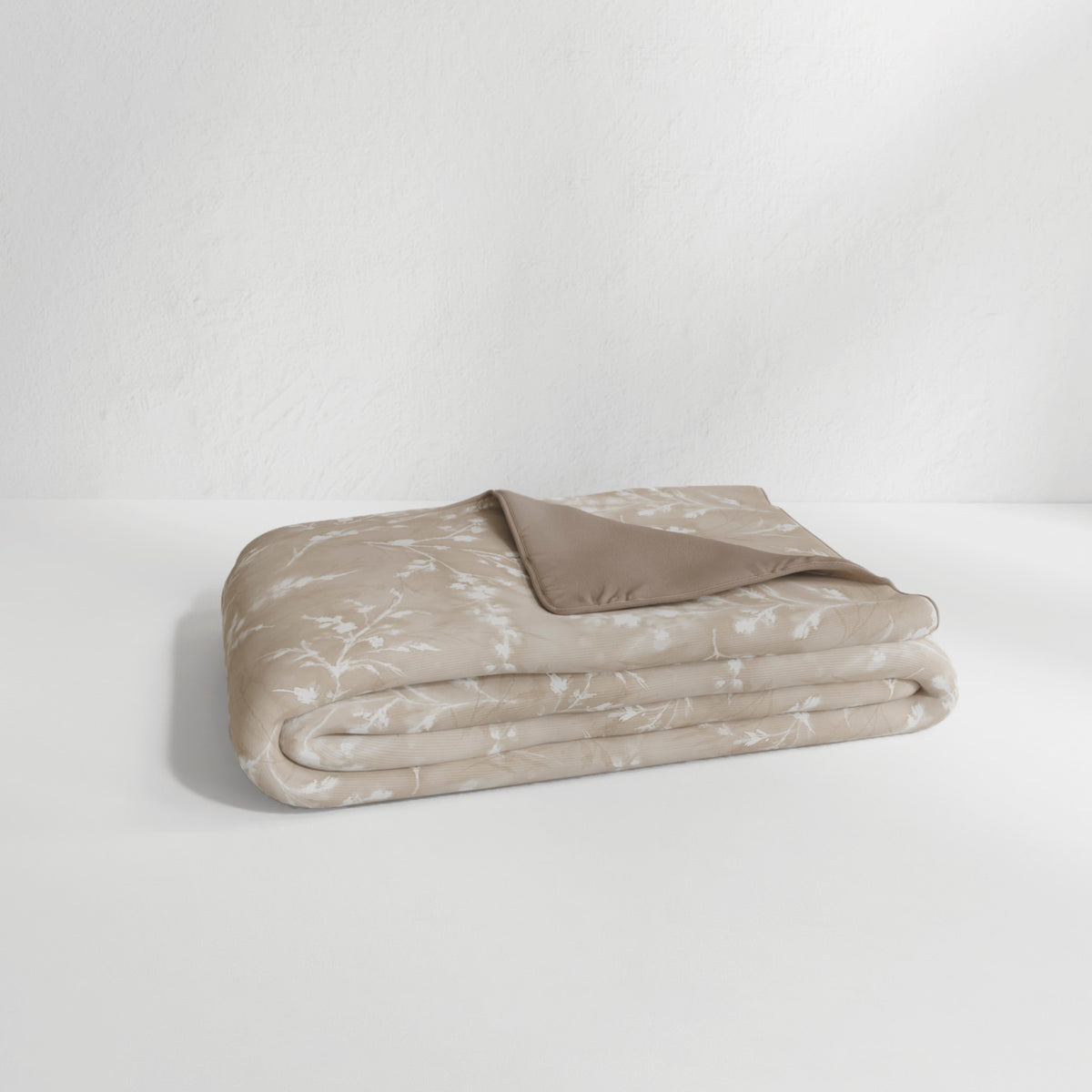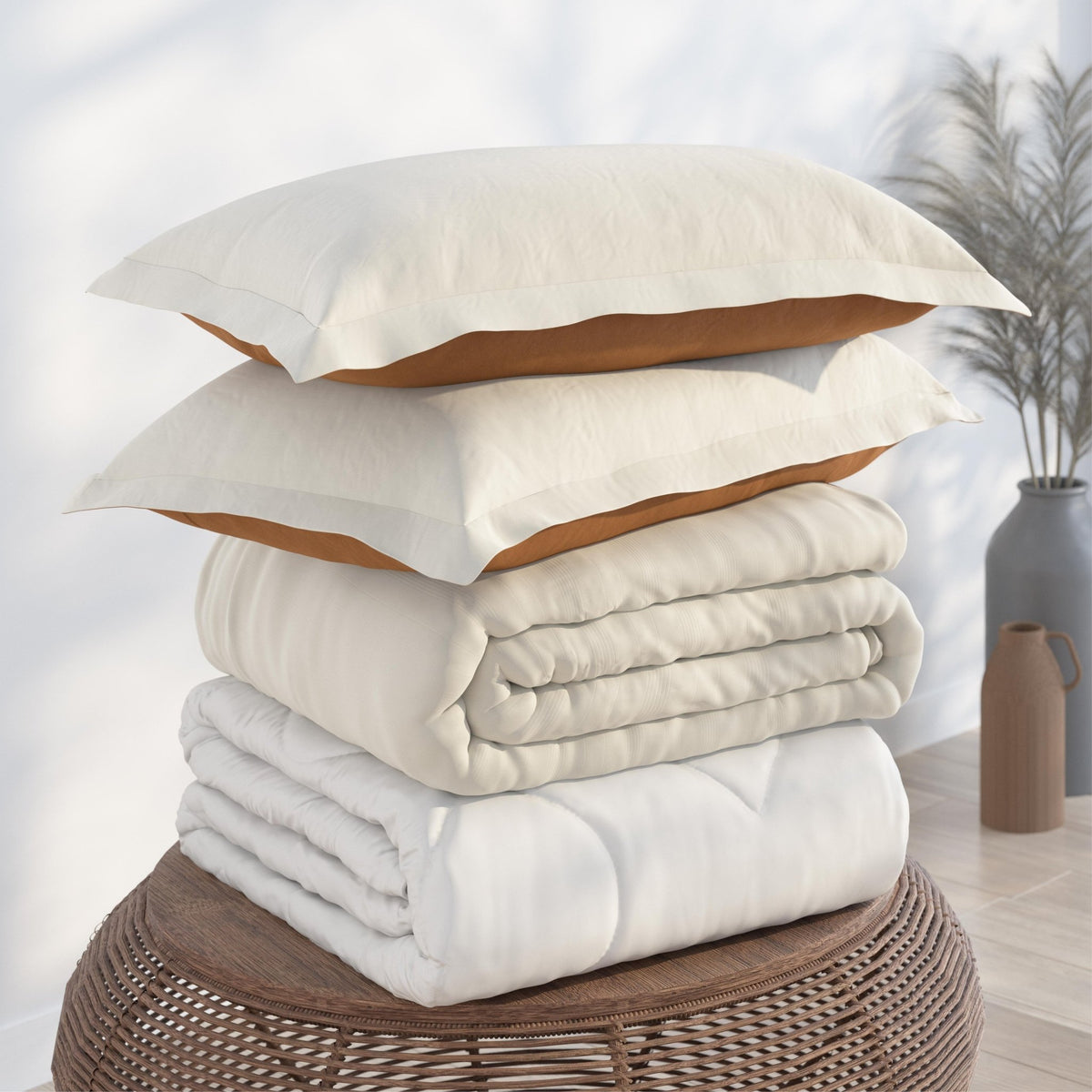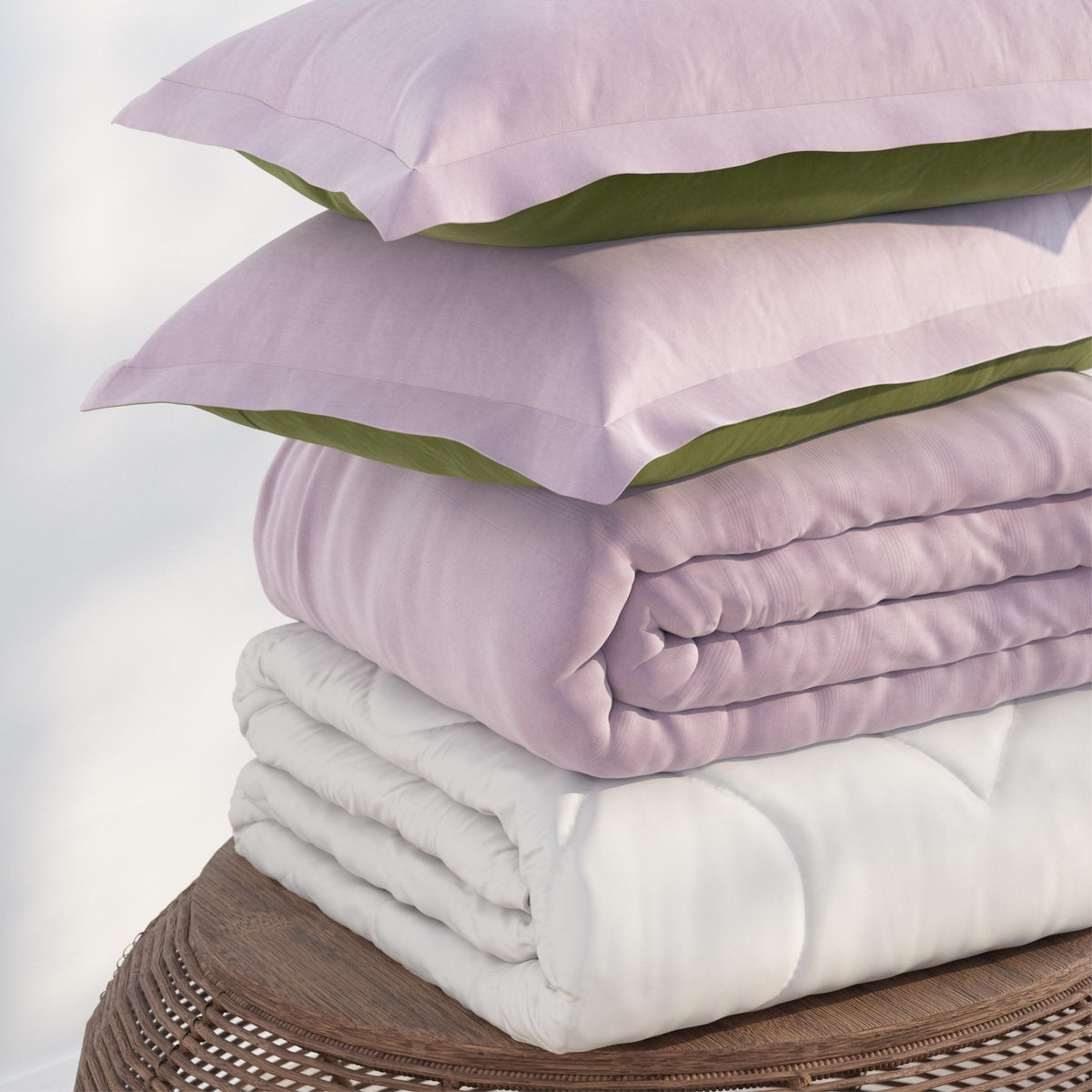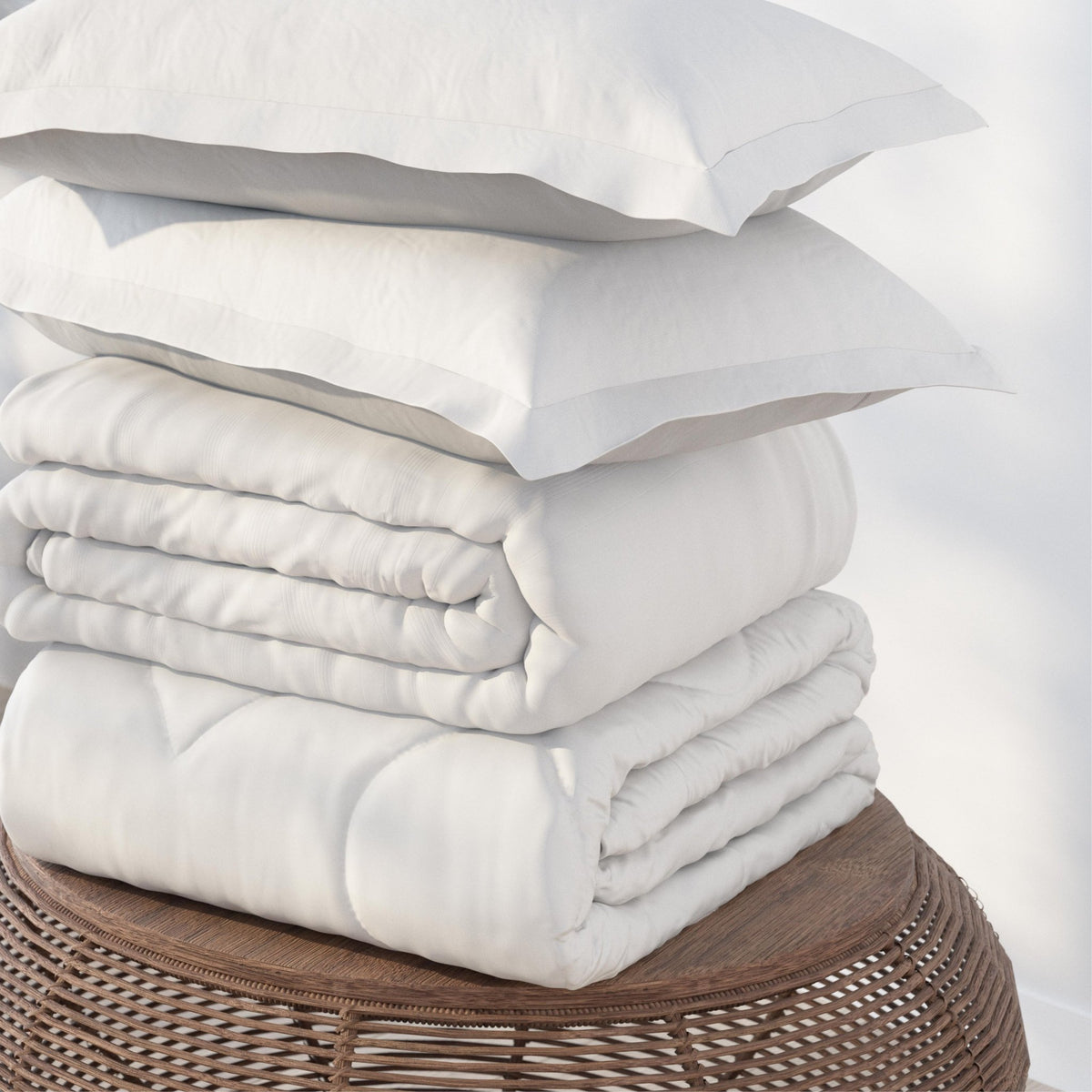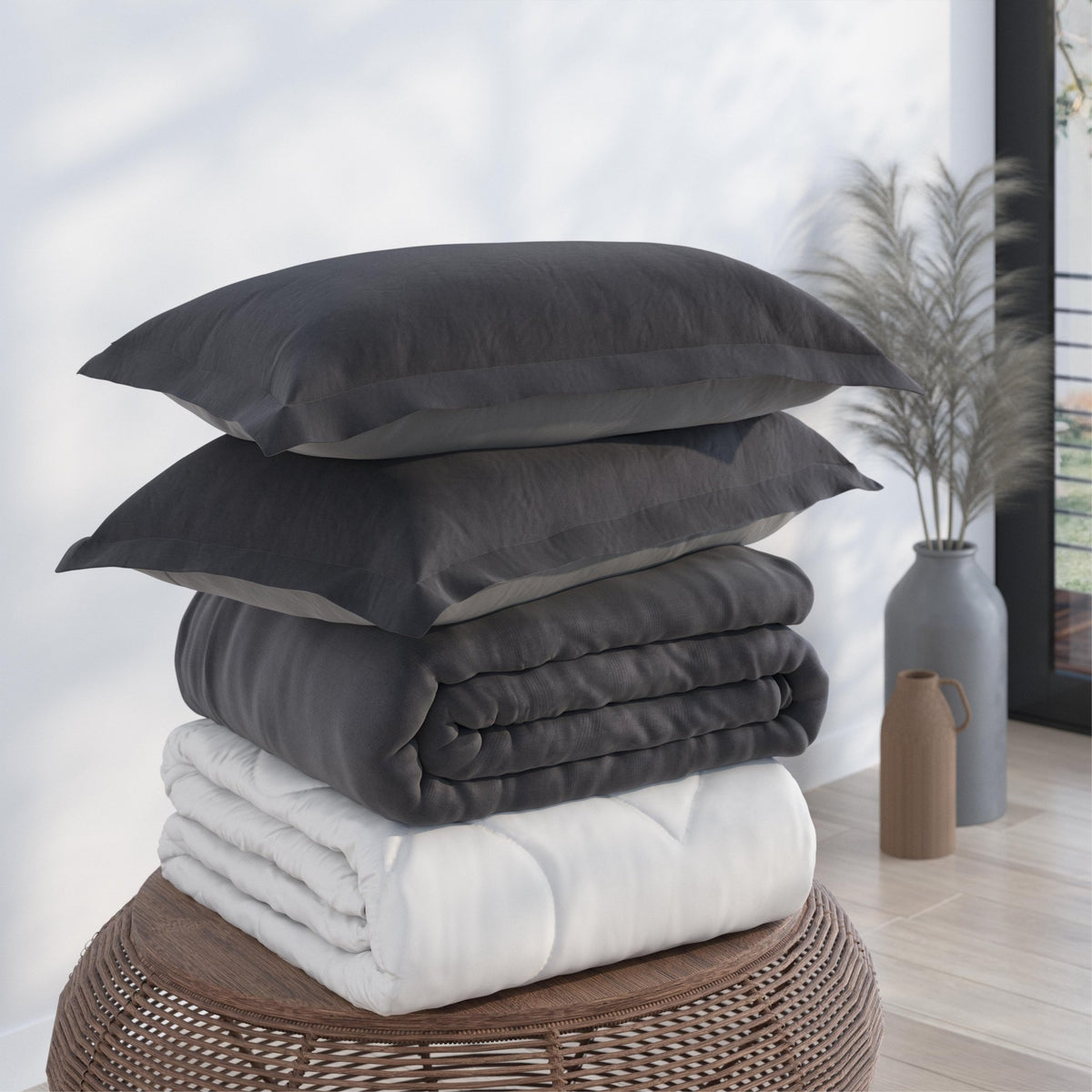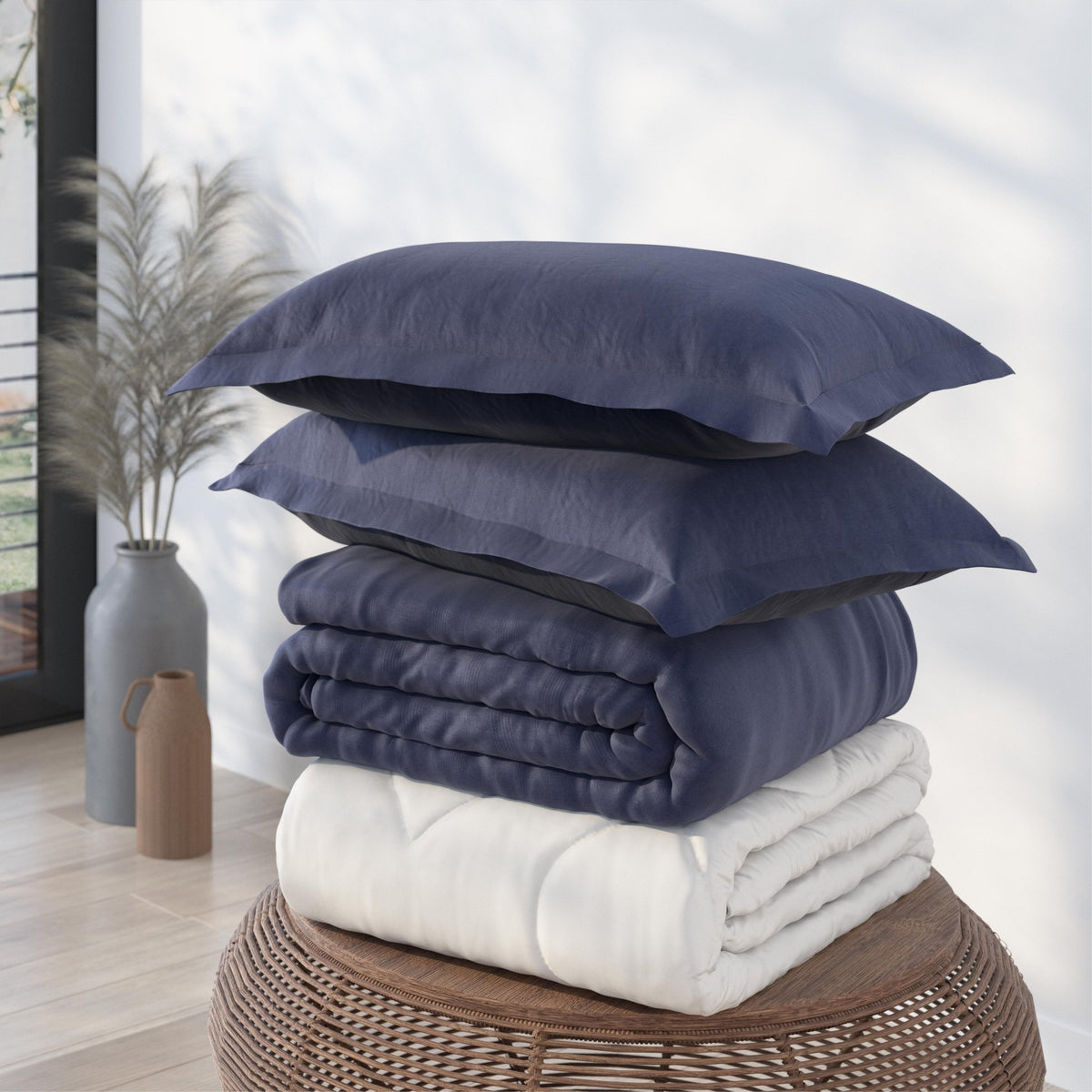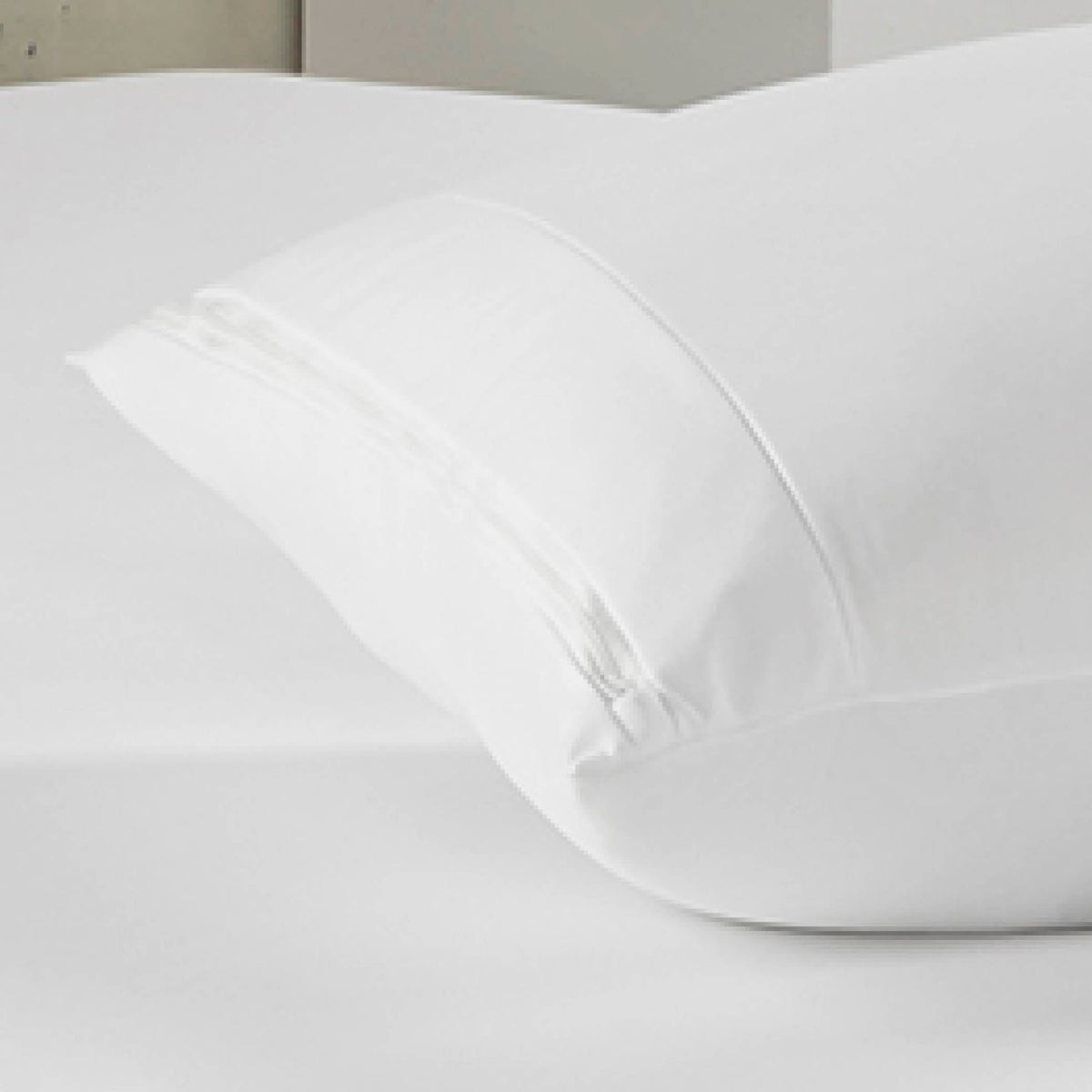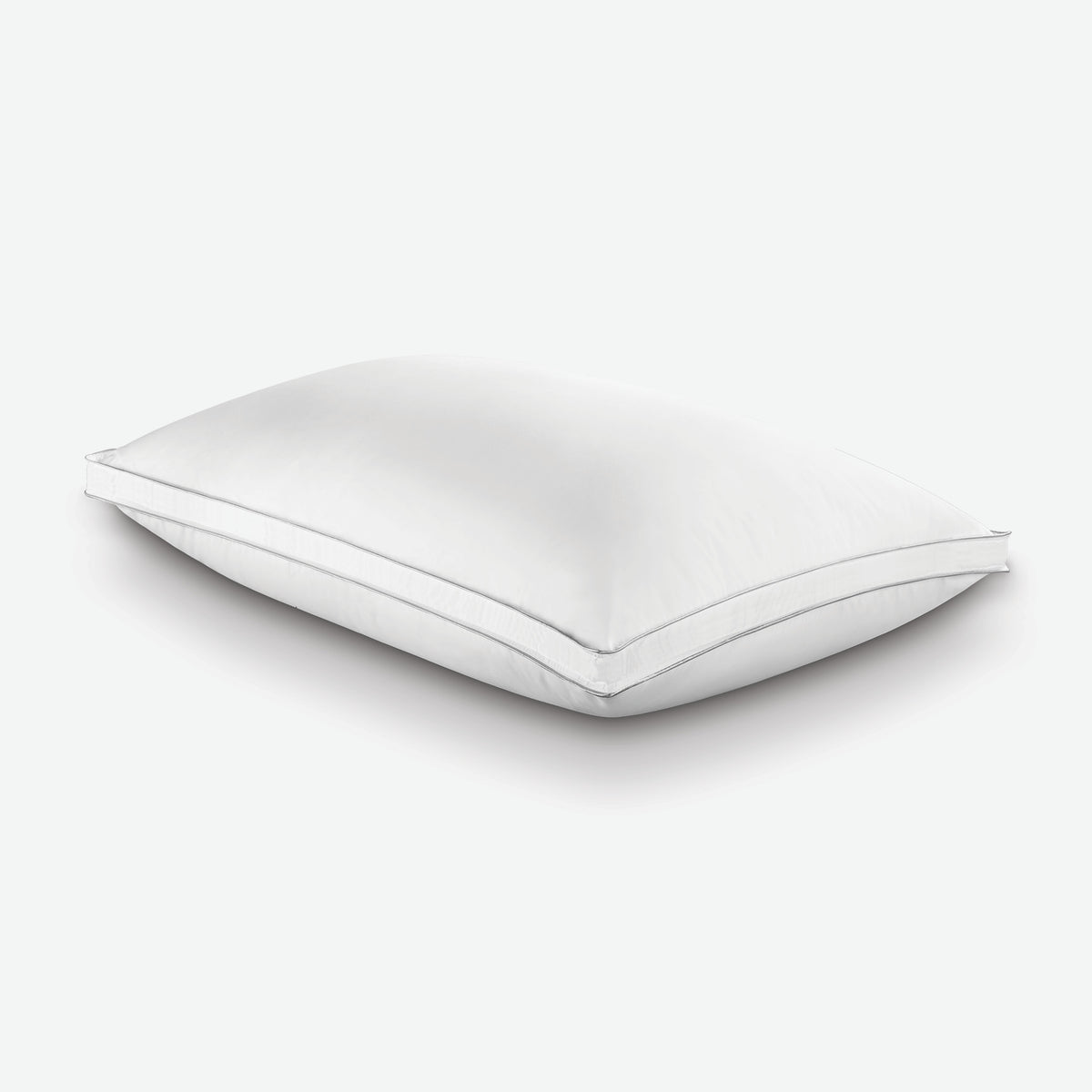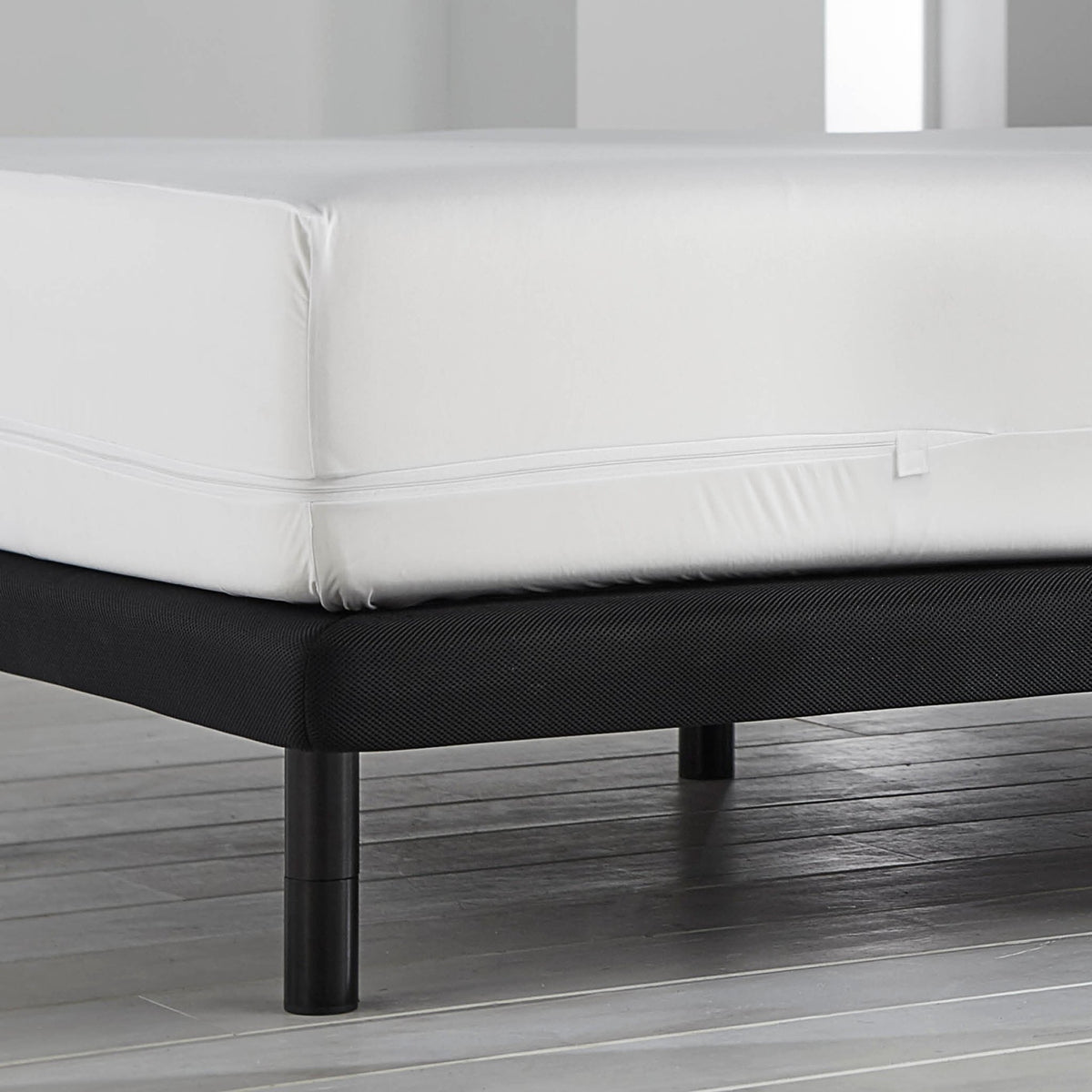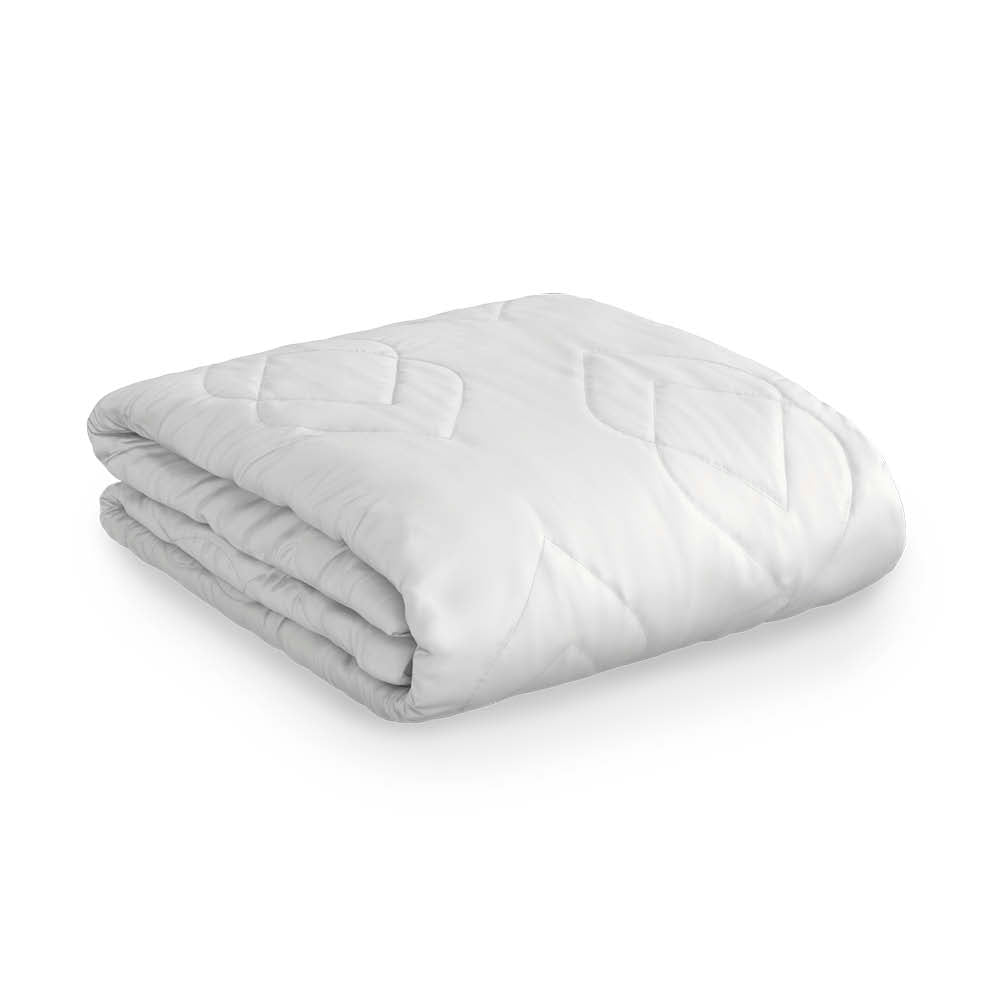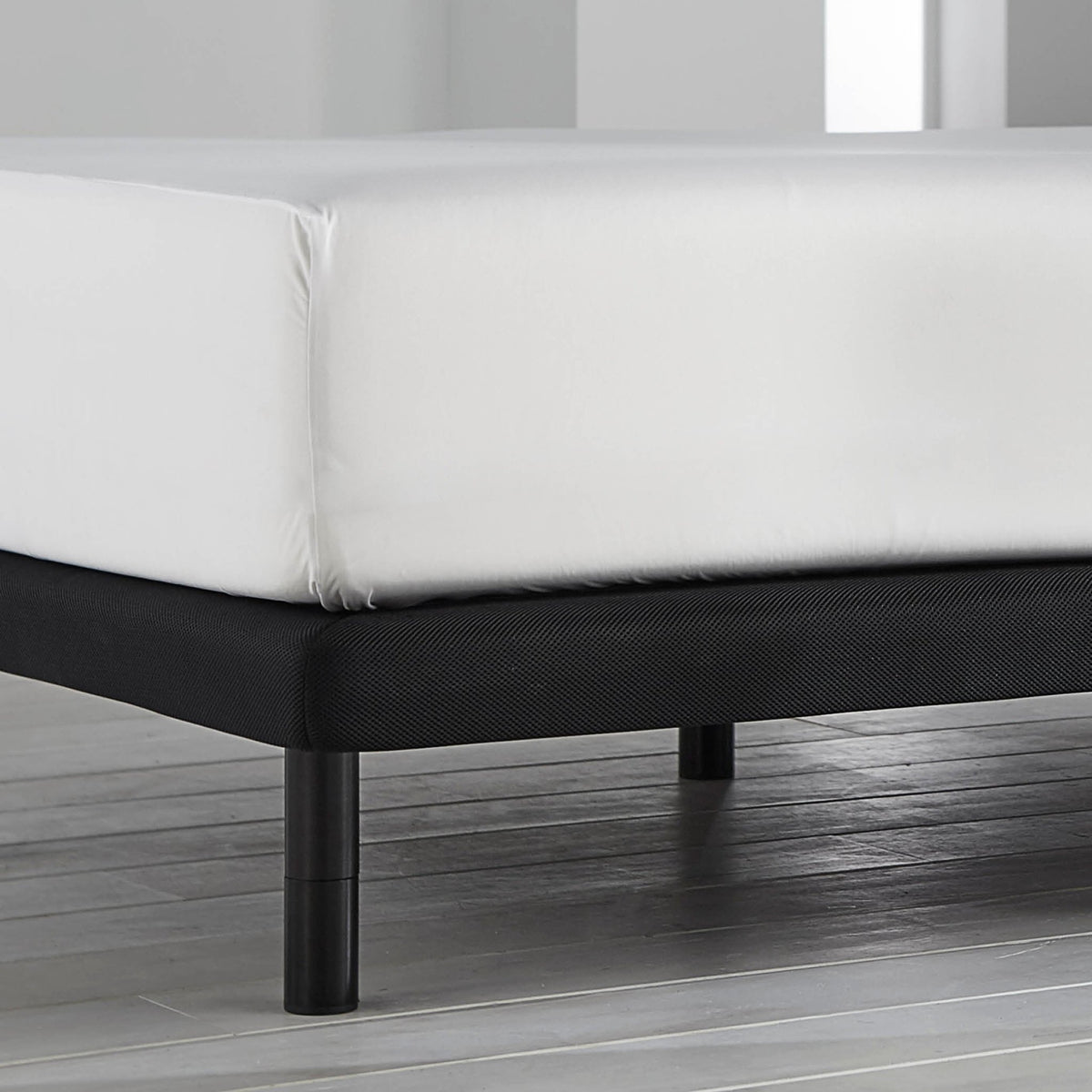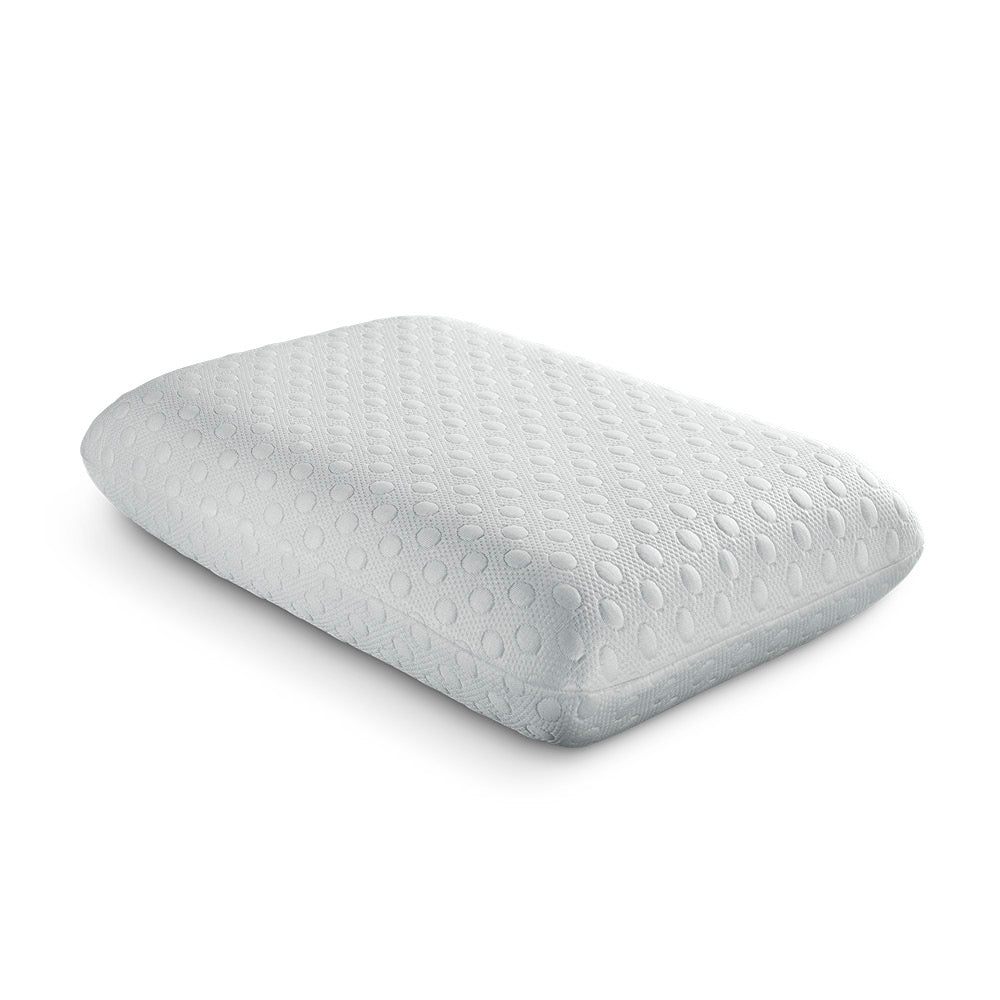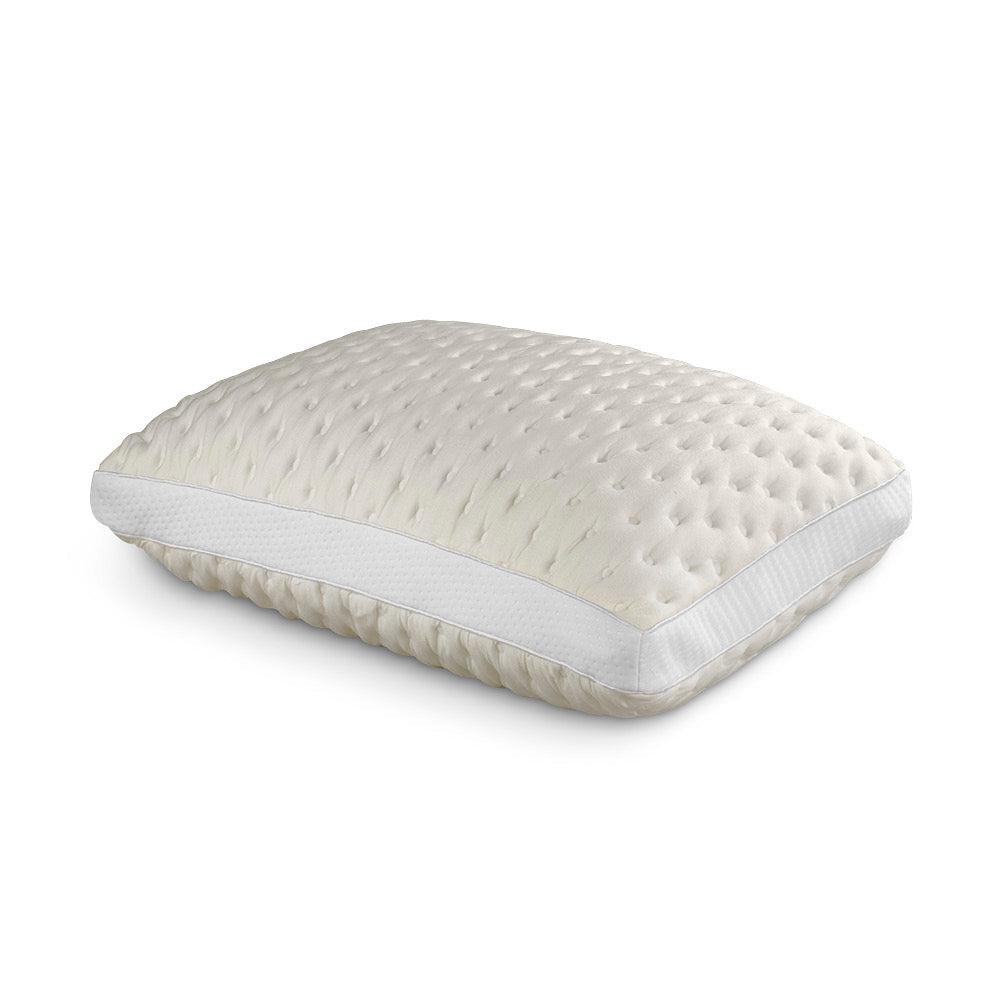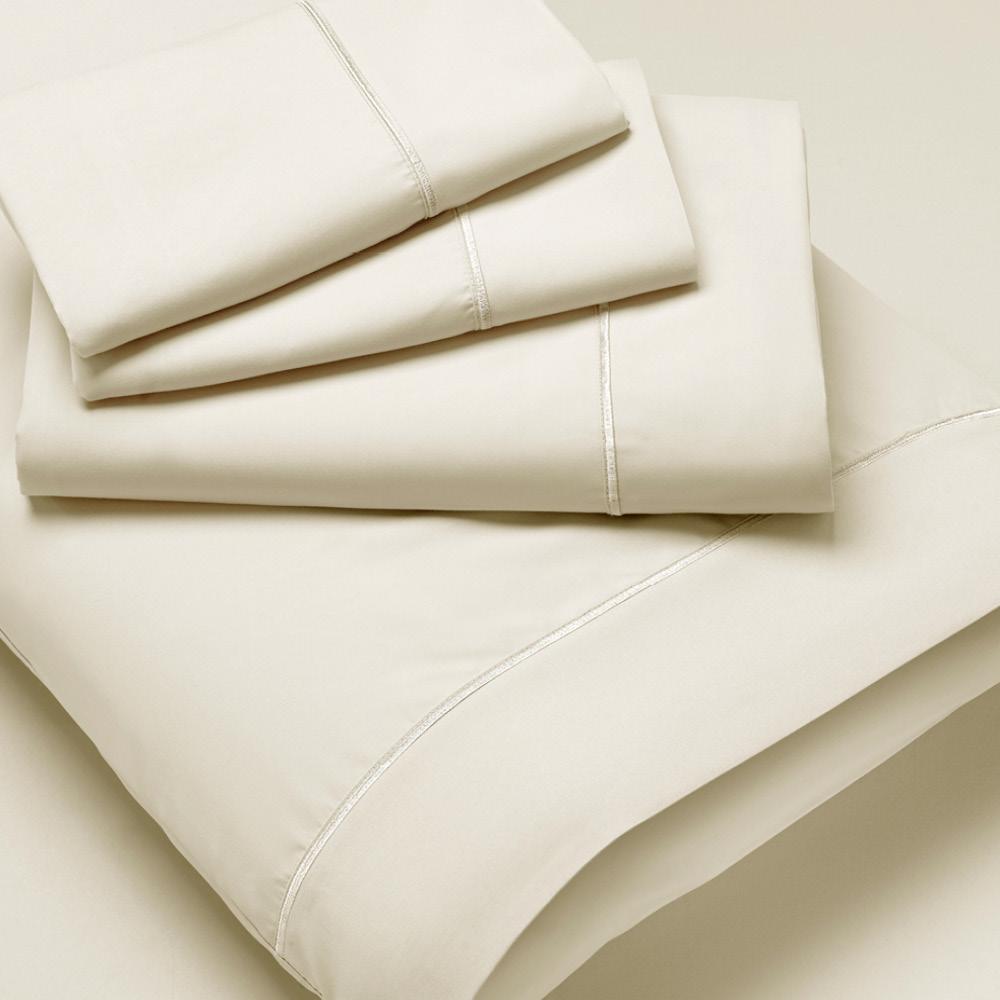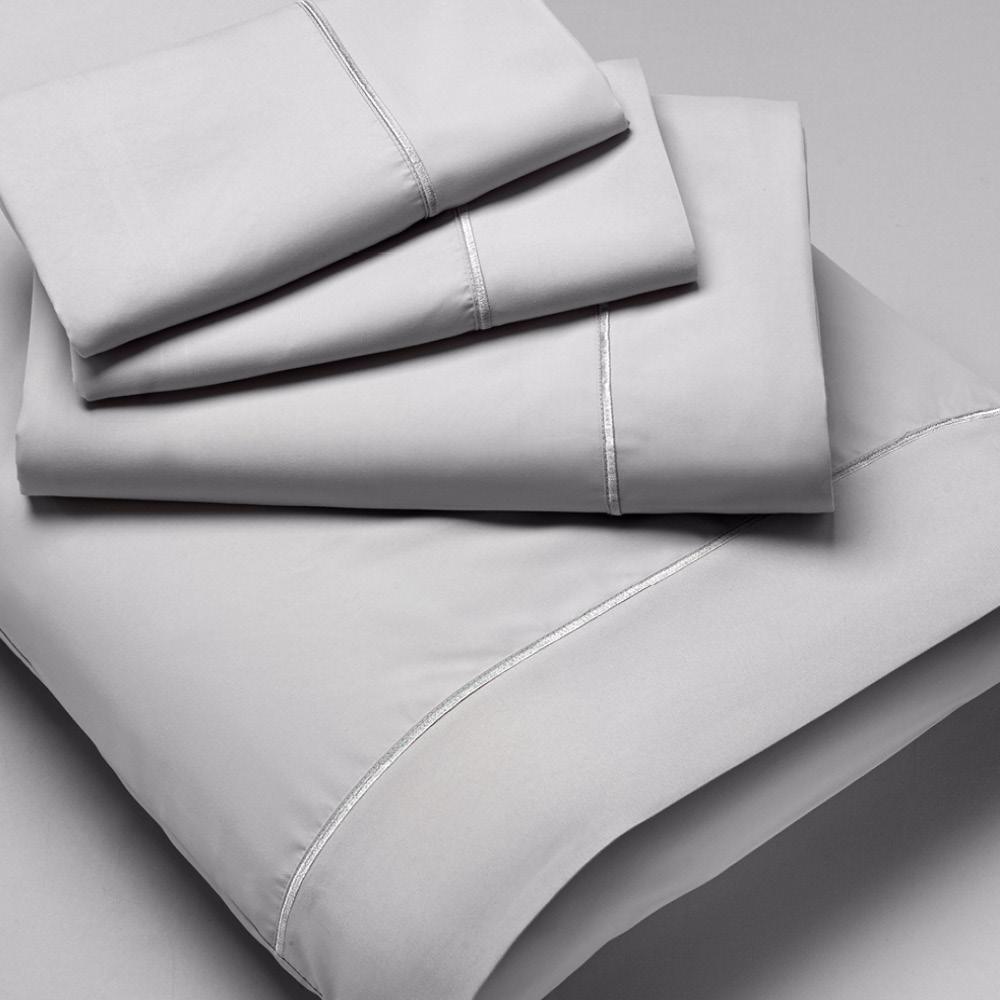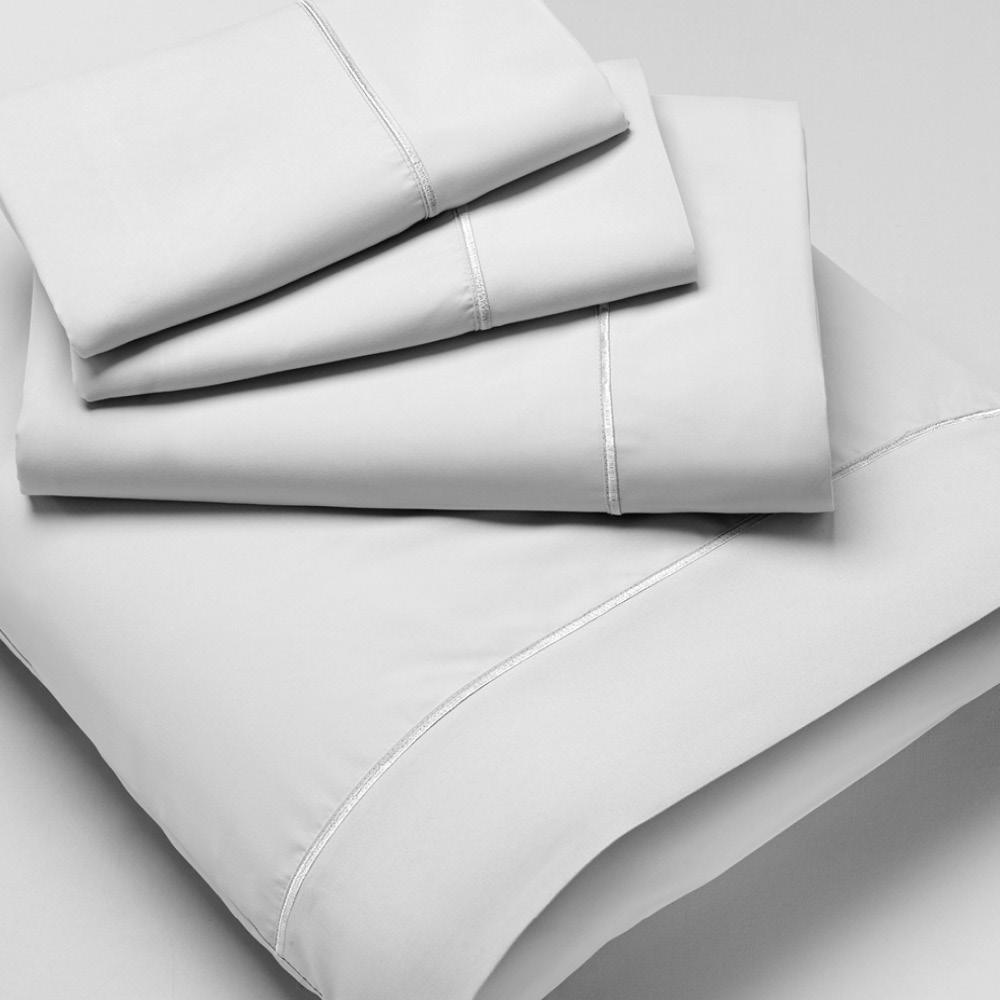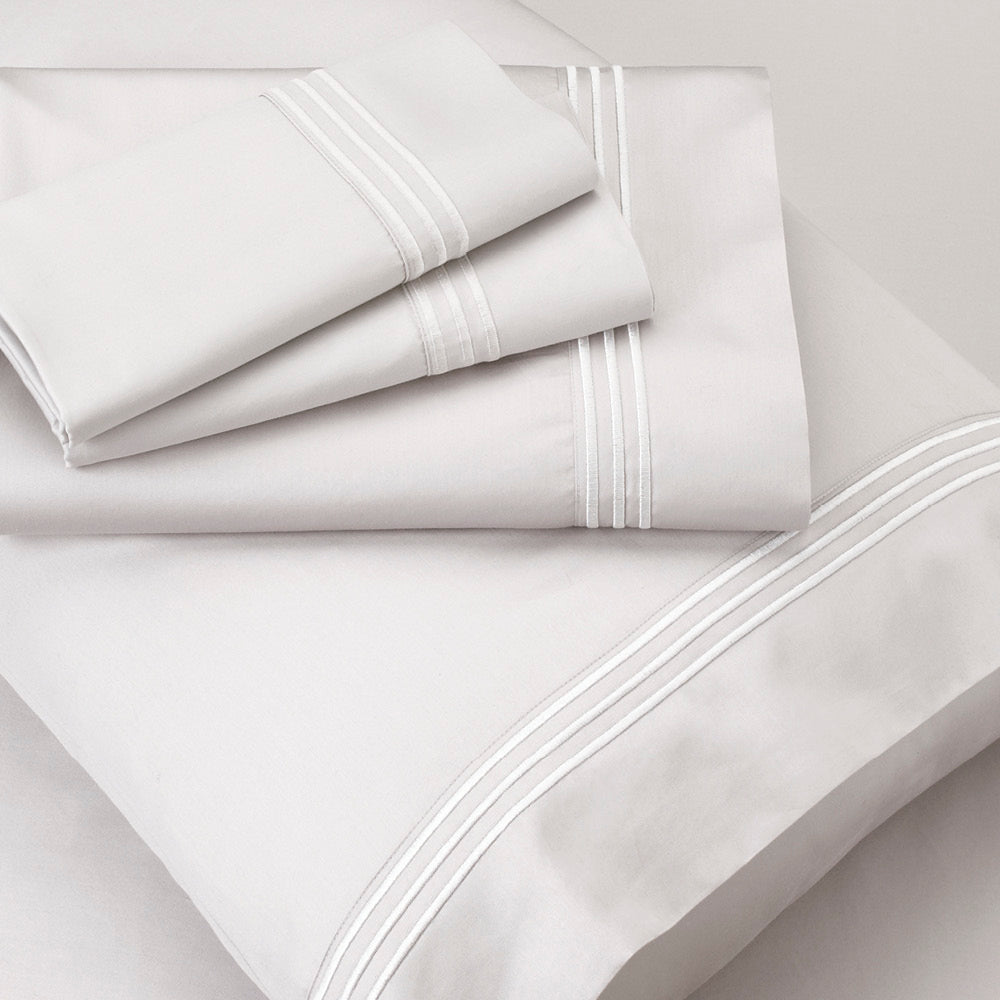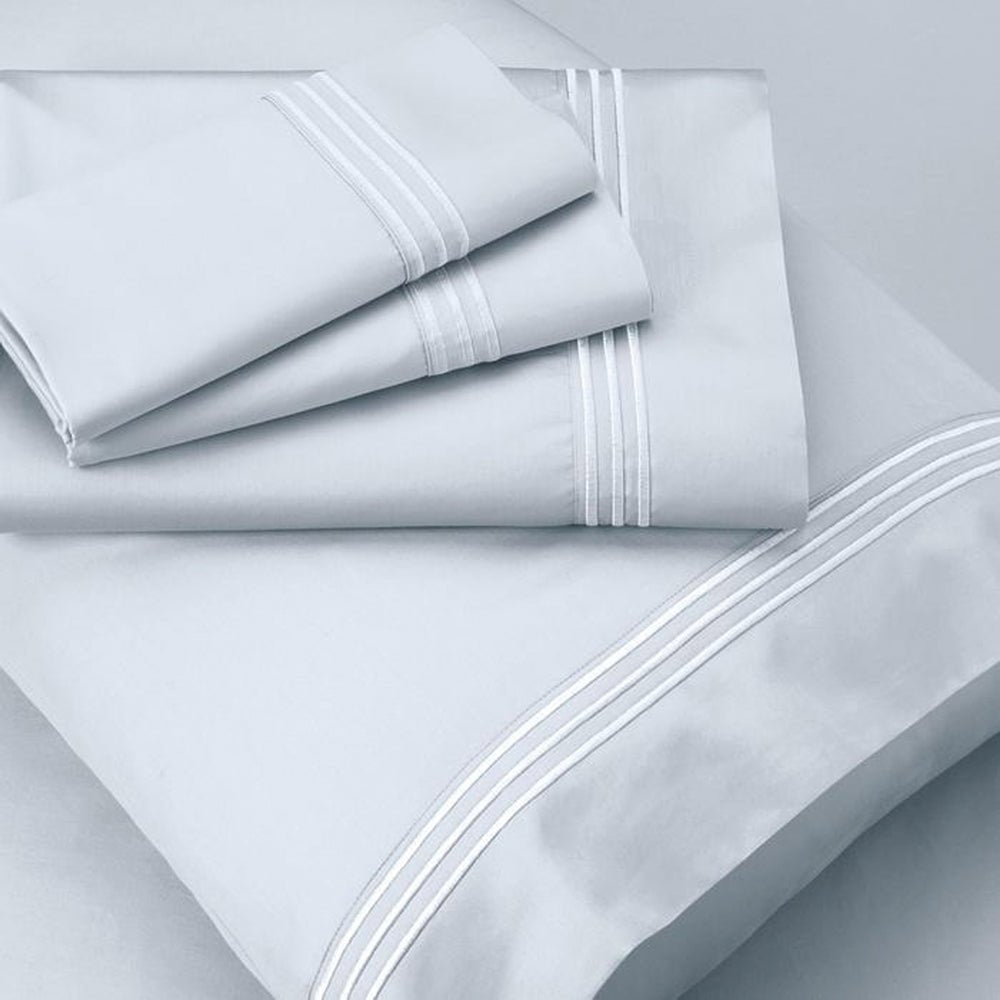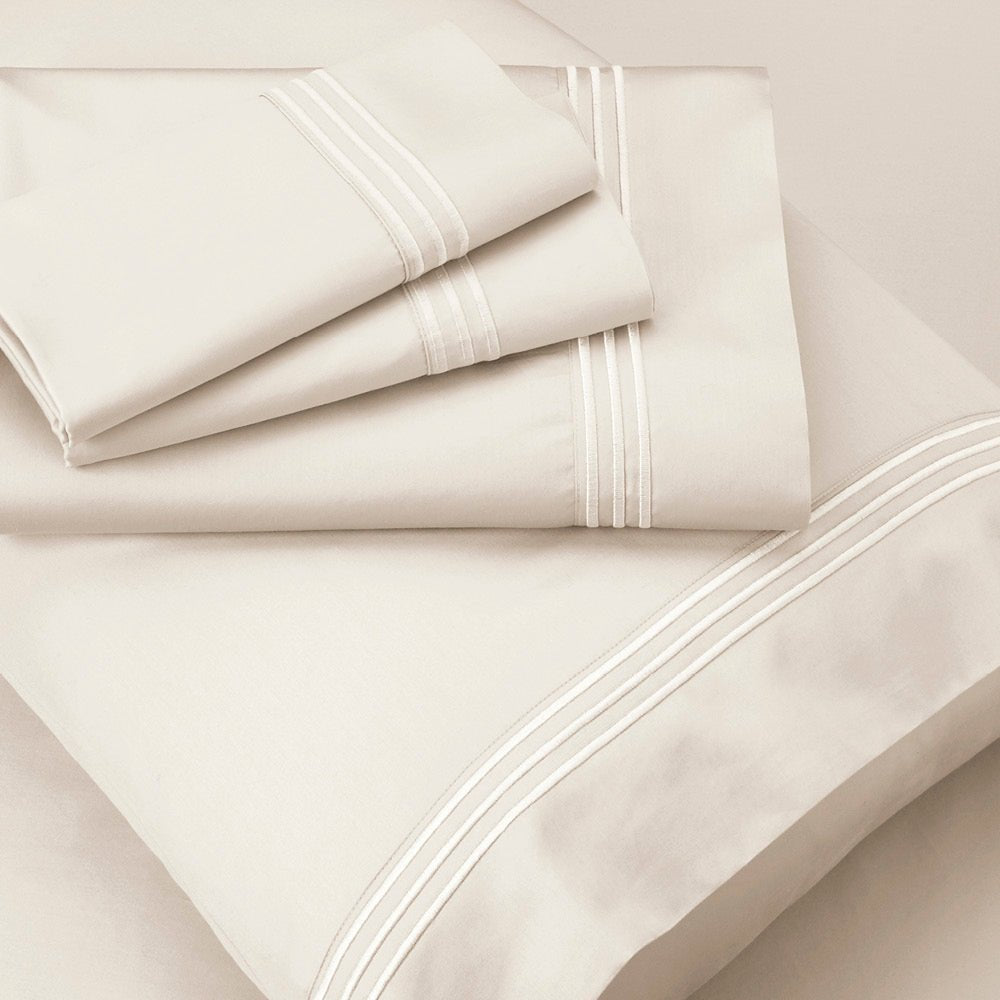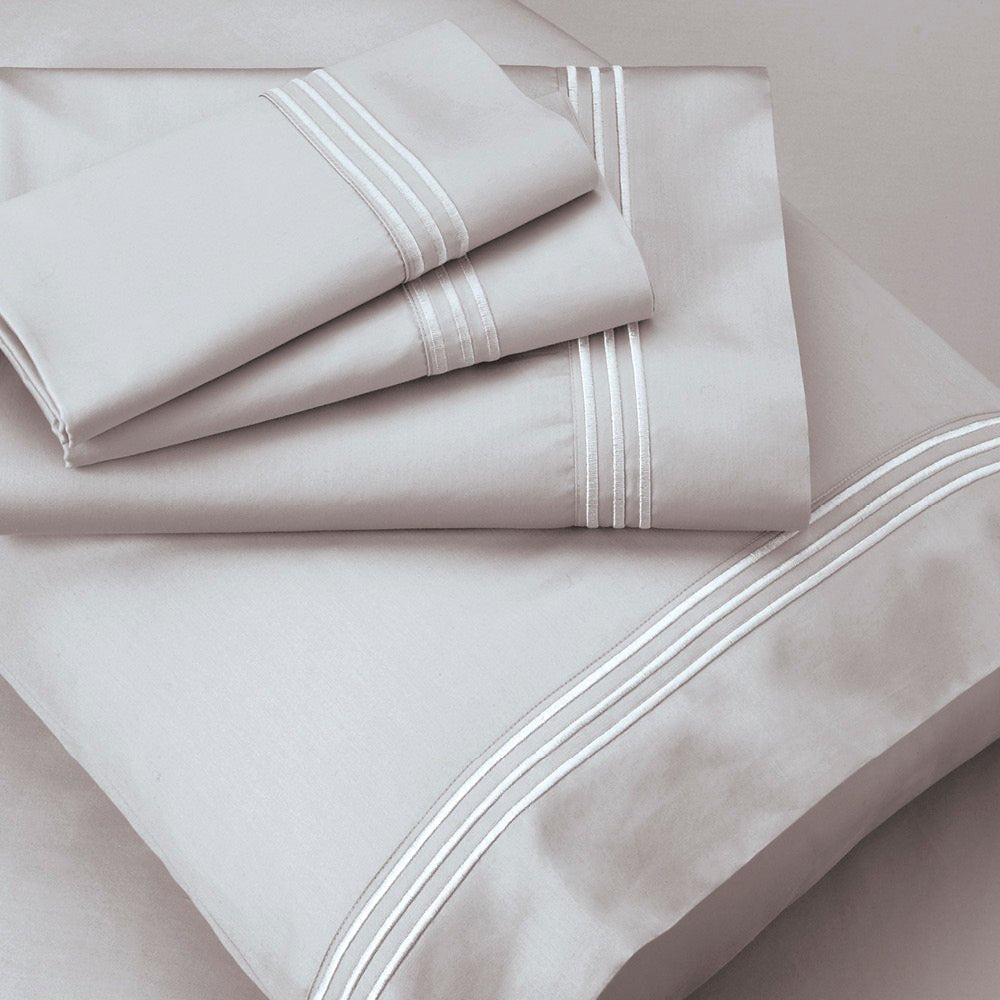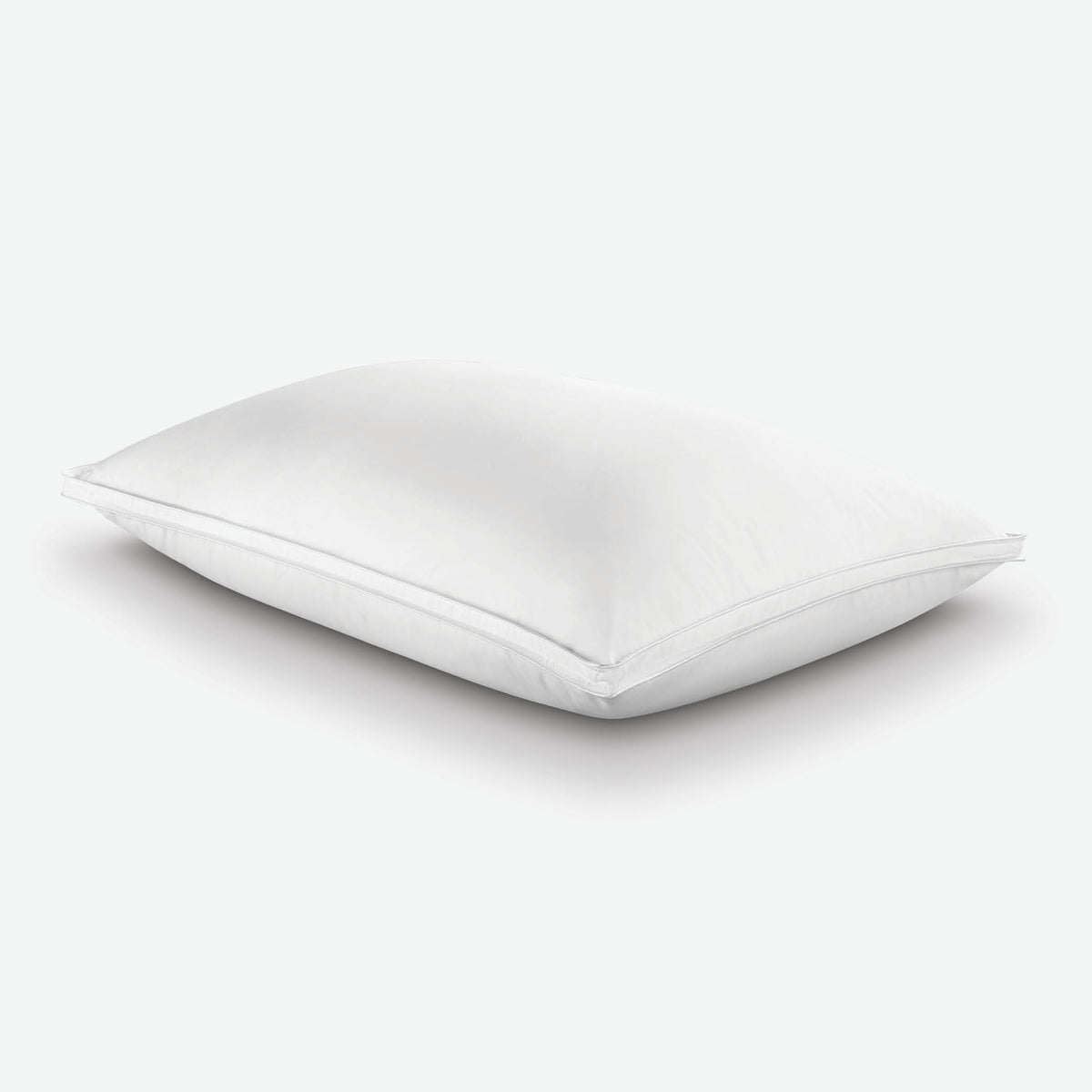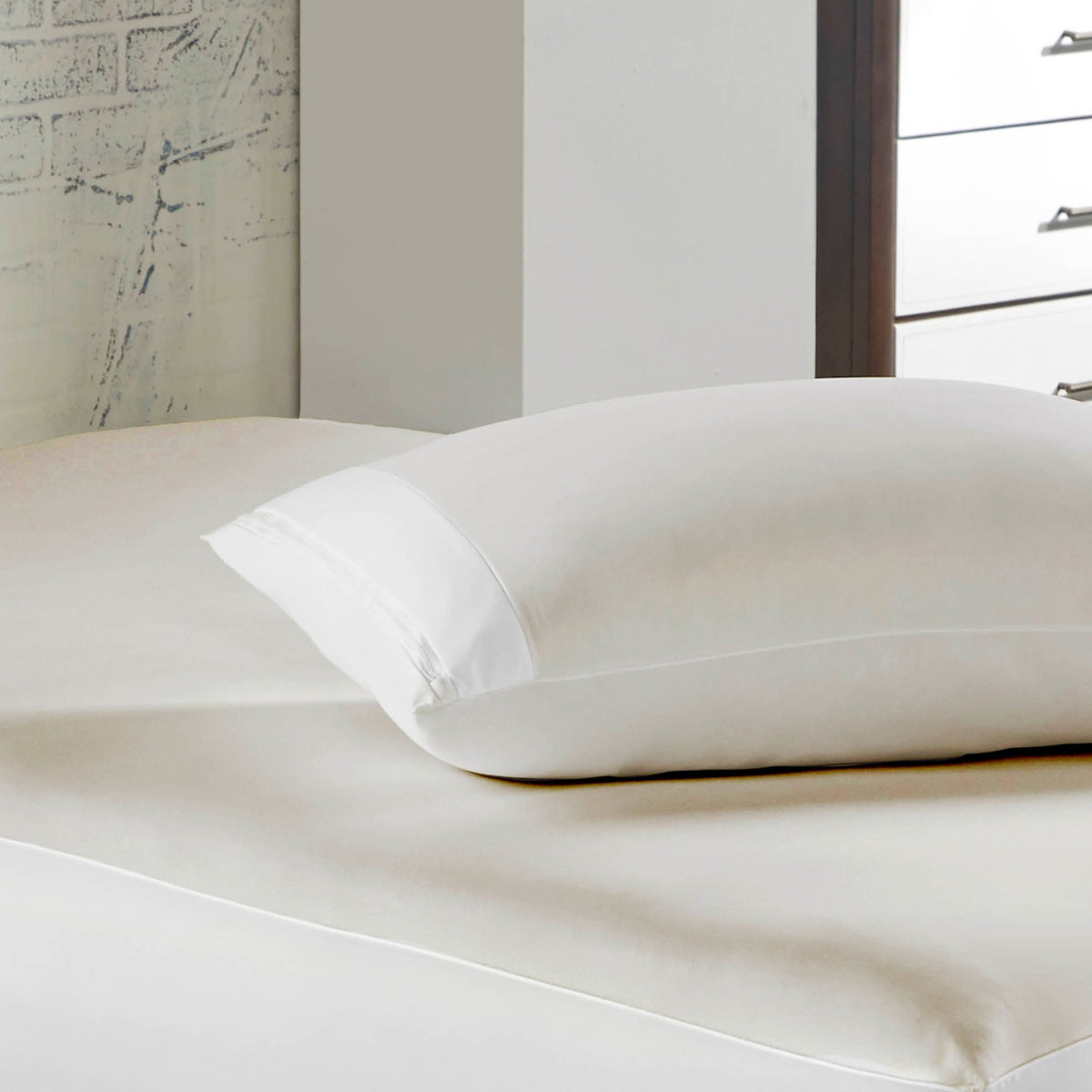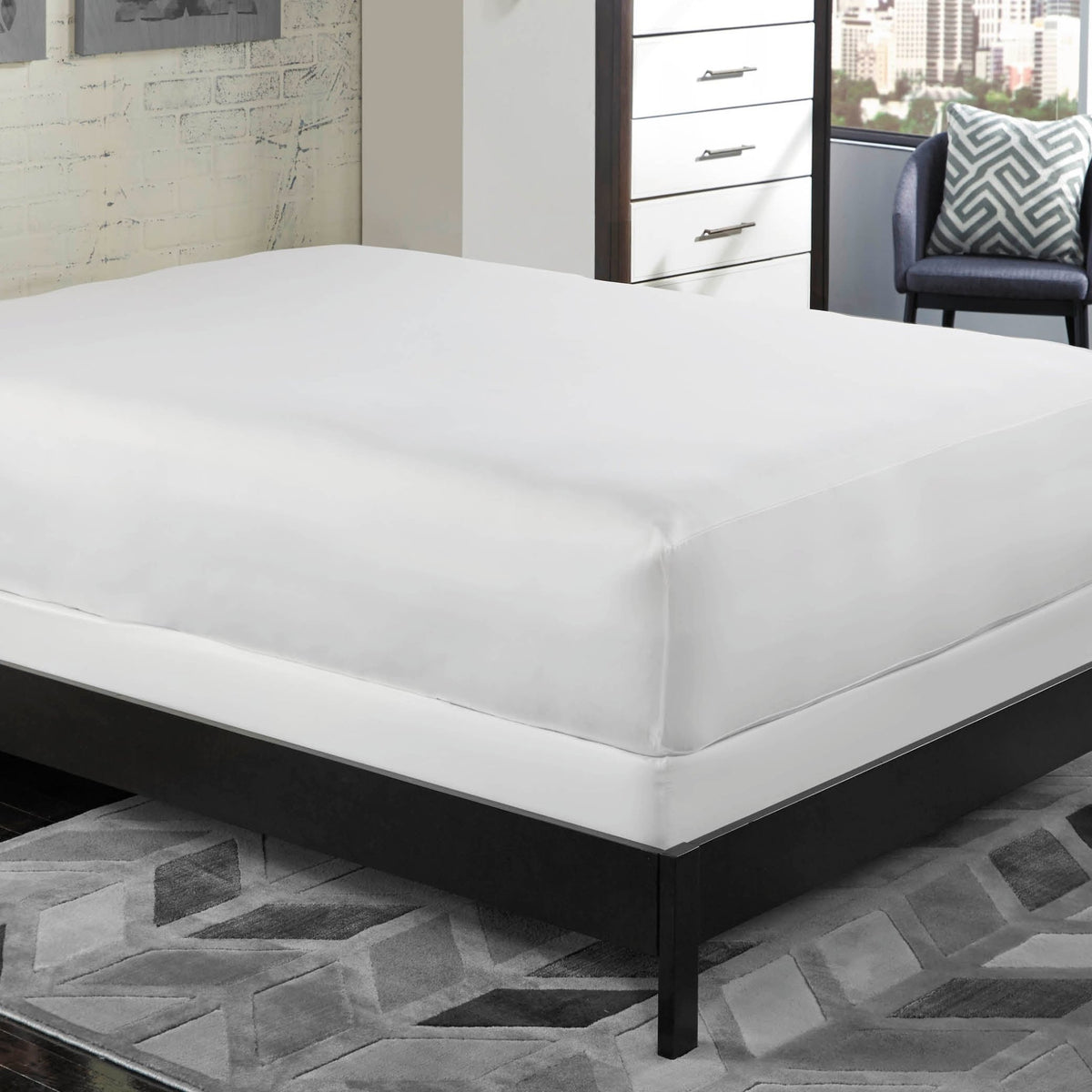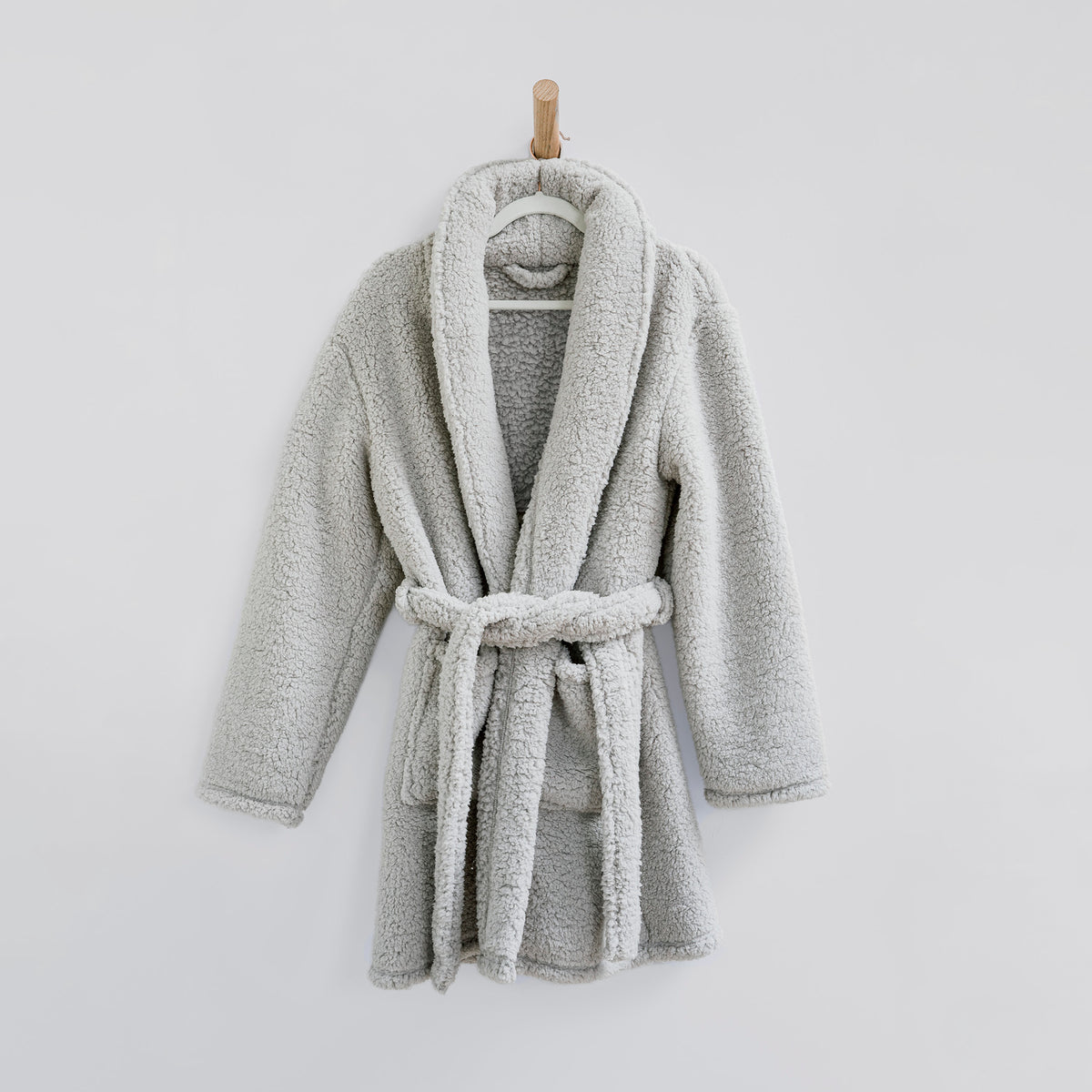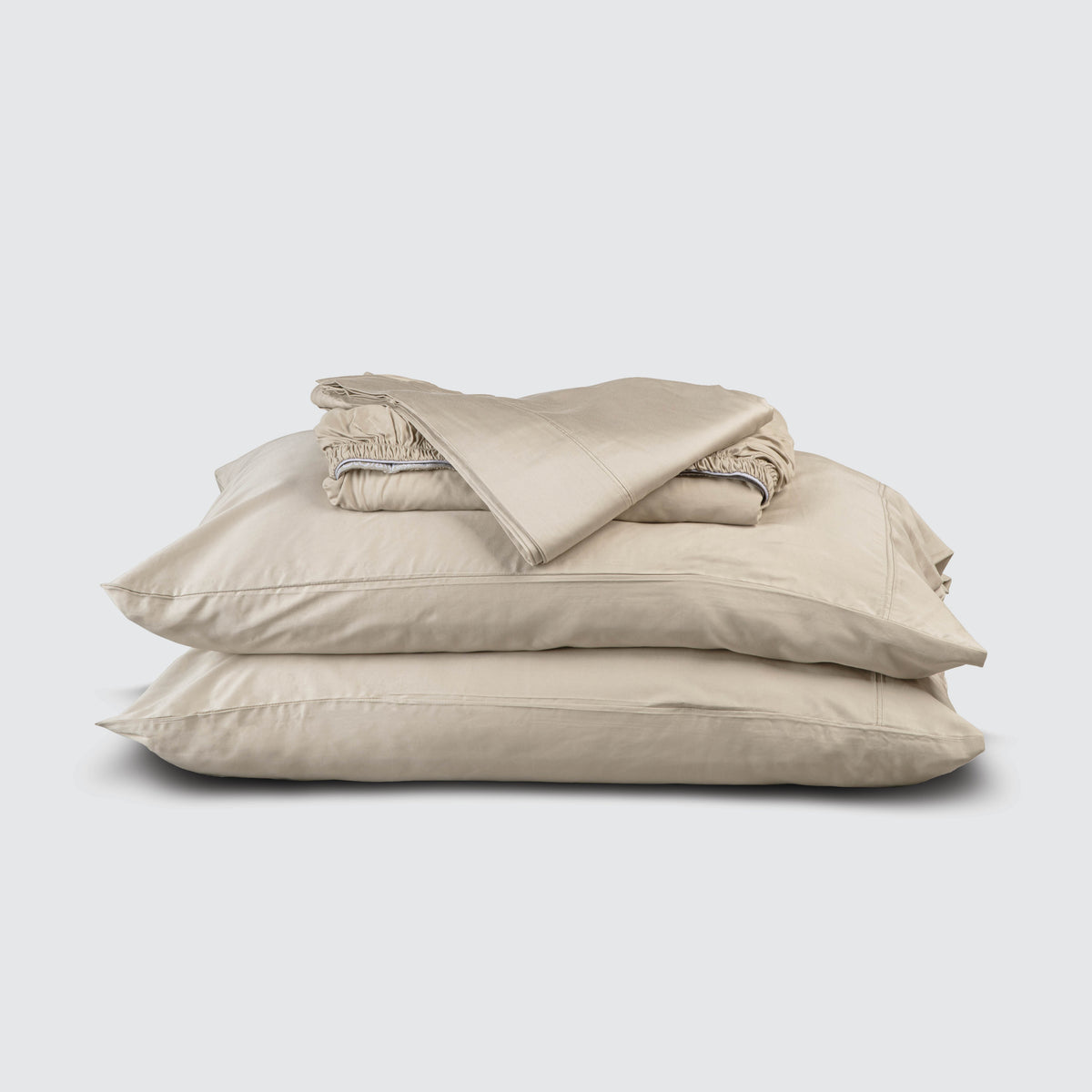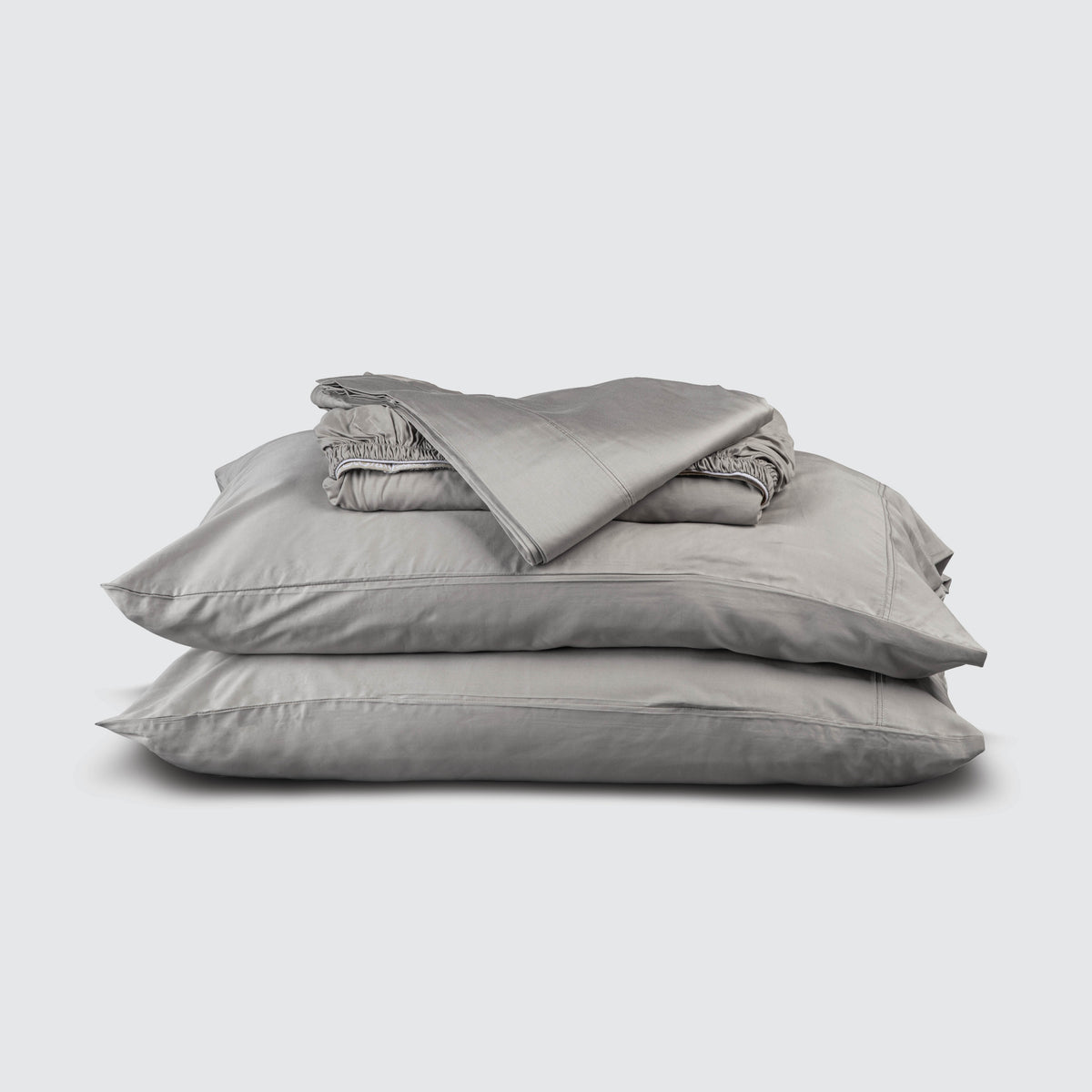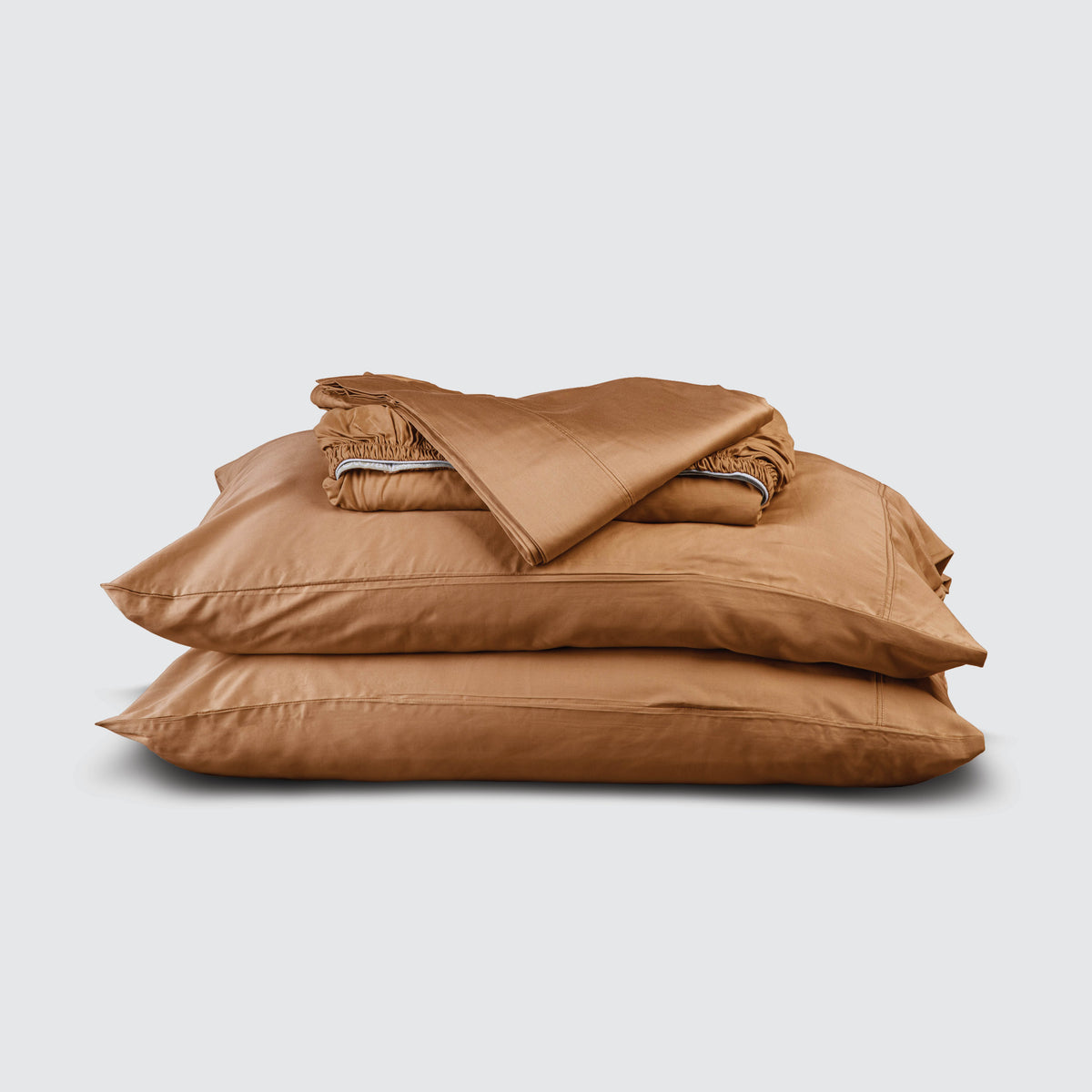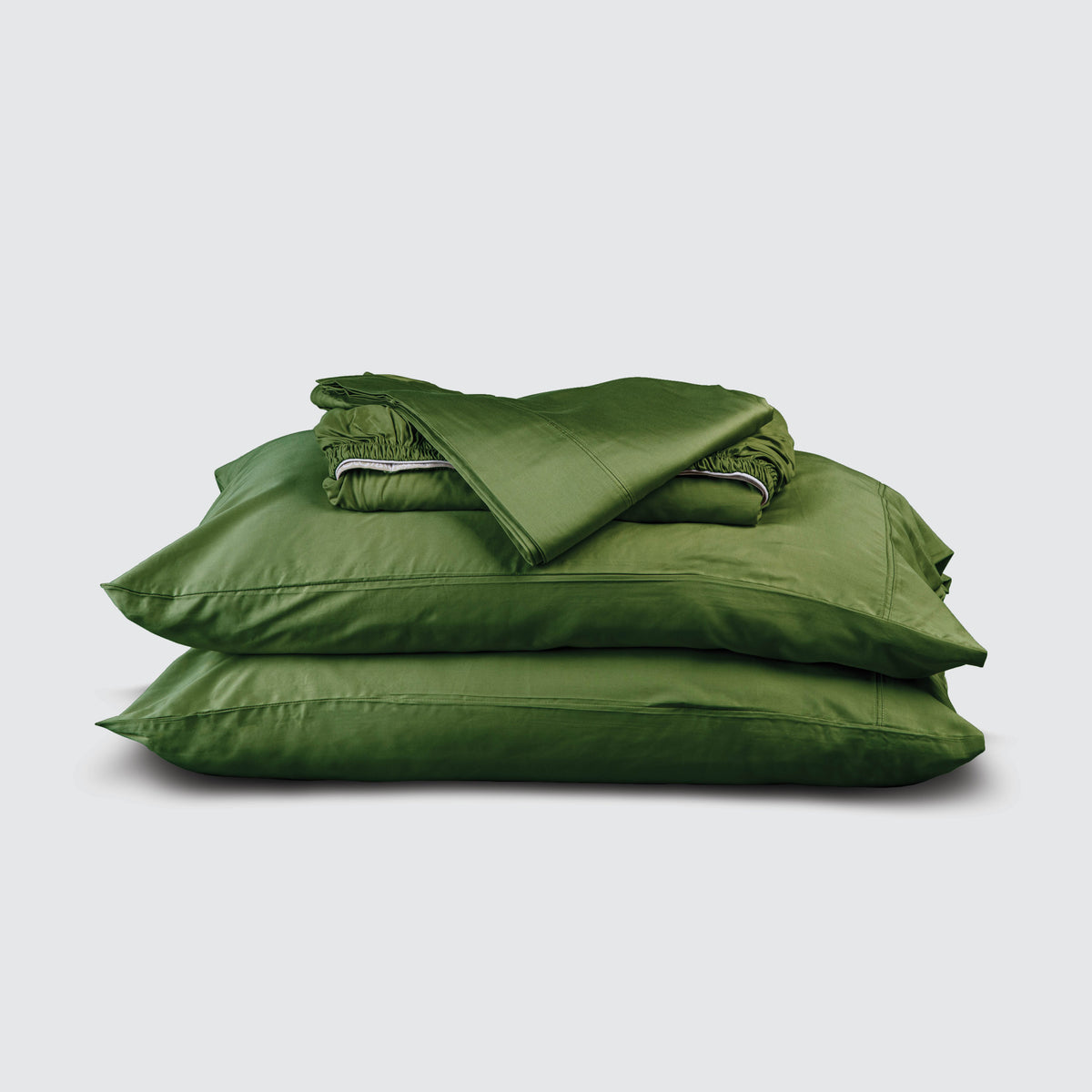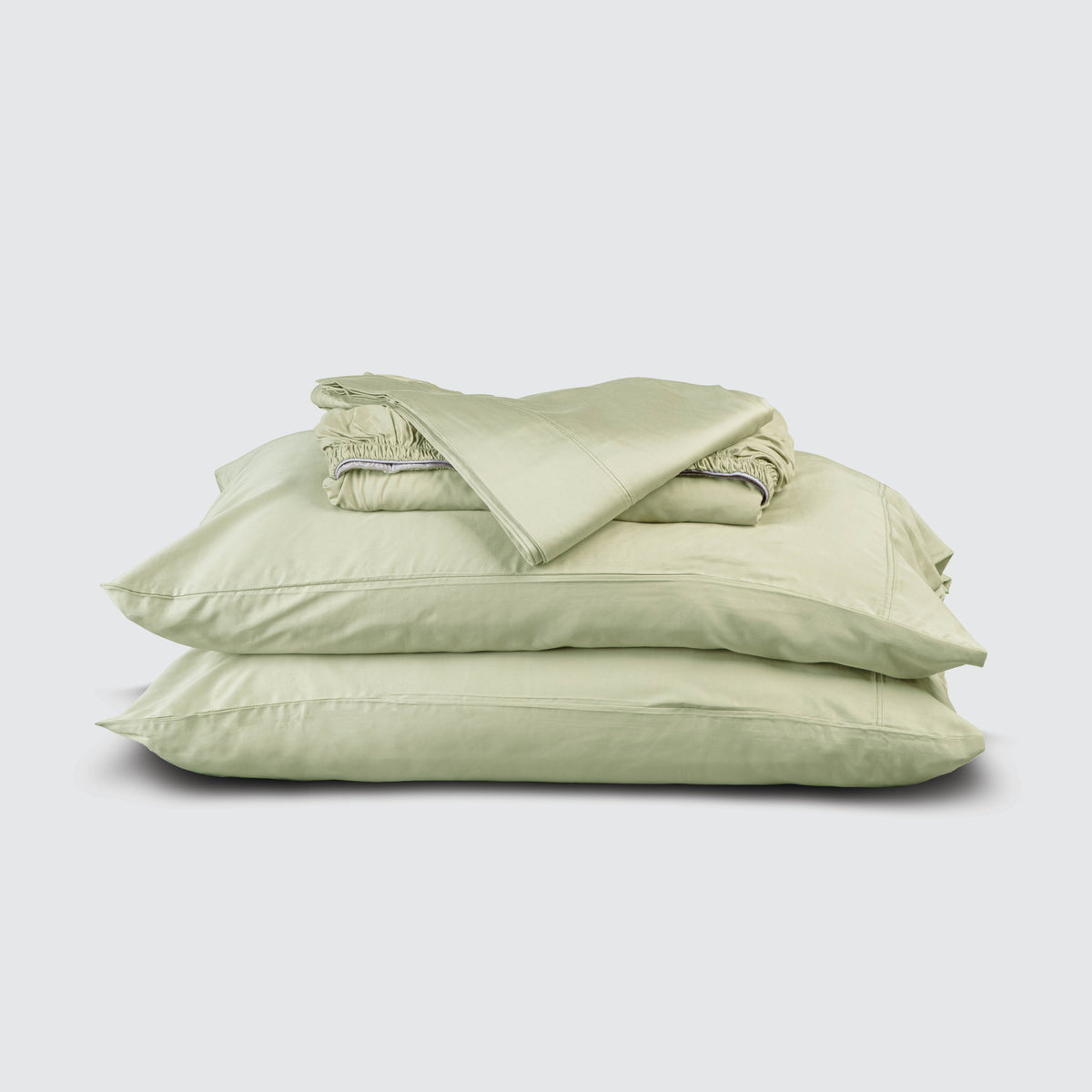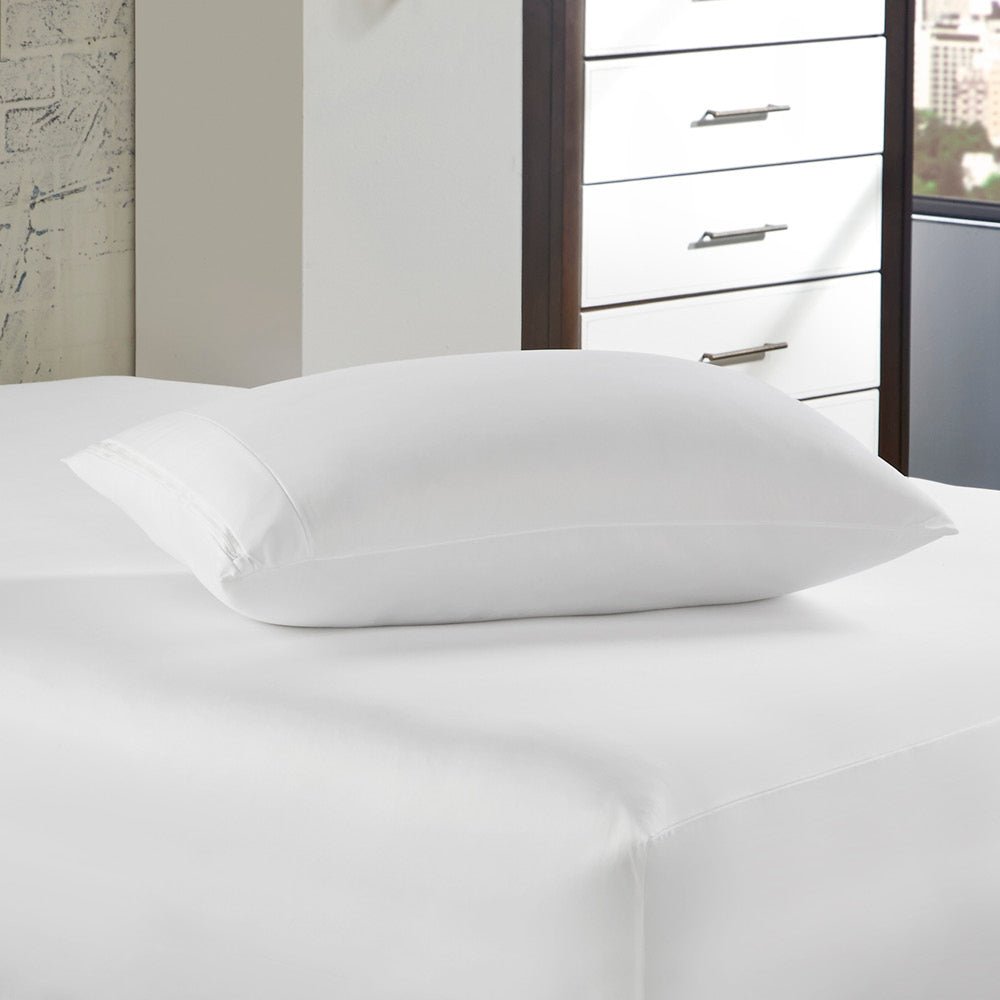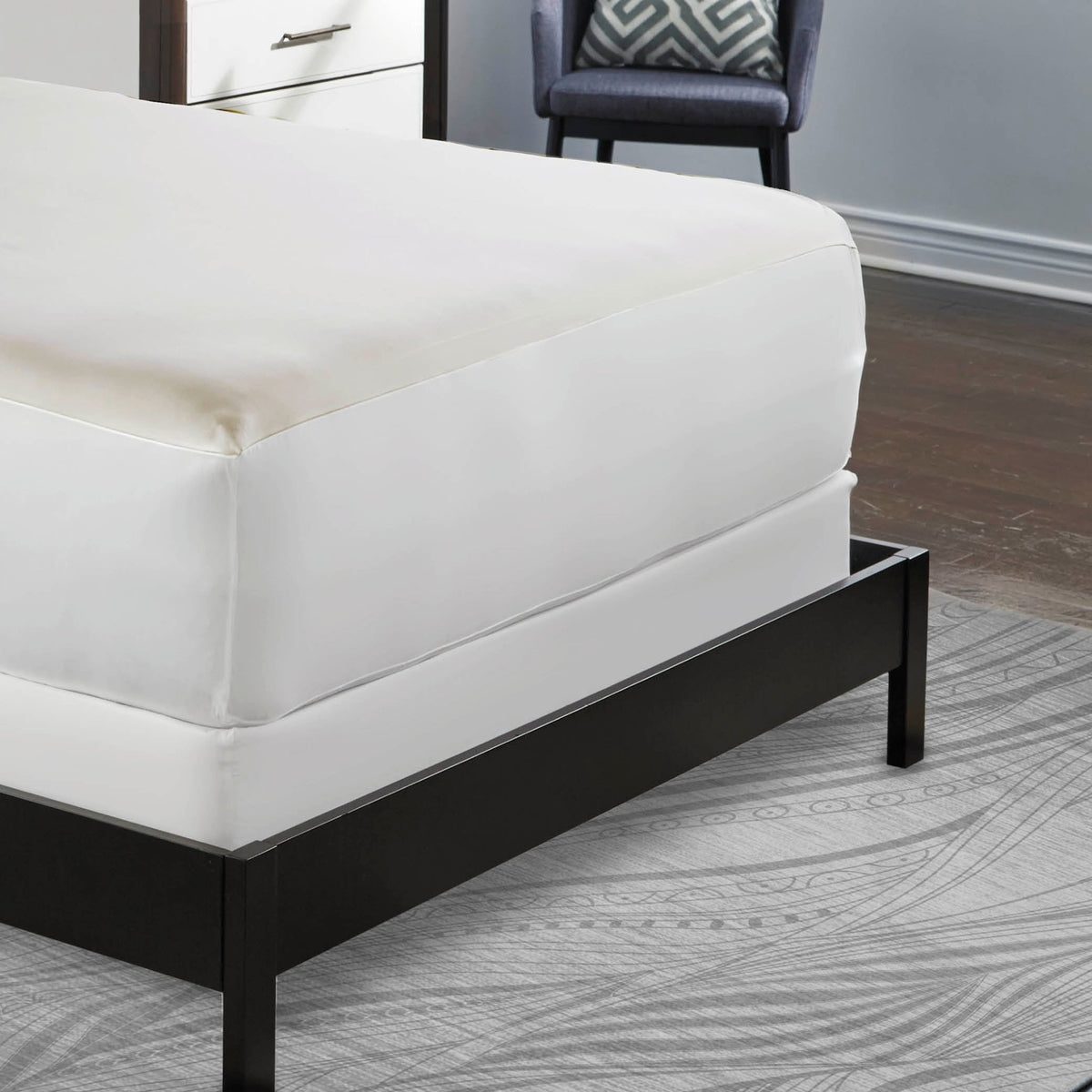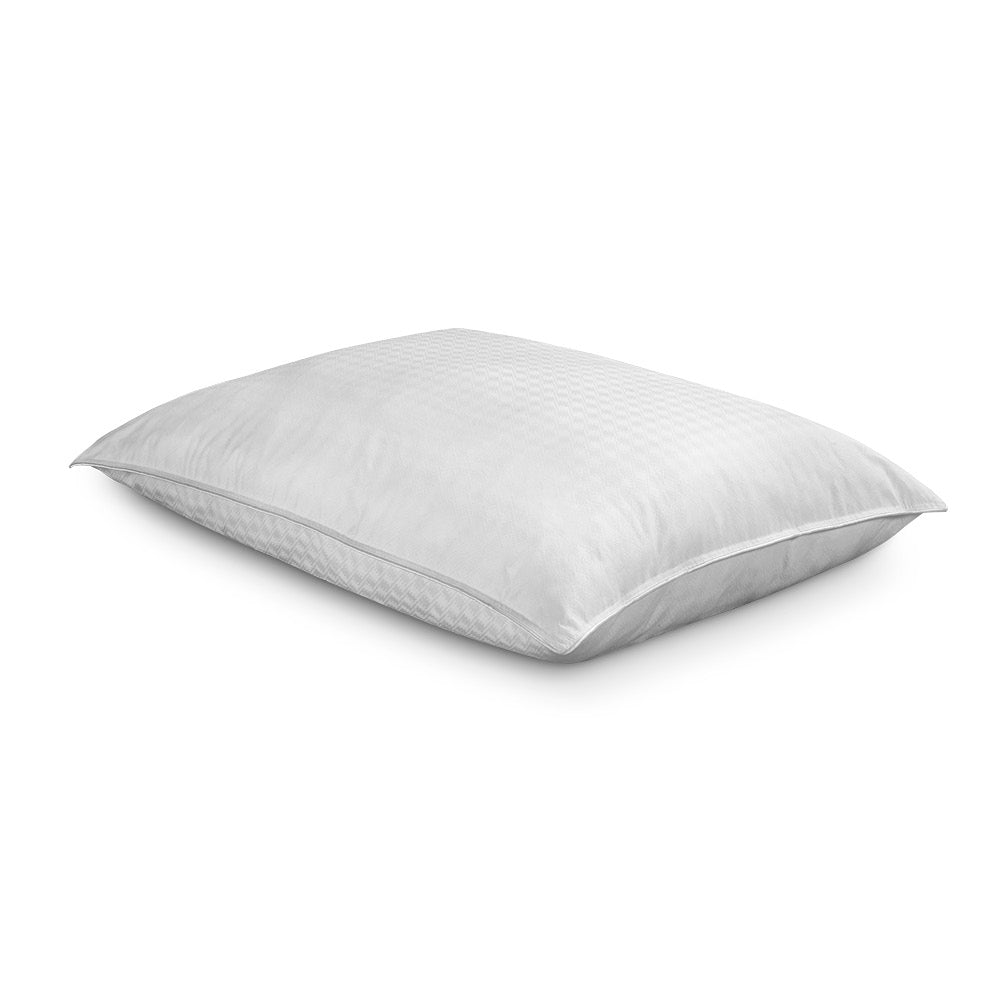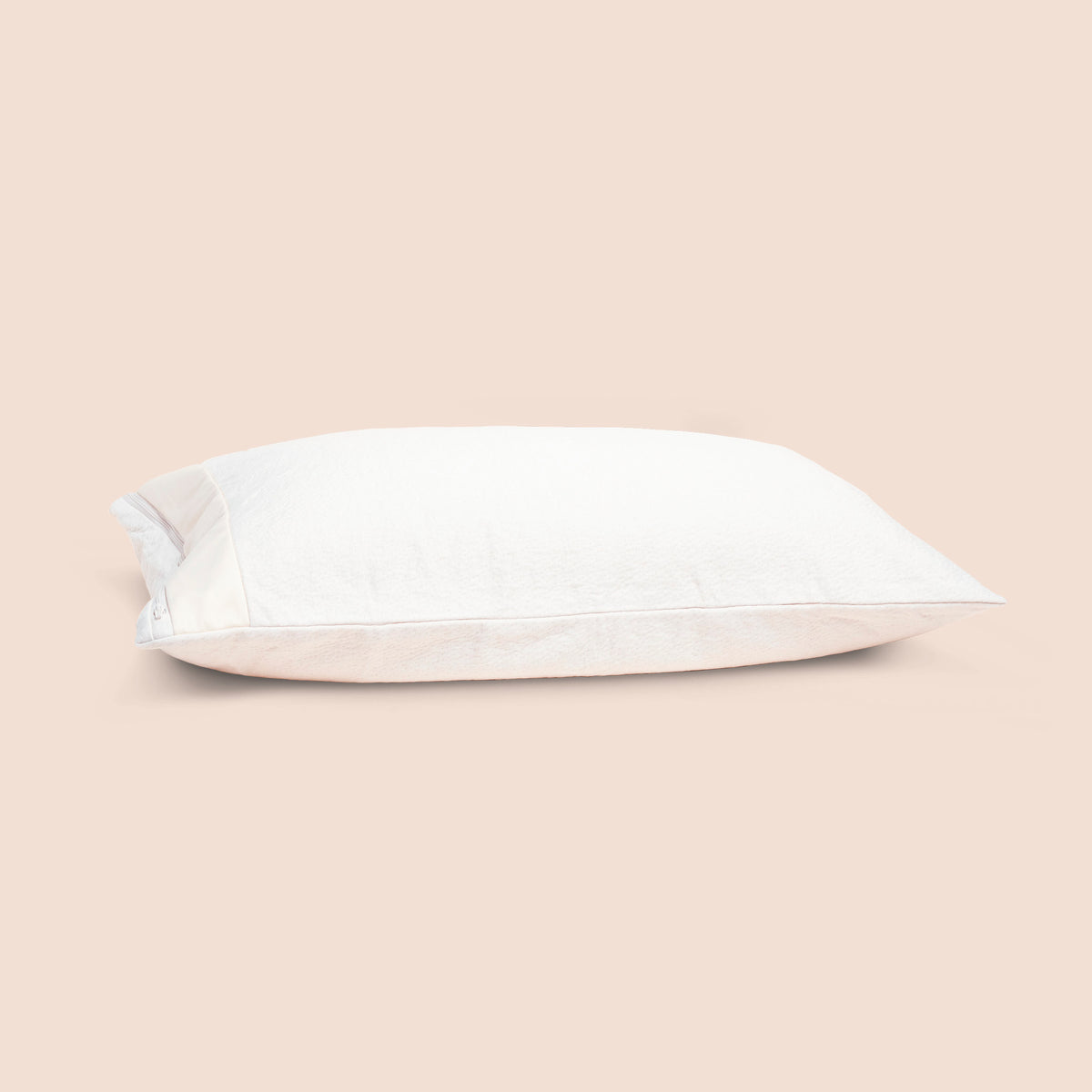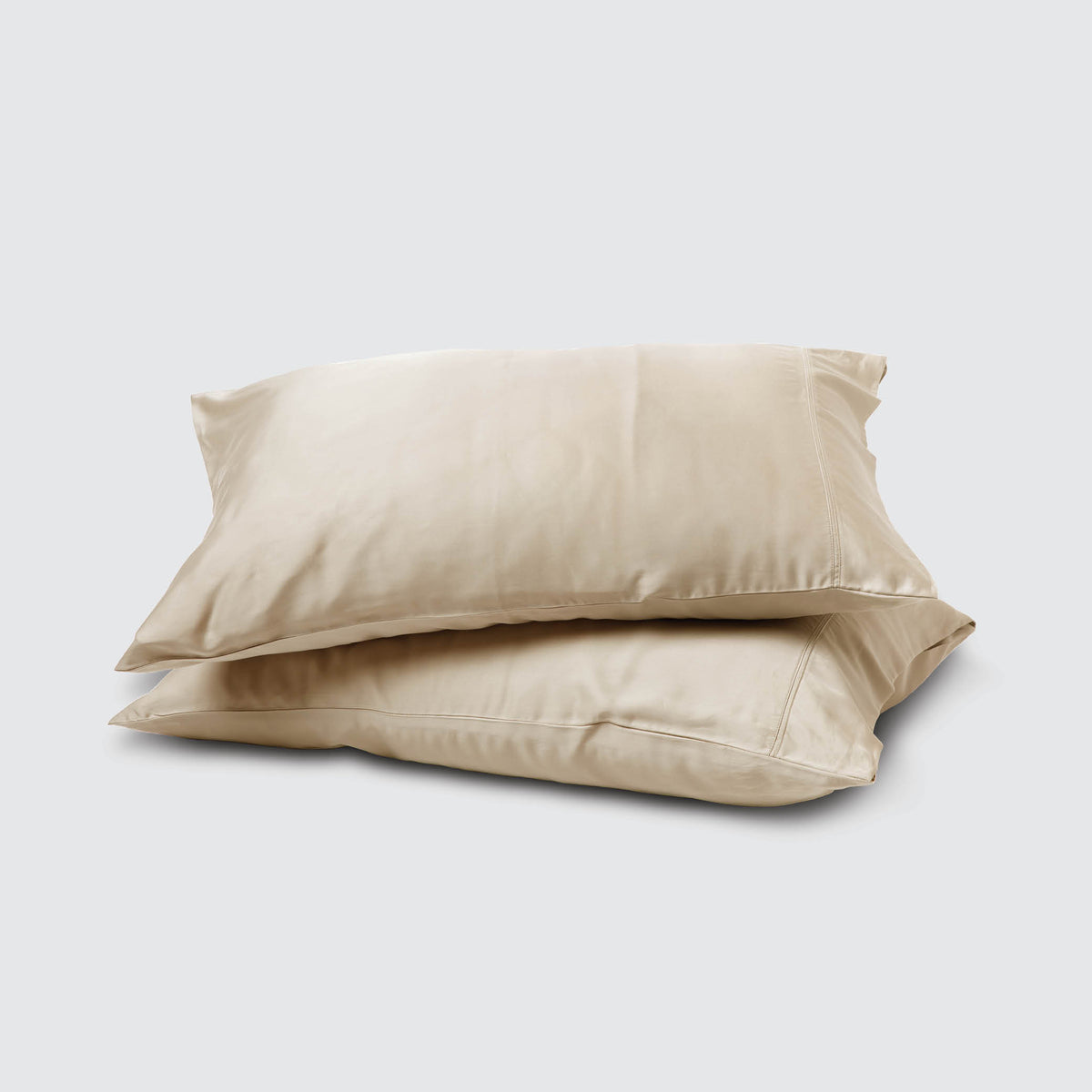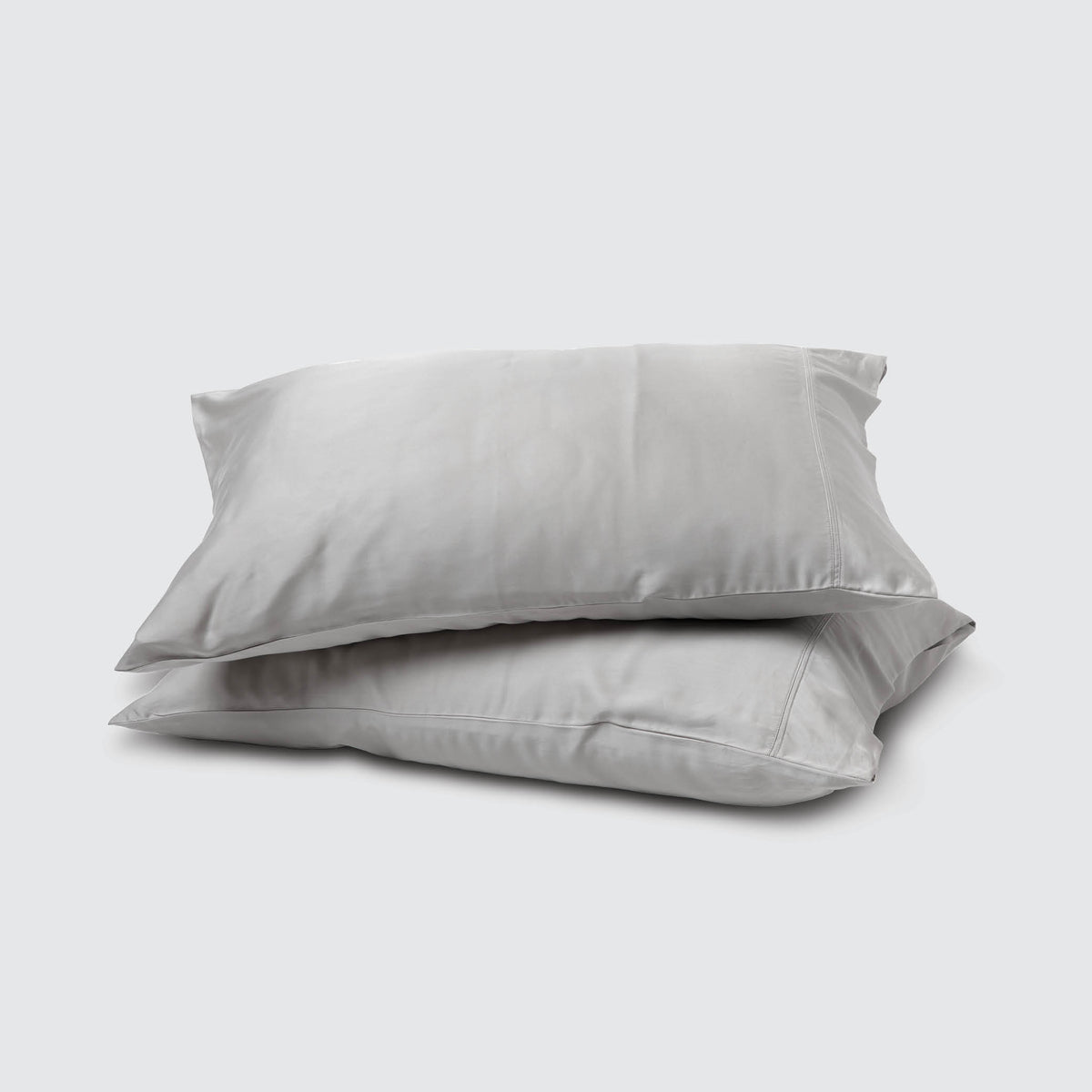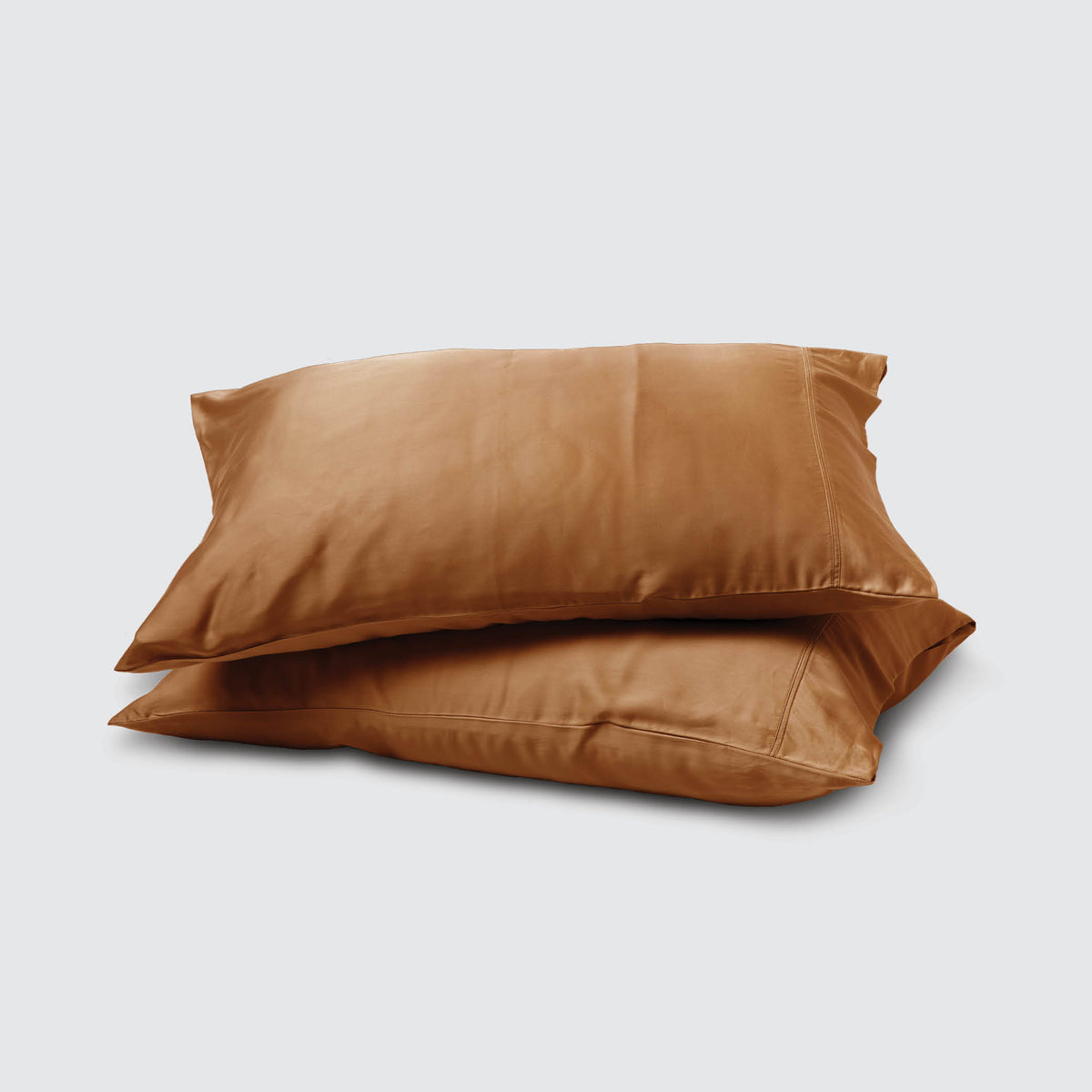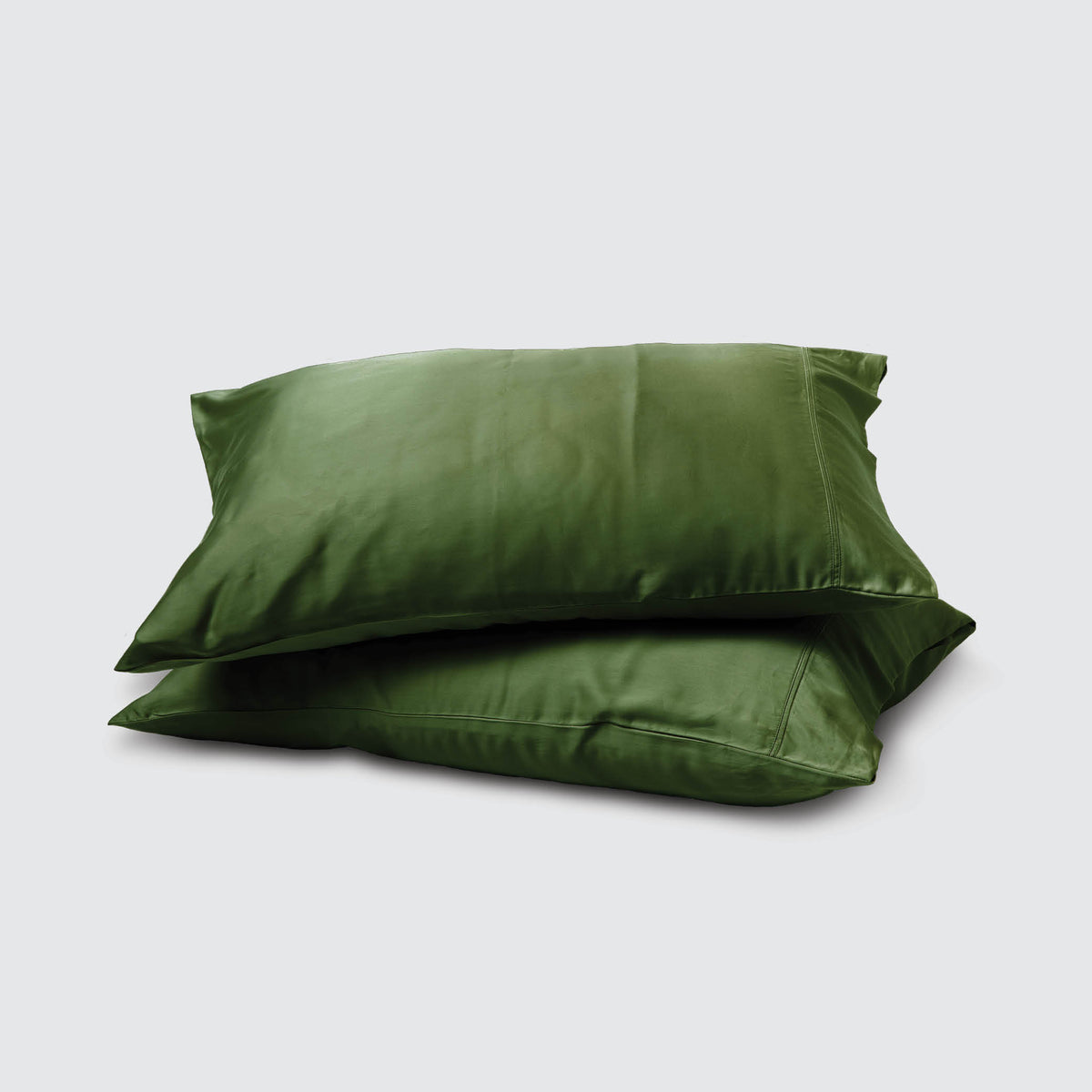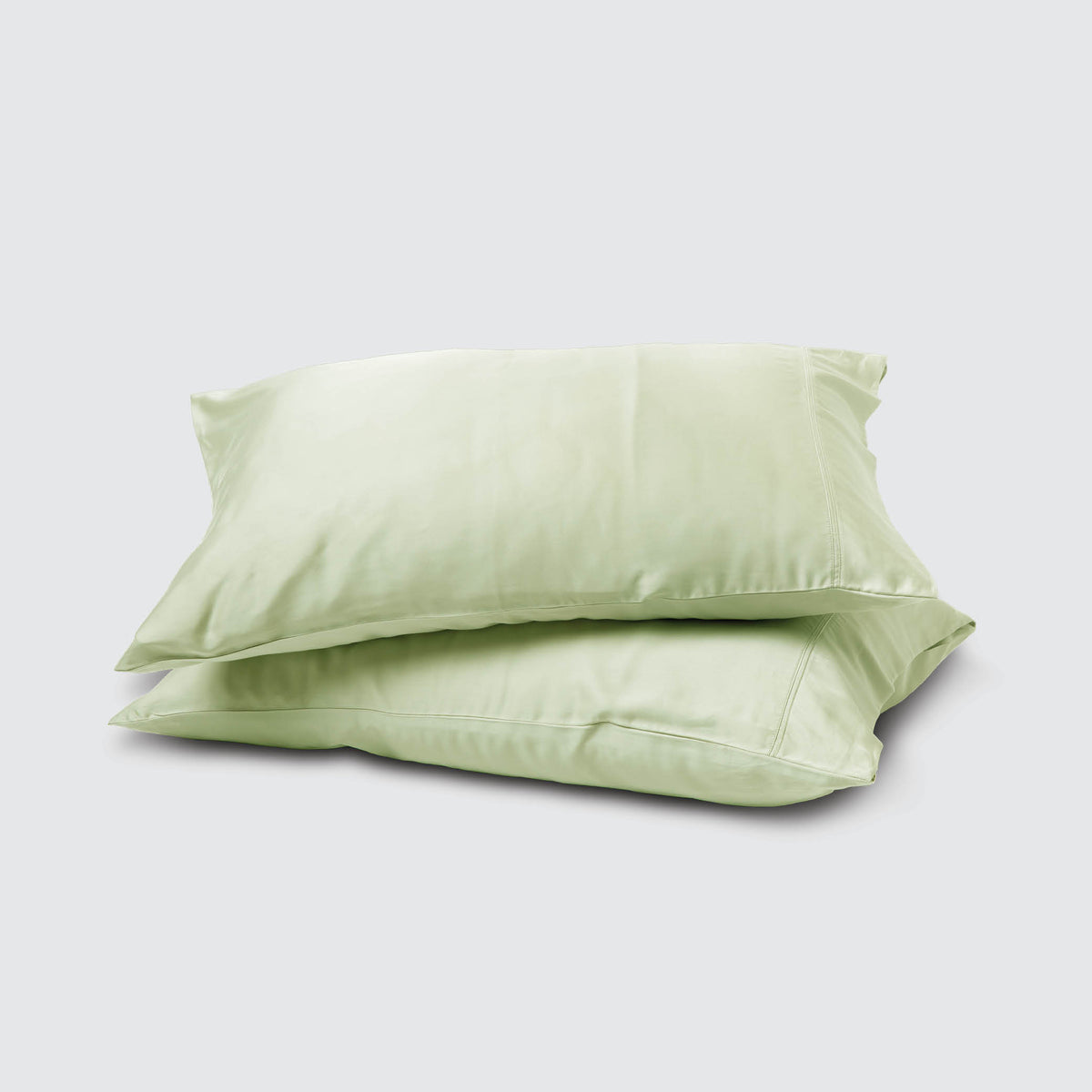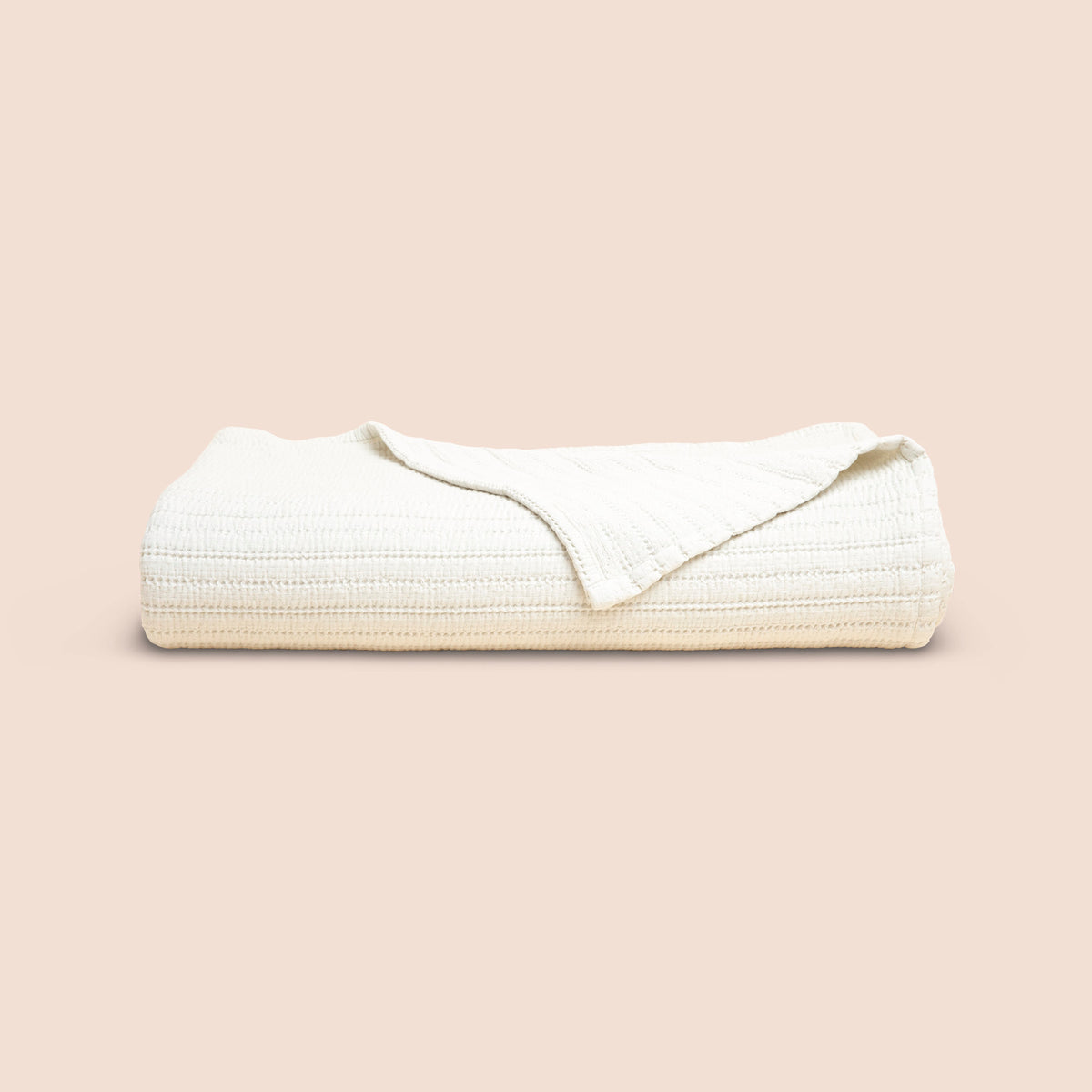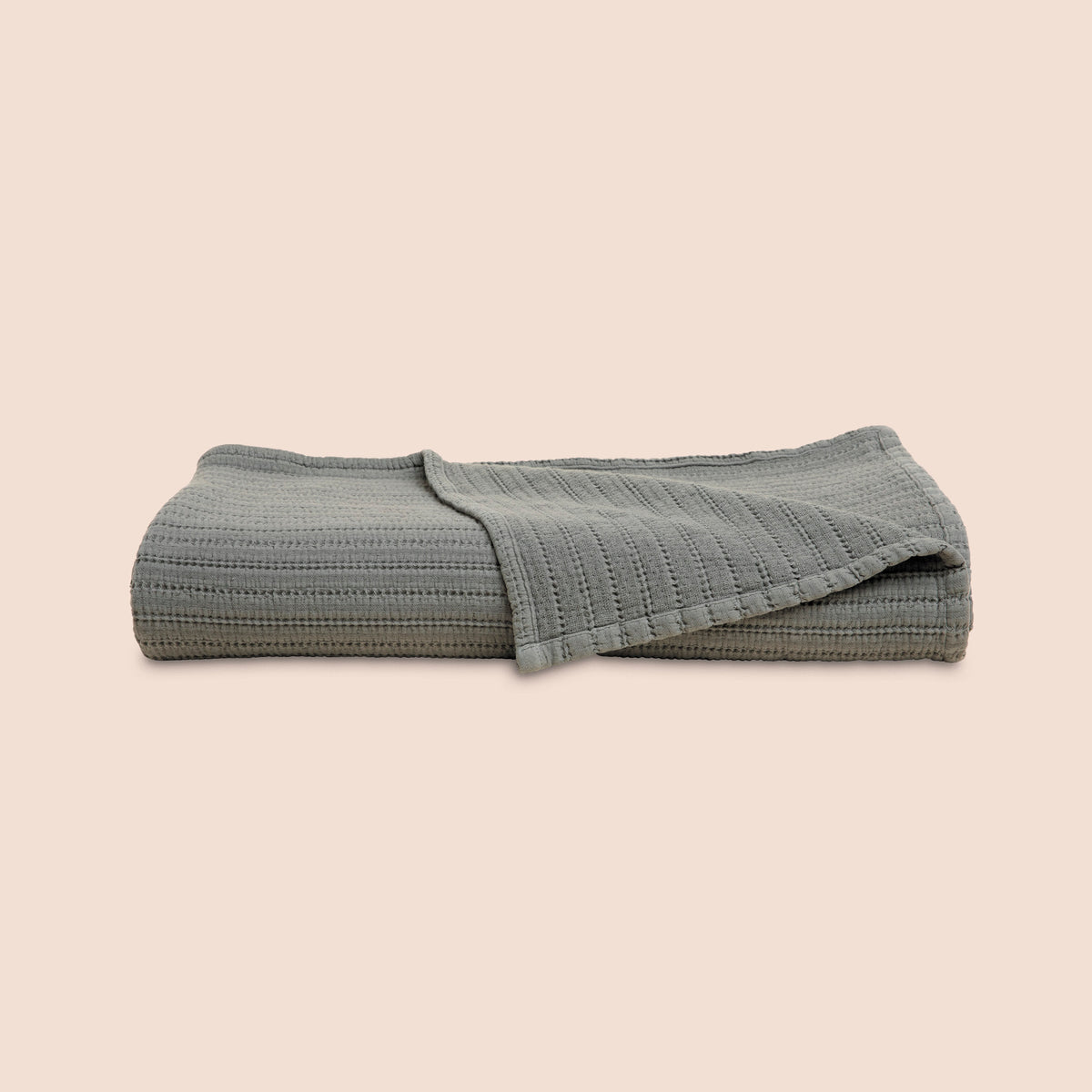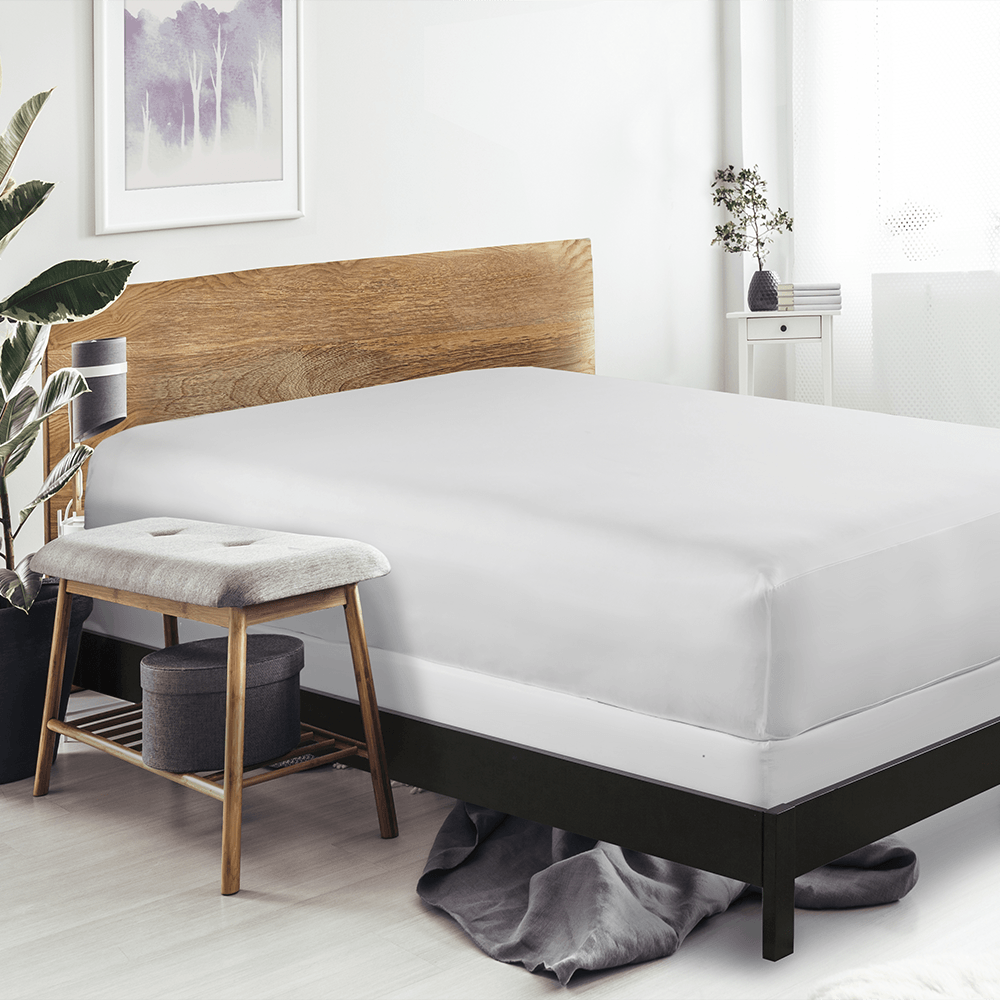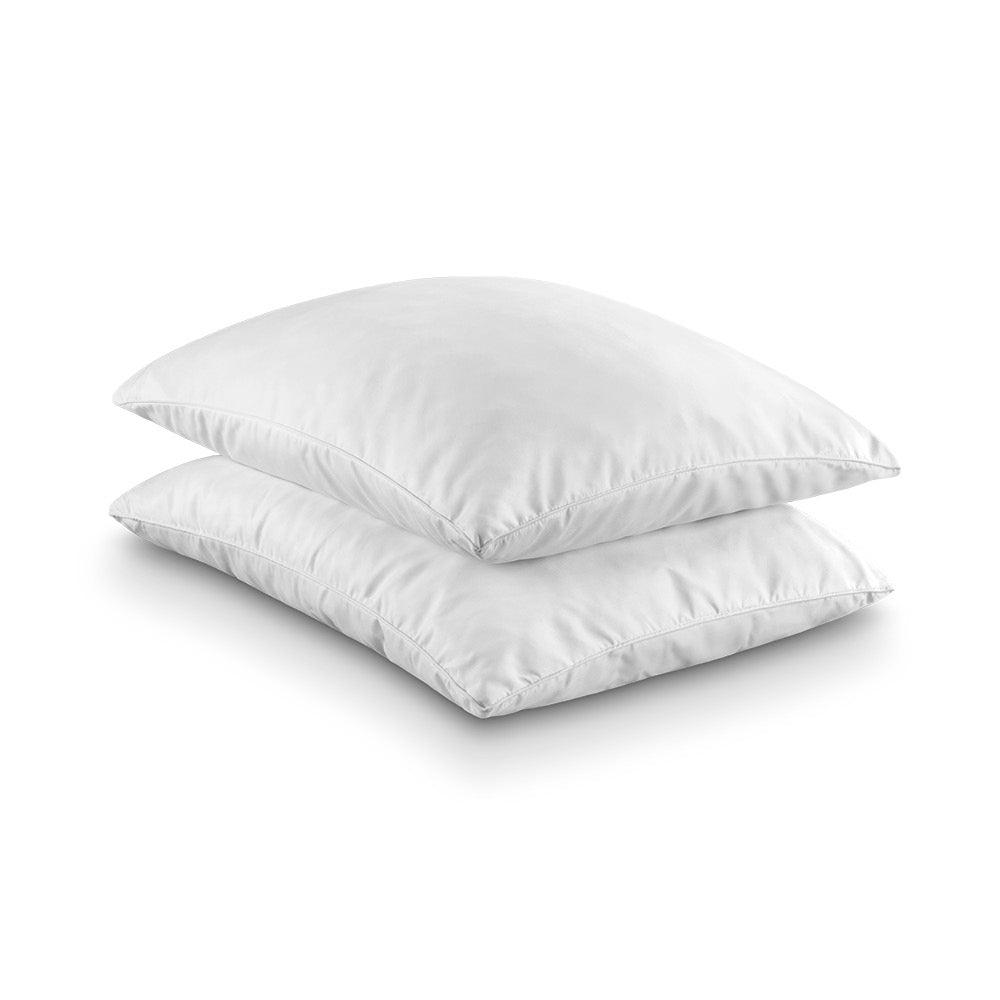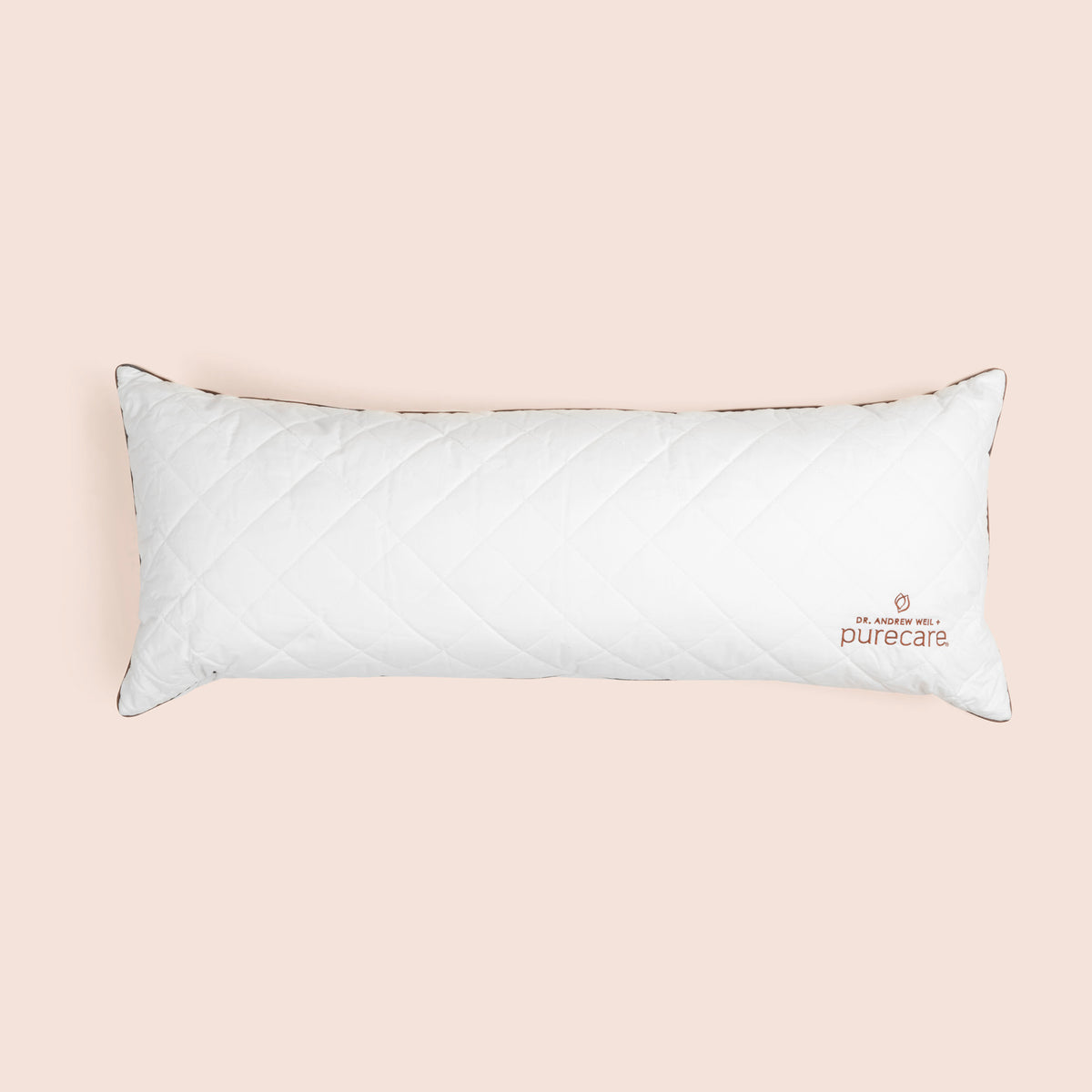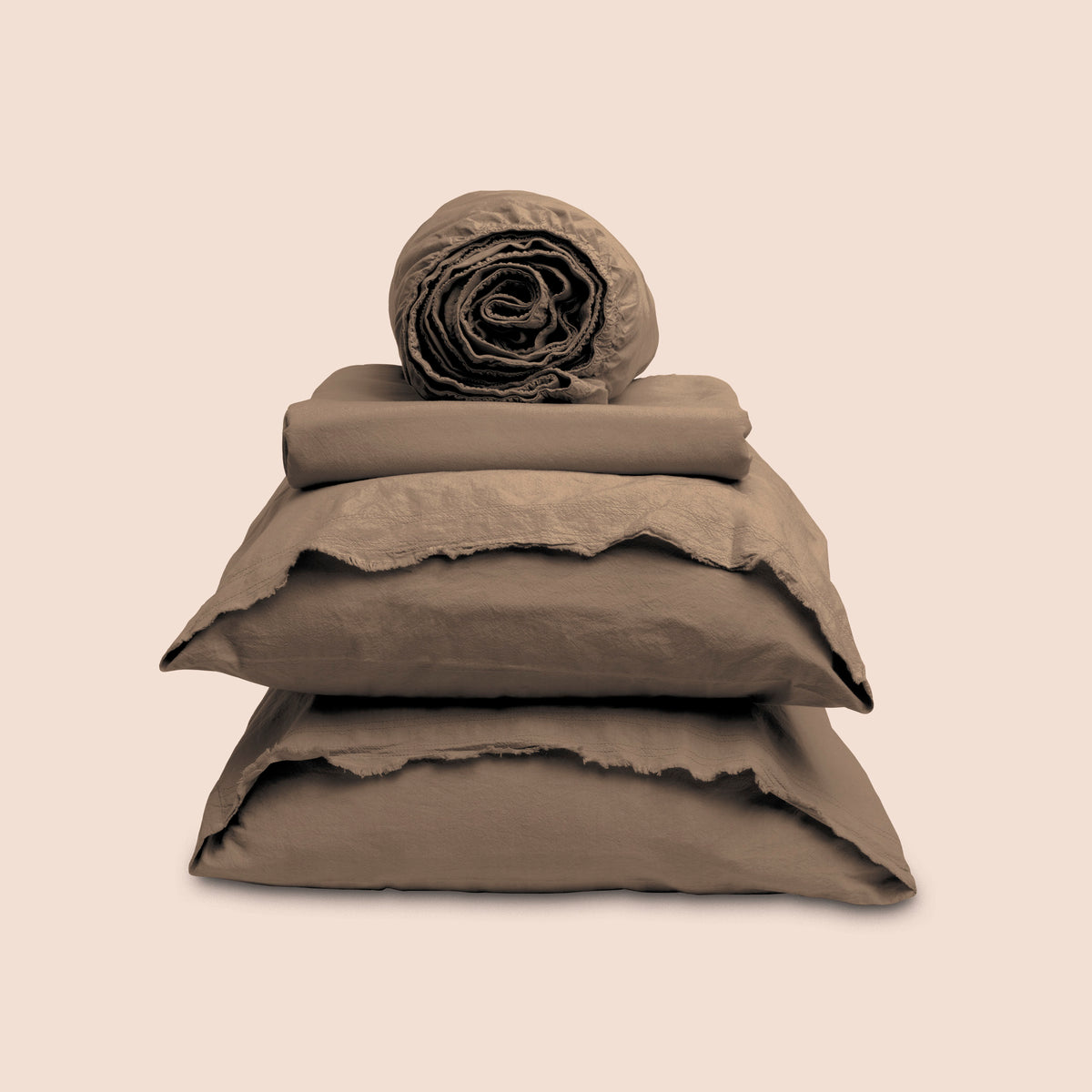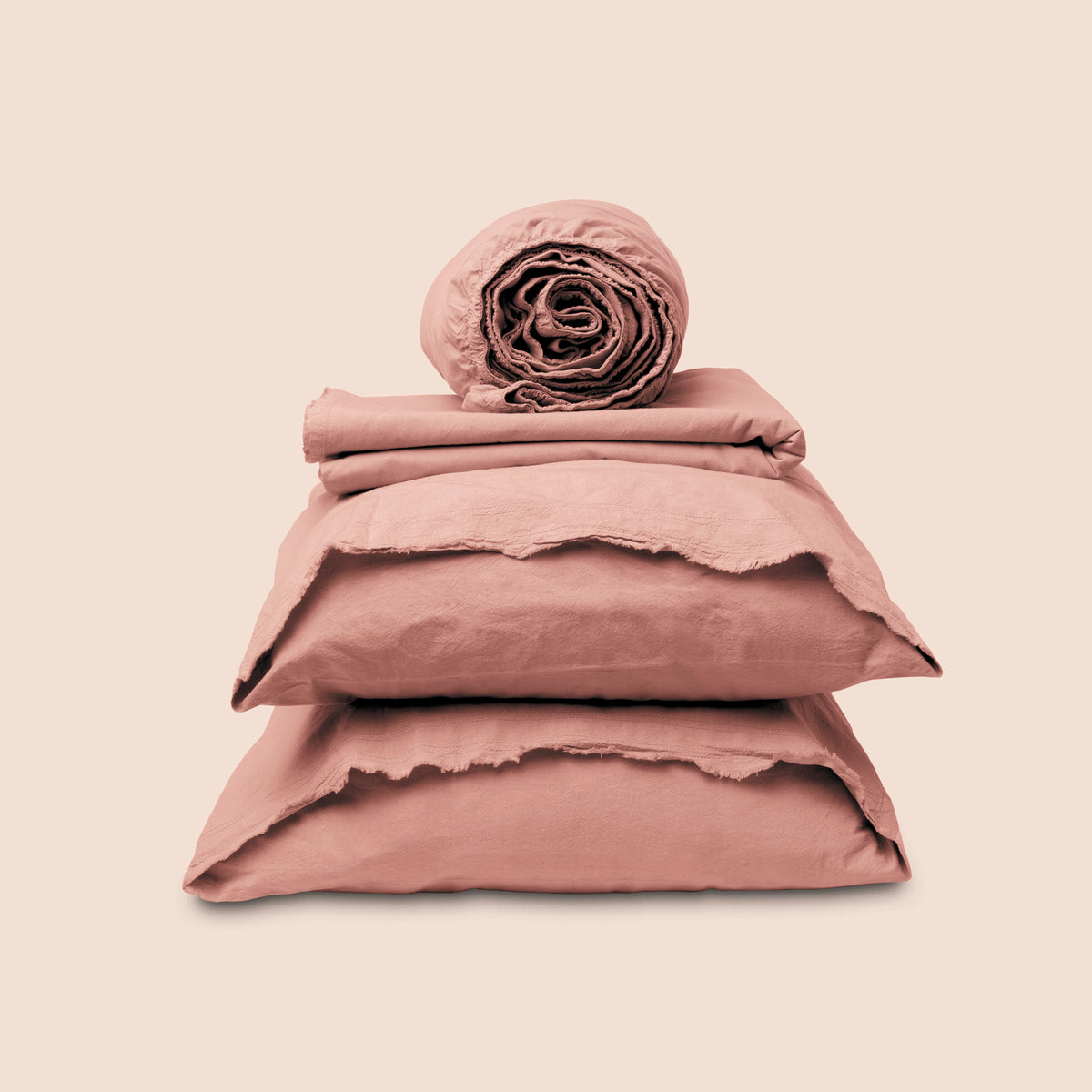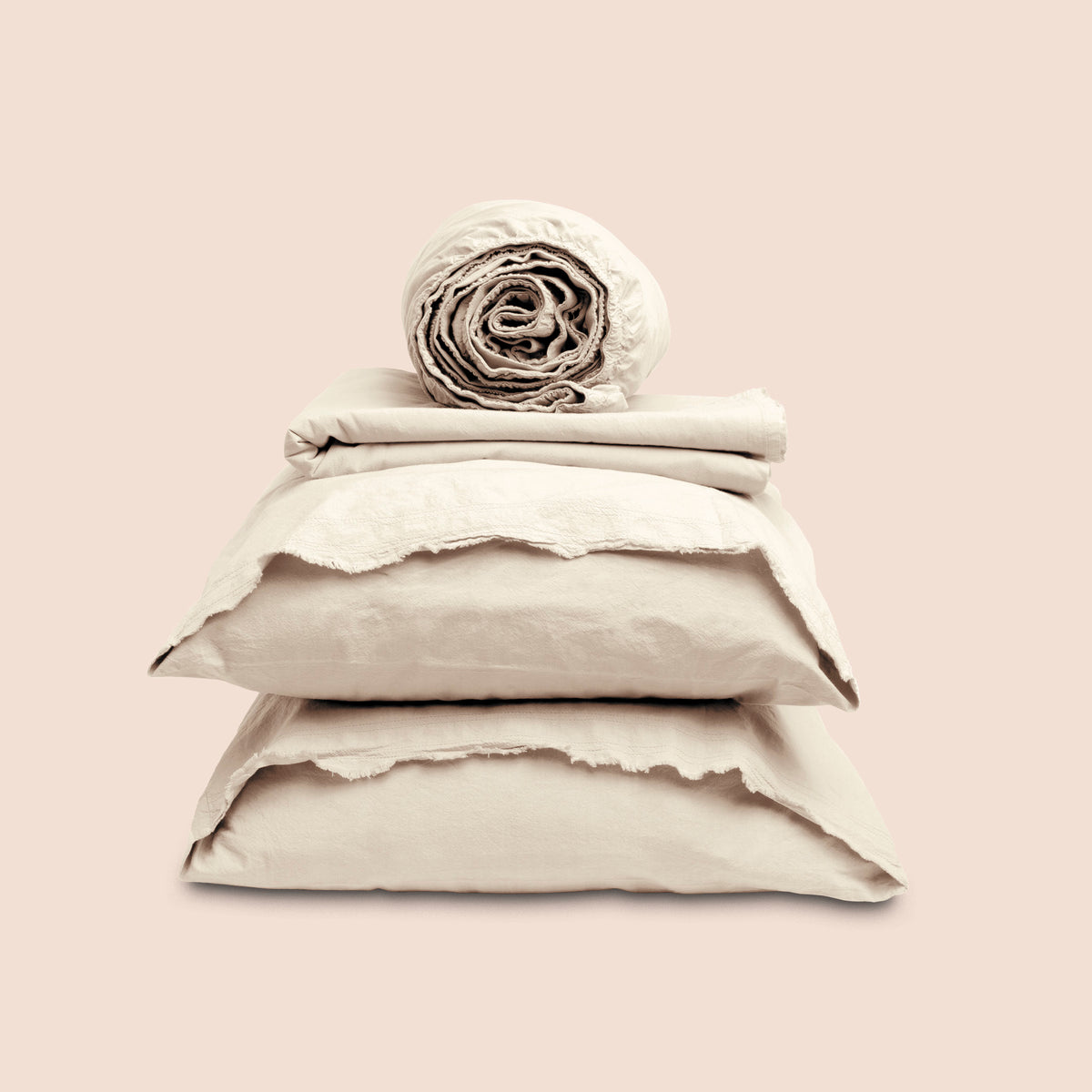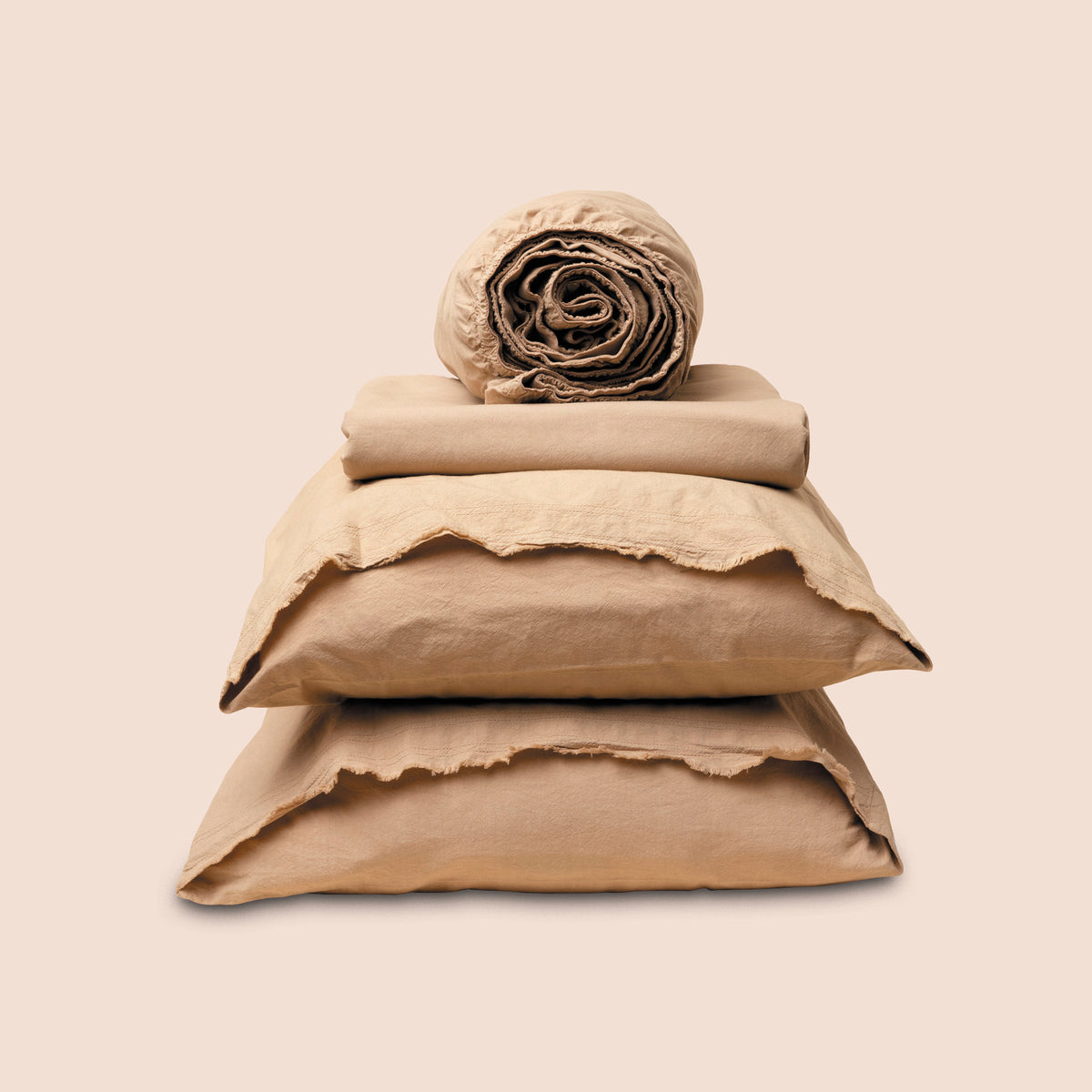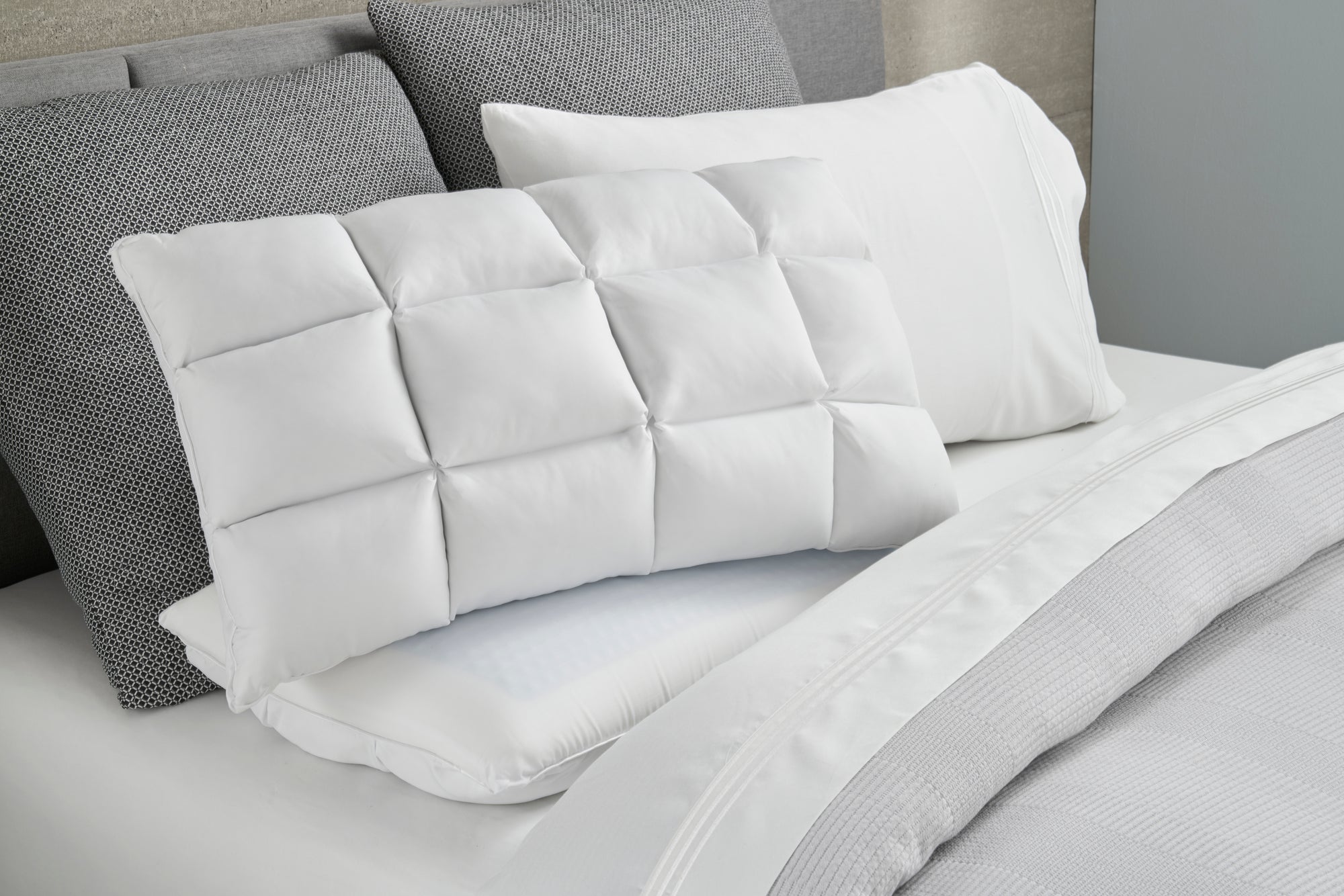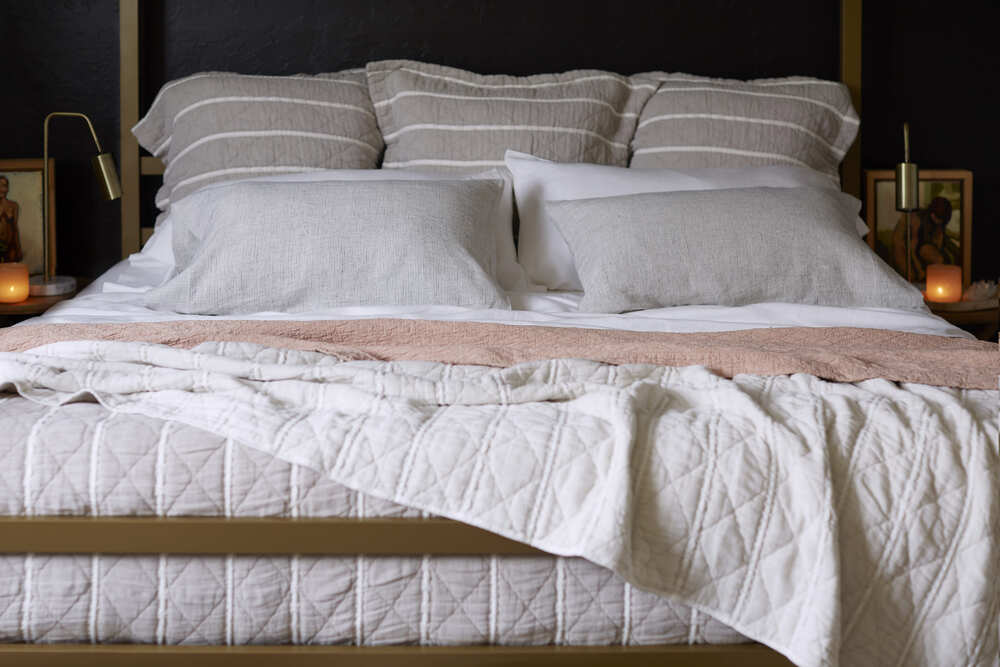They say good acting is invisible. There’s some truth to that. After all, we hardly notice when every word, sentence, gesture, and expression matches. We only notice when the flow of believability is interrupted.
The same might be said of bedding.
Good bedding, after all, allows us to fall asleep easily, stay asleep and wake up unbothered by small inconveniences, from fitted sheets that pop free to comforters that just can’t contain our (and our partners’) tosses and turns. When flat sheets, fitted sheets, blankets, and duvets match, we may never notice how much our layered bedding serves our sleep health.
Because uninterrupted sleep is associated with everything from elevated mood to lower blood pressure, there’s a lot to gain in making sure you notice fewer bedding mishaps while snoozing uninterrupted through the night. It simply adds to your sleep hygiene. And while bedding sizes matter, bedding materials, design features, cooling technology, and sleep hygiene features also contribute to overall rest.
What should matched bedding sizes look like? Here are the most common dimensions:
Standard Bedding Size Chart

Let's take them one by one.
Twin Size Bedding

The mattress, fitted sheet, and bed skirt of a twin bed measure 3’2” x 6’3”. It’s important to buy fitted sheets, flat sheets, and duvet covers in the twin size to avoid pooling bedding.
Twin XL Size Bedding

The mattress, fitted sheet, and bed skirt of a twin XL bed measure 3’2” x 6’8”. That offers sleepers an extra 5” of length, accommodating teens and dorm-dwellers better than the twin, especially if they’re tall. Look for fitted and flat sheets fitted to the twin XL size. Twin sheets won’t stretch to accommodate the extra length. Choose a duvet cover in the twin size to avoid pooling bedding.
Full (Double) Size Bedding

The mattress, fitted sheet, and bed skirt of a full bed measure 4’6” x 6’3”. Choose full-sized fitted sheets to fit your mattress well, and add flat sheets and duvet covers in the full or queen size.
Queen Size Bedding

The mattress, fitted sheet, and bed skirt of a queen bed measure 5’0” x 6’8”. With extra width and length, a queen bed is comfortable for most singles and couples. Flat and fitted sheets in queen size ensure that sheets fit, without bunching. However, you’ll have some choices for duvet covers. Queen and king-size bedding are both popular for top layers.
King Size Bedding

The mattress, fitted sheet, and bed skirt of a king bed represent a significant upgrade in width from the queen, with a king bed measuring 6’4” x 6’8”. That means queen fitted sheets won’t fit at all. Choose king fitted and flat sheets, and choose between king and California king duvet covers, depending on preference.
California King Size Bedding

Trimming 4 inches of width and adding it to your mattress length, the California king measures 6’0” x 7’0”. That includes the fitted sheet and bed skirt, which should fit snugly against your mattress. California king fitted sheets fit well, but there’s some room for your personal preference in flat sheet and duvet covers: look for extra width with king size flat sheets and duvet covers, or fit your look to your mattress with California king.
Key Takeaways for Sizing Bedding
There are some essential takeaways to note in this chart:
- Fitted sheets closely align with actual mattress dimensions. Even if you use a mattress topper, buying a larger size isn’t the way to ensure your bedding will fit well. Instead, think about PureCare-style fitted sheets with a 1” elastic cuff and cinched corners that accommodate mattresses up to 18” deep.
- Flat sheets are even larger than duvet covers and quilts. That’s because they are made to tuck. PureCare flat sheets add an extra 4” inches of width compared to standard sizes for an easier time partner-sharing. There’s no need to size up.
- Many buyers like to size up duvet covers to enjoy benefits like a draped aesthetic and more straightforward bed sharing with their partner. It’s a matter of personal preference. The drawbacks include bedding that touches the floor, collecting allergens and dust. That can require extra washing, decreasing the overall life of the piece.
- We haven’t forgotten the split king and split California king bedding. A split king mattress consists of 2 separate twin XL mattresses (each measures the standard twin XL dimensions of 38” x 80” inches) and is covered by two fitted twin XL sheets and a single king-sized flat sheet. A split California king is a little more custom. Its mattresses are a non-standard size: 36” x 84” inches (3’ x 7’) apiece. The bedding consists of two fitted sheets and a single flat California king-sized sheet, just like the split king.
Pillow Preferences for American Bedding Shoppers
There’s even more wiggle room in pillow choice for your individual desires. For instance, a full bed can fit 2 standard-size pillows, but two queen-sized pillows may give sleepers a bit more width. Both are good options.
For non-standard bed sizes, there’s even less certainty. What works for you is always the best choice. For example, a smaller short queen, often used in RVs, could fit either 2 standard pillows or 2 queen-sized pillows. Consider whether space is at a premium in your bed and room.
King bed owners: it takes 3 standard pillows to cross your bed’s roomy dimensions, so king pillows maintain more aesthetically balanced dimensions.
Non-Standard Bedding Size Chart
Non-standard bed sizes are custom, with a greater range of differences between companies’ bedding sizes. While fitted sheets are spot on, flat sheets and duvet covers might measure differently than these averages.

Trimming 4 inches of width and adding it to your mattress length, the California king measures 6’0” x 7’0”. That includes the fitted sheet and bed skirt, which should fit snugly against your mattress. California king fitted sheets fit well, but there’s some room for your personal preference in flat sheet and duvet covers: look for extra width with king size flat sheets and duvet covers, or fit your look to your mattress with California king.
Key Takeaways for Sizing Bedding
There are some essential takeaways to note in this chart:
- Fitted sheets closely align with actual mattress dimensions. Even if you use a mattress topper, buying a larger size isn’t the way to ensure your bedding will fit well. Instead, think about PureCare-style fitted sheets with a 1” elastic cuff and cinched corners that accommodate mattresses up to 18” deep.
- Flat sheets are even larger than duvet covers and quilts. That’s because they are made to tuck. PureCare flat sheets add an extra 4” inches of width compared to standard sizes for an easier time partner-sharing. There’s no need to size up.
- Many buyers like to size up duvet covers to enjoy benefits like a draped aesthetic and more straightforward bed sharing with their partner. It’s a matter of personal preference. The drawbacks include bedding that touches the floor, collecting allergens and dust. That can require extra washing, decreasing the overall life of the piece.
- We haven’t forgotten the split king and split California king bedding. A split king mattress consists of 2 separate twin XL mattresses (each measures the standard twin XL dimensions of 38” x 80” inches) and is covered by two fitted twin XL sheets and a single king-sized flat sheet. A split California king is a little more custom. Its mattresses are a non-standard size: 36” x 84” inches (3’ x 7’) apiece. The bedding consists of two fitted sheets and a single flat California king-sized sheet, just like the split king.
Pillow Preferences for American Bedding Shoppers
There’s even more wiggle room in pillow choice for your individual desires. For instance, a full bed can fit 2 standard-size pillows, but two queen-sized pillows may give sleepers a bit more width. Both are good options.
For non-standard bed sizes, there’s even less certainty. What works for you is always the best choice. For example, a smaller short queen, often used in RVs, could fit either 2 standard pillows or 2 queen-sized pillows. Consider whether space is at a premium in your bed and room.
King bed owners: it takes 3 standard pillows to cross your bed’s roomy dimensions, so king pillows maintain more aesthetically balanced dimensions.
Non-Standard Bedding Size Chart
Non-standard bed sizes are custom, with a greater range of differences between companies’ bedding sizes. While fitted sheets are spot on, flat sheets and duvet covers might measure differently than these averages.



Global Pillow Diversity
Unlike standardized American pillows, pillows across other continents, like Europe, can differ significantly from country to country. Typically, you’ll find a standard European square pillow (approximately 26” x 26”) used for both decoration and sleep, as well as a European rectangular pillow (about 20” x 28”) for sleep, and a king pillow (approximately 20” x 35”) less commonly available, but valuable as it complements the European king-sized bed’s dimensions.
Australian standard pillows typically measure approximately 19” x 29”, slightly longer and narrower than the standard American pillow, which is usually 20” x 26.” European square pillows and larger king pillows are available are typically used as they are in the US: sleepers prefer square pillows for decoration and king-sized pillows for sleeping on wider bed sizes.
Standard rectangular pillows in many Asian countries mirror those in Australia. In general, your bed size can dictate the best pillows for your bedding, with smaller bed owners opting for standard pillows and those looking to balance a large room or sleep space choosing king-size pillows and pillow shams.
The Right Size for Comfort and Wellness Abroad
The bedding size charts show that other countries have different standards for sleep. For one, many have less residential space for beds. In countries with abundant beautiful, historical buildings, tight curves and small, cozy rooms are the norm. Make the most of it with silky smooth bedding materials to maximize comfort, like modal or TENCEL™ lyocell options.
That can make for an uncomfortable sleep for American travelers who are used to spreading out. When you can’t choose your bed, choosing your bedding may be a temporary solution for better sleep wellness. Ask for larger or two sets of linens for you and your partner, and don’t forget to enhance your sleep wellness routine by winding down with dim lights, calming stretches, a good book, or a mug of caffeine-free, herbal tea in the evening.
Bedding Size is a Step on the Path to Sleep Wellness at Home
Mindful bedding choices enhance sleep so you can be in tip-top shape all day long. It’s not just a luxury; it’s your health and wellbeing. So, what does bedding size have to do with it? First, well-fitting bedding keeps your sheets in one place while you move freely. That keeps you asleep longer, with less interruption and fewer temperature changes. Secondly, your bedding helps you share better, so pets, children, and partners spend all night feeling supported by their bed linens rather than battling with their partner for a corner of the sheet.
Overall, well-fitting bedding works together to keep you comfortable all night long. High-quality bedding’s long-term benefits aren’t all about fabrics: sometimes it’s just about investing in a new bed kit where sizes all match, and fighting with your sheets is a thing of the past in clean, cool, sustainable fabrics that work together to support your sleep hygiene. Start with a classic like blended linen in just the right size.
And don’t forget—Mix, Match, and Save up to 40% off all season long when you refresh your favorite sleep wellness essentials with us at purecare.com.
FAQ
What size bedding do I need for a ¾ bed?
A ¾ bed measures 48” wide by 75” long (120 x 190 cm). It’s 6 inches narrower than a double bed and is common in antique bed frames (in fact, it’s sometimes called an antique mattress size). Does that mean you can use double sheets on a ¾ bed? Yes and no. It’s an excellent temporary solution because enough fabric covers your mattress. However, with 6 extra inches of width, full fitted sheets will droop and pool, sometimes coming loose and interrupting your sleep.
Is a queen and full the same size bedding?
No, a full-size mattress and a queen-size mattress are different. The queen mattress is larger than the full: 6 full inches wider plus 5 inches longer. Bedding (especially fitted sheets) made for a full will not stretch across a queen.
How much bigger should a comforter be than the bed?
A comforter (or duvet cover) should be about 50% wider than your mattress. This is how standard bedding is designed, making a comforter wide enough to drape over the mattress, hiding it from view during the day when the bed is made (the difference is largest for a twin bed. Its comforter is 74% wider than its mattress. A king bed comforter is just 34% wider).
This measurement can vary based on the height and size of individual beds. And, of course, your personal preference can dictate whether you like a crisp, organized fit or a casual, oversized look that falls nearly to the floor.
Sizing up can be a popular choice, but it can also make for extra weight on the bed and a duvet that bunches on one side overnight, so a balance is usually best for a good night’s sleep.
How does a comforter differ from a duvet cover?
Comforters and duvet covers differ little when it comes to bed linen sizes. Further, both can be the outer layers of a comfy bed. The difference is in their style and purpose.
A comforter is typically used for warmth and aesthetics atop other bedding layers. It can add a layer of warmth in the winter, like a quilt. A duvet cover is a thin, protective layer that hides a plain duvet from view, can be washed easily, and can protect the larger, more cumbersome duvet from dirt and dust. A duvet cover won’t keep you warm, but it allows you to change your style more easily.

